Engineering News
Chen's work on nanomaterials in medicine featured in Science Coalition "Research Innovators" spotlight
Research by Pengyu Chen focused on nanomaterials in medicine is featured in the latest "Research Innovators" spotlight by The Science Coalition. Learn more here.
.jpg)
Pengyu Chen
Categories: Engineering, Health Sciences
Auburn ranks among Top 80 for patents in latest National Academy of Inventors recognition
Auburn University has been ranked among the Top 100 U.S. Universities Granted Utility Patents in 2024, a list published recently by the National Academy of Inventors (NAI).
With 20 new patents issued in 2024, Auburn was ranked 80th on the list, seven places higher than the previous year. The list was created to highlight and celebrate American innovation and to recognize those universities that play a large role in advancing the innovation ecosystem within the U.S. and beyond.
Notable among Auburn’s 2024 patents are:
- A patent for improving physical components of mechanical systems using data element mapping and analysis — a methodology currently being tested by industry partners; and
- A patent for an additive nanomanufacturing system and method to facilitate the manufacture of 3D-printed materials in space. The technology will soon be tested in a microgravity environment as part of NASA’s Flight Opportunity program.
“We're thrilled that Auburn continues to be featured on this list. It's a testament to the focus on and strength of innovation on our campus,” said Patrick Reed, executive director of Auburn’s Intellectual Property Exchange (IPX). “An issued patent represents potential commercialization opportunity; collaborating with commercialization partners unlocks that potential, turning it into real-world impact. We look forward to putting these patents to work for the benefit of the public."
In addition to the list, Auburn has been recognized by NAI as several faculty members were named NAI fellows and one named an NAI senior member. The prestigious NAI fellows program honors academic inventors “who have demonstrated a spirit of innovation in creating or facilitating outstanding inventions that have made a tangible impact on quality of life, economic development and the welfare of society.”
Current and emeritus faculty members who have previously been recognized as fellows include Mehmet Arik, Yonhua Tzeng, J. David Irwin, Joseph W. Kloepper, John Weete, the late S.D. “Dave” Worley, Bruce Tatarchuk and the late Vitaly Vodyanoy. Jin Wang was the first Auburn faculty member to be named an NAI senior member.
Founded in 2010 to recognize and encourage inventors with patents issued from the United States Patent and Trademark Office, the NAI is a member organization of U.S. and international universities and governmental and non-profit research institutes, with over 4,600 individual inventor members and fellows encompassing more than 260 institutions worldwide.

Nema Shamsaei and Masoud Mahjouri-Samani are patent-holders whose innovations contributed to Auburn University's strong showing on a recent National Academy of Inventors list ranking universities granted utility patents in 2024,
Categories: Engineering, Manufacturing, Advanced Systems
New Auburn Engineering research center combines expertise in artificial intelligence, cybersecurity
Auburn Engineering’s newest research center is strategically positioned at the intersection of artificial intelligence (AI) and cybersecurity.
The Auburn University Center for Artificial Intelligence and Cybersecurity Engineering (AU-CAICE), housed within the Department of Computer Science and Software Engineering (CSSE), is dedicated to uncovering pioneering advancements in AI-driven cybersecurity solutions and tackling the most pressing challenges in the digital age.
“In today's rapidly evolving digital landscape, the need for groundbreaking research in artificial intelligence and cybersecurity has never been more critical,” said Allan David, associate dean for research. “The Samuel Ginn College of Engineering is thrilled to continue its role as a leader in emerging technologies, driving innovation and fostering collaboration to address the complex challenges of our time. This new research center embodies our commitment to shaping a safer, more secure future through cutting-edge advancement.”
Gerry Dozier, the center’s first director and the Charles D. McCrary Eminent Chair Professor in CSSE, said researchers will not just focus on AI and cybersecurity, but also three hybrids of AI and Cybersecurity: SecureAI, CyberAI and SecureCyberAI.
“This is based off the two strengths of our department – cybersecurity and artificial intelligence,” said Dozier, who also serves as the Auburn University AI@AU technical lead. “For years, we’ve been working in AI for security (CyberAI), as well as in security for AI (SecureAI).
“SecureAI applies security measures to protect an AI system from adversarial attacks. CyberAI applies AI to the area of cybersecurity, and SecureCyberAI will be best served by security measures that are real-time, self-healing, anti-fragile arms race systems for securing an AI system.”
The AU-CAICE will build upon the foundation laid by the former Auburn Cyber Research Center (ACRC) and advance the legacy of ACRC's pioneering work.
“The center continues to honor ACRC's commitment to cybersecurity excellence while expanding its reach and impact, ensuring that Auburn remains at the forefront of cybersecurity research and education,” David said. “The dedication and achievements of ACRC have paved the way for AU-CAICE to thrive and lead in this critical field.”
“Over the past four years, ACRC has increasingly been focusing on the intersection of AI and cybersecurity, and renaming it as AU-CAICE with all of AI and cybersecurity as its scope, is the logical next step,” said CSSE associate professor Daniel Tauritz, who served in the role of ACRC interim director from June 2020 through December 2024, and will continue in his duties as Auburn University’s Director for National Laboratory Relationships. “Given the critical importance of AI and cybersecurity to national security, the new center is perfectly positioned to meet the nation’s needs in these areas, and I look forward to working with director Dozier to address the Department of Energy’s national security mission.”
Dozier said 27 faculty members, representing engineering, business and other disciplines, are already part of the center.
“We want our new center to be nationally recognized for being a team that successfully develops and cultivates scholarly, long-term, extramurally funded research and educational relationships,” he said. “We also want to serve as a hub of an ecosystem that actively collaborates with academia, business and industry, national laboratories and the government. First and foremost, we want people to see our new center as a tool that can be used to improve their lives and provide them with a competitive advantage.”
Located inside the Shelby Center for Engineering Technology and based in the Gen. Ron Burgess Cyber Laboratory, the AU-CAICE is positioned to work closely with student organizations — including the Auburn University Ethical Hacking Club and Society for Responsible Artificial Intelligence — and peer institutes such as the McCrary Institute for Cyber and Critical Infrastructure Security and the Auburn University Applied Research Institute.
“I am immensely proud of our ongoing efforts to advance research in artificial intelligence and cybersecurity,” said CSSE Chair and AI@AU administrative lead Hari Narayanan, whose department unveiled AI degree and certificate programs for graduates and undergraduates in the past year, mirroring existing degree and certificate programs in cybersecurity, and holds triple designations by the National Security Agency (NSA) as a Center of Academic Excellence in Cybersecurity Defense, Cyber Research, and Cyber Operations.
“The continued emphasis on research and education on these two topics by the department reflects a commitment to excellence and innovation in areas critical to the nation’s future. Our faculty and students play a vital role in driving technological progress in these emerging technologies, fostering a more productive and secure world for all.”
Media Contact: Joe McAdory, jem0040@auburn.edu, 334.844.3447

Categories: Engineering, Cyber, Security
Fueling a winner: Biosystems engineering researcher developing solutions with bioenergy recognized by SEC
Sushil Adhikari had no intention of having a career in academia, let alone researching solutions to some of life’s challenges.
“I just wanted to be an engineer and not study anymore,” he professed.
But plans change.
Nearly 25 years after earning a bachelor’s degree in mechanical engineering from Tribhuvan University in his native Nepal, Adhikari is an Alumni Professor and researcher in the Department of Biosystems Engineering at Auburn University.
He’s also director of the Center for Bioenergy and Bioproducts and, since Feb. 17, the interim associate dean for research for Auburn’s College of Agriculture and interim associate director of the Alabama Agricultural Experiment Station (AAES).
The Southeastern Conference (SEC), on Feb. 24, named Adhikari as Auburn’s honoree for the SEC Faculty Achievement Award.
The SEC annually recognizes one faculty member from each of its member institutions who has demonstrated excellence in teaching, research and scholarship. Recipients are chosen based on their contributions to their field, commitment to students and overall impact on their university.
The conference will proclaim one of the 14 awardees as the SEC Professor of the Year, the highest faculty honor given by the conference, in March.
In good company
Adhikari is understandably proud of the recognition, particularly because this puts him in a class of distinguished colleagues from across campus.
“I never thought that I was going to win this one because of the people who have won this award before,” he admitted.
Auburn's first winner in 2012 was President Christopher B. Roberts, then a professor and chair of the Department of Chemical Engineering, about to be dean of the Samuel Ginn College of Engineering.
Biosystems engineering is housed in agriculture but is a part of engineering. The faculty often intersects. When Adhikari came to Auburn in 2008, his department head was Professor Steve Taylor, who started agriculture’s Center for Bioenergy and Bioproducts.
Taylor would move on to serve as engineering’s associate dean for research and eventually step in as interim dean when Roberts became the university president. Taylor then became the senior vice president for research and economic development, overseeing research endeavors across campus.
Adhikari talks about these colleagues — working with them and filling Taylor’s shoes as center director — as if they are formidable and larger than life. But they share a common thread: impact.
Every role has been an opportunity for each of them to broaden their impact on the lives of students and faculty at Auburn and, with innovative research, the world.
Adhikari stepped into this latest interim gig — Professor Art Appel stepped away from it to be interim dean and interim director of AAES — is simply another chance for Adhikari to make an impact.
Making a difference
It’s something he has been doing since first coming to Auburn.
“Being on faculty gives you the flexibility to focus on your interests. I get to do research and work with students, who grow so much by the time they graduate,” Adhikari said. “For me, it’s about seeing the impact I can have on them.”
The award and his new responsibilities “give me motivation to do more,” he added.
When he isn’t teaching classes, Adhikari is running the Center for Bioenergy and Bioproducts where he mentors student researchers and conducts his own work. He will teach one less class next semester to accommodate his interim responsibilities.
Adhikari doesn’t look at his new role as a burden. It’s a chance “to make a bigger impact.”
“I have worked with a number of faculty, a lot of younger faculty members and students in my role as center director, and I see that I have made some impact, but now the challenge to myself is, can I make a bigger impact at the college level?” he asked.
“It can be difficult to make big changes as an interim, but sometimes it is easier to make changes when you just plant the seed.”
Leave it to a faculty member in agriculture to make such a reference, but Adhikari did it because it’s easy to understand how an idea can grow and flourish, like a seed, with the right tools and support.
He considers students to be like young saplings, who grow into mighty trees with nourishment from Adhikari. This type of influence — as a teacher, researcher, director and interim any job — is what has kept Adhikari on the Plains all this time.
“Maybe I’m just in the right place at the right time, or maybe it’s just my attitude, but I feel fortunate to be here,” he said. “I have the support of colleagues in the department and around campus. I don't see a need to go anywhere else.”
Adhikari has no desire to frame his degrees and hang them on his office walls. Instead, the stark white walls are covered with plaques and certificates he earned over the years. Many denote his collaborative work.
In 2012, for instance, Adhikari, along with Taylor, Roberts, Fasina and others received the President’s Outstanding Collaborative Units Award during the annual Faculty Awards.
The nature of biosystems engineering, what Adhikari calls a problem-focused discipline, lends itself to multidisciplinary cooperation. But what is biosystems engineering?
Addressing challenges
It can be confusing for two colleges to share biosystems engineering, but Adhikari said it makes sense as “we are engineers, trying to solve the problems related to agriculture.”
A sign hangs from the front of the Corley Building, proclaiming the department is developing solutions to life’s essential challenges: “Food, Water, Energy, Environment and Health.”
If that doesn’t clarify the type of work being done inside, Adhikari says, “we try to say that we solve these big problems related to water, food and fuel.”
While his office neighbor, Associate Professor David Blersch, is looking at algae growth in high-nutrient wastewater, Adhikari is focused on bioenergy, deriving energy like electricity and biofuel from organic materials (biomass), such as plants and wood.
Adhikari, in collaboration with agriculture faculty, is currently using biochar for agriculture uses for improving soil and water health, reducing greenhouse gas emissions and even killing cockroaches. Biochar — the result of heating biomass like wood, crop residue and manure — is black (like charcoal), extremely light (like Styrofoam) and resembles finely shredded mulch.
Even in their interim roles, Adhikari and Appel can discuss their common work, as Appel is evaluating the efficacy of biochar for killing cockroaches.
With such work happening in the center, researchers like Adhikari and his graduate students seek campus experts in water, soil and horticulture, to name a few, for assistance.
“You need a multidisciplinary approach to solving these problems because these problems are complex,” said Adhikari.
When it comes to biochar, Adhikari believes researchers, like himself, are finding answers to multiple issues. For instance, biochar holds carbon in the soil for hundreds to thousands of years, preventing its release into the atmosphere.
“At the same time, you can improve soil properties with it,” he said. “Capture some of the nutrients from runoff, and you’re looking at other benefits to the ecosystem.”
It boils down to engineering the biochar properties differently to serve unique needs.
Biochar designed by Adhikari's team to help farmers minimize the effects of drought will be engineered differently than the team creating biochar to capture excess phosphorus in the soil and slowly release it to benefit plant growth.
Talk about impact.
Past Auburn SEC Faculty Achievement Award winners
2024, Skip Bartol, College of Veterinary Medicine
2023, Shiwen Mao, Samuel Ginn College of Engineering
2022, Karen McNeal, College of Sciences and Mathematics
2021, Mona El-Sheikh, College of Human Sciences
2020, Doug Martin, College of Veterinary Medicine
2019, Rex Dunham, College of Agriculture
2018, David Ketchen, Raymond J. Harbert College of Business
2017, James Barth, Raymond J. Harbert College of Business
2016, Hanqin Tian, College of Forestry, Wildlife and Environment
2015, Bruce Tatarchuk, Samuel Ginn College of Engineering
2014, Geoffrey Hill, College of Sciences and Mathematics
2013, Pradeep Lall, Samuel Ginn College of Engineering
2012, Christopher B. Roberts, Samuel Ginn College of Engineering

Sushil Adhikari holds paper-like biochar. Even in this form, biochar can be used to enhance soil and plant health.
Categories: Engineering, Energy & the Environment, Agriculture
Pettus named executive director of Auburn University Applied Research Institute in Huntsville
Auburn University’s Office of the Senior Vice President for Research and Economic Development has hired Jonathan Pettus as executive director of the Auburn University Applied Research Institute (AUARI) in Huntsville, effective February 1.
Pettus previously worked for 27 years at NASA, where he served in a variety of executive leadership roles including as NASA’s chief information officer and as the associate director of Marshall Space Flight Center. Before joining the Auburn family, he retired from Dynetics/Leidos, where he led a business unit that included programs in space, hypersonics and cybersecurity solutions.
Beginning his career as a high school mathematics teacher and basketball coach, Pettus grew up “intrigued and enthusiastic about space” and technology, he said. Pettus noted he is “excited about the opportunity to help with the overall strategic goal of continuing to grow Auburn’s impact in applied research” and sees a “great opportunity” at AUARI to grow research efforts aimed at solving real-world problems.
“The Applied Research Institute will be in capable hands with Jonathan Pettus as its executive director,” said Steve Taylor, senior vice president for research and economic development. “He brings to the position a wealth of knowledge and experience in the aerospace, defense and advanced technology sectors. I am confident he will help us expand critical applied research efforts that will address important challenges from our government and industry partners.”
The Auburn University Applied Research Institute operates within the Auburn University Research and Innovation Campus in Huntsville's Cummings Research Park near the Redstone Arsenal, a 38,000-acre federal research, development, test and engineering center. The Institute brings together Auburn faculty, research professionals, and students to conduct cutting-edge applied research and development across a range of technology readiness levels to help customers overcome aerospace, defense, national security and biotechnology challenges.
Media Contact: Jeremy D Henderson, jdh0123@auburn.edu, 334-844-3591

Jonathan Pettus has been named executive director of the Auburn University Applied Research Institute. [Credit: UAH]
Categories: Engineering, Transportation, Manufacturing, OSVPRED
Assistant professor in chemical engineering wins NSF CAREER Award
Driven by evolving technological needs, consumer preferences, environmental concerns and regulatory requirements, the $100-plus billion coatings industry has a growing need to develop new products.
Michael Howard, an assistant professor in chemical engineering, offers a promising solution: a computer-modeling approach to engineer the drying-induced assembly of colloidal-particle coatings, such as paint. This innovative method could streamline production, saving time and reducing resource consumption.
“The outcome of this research could empower scientists and engineers to understand and design the materials and processes needed to reformulate coatings, shortening the research and development cycle in both academic and industrial settings,” Howard explained.
Howard earned a five-year, $500,000 National Science Foundation (NSF) CAREER Award for his project, “Multiscale modeling for self-assembly of colloidal-particle coatings with gradient compositions.”
The NSF’s Faculty Early Career Development (CAREER) Program is one of the foundation's most prestigious awards, supporting early career faculty who have the potential to serve as academic role models and lead advances in their fields.
“I'm excited and humbled to receive this award because it uniquely recognizes both research and teaching,” Howard said. “The reason why I wanted to become a professor is that I enjoy both, so winning this award to support and recognize my work in those areas is really meaningful to me.”
Selen Cremaschi, chair of the Department of Chemical Engineering, praised Howard for his innovative and impactful research.
“Dr. Howard is committed to his students’ education and success and driven to contribute to solving complex challenges. Our department is very proud of Dr. Howard, and we are thrilled that his integrated research and teaching career plans are recognized by this prestigious award,” Cremaschi said. “Winning the prestigious NSF CAREER Award further
highlights his outstanding achievements and underscores his promise as a leading researcher.”
Howard’s modeling approach will predict the composition of colloidal-particle coatings made by solvent drying with unprecedented accuracy using a combination of 1) a physics-based continuum model with realistic particle interactions and hydrodynamics, 2) a machine-learned model, trained from particle-based simulations, to refine the physics-based model and 3) a surrogate model to relate particle properties and processing conditions to composition.
“My long-term research goal is to computationally design nanomaterials and processing strategies for making functional soft materials using my unique background in statistical thermodynamics, transport and high-performance computing,” Howard said. “Achieving the objective of this project will position me not only to design coatings but also to apply similar techniques to other nanomaterials and processes.”
The coatings industry might not be the only beneficiary. Howard’s students are, too.
Howard will integrate research with education through virtual-reality (VR) activities on nanoscale engineering. Specifically, his research will be used to create immersive visualizations that enrich learning about nanoscale concepts that are otherwise challenging to demonstrate.
These activities will be tailored for a wide range of learners, including K–12 students, undergraduates, and the public. To support this, Howard will develop a new VR visualization platform, focusing on sustainability, ease of creating activities and accessibility for learners with different levels of technology.
Howard’s proposed VR platform will include:
- A VR visualization tool that delivers a high-quality educational experience on both state-of-the-art headsets and commodity cell phones. This tool will ensure VR activities can be used with large groups of students and those with less access to computing resources.
- A framework for creating activities that doesn’t require advanced programming knowledge and a curated activity repository. This framework and repository will facilitate content creation by experts and adoption by non-experts.
“(Assistant professor) Symone Alexander and I piloted the use of VR activities with Auburn chemical engineering students through an AUX: Immersive Learning Experiences grant from the Biggio Center. Our students responded really positively, so I’m excited to build on that success and bring this emerging technology to a wider community.”
Additionally, Howard's project aims to broaden participation in STEM activities through undergraduate research opportunities, train a more competitive U.S. workforce in computational science and develop and disseminate open-source scientific software.
Media Contact: Joe McAdory, jem0040@auburn.edu, 334.844.3447

Michael Howard
Categories: Engineering
Auburn rocket plume research to aid future spacecraft landings
Landing a space vehicle on an interplanetary body has always been a tremendous challenge. In most cases, powerful retrorockets must fire at just the right moment — with just the right amount of thrust — to slow the vehicle sufficiently to prevent damage and successfully deliver the payload to the target’s surface. That’s why touchdown is always a hold-your-breath moment for the scientists and engineers involved.
Even so, landing successfully is only one part of the battle. The other part is ensuring the dust and debris kicked up by the retrorocket’s thrusters do not damage the vehicle itself or any other important hardware nearby. But a team of Auburn researchers are working to reduce some of the stress during landings by studying these thruster-induced plume-surface interactions (PSI) to better predict their outcomes.
David Scarborough, an associate professor in the Department of Aerospace Engineering at Auburn University, is the principal investigator for two NASA grants — one for $538,789 and a second for $650,000 — to study PSI, along with a team that also includes co-investigators and fellow faculty, associate professor Vrishank Raghav, assistant professor Nek Sharan and the W. Allen and Martha Reed Professor and department chair Brian Thurow. In addition, the research team also includes postdoctoral fellow Vikas Bhargav and graduate students, Murphy Mitchell, Srijan Satyal and Brandon Fulone. In the past, graduate students, Trevor Crane, Daniel Stubbs and Lokesh Silwal were also actively involved in the experimentation work.
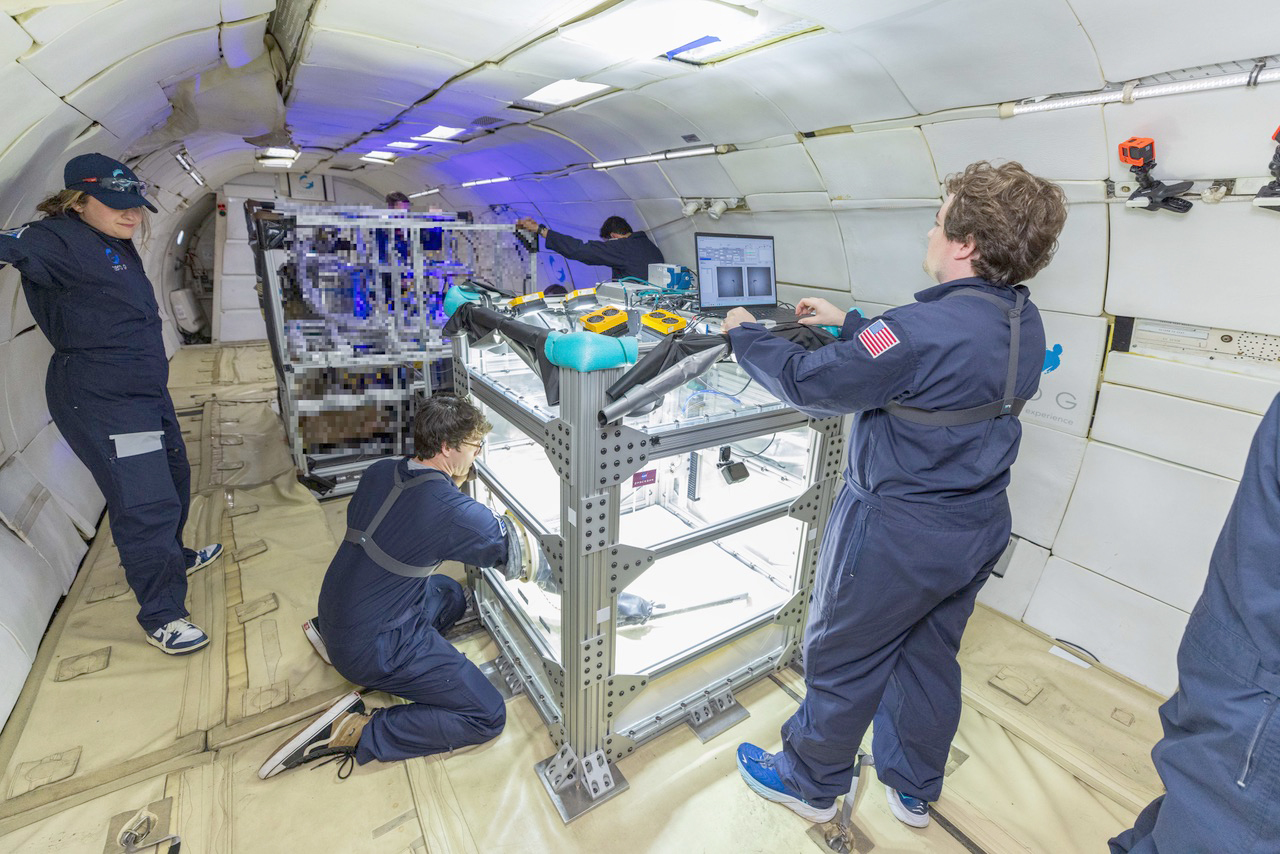
Graduate students Trevor Crane (kneeling) and Daniel Stubbs (standing over the equipment) conduct experiments aboard the "Vomit Comet.
NASA’s interest in PSI dates back as far as the lunar missions of the Apollo Program in the 1960s. Research into the issue gained urgency after the Apollo 12 mission in November 1969. On that mission, the lunar module set down adjacent to the lander from a previous 1967 unmanned mission called Lunar Surveyor Three, which had sent back data critical to planning the Apollo landings. The Apollo 12 astronauts brought back pieces of the Surveyor craft, which showed pitting and scorch marks caused by the retrorockets fired during the lunar module’s descent.
With NASA now planning a return of manned missions to the moon in the near future, better understanding plume-surface interactions will be critical to ensuring such damage can be predicted and perhaps mitigated.
“In the next decade,” Scarborough said, “NASA is prioritizing returning humans safely to the moon, deploying scientific instruments on a variety of extraterrestrial bodies and ultimately enabling human exploration of Mars. One of the most significant obstacles to achieving these objectives is our limited understanding of plume-surface interactions leading to crater evolution and dust formation during descent and touchdown.”
In order to improve our understanding of PSI, experimental facilitates have been constructed in the Auburn University Combustion Physics Laboratory (AUCPL) to emulate conditions of extraterrestrial environments that future landers might encounter.
For instance, the vacuum-chamber experimental facility is used to simulate lunar atmospheric conditions, while the drop-tower facility can generate reduced gravity conditions. These facilities were used to record the crater evolution and track ejecta particles using high-speed cameras, to investigate the effects of the thruster operating conditions and the ambient environment.
In spring 2024, Crane and Stubbs took the research even further, designing and conducting experiments on board NASA’s modified Boeing 727 aircraft — nicknamed “the Vomit Comet” — that flies parabola patterns designed to briefly produce lunar, Martian and zero-gravity conditions.
“Depending on the angle at which the plane falls, different gravity levels are simulated inside the cabin,” Crane explained, noting that the aircraft really lives up to its nickname. “In the airplane, we are able to run our PSI experiments in simulated Martian, lunar and micro-gravity conditions. Research using the parabolic flights is ongoing, with future flights planned to gather more data.”
In the recent past, NASA also conducted an experimental campaign called physics-focused ground tests to fundamentally characterize plume-surface interactions. These tests generated substantial datasets, which require a long-term, dedicated effort to deduce important physics involved in the interactions. The team at Auburn also aims to leverage the experimental and numerical capabilities in-house to facilitate the development and validation of predictive tools using the datasets generated by NASA.
Eventually, the team hopes to provide NASA with data that will allow the space agency to confidently predict and make allowances for plume-surface interactions on the moon, Mars and beyond.
“The overall goal of our PSI research is to be able to develop physics-based models for rocket landers that can be used for future missions,” Scarborough said. “These models will be able to relate to parameters like rocket size, engine thrust and dust or particle size of the planetary surface to predict the cratering and debris effects caused by a lander. Future simulations will be able to use these models to better inform lunar and Martian missions and reduce the risks associated with their landing vehicles.”

David Scarborough, an associate professor in the Department of Aerospace Engineering at Auburn University (middle), stands with graduate students Daniel Stubbs (left) and Trevor Crane (right).
Categories: Engineering, Transportation
Auburn materials engineering students have MXene research down to a fine art
At this rate, Auburn may need to open its own "NanoArt" museum. Because the Department of Materials Engineering just keeps churning out masterpieces.
The latest award-winning contribution comes, once again, courtesy of microscope maestro Yeonjin Baek, one of the department's most recent doctoral graduates, and rising star of the so-called NanoArt competition circuit created by engineers and scientists celebrating the surprisingly artistic aspects of their research. Her medium? Once again, MXenes — a still relatively new class of 2D conductive crystalline nanomaterials promising battery storage breakthroughs, like giving your iPhone a full-day's charge in seconds or supplying juice to supercapacitors for millions of charging cycles.
Otherworldly images mined from MXenes have quickly become go-to graphics for NanoArt competitions since they were discovered at Drexel University in 2011; it turns out that, combined with a little Photoshop creativity, the results of throwing slices of, say, vanadium carbide under scanning electron microscopes (SEMs) can be downright stunning.
A year ago, Baek took home the grand prize in Japanese research technology company JEOL's annual scanning SEM image contest for a scan of a synthesized Vanadium oxide nano structure. Imagine a bouquet of flowers painted by impressionist Édouard Manet, but with the nearly unfathomable resolution of the materials engineering department's $500,000 JEOL JSM-7000F SEM).
Months later, her "MXene T-Rex," a scan of a layered niobium carbide resembling a Tyrannosaurus Rex 10 times smaller than the width of a human hair, won the October round of the same contest. Most recently — and, in terms of reflecting Auburn's rising materials engineering preeminence, perhaps most impressively — it placed second out of 300 submissions from 29 countries in the 9th annual NanoArtography competition sponsored by Purdue University's School of Materials Engineering and Drexel University's Nanomaterials Institute.
"I believe that materials engineering is essential for driving technological progress," said Baek, who recently accepted a postdoctoral research position at the University of Arizona. "What fascinates me most is how we can manipulate materials at the micro and nanoscale to innovate and improve various devices like electric vehicles and batteries.
"When we synthesize materials, they often appear as nothing more than dark gray or black powders. However, when observed under a microscope, we can uncover beautiful layered structures or unique nanoscale patterns. Materials like MXenes exhibit delicate accordion-like layered structures that make them particularly ideal for NanoArt. These structures showcase the texture and beauty of the nanoscale, providing a perfect canvas for creative interpretations."
Thanks the Department of Materials Engineering, Auburn's reputation for creative interpreations of the nanoscale has been at macro proportions for years.
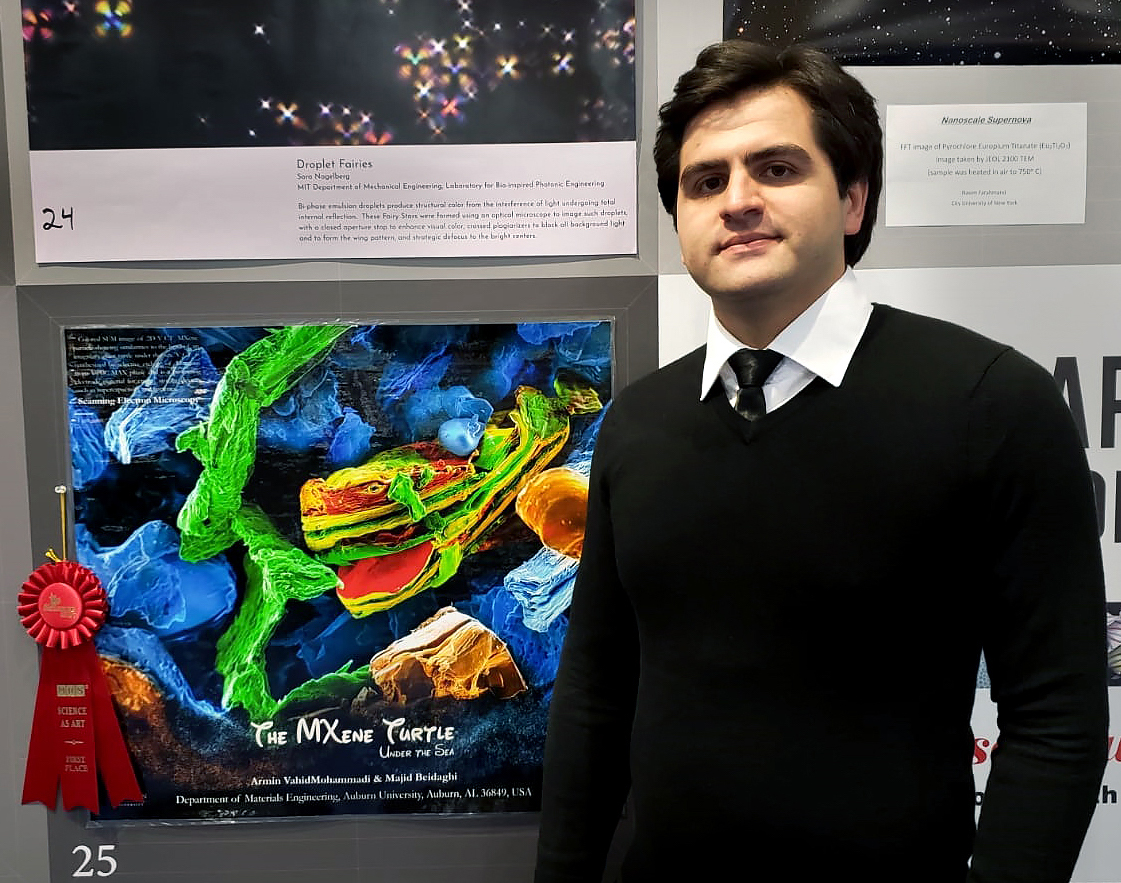
Armin VahidMohammadi poses with "The MXene Turtle Under the Sea," which won First Place in the 2018 MRS Science as Art competition.
Baek was actually Auburn's second grand prize winner in the JEOL contest. In 2017, materials engineering doctoral student Armin VahidMohammadi, who is now in product development at Tesla, snagged the blue ribbon with "Nano Nemo on the Water," a scan of a MXene designated Ti2C modified to resemble a clown fish. It was his second conquest in an epic string of victories that gained attention even outside the scientific community for primarily playing on pop culture.

A year before he found Nemo in titanium carbide, the avid Harry Potter fan's wildly vivid "Nano Lord Voldemort" placed first in the Materials Research Society’s Science as Art competition, an accomplishment repeated in 2018 after spotting "The MXene Turtle Under the Sea" in clouds of vanadium carbide. For his 2019 entry, he again used the force of the material engineering department's JSM-7000F to produce "MXene Yoda," a scan of oxidized 2-D V2CTx particles.
Win again, he did.

"It's been great for our students to receive this sort of attention for their creativity," said materials engineering program chair Bart Prorok, Baek's faculty advisor. "But I'd like to think it also reflects rather favorably on the research our department excels in. Right now a lot of that research is, obviously, in MXenes.
And, right now, Auburn students obviously have that research down to a fine art.
"While Armin was here, his research on MXenes was featured in Advanced Materials, which is a pretty prestigious journal," Prorok said. "But even though you could look at the nano artwork as a kind of novelty, thousands of materials scientists pay attention to a lot of these competitions. So, the artwork he and now Yeonjin have done has definitely helped us gain attention on our research, and it's attention I think Auburn deserves."
Media Contact: Jeremy D Henderson, jdh0123@auburn.edu, 334-844-3591

Yeonjin Baek poses in front of a display of "Flower Power," which won the grand prize in JEOL'S 2023 SEM Image Contest.

Yeonjin Baek's, "MXene T-Rex," a scan of a layered niobium carbide resembling a Tyrannosaurus Rex 10 times smaller than the width of a human hair
Categories: Engineering, Creative Scholarship
Auburn University Gulf Coast Engineering Research Station in Orange Beach receives final Board of Trustees approval
Auburn University’s Board of Trustees gave its final approval Friday for the construction of a Gulf Coast Engineering Research Station in Orange Beach.
The two-story, 21,000-square-foot facility — to be located at 4775 Walker Avenue — will provide direct access to the Gulf of Mexico and consist of research laboratories, offices, large meeting spaces and outdoor gathering spaces on both stories of the south elevation overlooking Terry Cove. The station will provide a dedicated location for researching coastal environments and communities of the Gulf Coast while also providing opportunities for collaboration with other Marine Environmental Sciences Consortium institutions.
“We are thankful to the board for its continued support of this project that will benefit Auburn University, the state’s coastal communities and those who love and visit one of the most beautiful areas of this state,” said Mario Eden, dean of Auburn’s Samuel Ginn College of Engineering. “The opportunity for collaboration with our friends and partners in the city of Orange Beach, the University of South Alabama and other regional institutions and industries is exciting, and this gives us a home base to address some of the most pressing coastal issues related to infrastructure resiliency and environmental protection, restoration, sustainability and conservation.”
The estimated total project is $14 million, and it is being financed by grant funds from the RESTORE Council in cooperation with the State of Alabama Department of Conservation and Natural Resources. The city of Orange Beach provided the land for the project.
The Board of Trustees initially approved the facility at its September 2022 meeting. The firm ArchitectureWorks was approved in November of that year to serve as the architect on the project.
Orange Beach Mayor Tony Kennon said the city is proud to work with Auburn and other universities to create long-term solutions for the state’s Gulf Coast, and beyond.
“As I’ve said from the onset of this collaborative project, the city of Orange Beach is excited about the opportunity to partner with Auburn University and work with universities all over the country for the betterment and preservation of our vital coastal resources,” Kennon said.
The gulf station will focus on three broad coastal research areas: water quality and quantity protection and restoration; protection, restoration and conservation of habitat and living resources; and enhancing coastal community sustainability and resilience. In addition, it will also provide residents and visitors with a better understanding and appreciation of the natural, historical, cultural and environmental resources of the region through community outreach and continuing education opportunities.
Effects of natural and man-made disasters on the primary industries in the region have resulted in economic adjustments and dislocations primarily through reductions in tourism and the simultaneous effects on tourism-related industries; damage to public and private infrastructure; negative impacts to agriculture and fishing-related industries; and damage to the natural environment and natural resources.
Through the creation of this facility, Auburn University and its partners will engage in fundamental and applied research of critical importance to the coastal environment and communities of Alabama and the larger northern Gulf Coast region. The station will be dedicated to addressing all the goals and objectives set forth in the 2016 Gulf Coast Ecosystem Restoration Council Comprehensive Plan.
Media Contact: Austin Phillips, austinp@auburn.edu, 334-844-2444
Auburn University’s Board of Trustees gave its final approval Friday for the construction of a Gulf Coast Engineering Research Station in Orange Beach.
The two-story, 21,000-square-foot facility — to be located at 4775 Walker Avenue — will provide direct access to the Gulf of Mexico and consist of research laboratories, offices, large meeting spaces and outdoor gathering spaces on both stories of the south elevation overlooking Terry Cove. The station will provide a dedicated location for researching coastal environments and communities of the Gulf Coast while also providing opportunities for collaboration with other Marine Environmental Sciences Consortium institutions.
“We are thankful to the board for its continued support of this project that will benefit Auburn University, the state’s coastal communities and those who love and visit one of the most beautiful areas of this state,” said Mario Eden, dean of Auburn’s Samuel Ginn College of Engineering. “The opportunity for collaboration with our friends and partners in the city of Orange Beach, the University of South Alabama and other regional institutions and industries is exciting, and this gives us a home base to address some of the most pressing coastal issues related to infrastructure resiliency and environmental protection, restoration, sustainability and conservation.”
The estimated total project is $14 million, and it is being financed by grant funds from the RESTORE Council in cooperation with the State of Alabama Department of Conservation and Natural Resources. The city of Orange Beach provided the land for the project.
The Board of Trustees initially approved the facility at its September 2022 meeting. The firm ArchitectureWorks was approved in November of that year to serve as the architect on the project.
Orange Beach Mayor Tony Kennon said the city is proud to work with Auburn and other universities to create long-term solutions for the state’s Gulf Coast, and beyond.
“As I’ve said from the onset of this collaborative project, the city of Orange Beach is excited about the opportunity to partner with Auburn University and work with universities all over the country for the betterment and preservation of our vital coastal resources,” Kennon said.
The gulf station will focus on three broad coastal research areas: water quality and quantity protection and restoration; protection, restoration and conservation of habitat and living resources; and enhancing coastal community sustainability and resilience. In addition, it will also provide residents and visitors with a better understanding and appreciation of the natural, historical, cultural and environmental resources of the region through community outreach and continuing education opportunities.
Effects of natural and man-made disasters on the primary industries in the region have resulted in economic adjustments and dislocations primarily through reductions in tourism and the simultaneous effects on tourism-related industries; damage to public and private infrastructure; negative impacts to agriculture and fishing-related industries; and damage to the natural environment and natural resources.
Through the creation of this facility, Auburn University and its partners will engage in fundamental and applied research of critical importance to the coastal environment and communities of Alabama and the larger northern Gulf Coast region. The station will be dedicated to addressing all the goals and objectives set forth in the 2016 Gulf Coast Ecosystem Restoration Council Comprehensive Plan.
Media Contact: Austin Phillips, austinp@auburn.edu, 334-844-2444

The two-story, 21,000-square-foot facility — to be located at 4775 Walker Avenue — will provide direct access to the Gulf of Mexico and consist of research laboratories, offices, large meeting spaces and outdoor gathering spaces on both stories of the south elevation overlooking Terry Cove.
Categories: Engineering, Energy & the Environment, Gulf of Mexico Research & Restoration
Auburn Engineering’s additive manufacturing research is key component in NASA’s Invention of the Year
Auburn's work on the high-tech hardware that will take people to Mars has earned some impressive hardware of its own.
Researchers in Auburn University's National Center for Additive Manufacturing Excellence (NCAME) continue to play a critical role in the Rapid Analysis and Manufacturing Propulsion Technology (RAMPT) project, specifically the project's resulting Thrust Chamber Liner and Fabrication Method technology which, in July, was named NASA's 2024 Invention of the Year.
“This is another in a long list of big achievements for the RAMPT team,” said John Vickers, NASA’s principal technologist for additive manufacturing. “Along with industry partners and with support from NASA’s Game Changing Development Program, Auburn has helped create transformative manufacturing technology that will impact the nation’s space economy.”
NCAME's work on RAMPT, which began in 2019 under a NASA contract now totaling $22 million, involves heat treatment development, materials characterization and structural integrity assessment over a wide range of temperatures aimed at evolving light-weight, large-scale novel additive manufacturing (AM) techniques for the development of regeneratively-cooled thrust chamber assemblies for large-scale liquid rocket engines; few, if any, research labs in the world are better equipped to evaluate the microstructure property relationships in the AM metallic material used for that type of propulsion hardware design.
NCAME's contributions to RAMPT also include the facilitation of a domestic supply chain and specialized manufacturing capabilities available to the government, academic and commercial entities collaborating on the project.
In 2021, the center's expertise factored heavily into the production of a 10-foot tall, 2-ton additively manufactured rocket nozzle liner used by NASA to demonstrate RAMPT's efficacy — likely the largest such component in the world — built in conjunction with leading national metal additive manufacturing firms.
Though the nozzle liner was a significant milestone, NCAME director Nima Shamsaei, principal investigator for Auburn's work on RAMPT, finds the Invention of the Year Award particularly validating — and meaningful.
"NCAME was formed in 2017 through a partnership between Auburn University and NASA, and RAMPT was one of our early marquee projects," Shamsaei said. “That was due largely to the work of Mike Ogles, who was a co-Pi. I know he’d be proud of the award.”
Ogles, a 1989 Auburn mechanical engineering graduate and former director of NASA programs in the Samuel Ginn College of Engineering, passed away in October 2021 after a six-month battle with cancer. Working primarily behind the scenes, his connections with NASA’s Marshall Space Flight Center in Huntsville were instrumental in securing several major research contracts and partnerships for the college — RAMPT chief among them.
Shamsaei also credited co-PI Steve Taylor, senior vice president for research and economic development, as well as Shuai Shao, NCAME’s associate director for research and innovation, research engineer Tom Hill, program administrator Samantha Allbrook, and Kelley Terry, director of the Samuel Ginn College of Engineering’s office of Research Administration.
“The project’s success is due to the efforts of a great team led by NASA, NCAME and our private sector AM technology partners,” Taylor said. “Their work went a long way toward establishing Alabama as the go-to state and Auburn as the go-to university for AM research and development. And, obviously, in terms of solidifying NCAME's international reputation as an AM authority, it will pay dividends long into the future.”
Media Contact: Jeremy Henderson, jdh0123@auburn.edu, 334-844-3591

This 2-ton, additively manufactured RS25 nozzle liner — the largest component of its kind in the world — was printed in 2021 on the strength of Auburn Engineering research conducted through NASA's RAMPT program.
Categories: Engineering, Transportation, Advanced Systems
Auburn establishes Electronics Packaging Research Institute
Auburn University's seminal work on semiconductor packaging has new packaging of its own — the Auburn University Electronics Packaging Research Institute (EPRI).
The institute’s recent establishment marks a significant new emphasis on the semiconductor packaging research conducted through Auburn's Center of Advanced Vehicle and Extreme Environment Electronics, or CAVE3, which was founded in 1999 through funding from the National Science Foundation and support from select companies focusing primarily on automotive electronics.
Pradeep Lall, John and Anne MacFarlane Endowed Distinguished Professor and Alumni Professor in the Department of Mechanical Engineering, has directed the center since 2008. He will continue to serve as director of EPRI.
“Our need for domestic capability in manufacturing, research and development for semiconductor packaging has really entered the national conversation recently with the recent establishment of the National Advanced Packaging Manufacturing Program (NAPMP) under the Creating Helpful Incentives to Produce Semiconductors — or CHIPS — Act,” Lall said.
In June 2021, the White House identified four key product areas of vulnerability, with semiconductor manufacturing and advanced packaging topping the list.
The report recognized the role of semiconductor packaging as an important avenue for innovation in the density and size of electronic products; the U.S. global share of semiconductor production has dropped from 37 percent in 1990 to only 12 percent today.
“In this current environment, we’re realizing the criticality of electronics in general and semiconductor packaging in particular for securing the supply chain and enabling advanced system functionality both in the U.S. and Europe,” Lall said.
Under Lall’s leadership, Auburn’s work along these lines has grown exponentially, especially over the past decade.
In 2015, he led the Auburn team contributing to the winning proposal that resulted in the foundation of the NextFlex National Manufacturing Institute. Auburn is a tier-1 founding member of NextFlex, whose mission is to advance U.S. manufacturing of flexible hybrid electronics; Lall serves on the NextFlex technical council and has previously served on the governing council of the institute.
“Growing CAVE3 into the Auburn University Electronics Packaging Research Institute was the logical next step for our activities in this important area of research," said Dean of Engineering Mario Eden. "It's recognition of its broadened focus, breadth of sponsored research, as well as its international standing.”
Steve Taylor, senior vice president for research and economic development, agrees.
"This expansion reflects not only Auburn's ever-widening range of research areas, but it will also increase the resources and capabilities to further our mission of advancing electronics packaging technologies and solidifying our reputation as a global leader in the field," Taylor said.
In accordance with its expanded scope, EPRI will partner with several campus offices and colleges, including the Auburn University Research and Technology Park (ARTP), the College of Science and Mathematics, the Samuel Ginn College of Engineering and the Auburn Office of AVP Economic Development.
EPRI will interface with ARTP for technology commercialization, and with small and medium-sized companies across the state and nation for education pertaining to workforce development. Economic Workforce Development (EWD) will be explicitly pursued in the field of electronic packaging through an interface with the Office of AVP of Economic Development.
“We look with excitement to the future as Auburn University, through EPRI, looks to contribute to the national focus on advanced electronics manufacturing with a broader emphasis on workforce development, new product launch and technology commercialization,” Lall said.
Media Contact: Jeremy Henderson, jdh0123@auburn.edu, 334-844-3591

Pradeep Lall, the MacFarlane Endowed Distinguished Professor and Alumni Professor of mechanical engineering, displays an in-mold galvanic skin response sensor for automotive applications additively manufactured at the Auburn University Electronics Packaging Research Institute.
Categories: Engineering, Advanced Systems
Can a helicopter safely land after engine failure? Researcher earns $307K grant to explore how
Turbine helicopter engines fail once every 375,000 flight hours according to the Federal Aviation Administration. Which control sequences and flight conditions make it possible for trained pilots to land in the event of engine failure? Which conditions do not?
Matthew Kirchner, assistant professor in electrical and computer engineering, will soon find out.
Sponsored by the Office of Naval Research, his three-year, $307,000 study, “Safe Flight Envelope Characterization and Emergency Landing with Reachability,” will create height-velocity diagrams (H-V diagrams) for various helicopter models — guides for pilots to handle emergency landings and investigate reliable engine failure detection techniques.
“It’s rewarding to have the opportunity to provide the Navy with important information that could reduce the number of potential accidents and keep our pilots safe,” said Kirchner, who spent 16-plus years as a research scientist at the Naval Air Warfare Weapons Division in China Lake, California, before joining the faculty at Auburn University this past fall.
Kirchner’s research will distinguish “safe regions” from “unsafe regions” when pilots undergo emergency landings. Safe regions are defined as “any initial flight condition where there exists a control sequence that can steer the system (manned or unmanned) to a safe landing condition.” Unsafe regions are conditions where no such control sequence is available and a safe landing is impossible.
Engine failure doesn’t immediately lead to rotor failure. Like a common ceiling fan, momentum allows blades to spin for a short time after power failure. Kirchner referred to this phenomenon as “autorotation.”
Kirchner will create control sequences via H-V diagrams to initiate an autorotation, whereby the helicopter enters a glide slope to maintain rotor inertia before safely touching down.
“The pilot can still move the helicopter forward based on inertia and the angular momentum of the blades,” said Kirchner, whose research also applies to unmanned rotorcraft. “Helicopters can change the pitch of the blades as they’re spinning. When there is no engine power at all, one must be careful. If you have too much pitch, the pilot might delay the sink rate but will also eat up much of that angular momentum.
“You’re falling, but if you do it the right way, you can keep the blade spinning and could have enough energy left over to flare the helicopter and touch the ground safely. Pilots must find that sweet spot. If you lose energy at some point… you’re toast.”
Kirchner will utilize scaled radio-controlled rotorcraft on test fields near Auburn University and the Manned Flight Simulator Facilty – a high-fidelity, man-in-the-loop research/development test and evaluation flight simulation laboratory at the Naval Air Warfare Center Aircraft Division in Patuxent River, Maryland.
“H-V diagrams are ultimately determined through flight testing, which is inherently dangerous since the test objective is to define the unsafe boundaries of flight operations,” Kirchner said. “Therefore, there is a need to accurately compute the safe and unsafe regions directly from the helicopter dynamics and construct a H-V diagram prior to flight testing.
“The Navy needs to have information it can give to pilots that says, ‘we might have a safer region over here,’ or ‘it’s best to minimize another region over there. We must update pilots in real time to know where they can account for these factors and be able to tell them precisely how they can execute specific maneuvers.”
Kirchner is joined on the project by Jacques Hoffler, Eddie Ball and Donald Gaublomme from the Naval Air Warfare Center Aircraft Division’s Flight Vehicle Modeling and Simulation Branch.
Media Contact: Joe McAdory, jem0040@auburn.edu, 334.844.3447

Matthew Kirchner will create height-velocity diagrams for various helicopter models — guides for pilots to handle emergency landings and investigate reliable engine failure detection techniques.
Categories: Engineering, Transportation
Eight innovative projects receive 2024 internal awards
Eight innovative projects have been named recipients of Auburn University’s internal research and creative works funding awards programs for 2024.
The Research Support Program (RSP) and the Creative Work and Social Impact Scholarship Funding Program (CWSIS) were established by the Office of the Senior Vice President for Research and Economic Development. Both programs provide a competitive internal funding source to support faculty members’ research and creative scholarship as they refine their projects before competing for larger, external awards.
“The CWSIS and RSP provide applicants across all disciplines with the opportunity to participate in a competitive funding program,” said Christine Cline, associate director of Proposal Services and Faculty Support, the unit administering the programs. “The programs support a wide variety of research initiatives from creative work through STEM-focused projects. We appreciate the opportunity to engage with the participants from the initiation of the application cycle through the successful completion of their projects.”
The RSP is intended to foster the development and growth of innovative and transformational research activities. It builds on faculty expertise, stimulates interdisciplinary collaborations and strengthens seed research activities. It is a strategically focused Auburn investment that promotes promising and impactful new lines of research as well as the growth of collaborative and interdisciplinary teams to build the foundations of science, to overcome scientific and societal challenges and to promote and enhance the quality of life and well-being of individuals, groups and communities.
The CWSIS funding program fosters innovation and discovery and builds faculty reputation and competitiveness. Disciplines associated with CWSIS include design and the arts, humanities and applicable areas within business, education, social sciences and health and well-being.
This year’s recipients are:
Research Support Program
James Gillespie, College of Veterinary Medicine, “Development of Bacteriophage Nano/Microparticles for Nasal Delivery of Species-specific Immunocontraceptives”
Co-Investigator: Constantinos Kyriakis, College of Veterinary Medicine
Suhasini Gururaja, Samuel Ginn College of Engineering, “Integrated Manufacturing for ‘Tuned’ Microstructures for Targeted Enhanced Lightweight Structural Performance and Autonomous Damage Sensing (IMADS)”
Co-Investigator: Virginia Davis, Samuel Ginn College of Engineering
Junshan Lin, College of Sciences & Mathematics, “Computation-assisted Optical Imaging towards Sub-Nanometer Super-resolution”
Co-Investigator: Siyuan Dai, Samuel Ginn College of Engineering
Binita Mahato, College of Liberal Arts, “Urban Resilience and Social Vulnerability: The Past, Present, and Future of Climate Change Impacts in Mobile, Alabama”
Co-Investigators: Chandana Mitra, College of Science and Mathematics; Dr. Jake Nelson, College of Science and Mathematics; Rebecca Retzlaff, College of Liberal Arts
Yaoqi Zhang, College of Forestry, Wildlife and Environment, “Tree Shade on Summertime Electricity Consumption”
Co-Investigator: Wenying Li, College of Agriculture
Creative Work and Social Impact Scholarship Funding Program
Georges Fares, College of Human Sciences, “Bridging Eras: Merging Technology and Tradition in the Study of Bernini’s Works for the Purpose of Cultural Engagement”
Co-Investigator: Anna Ruth Gatlin, College of Human Sciences
Allie McCreary, College of Forestry, Wildlife and Environment, “Climate Change Resiliency Along the Gulf Coast: How Tourism Providers Perceive Impacts & Adaptation Strategies”
Xavier Vendrell, College of Architecture, Design & Construction, “Site, Construction, Users, My Favorite Movies, and Other Circumstances: Xavier Vendrell, Architect”
More information about these and other funding support programs supported by the Auburn Office of the Senior Vice President for Research and Economic Development can be found by clicking here.

Categories: Engineering, Energy & the Environment, Life Sciences, Agriculture, Liberal Arts, OSVPRED, Architecture, Design & Construction
Auburn IPX office, innovative patents, aid continued move up NAI top 100
Auburn University has been ranked among the top 100 U.S. universities granted utility patents in 2023, according to a report published recently by the National Academy of Inventors (NAI).
With 16 new patents issued in 2023, Auburn was ranked 87th on the list, 10 places higher than last year. The list was created to highlight and celebrate American innovation and to recognize those universities that play a large role in advancing the innovation ecosystem within the U.S. and beyond.
A sampling of Auburn’s recent patents demonstrates the wide scope of innovative research ongoing across the university. These include a new aid for use in canine detection training that allows dogs to be taught to alert on extremely hazardous substances without actual risk of exposure to those substances by the dogs or their trainers. Another patent was issued for a low-cost, extremely sensitive sensor — designed to detect a variety of substances — that can be used in a number of inexpensive diagnostic devices.
According to Patrick Reed, who was named executive director of the AU IP Exchange (IPX) Office at the beginning of 2024, the number of patents as well as Auburn’s NAI ranking should only contin
ue to increase thanks to a renewed emphasis on encouraging and incubating innovation across the entire campus.
The IP Exchange, located in Auburn’s Research Park, supports innovation and connects AU subject matter experts with external partners to help bring new ideas and products to market. IPX also moves beyond the traditional technology transfer role by getting involved earlier in the collaborative research process.
“We bring decades of experience evaluating and cultivating early-stage innovation,” Reed said, “and work daily with faculty, staff and students; patents and copyrights; and business, industry and other external partners. Bringing Auburn innovation to the marketplace for the benefit of the public is at the core of everything we do.”
One example of a 2023 patent that is already being brought to the marketplace to benefit the public is a new method for manufacturing personalized protective gear such as pads and braces based on a body scan of the future wearer. An Auburn-based company, XO Armor, is already using this technique — along with advanced 3-D printing technology — to develop individualized athletic and medical devices for clients nationwide. The company was founded by Michael Zabala, Auburn Alumni Engineering Council Associate Professor in the Department of Mechanical Engineering.
And while the university’s STEM areas have traditionally been strong centers of innovation, Reed also noted that the Auburn IPX is increasingly expanding its reach into other colleges and schools campus-wide. The IP Exchange also plans to pursue more federal grant funding opportunities to bolster and increase innovation, commercialization and entrepreneurship across the entire campus.
“We are working to grow the innovation tent at AU by approaching other colleges and schools as well as researchers outside of the usual STEM areas,” he said. “Bringing non-STEM areas into the fold will grow our core metrics while also helping to create new areas of interdisciplinary research, such as inclusion of industrial design or psychology into relevant lines of research inquiry.”
Finally, IPX is working to further improve its services to make them ever more user-friendly. The office has added several new staff members in the past 12 months to further improve the client experience. “Our goal is to make working with IPX as easy as possible,” Reed explained. “We want to be seen as a nimble, flexible, and creative research-support unit.”
All these IPX initiatives promise to continue to add to Auburn’s already strong association with the NAI. In addition to its inclusion on the Top 100 U.S. Universities list, AU has seen nine of its faculty members named as NAI fellows and one as an NAI senior member. The prestigious NAI fellows program honors academicians “who have demonstrated a spirit of innovation in creating or facilitating outstanding inventions that have made a tangible impact on quality of life, economic development and the welfare of society.”
Current and emeritus Auburn faculty members who have previously been recognized as NAI fellows include Fa Foster Dai, J. David Irwin, Joseph W. Kloepper, John Weete, the late S.D. “Dave” Worley, Bruce Tatarchuk and the late Vitaly Vodyanoy. Auburn faculty member Yonhua Tzeng and Mehmet Arik were named NAI fellows in 2022 and 2023, respectively. Jin Wang, the first Auburn faculty member to be named a senior member, is the Walt and Virginia Woltosz Professor in Auburn’s Samuel Ginn College of Engineering. Wang’s research innovations center around effectively converting waste into value-added products.
Founded in 2010 to recognize and encourage inventors with patents issued from the United States Patent and Trademark Office, the NAI is a member organization of U.S. and international universities and governmental and non-profit research institutes, with more than 4,000 individual inventor members and fellows spanning more than 250 institutions worldwide.

Michael Zabala is one of the patent holders whose innovations earned Auburn a spot in the National Academy of Inventors' ranking of top 100 universities granted utility patents in 2023.
Categories: Engineering, Security, OSVPRED, Economic Development
David named Samuel Ginn College of Engineering associate dean for research
Allan David has been named associate dean for research for Auburn University’s Samuel Ginn College of Engineering, according to an announcement by Dean Mario Eden.
David, the John W. Brown associate professor in the Department of Chemical Engineering, assumes the position effective June 1. He has served as acting associate dean for research since June 1, 2022, when former dean Chris Roberts moved on to become Auburn’s 21st president and then-associate dean for research, Steve Taylor, became interim dean of the college.
“Dr. David has done a tremendous job during the past two years in his role as acting dean of research for the college, and I am thrilled to continue working with him in this permanent role moving forward,” Eden said. “As a college, we have huge aspirations related to our research enterprise, and Dr. David has demonstrated that he has the leadership and forethought to help pave the way to get us there.”
As associate dean for research, David will assist with the college’s strategic planning, budget development, facilities oversight and administration. In collaboration with the dean, David will promote a vibrant research culture by working with department chairs, institute directors and center directors to improve each of their teams’ contribution to the mission of research and scholarship. He will also provide leadership to ensure that processes function effectively for submission of proposals to external sponsors while mentoring, assisting and reviewing proposal development and assisting with technology commercialization activities. Additionally, David will develop and manage research-related policies, research centers and transdisciplinary research within the college, across campus and into industry. He will also play an integral part in developing and implementing the college’s research programs at the Auburn Research Park, the Auburn University Research and Innovation Campus in Huntsville and the soon-to-be-built Gulf Coast Engineering Research Station in Orange Beach.
“The past two years serving as acting associate dean of research has been two of the most rewarding years of my career,” David said. “It opened my eyes to just how truly special this college is, and the impact it is making on the world is immense. Our college is made up of faculty and students who are entrepreneurs, groundbreaking researchers and some of the brightest minds in the world who are dedicated to hard work. I look forward to us all working together on innovations and discoveries that will chart our path for the next century.”
David joined the Auburn faculty in 2012, and in 2018 he co-founded Nanoxort — a company that engineers novel contrast agents to equip physicians with the tools to make more accurate disease diagnoses and provide patients with more personalized, effective treatments. He has served as an assistant professor, associate professor and was recently promoted to the rank of full professor.
Prior to moving to Auburn, David served as a postdoctoral fellow and adjunct assistant professor of pharmacy at the University of Michigan. He also served as a technical manager at the Industrial Science and Technology Network and as a thermal systems engineer for Dynatherm Corp.
David earned his bachelor’s and doctoral degrees in chemical engineering from the University of Maryland in 1997 and 2004, respectively.
Media Contact: Austin Phillips, austinp@auburn.edu, 334-844-2444

Allan David
Categories: Engineering
Vice Chairman of the Joint Chiefs of Staff tours Auburn Engineering research centers
The Navy's "Old Salt" — a sobriquet reserved for its longest-serving surface warfare officer on active duty — just got a taste of new research.
Adm. Christopher W. Grady, who as vice chairman of the Joint Chiefs of Staff is the nation's second highest-ranking military officer, toured prominent Auburn University engineering research centers in advance of his Friday address at Auburn's NROTC commissioning ceremony, at which he will serve as commissioning officer.
"It's an immense honor to have Adm. Grady take the time to get an up-close look at the next-level research happening in the Samuel Ginn College of Engineering," said Mario Eden, dean of engineering. "We take great pride in our leading role in supporting the military's mission through our advanced manufacturing and cybersecurity capabilities."
Grady began his visit by meeting with Auburn University President Christopher B. Roberts to discuss Auburn's collaboration with the Department of Defense, as well as the university's multiple space industry partnerships, including the Auburn University Research and Innovation Campus' new status as a base of technical support operations for the Space Development Agency in Huntsville.
Grady later visited Auburn's National Center for Additive Manufacturing Excellence (NCAME), whose internationally renowned expertise in additive manufacturing characterization will feature heavily in a new $50 million advanced manufacturing project — the single largest prime research contract ever awarded to Auburn University — designed to boost the U.S. Army Combat Capabilities Development Command Aviation & Missile Center's growing modernization efforts. NCAME's integral work on NASA's Rapid Analysis and Manufacturing Propulsion Technology project, or RAMPT, is crucial to improving the performance of the liquid rocket engines that will return the U.S. to the moon — and beyond.
Other stops included the new Design and Innovation Center in the Brown-Kopel Engineering Student Achievement Center, the most hands-on campus makerspace in the country; the Auburn Cyber Research Center, which integrates cutting-edge engineering technology with research to develop innovative methods of protecting U.S. cybersecurity; the Auburn University Small Satellite Program, a space science and technology research and workforce development program; and the Interdisciplinary Center for Advanced Manufacturing Systems, whose millions in Department of Defense contracts go toward the increasingly critical mission of reducing barriers inhibiting the introduction of Industry 4.0 technologies in small and medium manufacturing operations.
Grady liked what he saw.
"Auburn University is a premier research institution with some of the best facilities in the country," Grady said. "The cutting-edge work, especially in advanced manufacturing and cybersecurity, is vital for U.S. national security and our presence in space."
Media Contact: Jeremy Henderson, jdh0123@auburn.edu, 334-844-3591

Pictured from the left: Lt. Gen. Ronald L. Burgess, Christopher B. Roberts, Adm. Christopher W. Grady and Steven Taylor
Categories: Engineering, Security
Aerospace engineering faculty earn DOD research funding to study rotor performance in adverse environments
Nek Sharan, assistant professor in the Department of Aerospace Engineering, and Vrishank Raghav, associate professor of aerospace engineering are one of the 27 collaborative academic teams awarded research projects through the U.S. Department of Defense's Defense Established Program to Stimulate Competitive Research (DEPSCoR) program.
According to the DOD, DEPSCoR is a capacity-building program designed to strengthen the basic research infrastructure at higher education institutions in underutilized states and territories.
Sharan is the principal investigator for the project 'Dynamic Loads and Flow Structures on a Hovering Rotor Blade Above Inclined Ground.' Raghav, the co-PI, is collaborating with Sharan to investigate the impact of airflow on rotor blades while hovering over inclined surfaces.
“Rotorcraft, including military helicopters and modern drones, often operate in these conditions, but the amount of thrust produced and why they reduce or increase in such unique scenarios aren’t well understood,” Sharan said.
Sharan plans to develop advanced simulations to model the complex airflow around the rotor blades and understand how thrust is affected. Additionally, they plan to investigate the influence of different airflow patterns on ground forces.
Raghav’s responsibility involves conducting experiments to measure aerodynamic forces and airflow around the blades utilizing his novel Rotating Three-Dimensional Velocimetry (R3DV) methodology. This method facilitates the measurement of time-resolved 3D velocity fields within the rotating frame of reference.
"The measurements needed for understanding this problem are very challenging and our technique — R3DV — is one of the few that is capable of quantifying this flow field,” Raghav said.
Sharan will use the data gathered by Raghav to validate his code/solver.
“Once my solver is validated and we can expect accurate results, it may be scaled to simulate flow conditions experienced by the rotorcraft (helicopters or drones) at realistic scales,” Sharan said.
Sharan understands that the simulations need to be performed over a range of parameters, by varying the types of slopes, rotor height and the number of blades. This will allow him to explore how these factors influence the flow field, ground forces and the thrust experienced by the rotorcraft.
When helicopter blades hover over dusty areas, they can create a phenomenon known as a “brownout,” which significantly impairs the pilot’s visibility. Similarly, rotorcraft operating near snow-covered mountains may encounter a “whiteout” effect. These conditions pose severe safety concerns for personnel and equipment on the ground and aboard the vehicle.
“An incomplete understanding of the ground effects has led to several rotorcraft accidents in recent times, so there is considerable interest in understanding both the thrust dynamics and the overall flow field,” Sharan said.
If pilots know how fast to descend to a lower altitude and how high above the ground to hover, it will reduce risks for personnel or passengers exiting the vehicle or dropping supplies/equipment to the ground. Additionally, it could reduce the generation of dust or other environmental disturbances.
The DEPSCoR Research Collaboration competition is open to tenured and tenure-track faculty members in 37 states and territories eligible for DEPSCoR funds. The competition helps introduce potential researchers to DOD's unique research needs and supporting research ecosystem. Each collaborative team pairs a PI new to the DOD research enterprise with a mentor who has previously worked with the department.
Raghav recently secured a DOD grant for his research on implementing the R3DV technique in forward flight conditions. He said that Sharan's work complements his own because they both combine computational and experimental methods. Since Raghav's research tackles similar challenges outlined by the DOD, their collaboration makes sense.
“I was very grateful to have the opportunity to help a colleague through this process,” Raghav said. “It provided me an opportunity to share what I have learned over the past few years and I am happy that it helped Nek win the DOD grant.”
Media Contact: Dustin Duncan, dzd0065@auburn.edu, 334-844-2326

Nek Sharan (left) and Vrishank Raghav (right), both aerospace engineering faculty members, will investigate the impact of airflow on the rotor blades of helicopters and drones hovering over inclined surfaces.
Categories: Engineering, Security
Space Development Agency partners with Auburn University Research and Innovation Campus for logistical support
Auburn University is making space for the Space Development Agency (SDA).
Located just outside Redstone Arsenal in Huntsville, the new Auburn University Research and Innovation Campus (AURIC) is set to become a base of technical support operations for the SDA, the sole arm of the United States Space Force operating in the state of Alabama.
In addition to logistical support, the partnership will provide opportunities for collaboration between the SDA and the Auburn University Applied Research Institute located within AURIC.
"This new phase of Auburn's relationship with the SDA is especially rewarding because it perfectly aligns with the original vision for the Auburn University Research and Innovation Campus," said Steve Taylor, senior vice president for research and economic development. "We designed this cutting-edge campus not only to facilitate research but to be the go-to destination for government and industry entities within Redstone looking to accommodate and even train their workforce."
Taylor is especially pleased that the first outside entity to raise its flag over AURIC is space focused.
"Auburn's reputation for helping the nation remain the dominant power in space is pretty well known," Taylor said. “Our relationship with NASA, of course, is practically second to none among universities. We have also collaborated with the Missile Defense Agency and Space and Missile Defense Command on Redstone to support their efforts to defend our nation. This partnership with the Space Development Agency is yet another important step for Auburn as we strengthen our ties with the U.S. Space Force and help it accomplish its mission."
SDA director Derek Tournear agrees.
“SDA is committed to empowering our talented team of professionals to deliver needed space-based capabilities to the joint warfighter through development, fielding and operation of the Proliferated Warfighter Space Architecture in low-Earth orbit,” Tournear said. “We are grateful for this collaboration with Auburn University Research and Innovation Campus, which provides essential office space for SDA personnel located near the SDA Space Operations Center-South at Redstone Arsenal.”
Media Contact: Jeremy Henderson, jdh0123@auburn.edu, 334-844-3591

The Space Force flag was recently raised over the Auburn University Research and Innovation Campus. Space Development Agency, a unit of Space Force, recently partnered with Auburn University.
Categories: Engineering
Prolific patent portfolio earns mechanical engineering professor NAI Fellow status
Auburn University has yet another National Academy of Inventors (NAI) Fellow.
Mehmet Arik, associate professor of mechanical engineering, was recently tapped for the professional honor (widely recognized as the most prestigious awarded to academic inventors) on the strength of more than 120 issued patents with a broad range of applications in medical systems, energy systems, aviation systems and photonics technologies.
Already an American Society of Mechanical Engineers (ASME) Fellow, Arik says his latest distinction means even more.
"Being an NAI Fellow is even more of a joy for me because it shows that collaborative work always pays off," Arik said. "I developed my patents with many colleagues from academia and industry and I truly enjoy collaborating with researchers and engineers across many fields."
Arik came to Auburn in 2022 after 11 years as a faculty researcher at Özyeğin University in Istanbul, Turkey. He began his professional career at General Electric (GE) Global Research Center in 2000 as a senior engineer working on research and technology development programs related to energy, aviation, medical, industrial systems and lighting industries. The electronics thermal management group he organized conducted award-winning research for both GE and government organizations such as the Department of Energy, Defense Advanced Research Projects Agency and the National Institute of Standards and Technology. While at GE, Arik created a suite of respected intellectual property built on innovations benefitting multiple industries while building an exceptionally robust portfolio of scholarly contributions to more than 75.
It was his patent portfolio, however, that earned him nominations from multiple NAI Fellows.
"Many of my patents went into practice in industry in many different product segments, which I'm very proud of," Arik said. "Those inventions already have social and economic impact as well as environmental benefits. While publishing extensively can be very satisfying, patents have a different value in science and technology."
A patent in which Arik takes particular pride is a novel cooling approach that has been instrumental in many modern LED lighting applications. But the most meaningful may be his system for measuring junction temperature of photonics devices.
"That was very special for me because I developed it with my undergraduate and graduate students while I was in Turkey," Arik said. "It was so hard to get a USPTO (United States Patent and Trademark Office) patent from Turkey but young minds helped make it happen."
The same can be said for his latest patent disclosure, which was developed last year with one of his current graduate students.
"Being named an NAI Fellow is yet another testament to the impact of Dr. Arik's work," said Mario Eden, dean of engineering. "But the collaborative spirit that drives his research is, I think, as impressive as the innovations that have earned him this distinction."
Arik believes the prestige stemming from the NAI's recognition will enable even more opportunities for invention and development, both individually and collaboratively.
"I want to be an ambassador for innovation and entrepreneurship within the communities I belong to," he said. "Auburn is, of course, top of that list. I want to help young students, fellow faculty and researchers to develop intellectual property that truly makes an impact."
Arik is Auburn’s eighth NAI fellow. Previous honorees include J. David Irwin, Joseph W. Kloepper, John Weete, S.D. “Dave” Worley, Bruce Tatarchuk, Vitaly Vodyanoy and Fa Foster Dai. Dai, Irwin and Tatarchuck are all engineering faculty.
Media Contact: Jeremy Henderson, jdh0123@auburn.edu, 334-844-3591
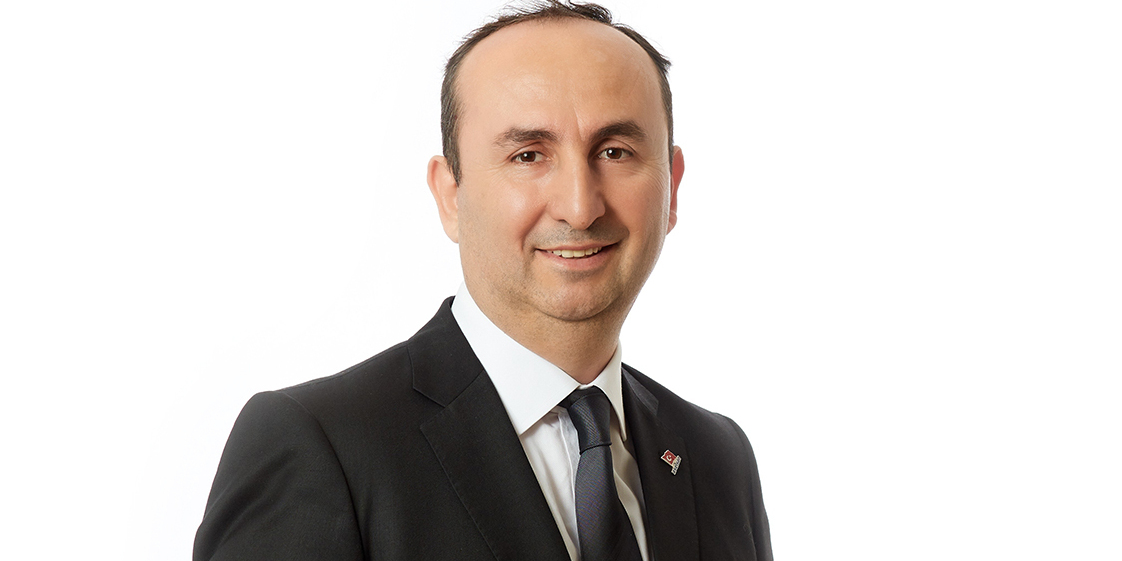
Mehmet Arik
Categories: Engineering, Energy & the Environment, Health Sciences, Transportation, Economic Development
Auburn University Applied Research Institute to oversee $50M Army advanced manufacturing project — the largest research contract in university history
How much is Auburn University's advanced manufacturing expertise worth to the U.S. Army? Up to $50 million.
That's the total of a new three-year project — the single largest prime research contract ever awarded to Auburn University — designed to help the U.S. Army Combat Capabilities Development Command Aviation & Missile Center boost its increasing modernization efforts.
Titled "Lightweight, Advanced Manufacturing of Metallic, Polymer and Composite Structures for Aviation and Missile Weapon Systems," the project will be facilitated through the Auburn University Applied Research Institute (AUARI) in Huntsville and rely extensively on research expertise from Auburn’s National Center for Additive Manufacturing Excellence (NCAME), and the Interdisciplinary Center for Advanced Manufacturing Systems (ICAMS).
"Our main objective is to enable the Army to incorporate advanced manufacturing materials and methods into existing and future aviation and missile systems," said Robert Dowling, AUARI director of research development. "To do that, we'll develop prototype advanced manufacturing processes required to analyze, design, develop, test, integrate and sustain qualified components for existing and future aviation and missile systems. The advanced manufacturing materials we're considering include alloys, polymers and composites. The methods will include everything from machine learning to material properties characterization."
Specific to the latter, $9.3 million of the award has already been designated for NCAME, which will use the funds to continue its industry-leading research into the materials, parts and process qualification necessary for furthering implementation of additive manufacturing in Army operations.
"While existing and future aviation and missile systems will be the direct beneficiaries of the project, successful results may be transferable to other government advanced manufacturing projects," Dowling said. "A lot of effort has gone into developing this opportunity. We're excited to get to work."
Steve Taylor, Auburn University's senior vice president for research and economic development, agrees.
"It goes without saying, but this is a significant accomplishment for Auburn's research enterprise and our Applied Research Institute," Taylor said. "But it also speaks volumes about how our Army partners in Huntsville, and beyond, are placing significant value on Auburn's work in advanced manufacturing, which is a key research focus area for our Samuel Ginn College of Engineering. To say it's paying off is an understatement."
Dowling also calls the project tailor-made for fulfilling one of the AUARI administration's stated goals — creating a pipeline for real-time engagement between stakeholders in Huntsville's defense sector and Auburn University's main campus.
“With this award, we’ve demonstrated the significant opportunities that can be created for faculty and students when we combine our core research expertise with customer proximity and knowledge,” Dowling said. “AUARI’s proximity to Redstone Arsenal and familiarity with Army customers and missions enabled the AUARI team to develop a highly responsive proposal representing a broad spectrum of Auburn’s research capabilities both on-campus and in Huntsville.”
In other words, mission accomplished.
“President Roberts' vision for Auburn is built around dreaming bigger, being bolder and pushing our research endeavors to the next level,” Taylor said. “This historic award does exactly that."
Media Contact: Jeremy Henderson, jdh0123@auburn.edu, 334-844-3591
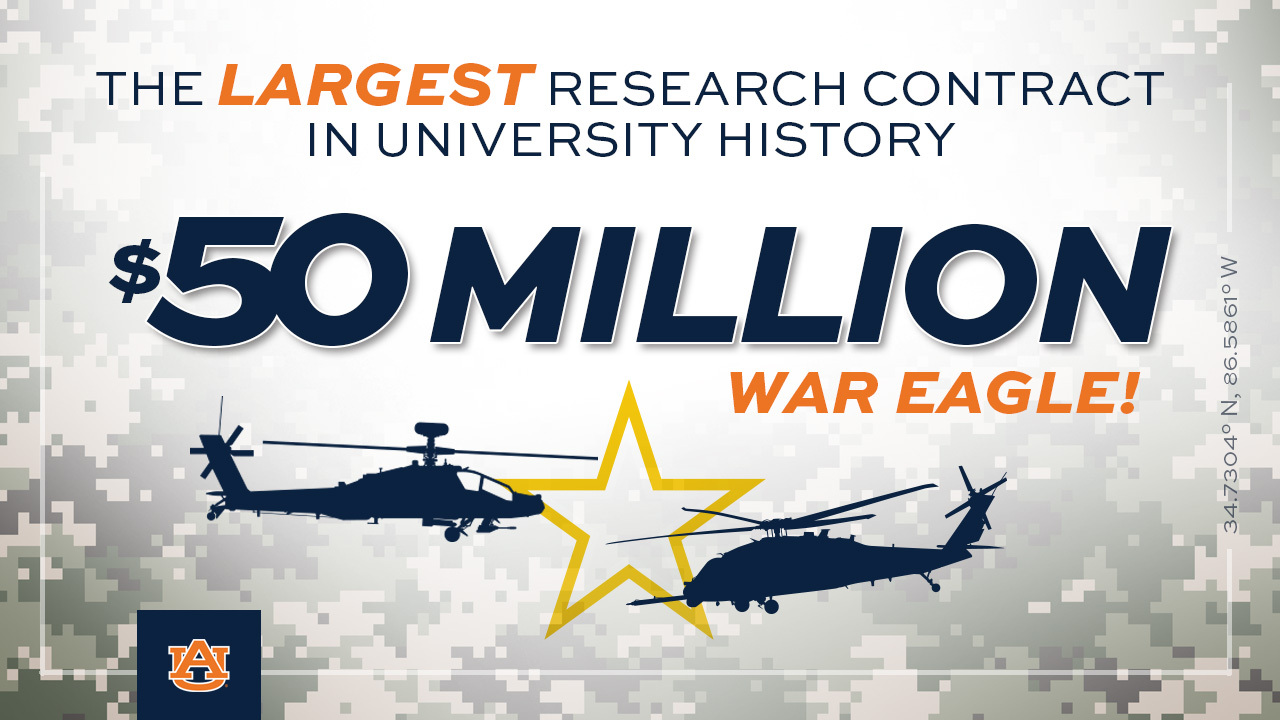
The single largest prime research contract ever awarded to Auburn University is designed to help the U.S. Army Combat Capabilities Development Command Aviation & Missile Center boost its increasing modernization efforts.
Categories: Engineering, Security, External Engagement, Manufacturing, Advanced Systems
Computer science and software engineering researcher part of $1.8 million NIH study to pioneer platform for the analysis of single-cell data
Tin Nguyen is pioneering a new platform for the analysis of single-cell data through the creation of an easy-to-use web interface through software programs designed in his laboratory.
Nguyen, an associate professor in computer science and software engineering and director of Auburn University’s Bioinformatics Lab, is a co-investigator on a $1.8 million National Institute of Health award granted to the bioinformatics company AdvaitaBio. This research will 1) accurately identify cell types and composition in complex tissues, 2) infer cell developmental stages and pseudo-time trajectories, and 3) identify cell-type-specific pathways and punitive mechanisms in phenotype comparisons. Auburn University’s portion of the grant is $813,000.
The study, “A web-based platform for robust single-cell analysis, bulk data deconvolution and system-level analysis,” co-authored by Nguyen in collaboration with AdvaitaBio’s researchers, will provide new methodologies for single-cell analysis that far exceed current technologies.
“A special feature of this software is that it will be able to analyze very large datasets,” Nguyen said. “Imagine that the data has a million cells, which can be very difficult for any software to analyze. But this software will be able to analyze extremely-large-scale data. Second, it can also infer cellular development for multiple sets of cells and cell types. Being able to follow the developmental evolution of each cell will allow for important advances in areas such as cancer research.
AdvaitaBio is the leader in the interpretation of high-throughput biomedical data including variant interpretation, pathway analysis, disease subtype discovery and integration across multiple data types. Currently, nine of the top 10 pharma companies rely on Advaita’s state-of-the-art algorithms to solve complex problems. Advaita provides a suite of advanced analysis software to more than 13,000 registered users worldwide: iPathwayGuide, for functional interpretation of genes and proteins; iVariantGuide, for genetic variant analysis; iKnowledgeBase, a collection of knowledge and pre-analyzed data from various phenotypes, and iBioGuide, a search engine revealing connections between genes, pathways, SNPs, drugs, and more.
“Our preliminary work shows that single-cell analysis and cellular deconvolution can achieve an outstanding accuracy of approximately 90 to 100 percent if we properly utilize reference single-cell datasets and pathway knowledge” said AdvaitaBio CEO Dr. Sorin Draghici.
Nguyen added that data from single cells can be used to analyze any disease, the source of the diseases, down to the muscles and blood vessels.
“This project is very interesting to me because I’m happy that some of the academic work we do here can be translated into the health industry, where it can be useful and help save lives,” Nguyen said.
Media Contact: Joe McAdory, jem0040@auburn.edu, 334.844.3447

Tin Nguyen
Categories: Engineering, Health Sciences
Auburn research center renamed with renewed focus on neuroimaging
A major research center within Auburn’s Samuel Ginn College of Engineering has been renamed the Auburn University Neuroimaging Center to highlight its renewed focus on solving critical neurological health challenges.
The center — headquartered in the Thomas Walter MRI Research Building in the Auburn Research Park — is focused on advancing the latest in neuroscience research and leveraging the university’s expertise in engineering, sciences and veterinary medicine with the use of advanced magnetic resonance imaging.
On Friday, members of the Auburn University Board of Trustees watched a video that touted the center’s capabilities.
“Our vision is to become a leading center for MRI research with emphasis on brain imaging, cardiovascular imaging, orthopedic imaging and coil design,” said Thomas Denney, director of the Auburn University Neuroimaging Center and the Mr. & Mrs. Bruce Donnellan & Family Endowed Professor in electrical and computer engineering. “These areas represent an intersection between the needs of the MRI research community and existing expertise and strengths of Auburn University.”
The center will allow the university to expand its groundbreaking brain research, among other capabilities, through the MRI devices at the site and the academic and research prowess of Auburn faculty.
“I dreamed of building an MRI research program here at Auburn where large medical centers recognize our contributions,” Denney said. “Through research, Auburn University has moved the needle and more than exceeded my expectations. Since opening this building, we’ve been able to double our staff. Those (MRI) machines are great, but people are the ones who write research papers and people are the ones who earn those research grants. The university is sitting on a gold mine in terms of data and capabilities.”
Approximately 90 percent of the images processed at the center focus on the brain.
“The neuroimaging center is a blessing to my practice and to our student-athletes because we literally use it on a daily basis, including the weekend,” said Michael Goodlett, chief medical officer and team physician for Auburn Athletics. “It gets us back to play quicker because not all injuries are surgical, and this definitely helps us determine very quickly in the course what’s surgical and what’s not surgical.”
Jennifer Robinson, professor of psychological sciences, said her research work also has benefited greatly from the center.
“I’m particularly focused on the interaction between cognition and emotion,” she said. “So, disorders like post-traumatic stress disorder are of great interest to me. And then also just knowing how much that can help our soldiers and folks that have experienced PTSD.”
New research explorations already underway include, but are not limited to:
- Meredith Reid, assistant professor in electrical and computer engineering, who is exploring post-traumatic stress disorder biomarkers in senior adults via spectroscopy.
- Adil Bashir, associate professor in electrical and computer engineering, who is studying muscle and brain energy production capacity on the cells and determining mitochondrial metabolic homeostasis by utilization of phosphorus spectroscopy.
- Gopikrishna Deshpande, professor in electrical and computer engineering, who is examining how artificial intelligence can be used to predict brain disorders and human/animal behavior using information from brain networks obtained from MRI.
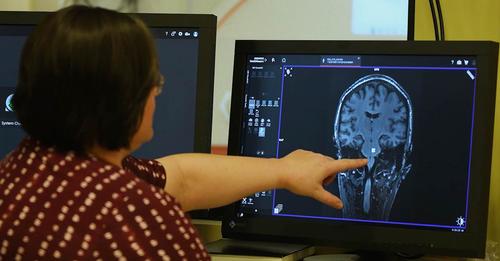
Meredith Reid, assistant professor in electrical and computer engineering, is exploring post-traumatic stress disorder biomarkers in senior adults via spectroscopy.
Categories: Engineering, Health Sciences
Army invests another $4.35M in Auburn additive manufacturing qualification research
The U.S. Army is again asking Auburn University's National Center for Additive Manufacturing Excellence (NCAME) to help keep its caissons rolling toward the cutting edge.
In March 2022, NCAME initiated a $4.3 million Army project focused on the materials, parts and process qualification necessary for furthering implementation of additive manufacturing (AM) in Army operations, specifically those conducted by the Army’s Combat Capabilities Development Command Ground Vehicle Systems Center (DEVCOM GVSC). Few use-case scenarios for next-generation AM adoption illustrate the necessity of NCAME's qualification efforts better.
"The research being conducted here at Auburn is important to the Army because additive manufacturing is going to provide two different capabilities," Maj. Gen. Darren L. Werner, Special Assistant to the Commanding General for the United States Army Materiel Command, said during the Army Additive Manufacturing Summit hosted by the Samuel Ginn College of Engineering in 2021. "It's going to give us capability in our organic industrial base to integrate advanced manufacturing techniques, and it's also going to provide deployability of advanced manufacturing that we can potentially move into a forward location to produce and repair parts for our combat systems."
The Army's latest investment, a $4.35 million grant awarded this summer, will go toward establishing equivalency across multiple laser powder bed fusion (LPBF) printers — no easy task.
"Ensuring output consistency in a single AM machine is challenging enough," said NCAME director and project principal investigator Nima Shamsaei, Philpott-WestPoint Stevens Distinguished Professor of mechanical engineering. "Ensuring consistency and transferability of process output among different machines is something else. Though they may be utilized to produce the same part, different machines have different lasers, different powder delivery systems and different cooling characteristics, which may affect the part's performance."
For the Army's purposes, the equivalency challenges are even greater, Shamsaei said.
"Yes, the push towards integrating AM into the repair and maintenance of Army ground vehicles depends on consistency, repeatability, transferability and quality of manufactured parts, same as it does in other industries," he said. "But the scenarios we are talking about involve not just different machines but different depots across the globe. The idea is to be able to fabricate the same quality part regardless of location and regardless of the machine utilized."
Partnering on the project is the ASTM International Additive Manufacturing Center of Excellence (AM CoE), which will offer advisory services encompassing an assessment of the industry's current state of qualification and equivalency. The collaboration aims to produce an in-depth landscape analysis culminating in a strategic roadmap derived from the project's findings.
Co-principal investigator Shuai Shao, associate professor of mechanical engineering, believes that NCAME's approach to addressing the sorts of material variations in question, which Shamsaei has dubbed "AM's Achilles’ heel," is unique in the AM research arena.
"While one may focus only on aesthetic representation of mechanical properties, we try to establish equivalency at the structure level," Shao said. "We look for microstructure, porosity and surface texture and how these factors affect the mechanical properties. Eventually, the established equivalency will be validated using mechanical testing. Conventional approaches operate as if locking down the process will keep the structure in question the same. However, we have seen that the structure can be very sensitive to various factors including powder specification, process parameters, geometry, location on the build plate, to name a few."
In addition to significant experimentation, Shao said the project will incorporate simulation and data analytics, or machine learning.
"We're very focused on microstructural characterization because we believe equivalency should be established at that level and then validated through mechanical testing," Shamsaei said. "This approach to qualification will avoid fabrication and testing of hundreds of test specimens for each new machine and material combination. Our objective with this project is to continue developing a rapid and reliable approach for material and process qualification across different OEMs of metal LPBF equipment."
Media Contact: Jeremy Henderson, jdh0123@auburn.edu, 334-844-3591
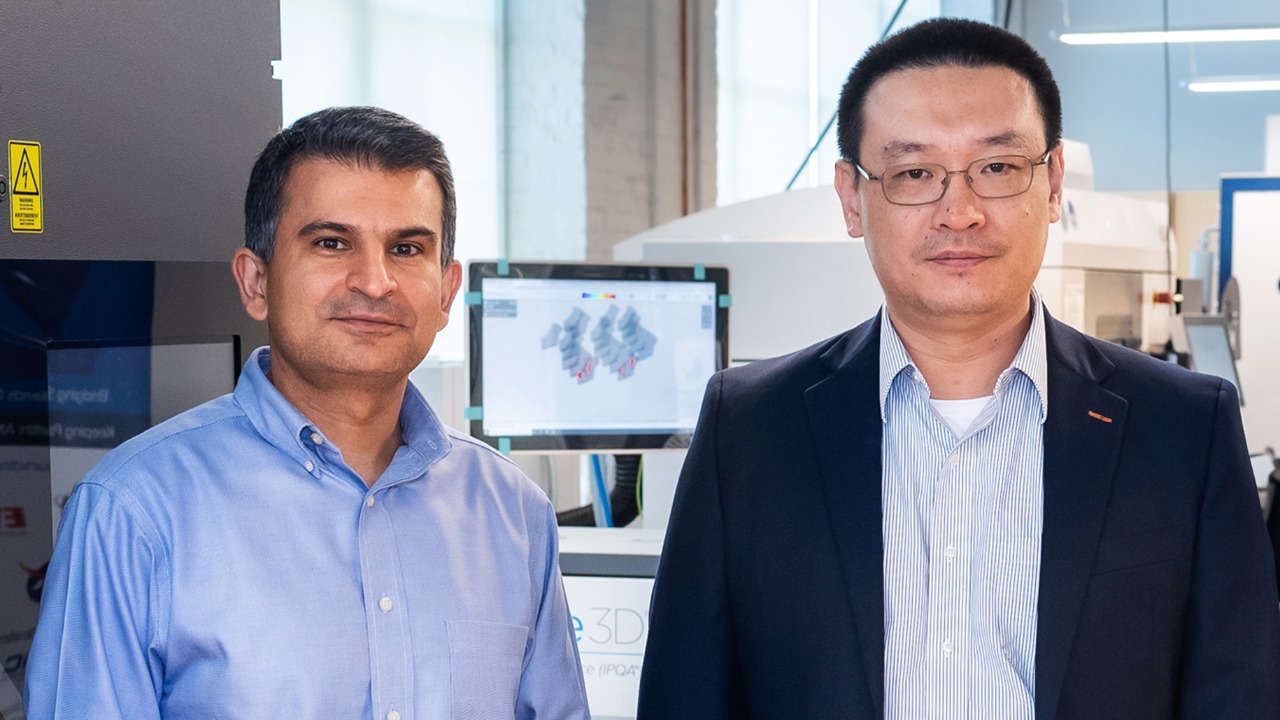
Nima Shamsaei and Shuai Shao
Categories: Engineering, Transportation, Security, External Engagement, Manufacturing
Computer science and software engineering researcher leads collaborative project aimed at meeting needs of Native American, Latina and Black women in computing
While much research into student and employee experiences in computer science focuses on specific demographics, few studies provide insight into intersectional circumstances.
Jakita Thomas, the Philpott-WestPoint Stevens Associate Professor in computer science and software engineering, plans to change that. Her collaborative project, “Intersectional Computing,” was awarded a one-year, $204,324 National Science Foundation (NSF) Early-Concept Grant for Exploratory Research (EAGER), which will serve as a springboard toward establishing a more inclusive and actionable research agenda focused on Native American, Latina and Black women in computing.
It begins with the NSF’s 14 Broadening Participation in Computing (BPC) alliances. One focuses on Black populations. Another focuses on women in technology. Others represent identity-inclusive and Latina populations.
“Each alliance focuses on a different community and what often happens is none of those groups serve an intersection, or cross section, of needs,” Thomas said. “Those experiences will be unique. Research has often reported in computing that Black women experience microaggressions and they are not able to decipher whether it's happening because they're Black or because they're a woman. When you focus on only race, or gender, people fall through the cracks who have different experiences. We know from intersectional computing that it's important to address the complexities of lived experiences of people in various groups.”
Thomas will implement a series of workshops, beginning next summer with a five-day intensive, to engage members of the BPC Alliances and Black, Latina and Native American women graduate students to develop a community of support in the field of computing. Feedback from the workshops will result in future research, Thomas said.
“The workshops are going to be about understanding work that the alliances are doing, understanding the populations they're currently serving, and the intersectional experiences present among those populations,” she said. “Then we need to help them consider what they're already doing that might be supporting those populations and design new interventions with intersectionality in mind to provide stronger support.
“From this, we hope the alliances will understand the core constructs of intersectionality, and understand the matrix of domination and how it functions inside of computing. Then they'll reframe their own practices and programs toward redesigning these interventions and projects to be truly inclusive and intersectional.”
Another workshop component includes reading groups, Thomas said. Many researchers engage in broadening participation and computing work with intersectional populations, but are unaware of literature that exists around the lived experiences of intersectional populations and how those experiences are unique from the dominant experiences that typically happen. “Familiarizing the community with that literature will be helpful, especially as it relates to designing new interventions that account for intersectional populations,” Thomas said.
Ultimately, Thomas believes EAGER would support building a community around intersectional computing that not only serves as a resource to the alliances, but also to build community around other scholars who are doing this type of work.
“The goal for us is to become another alliance that can help not only support the current alliances, but also expand intersectional computing,” she said.
Media Contact: Joe McAdory, jem0040@auburn.edu, 334.844.3447

Jakita Thomas
Categories: Engineering, Science, Technology, Engineering and Mathematics (STEM)
Researchers in chemical engineering part of NSF-EPSCoR grant to reimagine sustainable development of plastic materials
Mismanaged micro- and nano-plastics can threaten the environment and health.
Three researchers in Auburn University’s Department of Chemical Engineering – Assistant Professor Symone Alexander, Department Chair Selen Cremaschi, and Associate Professor Zhihua Jiang – offer solutions that could reimagine the sustainable development of plastic materials, address plastic waste challenges and their climate/health impacts, and build community climate resilience while advancing social and environmental justice in Mississippi and Alabama.
Their multi-disciplinary study, “Advancing Social and Environmental Equity through Plastics Research: Education, Innovation and Inclusion” (ASPIRE), is a collaborative effort with researchers from the University of Southern Mississippi (led by professor Zhe Qiang), and part of a four-year, $4 million National Science Foundation (NSF)-Department of Energy Established Program to Stimulate Competitive Research (DOE EPSCoR) R-II Track-2 grant. EPSCoR R-II Track-2 grants are awarded to researchers looking to advance climate change research and resilience capacity to expand opportunities for disproportionately affected communities.
“We’ve heard of islands of trash in the ocean, but what we don't see are micro- and nano-plastics,” said Alexander, the Auburn’s principal investigator (PI). “Those are the very small particles that can easily be ingested by fish and marine animals, which we, as humans, ingest. This can lead to bio accumulation that can cause other health issues which aren't well studied.”
ASPIRE will develop advanced detection methods to analyze microplastic contamination in field and aquaculture samples, utilize novel methods to extend the lifespan and improve the performance of recycled products for sustained use, and design recyclable polymer thermosets using sustainable, bio-derived building blocks to establish chemistry-structure-property relationships.
“Think about our typical single-use plastics, that's your water bottles and fast-food containers… they're difficult to recycle because two of the materials used to make them (polyethylene and polypropylene) aren’t compatible,” Alexander said. “You can’t blend them back together but they're very difficult to separate. We want to make those materials compatible, so they have better, stronger properties.”
They also want to address the lack of recyclable materials known as thermosets, like rubber and epoxy, which cannot be melted and formed into new materials after use.
How? With dynamic compatibilizers and lignin, an organic polymer found in plants that Alexander considers, “the glue that holds cellulose together.” In this case, lignin can be used to hold materials – such as plastics – together.
“What we can do is use this lignin group as a linkage in typical thermoset polymers. I will extract lignin from agricultural waste streams. For example, we can use seed hulls from pecan shelling,” Alexander said. “In Alabama and Mississippi, shelling pecans is part of the agricultural industry and, typically, the seed hulls are thrown out. What we can do is use them to extract lignin and then incorporate that lignin as a dynamic linkage in these thermoset materials. It's taking a waste product and making it something valuable that can be purposed into materials.”
As a co-collaborator on the project, Cremaschi focuses on design optimization to assess economic feasibility and improve the competitiveness of the team’s proposed solutions.
“Our role – working with collaborators – is to perform a techno-economic analysis to assess competitiveness of our proposed solutions among each other and against existing technologies,” she said. “Once we have the models in place for simulation of the processes, then we quickly study different processes to improve the techno-economic competitiveness of our solutions.”
Jiang, director of the Alabama Center for Paper and Bioresource Engineering, will serve as Auburn’s senior personnel on the project and brings his vast understanding of lignin and experience in lignin separation to identify efficient lignin extraction processes.
Additional ASPIRE thrusts are technology transfer and educational components in Mississippi and Alabama.
“We will both be working with industry partners for technology transfer, but we also want to showcase the latest technologies for these coastal communities,” Alexander added, citing the Gulf Blue Initiative, a University of Southern Mississippi program which “pools the knowledge of research scientists, federal agencies, industry partners and entrepreneurs to further develop the region as a global leader in ocean- and maritime-related technologies.”
Alexander is excited to make an impact on industry, society, and health.
“Many of these health concerns affect people who look like me, or who come from a similar economic background,” she said. “They don't always receive the same level of rigorous filtration when it comes to treating drinking water, or when it comes to addressing the lack of employment. It's extremely important to me because communities that aren’t well served in terms of city planning, drinking water, or availability of resources suffer most from health impacts related to pollution. A large part of this project is leading more in-depth studies on the impact of plastic pollution on waterways and health of coastal communities in Mississippi and Alabama.
“On the materials and environmental side, in nature everything is used, and nothing is wasted. There's a process to recover, reuse, and reduce or minimize waste. As humans, we've gotten very comfortable with throwing things away after we use them once. We don't think about what happens when we're done. We need a system to recover, reuse and make a smaller impact on the environment.”
Media Contact: Joe McAdory, jem0040@auburn.edu, 334.844.3447

From left, Zhihua Jiang, the Auburn Pulp and Paper Associate Professor in chemical engineering, Symone Alexander, assistant professor in chemical engineering, and Selen Cremaschi, the B. Redd & Susan W. Redd Professor and chemical engineering chair.
Categories: Engineering, Energy & the Environment, Manufacturing
Chemical engineering researchers part of $23.8M project to reduce carbon dioxide emissions from paper mills
Selen Cremaschi, the B. Redd & Susan W. Redd Professor and chair of Auburn University’s Department of Chemical Engineering, and Zhihua Jiang, the Auburn Pulp and Paper Associate Professor in chemical engineering, are co-principal investigators of a $23.8 million study on carbon dioxide capture and storage, led by Blue Sky Infrastructure and funded by the U.S. Department of Energy.
The project, which Auburn will receive $635,000 of the total funding, is titled “Timberlands Sequestration – A Biomass Carbon Dioxide Capture and Removal Project at a Pulp Mill in Alabama.” It aims to develop biomass carbon capture and storage for the Alabama River Cellulose pulp and paper mill in Monroe County. It is the first study of its kind to be conducted on a larger scale at a pulp and paper mill in the U.S.
By leveraging their combined expertise in process systems engineering and a deep understanding of the pulp and paper industry, Cremaschi and Jiang will lead researchers in conducting extensive simulations, analyses and technical evaluations to develop innovative solutions for carbon dioxide reduction and propose cost-effective approaches to implement these solutions. The project’s interdisciplinary nature and emphasis on collaboration align with Auburn University’s commitment to research excellence and environmental stewardship.
“This project is a major step towards net zero emissions,” Cremaschi said. “Our research aims to capture and store carbon dioxide emissions from pulp and paper production sites, converting waste into valuable chemicals used internally for pulp and paper operations. By targeting carbon dioxide emissions from industrial operations and power generation, we have the opportunity to make a significant impact on reducing greenhouse gas emissions.”
Jiang, who also directs the Alabama Center for Paper and Bioresource Engineering, said this research could prove to be a gamechanger for carbon reduction.
“This project has the potential to become a practical and economically viable pathway for the pulp and paper industry to decarbonize their processes,” Jiang said. “This technology should be applicable to all pulp and paper mills and across a wide range of high-energy consumption manufacturing processes.”
Alabama River Cellulose mill is a long-time member of the Auburn Pulp and Paper Foundation (APPF), a leading organization that has strongly supported research and education in the pulp and paper program at Auburn University for more than 40 years. Supported by its member mills, the APPF fosters collaboration between academia and industry to promote sustainability and innovation in the field.
Media Contact: Joe McAdory, jem0040@auburn.edu, 334.844.3447
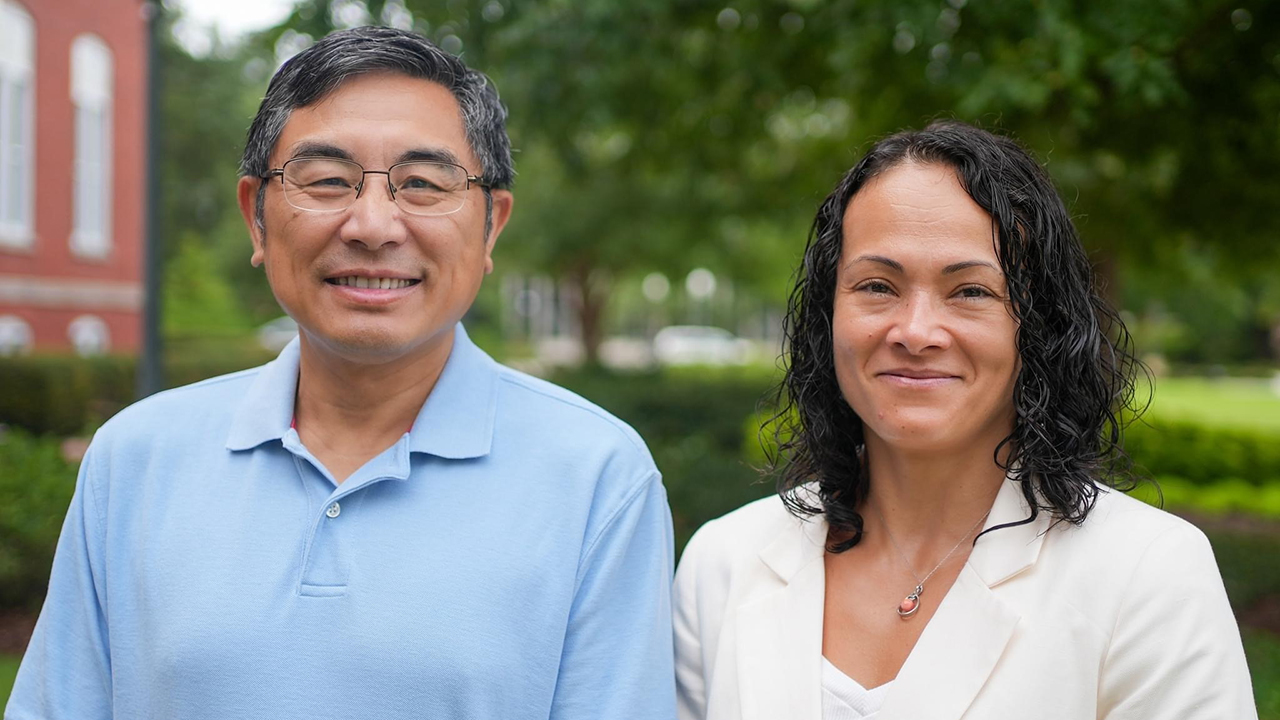
From left, Zhihua Jiang, the Auburn Pulp and Paper Associate Professor in chemical engineering, and Selen Cremaschi, the B. Redd & Susan W. Redd Professor and chemical engineering chair.
Categories: Engineering, Energy & the Environment, Manufacturing
Industrial and systems engineering assistant professor earns NSF CAREER Award for AM fatigue life prediction through deep learning
Four years ago, GE Aerospace transitioned to using additive manufacturing (AM) for their new Catalyst turboprop engine. Which meant that 800 traditionally manufactured components were consolidated into just 12 metal AM parts, the development cycle was dropped from 5-10 years to only two, the engine weight reduced by 5% and the fuel consumption improved by 1%. For G.E., that's a pretty big deal. If other U.S. aircraft manufacturers went the same route, that would be a pretty big deal for the planet.
There's a reason AM research across the globe is expected to push $24 billion by 2027, and the revolutionary impact on the aviation industry is one of them. Experts estimate that substantial adoption of 3D-printed parts could knock 200 million gallons off of annual aviation fuel consumption.
If the parts work.
Despite the demonstrated success of metal additive manufacturing in various industries, the performance uncertainty of AM parts undermines the potential of deploying AM for high-consequence applications. Air travel. Space travel. Those sorts of thing.
Which is why the National Science Foundation (NSF) is turning to assistant industrial and systems engineering professor Peter Liu in the form of a $500,000 CAREER Award meant to generate new insight into defect formation relevant to fatigue performance of parts manufactured through laser powder-bed fusion (LPBF) and uncover the synergistic impacts of multi-scale factors on fatigue fractures.
Liu hopes the five-year project, Deep Learning to Understand Fatigue Performance and Processing Relationship of Complex Parts by Additive Manufacturing for High-consequence Applications, "will establish a physics-centric, machine learning framework for fatigue life predictions, serving as a technological foundation for future metal AM production of dynamic load-bearing applications and establishment of a resilient and reconfigurable supply chain, and thus, enhance the competitiveness of U.S. industry.”
"The biggest challenges in fatigue performance assessment for LPBF parts come from the nonhomogeneous microstructural traits from process dynamics, coupled with their complex geometry and imposed multiaxial loading," he said. "Current fatigue performance assessment methods and tests are unable to take all these contributing factors into account."
Liu believes the best way to address those challenges is to combine fracture mechanics, finite element (FE) methods and novel data-driven models.
"The goal of this early career effort is to understand fatigue failures of complex LPBF parts under multiaxial loading for data-driven fatigue life predictions," he said. "The research will investigate the nature of fatigue failures from plastic deformation and crack initiation at the highest stress concentrations and translate fatigue life predictions into evaluating the crack growth at the vulnerable zones using a multiscale approach. Then we will develop new statistical models and a novel multiscale multifactorial deep learning model to incorporate crack growth and stress distribution to understand their impacts on fatigue performance and predict fatigue life."
Liu is also the principal investigator on another recent NSF project aimed at applying deep learning to AM development.
"My research passion is synergizing machine learning and fundamental process physics to advance manufacturing knowledge, efficiency, and capability of LPBF," Liu said. "I am extremely grateful to the support from my department, the college, the National Center for Additive Manufacturing Excellence (NCAME), the Interdisciplinary Center for Advanced Manufacturing Systems (ICAMS) and the AI@AU Initiative. This CAREER project aligns with one of the strategic areas of research in advanced manufacturing and materials at the Samuel Ginn College of Engineering. It will contribute to the leading research and education capabilities in advanced manufacturing at Auburn, accelerate AI applications in manufacturing, and increase interdisciplinary collaboration at Auburn."
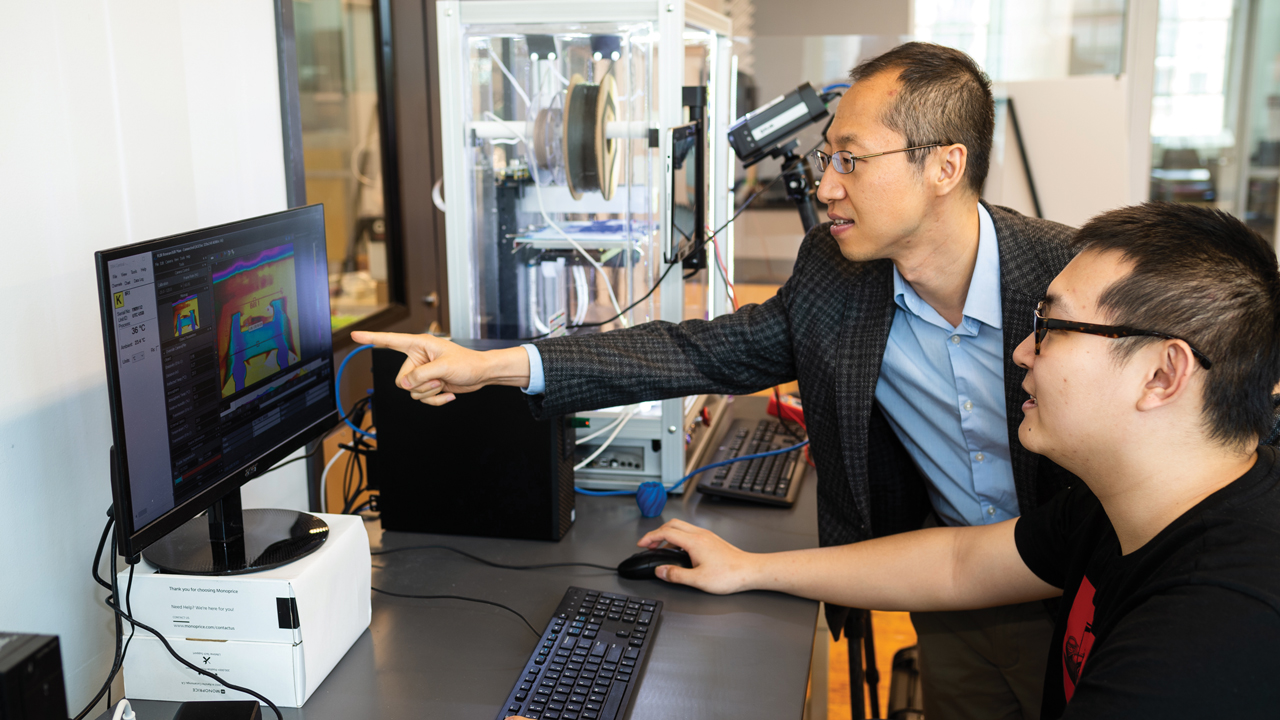
Peter Liu, left, recently received an NSF CAREER award to support his research into deep learning's application in predicting fatigue performance in additive manufacturing.
Categories: Engineering, Transportation, Manufacturing, Advanced Systems
DOE, NAWI tap Auburn team for $1.5M advance reverse osmosis brine management project
The Department of Energy (DOE) and National Alliance for Water Innovation (NAWI) recently tapped Auburn University to spearhead a $1.5 million investigation into the reuse of wastewater and brackish water as a possible means of meeting mounting freshwater demands in inland cities.
Titled “Development of a Flow-through Intensified ELectroDialysis (FIELD) system to manage inland reverse osmosis concentrate,” the project is led by Shiqiang (Nick) Zou, an assistant professor in the Department of Civil and Environmental Engineering.
Commonly referred to as inland desalination, the water reuse process in question relies on reverse osmosis (RO) and generates a highly concentrated RO brine — which would be fine were it not for the hazardous metals, pesticides and polyfluoroalkyl substances the brine contains.
“Unfortunately, no cost-effective treatment systems exist to eliminate these contaminants, leaving deep well injection the only option for inland RO brine,” Zou said. “This project will tackle the above critical problem to promote RO-based inland desalination and a circular water economy. Specifically, we will develop a FIELD system to eliminate contaminants from inland RO brine, produce a clean brine safe for environmental disposal, and harvest freshwater and other valuable resources for beneficial reuse.”
Zou calls RO brine management the “Achilles’ heel” of inland desalination.
“Existing brine management practice is not able to achieve simultaneous water recovery, salt removal, organics degradation and metal separation,” he said. “To tackle this critical challenge, our research project will explore a suite of electricity-powered processes, including electrooxidation, electroplating and electrodialysis, to develop the FIELD system for resource-efficient brine management.”
Zou believes his team, which includes collaborators from Rice University, Lawrence Berkeley National Lab, Electric Power Research Institute and The Water Tower in Georgia, can improve the energy efficiency of inland desalination, drive decarbonization of water and wastewater sectors, and provide the U.S. with climate-resilient, cost-effective water supplies.
“This is our second DOE and NAWI project but first as the lead organization,” Zou said. “We’re excited that our track record has been recognized by the DOE and NAWI over the past two years. Our research program shares a similar vision with NAWI to develop automated, precise, robust, intensified, modular and electrified (A-PRIME) water treatment technologies. With this award, we can bring together theoretical material scientists, electrochemical scientists and engineers, environmental engineers, energy research organizations and at-stake inland municipalities to advance resilient water management and a circular water economy.”

Shiqiang (Nick) Zou, third from left, poses with his research team. From left to right: Zilan Yang, Jiaxiang (Jason) Zhao, Brandon Alderman, Najibullah Zulfeqar and Ao Xie.
Categories: Engineering, Energy & the Environment
Auburn ranked in top 100 of U.S. research institutions for second straight year
For the second straight year, Auburn University is ranked in the top 11% of U.S. research institutions, coming in at No. 100 among 915 universities, according to the National Science Foundation’s most recent Higher Education Research and Development, or HERD, Survey.
Among public universities, Auburn is ranked No. 68 out of 412 institutions. The university also increased its research and development spending overall by $11.1 million in 2021.
“Auburn’s second year of ranking among the nation’s top 100 research institutions continues to be a significant accomplishment,” said James Weyhenmeyer, Auburn’s vice president for research and economic development. “Our researchers continue to be committed to engaging in impactful research—much of which is critical to supporting major Alabama industries—and that commitment is reflected in Auburn’s being highly ranked once again.”
The annual survey, compiled from fiscal year 2021 research expenditures, saw Auburn hold its position in the rankings’ top 100 even as 10 other SEC schools saw their positions fall. During the five-year period from 2017-21, Auburn’s annual research expenditures increased from $190.3 million to $266.4 million, resulting in a rankings jump of 14 places.
For universities without a medical school, Auburn again ranked No. 61 nationally and No. 1 in the state. Auburn also was highly ranked nationally in a number of specific fields of research, including No. 51 in engineering (up three spots), No. 53 in mathematics and statistics (up one spot) and No. 94 in physical sciences, all state bests. Auburn also ranked No. 41 for non-science and engineering research expenditures (up two spots). These fields include business administration, management, communications, education, humanities, social work and human sciences.
A hallmark of Auburn’s research is the diversity of its funded projects. Highlights include:
-
The U.S. Department of Agriculture recently awarded Auburn’s College of Forestry, Wildlife and Environment $2.1 million for studies into mitigating needle blight, a growing threat to pine trees. According to EDPA, the forest products industry is the state’s largest manufacturing industry. A second USDA award of more than $1.5 million is funding another study in the college aimed at reducing the effects of climate change through forest carbon sequestration.
-
The Auburn College of Agriculture’s Department of Poultry Science was awarded more than $1.2 million for research into sustainable poultry processing, as well as received additional funding of approximately $1.3 million for a study of the effects of environmental conditions in production efficiency and product quality in commercial poultry operations. Like forestry, poultry production is another major industry in Alabama. Alabama ranks fourth in the nation in broiler (chicken) production.
In addition to the high ranking in the NSF HERD Survey, Auburn is recognized by the Carnegie Classification of Institutions of Higher Education as a top-level, or R1, university with “very high research activity.”
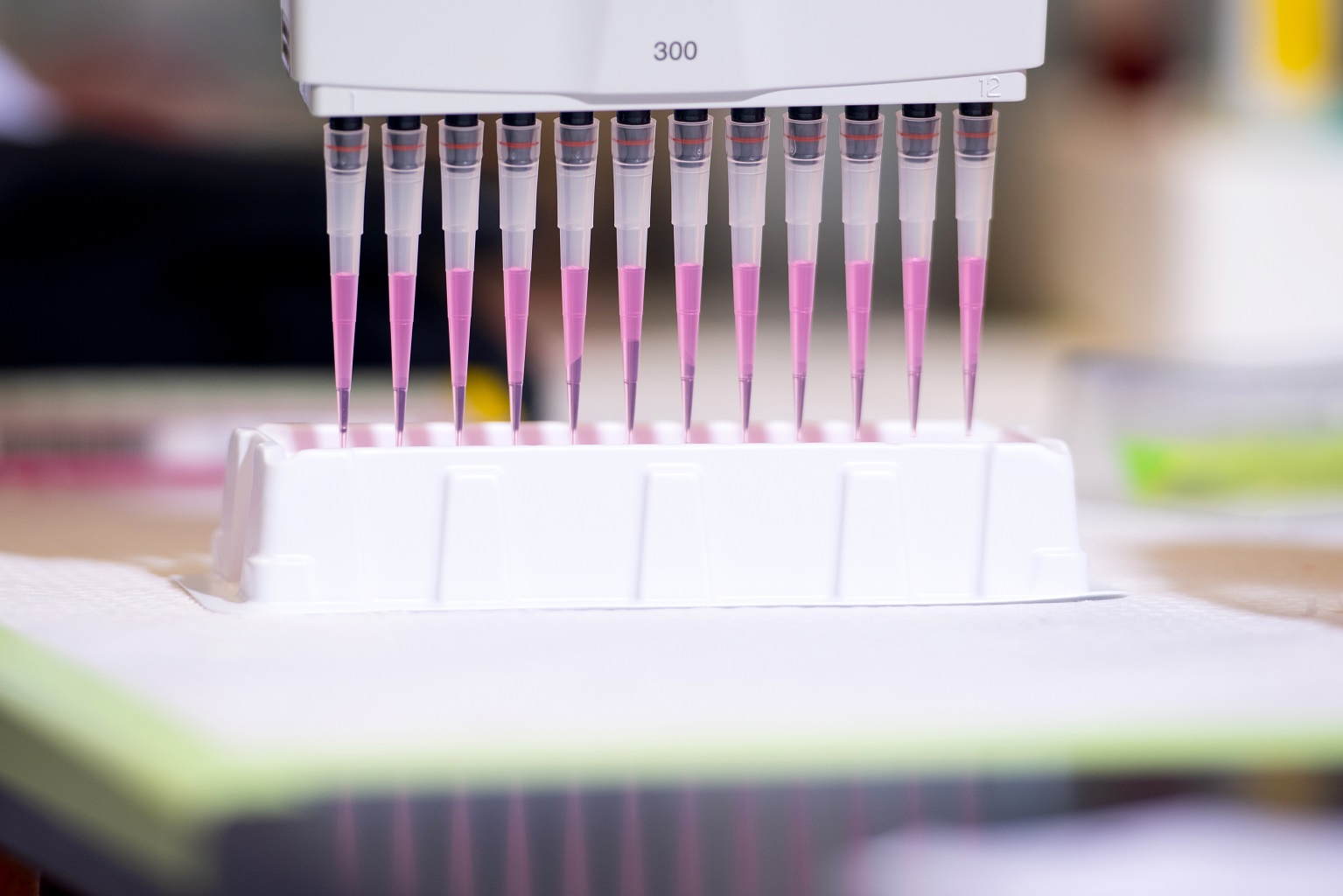
Categories: Engineering, Science, Technology, Engineering and Mathematics (STEM), Food Systems, Auburn In the News, Education, Agriculture, Liberal Arts
NIST awards Auburn nearly $1M to lead NDE-based additive manufacturing qualification via data analytics
The National Institute of Standards and Technology (NIST) recently awarded Auburn University's National Center for Additive Manufacturing Excellence (NCAME) and the ASTM Additive Manufacturing Center of Excellence (AM CoE) nearly $1 million to establish through computer vision and machine learning a data-driven framework for the non-destructive qualification of additively manufactured materials and parts for mission critical applications.
The framework will allow for the rapid identification of critical defects and the prediction of fatigue performance with non-destructive evaluation (NDE) data.
"Additive manufacturing (AM) has gained significant attention from key industrial sectors including aerospace, defense, automotive, and medical due to its unique capability of fabricating customized parts with complex geometries on demand," said NCAME director Nima Shamsaei, Philpott-WestPoint Stevens Distinguished Professor of mechanical engineering. "However, current AM platforms are still prone to producing parts with varying degrees of defects detrimental to the parts’ structural integrity, specifically in fatigue critical applications."
NDE-based and prediction-based qualifications are key to expedited adoption of AM, said Shuai Shao, associate mechanical engineering professor.
"Conventional qualification approaches are challenging when directly applied to AM due to the parts' defect content being sensitive to many process parameters," Shao said.
Shamsaei is the project's principal investigator (PI). Co-PIs from Auburn are Shao and assistant industrial and systems professor Peter Liu; Co-PIs from ASTM International are Mohsen Seifi, Mahdi Jamshidinia and Aaron McCandless .
"Extracting defect features with computer vision and correlating them with fatigue performance using machine learning, are the main ingredient of the proposed NDE-based qualification framework." Liu said.
Established in 2017 through a public-private partnership between Auburn and NASA, NCAME has built one of the world's most robust environments for framework-based analysis of fatigue performance towards qualification and certification of additively manufactured materials and parts. For example, NCAME has been conducting research for the Federal Aviation Administration (FAA) on matters affecting the AM qualification and certification, specifically in fatigue-critical applications.
This most recent award reflects NIST's continuing efforts to address barriers to AM adoption through measurement science supporting equivalence-based qualification and model-based qualification, the characterization of materials, and standards to support consistent data exchange and characterize new advances in AM production systems.
Over the course of the two-year project, NCAME and ASTM AM CoE researchers will also work with NIST scientists to explore ways to incorporate their findings into data management systems like NIST’s Additive Manufacturing Materials Database (AMMD) as well as potential pathways for standardization needs.
"Research need in this area is extremely timely and important," said Seifi, ASTM International’s vice president of Global Advanced Manufacturing.
Formed in 2018, the ASTM AM CoE aims to accelerate the development and adoption of AM by supporting standardization, developing training and certification programs, and providing market intelligence, business strategy and advisory services.
"The goal of this NIST funded project is well-aligned with the mission of the newly established AM CoE Consortium for Materials Data and Standardization (CMDS) with members representing the entire AM value chain," Seifi said.
Media Contact: Jeremy Henderson, jdh0123@auburn.edu, 334-844-3591
BY JEREMY HENDERSON
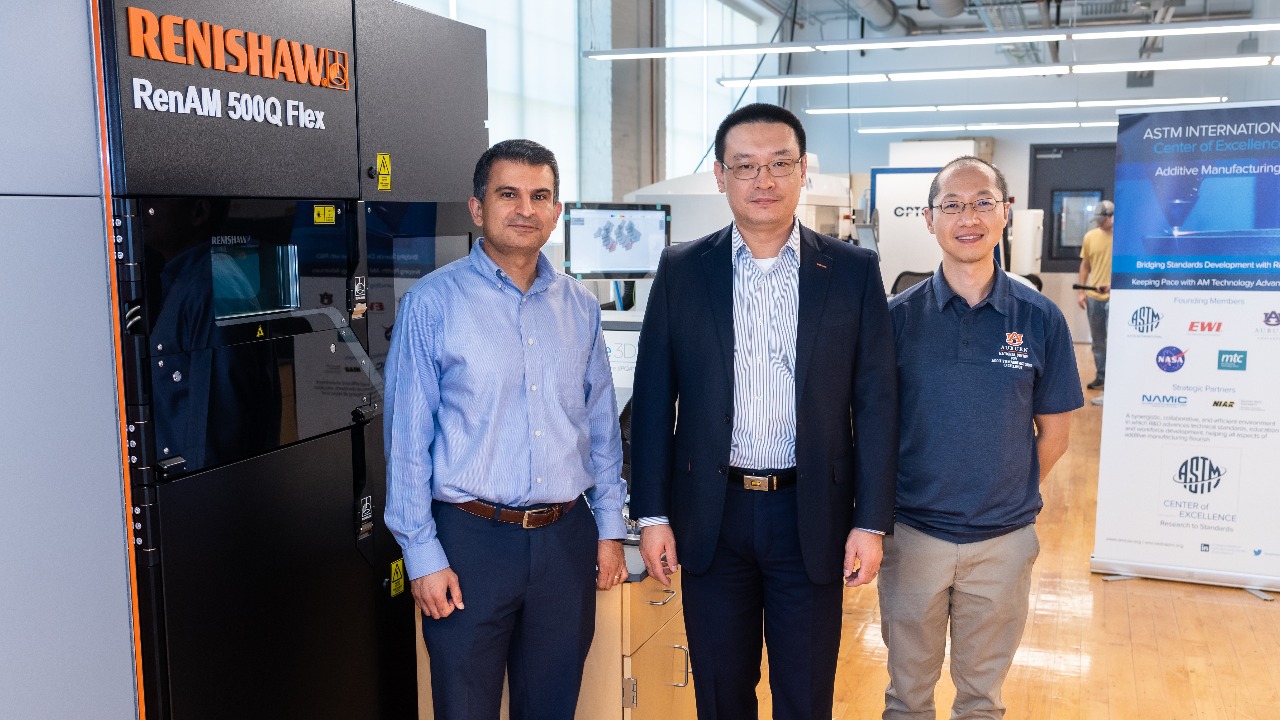
Nima Shamsaei, Shuai Shao and Peter Liu
Categories: Engineering, Manufacturing, Advanced Systems
Auburn showcases variety of university-developed technologies at BIO Alabama conference
Auburn University recently participated in the BIO Alabama conference at the Grand Bohemian Hotel in Mountain Brook, showcasing seven of its biotechnology research developments.
BIO Alabama is the trade organization for the state’s biosciences industry. This year’s event—the first meeting following a six-year hiatus due in part to the COVID-19 pandemic—featured approximately 200 scientists and their research developments April 25-26.
Melinda Richter, global head of Innovation at Johnson & Johnson, served as keynote speaker under this year’s theme, “Building Alabama’s Biohorizons,” focusing on the future of the industry’s participation in Alabama’s innovation economy.
Auburn’s presentations included:
-
Vivosphere cell encapsulation technology platform for drug development and discovery (Elizabeth Lipke; presented by co-inventor Yuan Tian) – This is a 3D cell encapsulation method and device for more accurate and cost-effective drug screening, bioinks and regenerative medicine.
-
Anti-cancer immunotherapy targeting CD47 (James Gillespie, joint project with VCOM) – Development of an anticancer treatment that could replace immunomodulatory therapies targeting CD47.
-
Computational tool for speeding discovery of natural beneficial compounds (Angela Calderon and Cheryl Seals; presented by Kabre Heck and Muhammad Gulfam) – A collaborative project about an automated method to analyze mass spectrometry data to identify potential bioactive compounds in complex mixtures.
-
Engineered bacteria for producing biofuels and other compounds (Yi Wang) – Engineering of bacteria to express record levels of butanol for biofuel or other industrial applications or to express record levels of butyl acetate for use in foods, consumer goods or industrial processes.
-
Computationally designed compounds for treating Alzheimer’s disease (Raj Amin; presented by Ian Steinke and Fajar Wibowo) – A custom-designed therapeutic compound for treating Alzheimer’s without the side effects seen with other drugs in this class.
-
Gene therapy vectors for therapeutic treatment of neurological disease (Doug Martin) – Engineered AAV vectors for treating neurological diseases such as rabies.
-
Medical device for improving diagnosis and monitoring of neuropathy in diabetic patients (Michael Zabala and Thomas Burch; presented by co-inventor Kenny Brock, VCOM) – A medical device for accurately monitoring and measuring loss of feeling in diabetic patients. (Jon Commander is also a co-inventor and is with VCOM.)
BIO Alabama is the leading advocate for Alabama's bioeconomy. The organization represents the state on a national and international stage, promoting the intellectual and innovative capital to make Alabama a premier place to invest, start and grow in bioscience.
Alabama’s bioscience industry provides a $7.3 billion impact on the state’s economy, according to BIO Alabama data. Auburn has participated in BIO Alabama events for a number of years.
"As presenting sponsor for this year’s BIO Alabama conference, Auburn University had an important opportunity to showcase some of our latest technologies during a reverse-pitch session to industry,” said Bill Dean, executive director of the Auburn Research and Technology Foundation.
“Auburn’s participation in events like the BIO Alabama conference speaks to our role in growing the region’s bioeconomy and demonstrates our commitment to the bio-sector in the form of industry collaboration and partnerships that will advance research and impact quality of life throughout the state.”
BY MITCH EMMONS
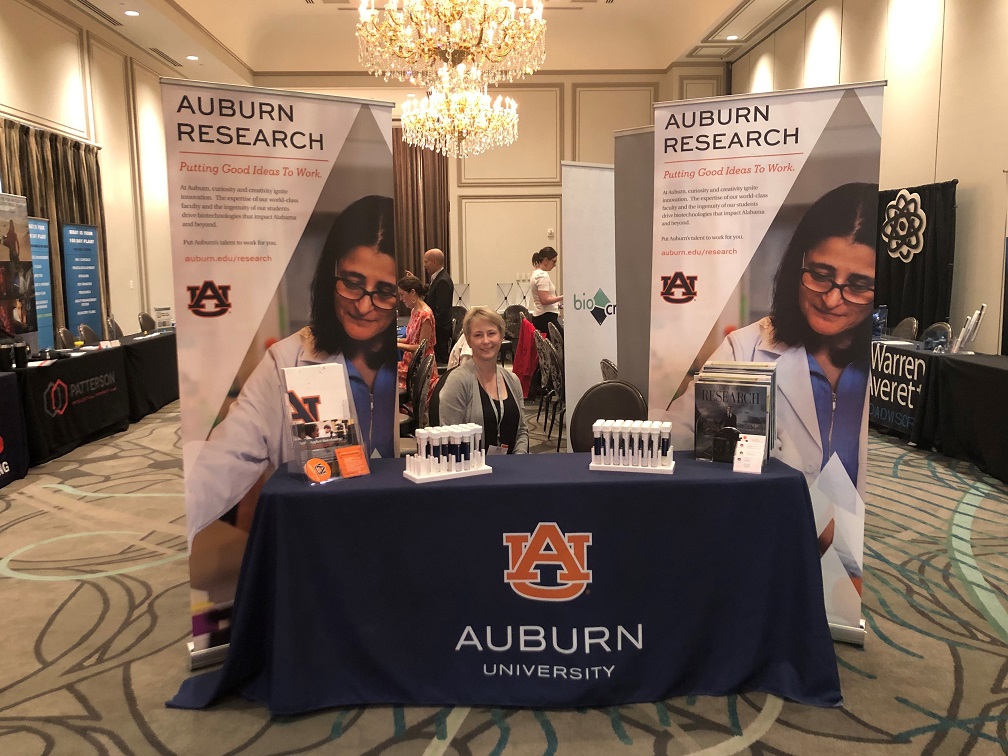
Liz Smith, College of Agriculture academic advisor, works at Auburn’s booth during the BIO Alabama conference. She talked with companies about opportunities for applied biotechnology graduates.
Categories: Engineering, Energy & the Environment, Health Sciences, Food Systems, Life Sciences, Manufacturing, Agriculture
Aerospace engineering study encourages face mask redesign in the future
The COVID-19 pandemic brought about the use of face masks as a means of reducing the airborne transmission of diseases to the center of attention of people around the world. Researchers in aerospace engineering at Auburn University's Samuel Ginn College of Engineering are leading a study that will help improve our understanding of the science that can be expected to guide the design and use of masks in different situations and environments moving forward.
Their research has found that while basic surgical masks offer a first line of defense to both the wearer and the people around them, they are not foolproof as flow leakage occurs around the mask and their effectiveness under realistic coughing conditions is not known.
Assistant Professor Vrishank Raghav, Sarah Morris, a postdoctoral research fellow, and William McAtee, a graduate research assistant, found that repetitive ‘pulsatile’ coughs allow expiratory particles to escape through a surgical mask’s sides and above the nose in their co-authored paper, “Influence of expiratory flow pulsatility on the effectiveness of a surgical mask.”
Smoke from Gloria, a mannequin designed by Auburn's Applied Fluids Research Group, shows where basic surgical mask leakage can occur during a cough.
The study – part of a $464,846 National Science Foundation grant in collaboration with the University of Michigan funded in 2021 – was published as an invited article by the Journal of Exposure Science & Environmental Epidemiology, a Nature publication.
“Our research has found that if you are wearing a mask and you cough, the volume of air that leaks is reduced compared to not wearing a mask,” Morris said.
“However, the effect of pulsatility does influence the leakage volume and must be considered when this is modelled.”
Raghav said the source of the problem with basic surgical masks — the blue devices most-commonly sold to and used by the public during the COVID-19 pandemic — is pre-loosening as inhaling, exhaling, double, or even triple coughs provide gaps for germs to become airborne.
Laser imaging and high-speed photography were utilized to show mask leakage during simulated coughs on the top of the mask, above, and the sides of the mask, below.
“The main reason why surgical masks move, and open gaps, is because the air you are breathing in and out cannot easily travel through the tiny pores of the mask,” said Raghav, a recent NSF CAREER Award recipient. “Instead, it slowly pushes the mask out of the way and when you cough, air finds the path of least resistance out of the mask, which is outside the cheeks and above the nose.”
Raghav agreed that masks of higher quality than basic surgical masks can, if worn correctly, provide better protection. “Surgical masks allow significantly more protection than wearing no mask at all, cutting out roughly 85 percent of the expiratory flow,” he said. “Of course, N95s fit tighter, are secure and allow only a fraction of expired air to leak. Further innovations will be required before surgical masks are as effective as N95s.”
Raghav, Morris and McAtee utilized laser imaging, high-speed photography and a coughing simulator to determine surgical mask leakage. This wasn’t any coughing simulator. It was a custom-built mannequin named Gloria – decked out in a blue surgical mask – designed within Auburn’s Applied Fluids Research Group laboratory.
Using the device, a computer-controlled solenoid valve provides desired air flow rates by controlling a pressurized air source at the wall. From there, a pipe ‘throat’ inserted through the mannequin allows air flow from the wall to a one-inch diameter mouth, which is met by the surgical mask.
“We have a computerized control valve that opens and closes to let the air in and out. We control the pulsatility of the air,” Morris said. “We can create a single pulse, a double pulse, or a triple pulse.”
Two main techniques are used to make leakage measurements – flow visualization and particle image velocimetry. With flow visualization – the long pipe carries smoke with two-micron fog particles. When the mannequin coughs, smoke will follow the flow field. A Nikon mirrorless camera is used to capture the expiratory flow — leakage made visible by smoke.
Particle image velocimetry is where laser imaging comes into play.
“This is a quantitative measurement technique where we have these tiny, two-micron particles (representing leaked air) that follow the flow, and we are taking high-speed photos of them,” Morris said. “If we take images at pre-determined times apart, we can actually see where those particles are moving between image one and image two.”
A pulsed, high-speed laser combined with a laser arm and light sheet generating optics illuminates the 2D field of view, providing revealing imagery.
Though mask mandates have currently evaporated in many locations, Raghav pointed out that masks can continue to be useful in many settings.
BY JOE McADORY
Media Contact: Joe McAdory, jem0040@auburn.edu, 334.844.3447
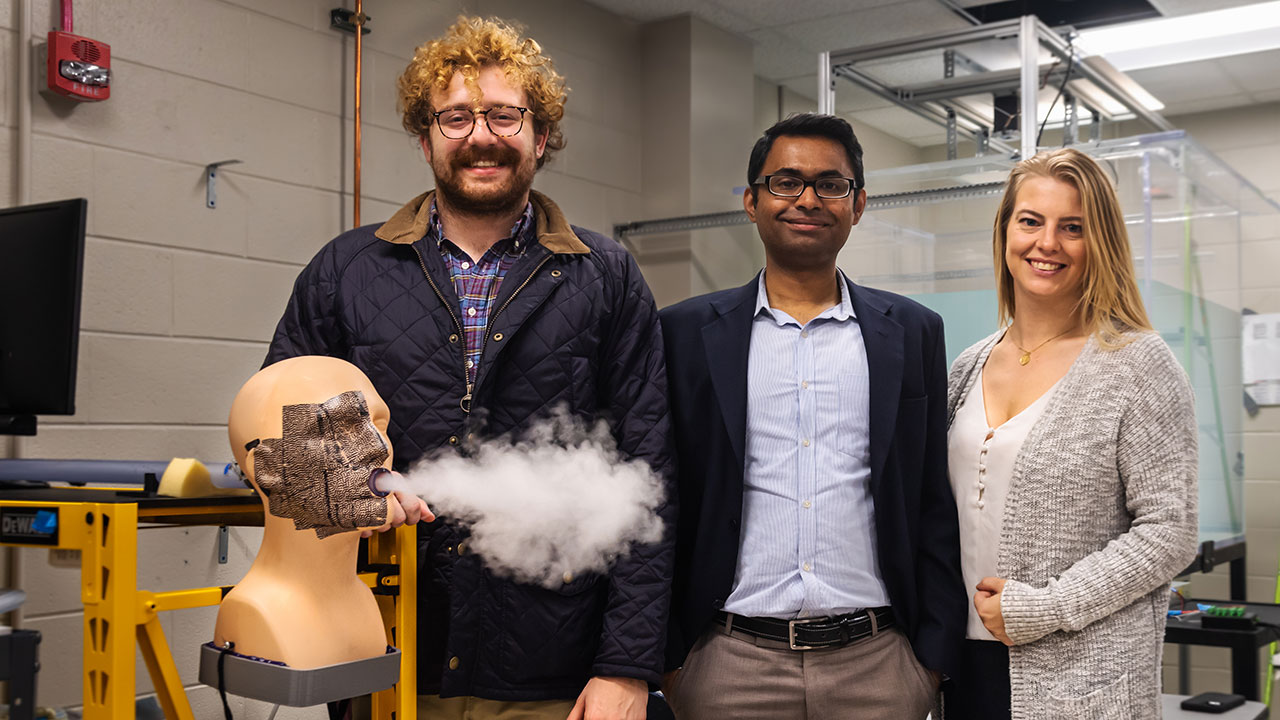
Researchers, from left, William McAtee, assistant professor Vrishank Raghav, and Sarah Morris, used 'Gloria', a mannequin created by the Applied Fluids Research Group, to serve as a pulsatile coughing simulator.
Categories: Engineering, Health Sciences, Manufacturing
Army invests $4.3 million in Auburn University additive manufacturing research
The U.S. Army has asked Auburn University to help build the future of American combat readiness.
Through a recent $4.3 million Army grant, the National Center for Additive Manufacturing Excellence (NCAME) at Auburn University will soon initiate a two-year project focused on materials, parts and process qualification, all of which are necessary for furthering the adoption and implementation of additive manufacturing in Army operations.
"Material variation is what I call the ‘Achilles heel’ of additive manufacturing," said NCAME director and project principal investigator Nima Shamsaei, Philpott-WestPoint Stevens Distinguished Professor of mechanical engineering. "It can make the qualification and certification of additively manufactured materials and parts challenging."
Even more challenging, Shamsaei said, is ensuring the consistency and transferability of process output among different additive manufacturing machines, a project goal that NCAME researchers hope to achieve not only with exhaustive mechanical testing but with AI — machine learning, specifically.
"Machine learning will help us establish structure-property relationships in a much more comprehensive way, which is somewhat transferable among platforms," said co-principal investigator and assistant mechanical engineering professor Elham Mirkoohi.
Shamsaei says Mirkoohi’s experience in AI and machine learning applications for additive manufacturing is the newest addition to NCAME’s research repertoire, which continues to draw high-profile government research grants.
"Simulation and machine learning are effective tools to understand the role of microstructure and defects on mechanical properties,” said co-principal investigator Shuai Shao, associate professor of mechanical engineering.
That understanding can help establish equivalency with less need for extensive experimentation, Shao said.
"This project not only looks into innovative ways to generate materials data, but also emphasizes on transferring the knowledge among different additive platforms by means of establishing equivalency," said co-principal investigator Masoud Mahjouri-Samani, assistant professor of electrical and computer engineering.
Aaron LaLonde, who as technical specialist for the U.S. Army DEVCOM Ground Vehicle Systems Center, helped facilitate the Army grant, believes the project will be crucial for further integrating AM into the Army’s modernization and sustainment efforts.
"NCAME,” LaLonde said, “has become one of the main key players in additive research along these lines.”
His comments echo those of Maj. Gen. Darren L. Werner, commanding general of the U.S. Army Tank-automotive and Armaments Command (TACOM), during the Army Additive Manufacturing Summit hosted by the Samuel Ginn College of Engineering last June.
"The research being conducted here at Auburn is important to the Army because additive manufacturing is going to provide two different capabilities," Werner said. "It's going to give us capability in our organic industrial base to integrate advanced manufacturing techniques, and it's also going to provide deployability of advanced manufacturing that we can potentially move into a forward location to produce and repair parts for our combat systems."
Established in 2017 through a public-private partnership between Auburn and NASA, NCAME is also one of the founding partners of the ASTM International Additive Manufacturing Center of Excellence (ASTM AM CoE), which aims to close additive manufacturing standards and workforce gaps.
The FAA also recently awarded NCAME $6 million for research toward improving commercial air travel through the use of additively manufactured metal components focused on a commonly used materials in aviation and space, titanium alloys.
Media Contact: Jeremy Henderson, jdh0123@auburn.edu, 334-844-2224
BY JEREMY HENDERSON
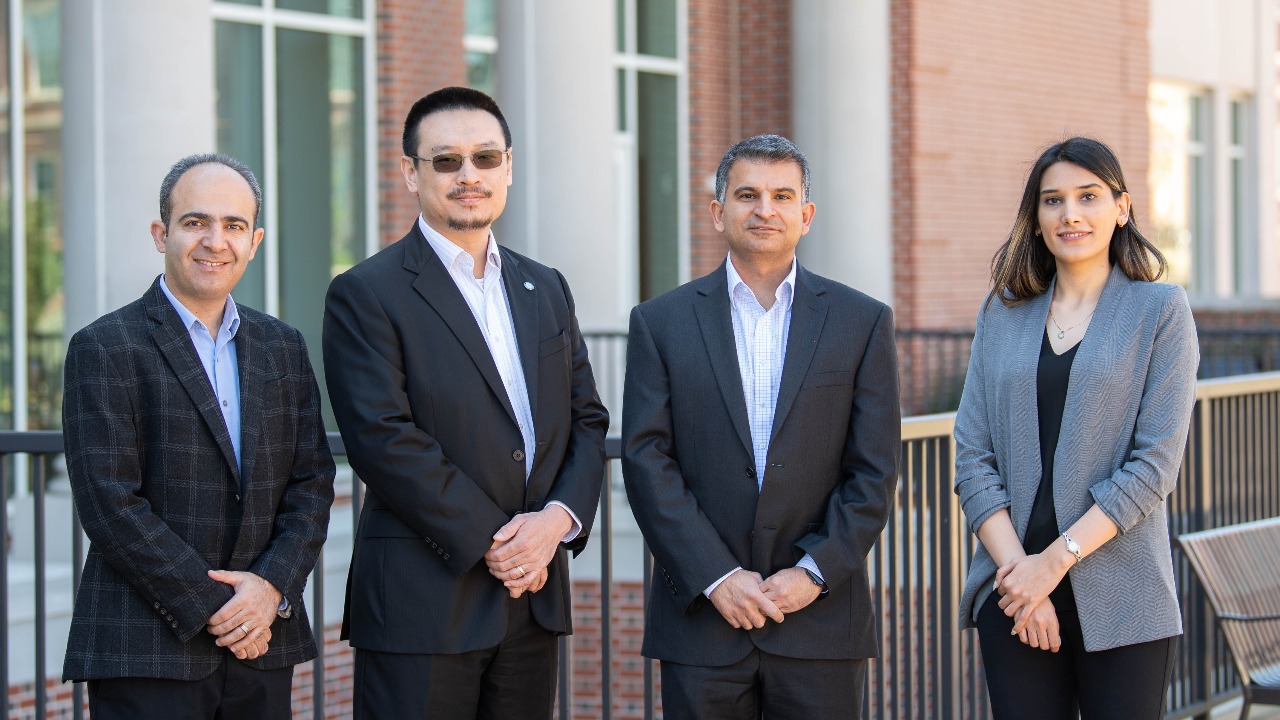
Co-principal investigators, pictured from left to right, are professors Masoud Mahjouri-Samani, Shuai Shao, Nima Shamsaei and Elham Mirkoohi.
Categories: Engineering, Manufacturing, Advanced Systems
Student passionate about inspiring women to pursue education in computer science
Sanjana Ruhani Tammim received her first computer when she was just five years old and instantly fell in love with the endless possibilities it offered.
“I was very engaged with this computer from the day I received it,” she said. “My family wanted me to become a doctor as they believed that would be a suitable profession for me as a female. But I loved computers and I wanted to be an engineer. With computers, you can choose your own path.”
Not only did Tammim, a first-year doctoral student in computer science and software engineering, choose her own path – she’s passionate about helping young women pursue their computer education dreams and open pathways of their own.
“I dreamed about working with computers,” said Tammim, who earned undergraduate and master’s degrees in information technology from Jahangirnagar University in Bangladesh. “Not all women in my country envision themselves as engineers, however. I was privileged to choose the career path I wanted. Therefore, my vision and passion are to encourage women beyond race, color and backgrounds to pursue their dreams.”
Tammim works as a graduate research and teaching assistant in the college’s Laboratory for Education and Assistive Technology directed by Daniela Marghitu. She was invited to develop her skills as a computer scientist and collaborate with experienced professionals at the prestigious 2022 Computing Research Association Grad Cohort for Women April 21-23 in New Orleans.
“It is a great honor to attend this notable graduate cohort for women in computer science and engineering and I am confident this cohort will provide me with tremendous opportunities to meet people and build networks who have similar interests,” Tammim said. “Moreover, I will enjoy face-to-face, insightful learning moments from fellow female researchers and mentors. I am thrilled to meet a diverse group of women who, I am assured, will support me to believe that I am not alone and will encourage me to thrive on my PhD journey.”
Grad Cohort for Women attendees will spend two days interacting with 20 senior female computing-related researchers and professionals, who will share pertinent information on graduate school survival skills, as well as more personal information and insights about their experiences. The workshop will include a mix of formal presentations and informal discussions and social events.
“Women at the conference, like me, will gather to motivate students, share their experiences and research topics,” Tammim said. “We will learn fresh ideas that we can apply to our own academic careers and learn how we can follow their examples. I also look forward to learning from peer students.”
Tammim hopes to learn fresh approaches she can apply to her own research: developing systems for assistive technology.
“I am currently working on developing learning systems that help children with special needs,” said Tammim, already an experienced classroom lecturer, who desires a full-time academic role once her doctorate is completed. “Some of these tools include augmented reality and virtual reality. I began this research last semester. There’s still a long way to go.”
BY JOE McADORY
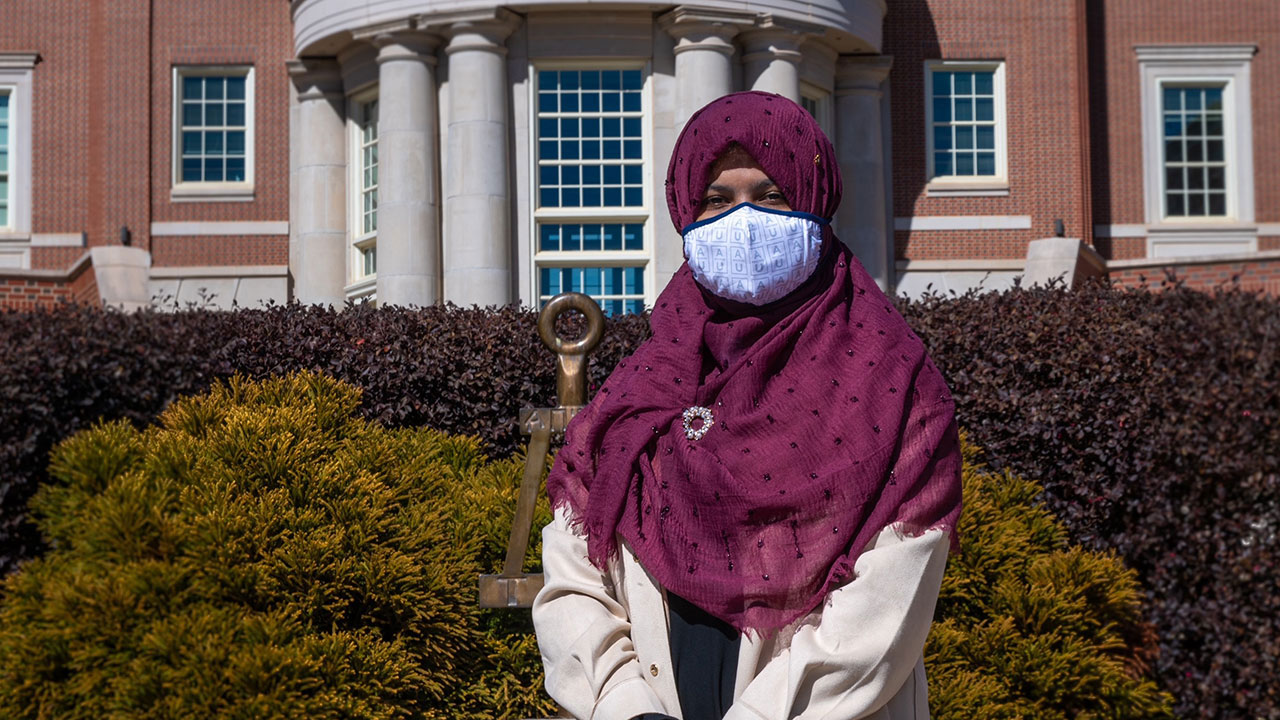
Sanjana Ruhani Tammim
Categories: Engineering, Science, Technology, Engineering and Mathematics (STEM), Graduate Student Research
Auburn University’s ‘AI-driven Innovations in Agriculture’ conference to feature some of Southeast’s top agricultural experts
The Auburn University College of Agriculture and its fellow land-grant universities throughout the Southeast are jointly hosting a conference next month to address the potential of artificial intelligence, robotics and automation in agriculture.
Titled “Envisioning 2050 in the Southeast: AI-driven Innovations in Agriculture,” the conference will be held March 9-11 at The Hotel at Auburn University and Dixon Conference Center thanks to funding from the USDA National Institute of Food and Agriculture.
“The Envisioning 2050 in the Southeast: AI-Driven Innovations in Agriculture conference will bring together academics, industry and stakeholders to share their expertise and develop a vision for the future,” said Arthur Appel, interim associate dean of research for the College of Agriculture. “Conference speakers include AI leaders from IBM, NIVIDIA and John Deere, as well as academics from across the country. Attendees will be able to learn about the depth and breadth of AI in agriculture from the experts who are making the promise of AI a reality.”
The caliber of speakers scheduled to attend is one of the highlights of this conference, according to co-organizer Brenda Ortiz, professor and Alabama Extension specialist in the Department of Crop, Soil and Environmental Sciences at Auburn.
Speakers include Hendrik Hamann, a Distinguished Research Staff Member and Chief Scientist for the Future of Climate in IBM Research; Mark Chaney, engineering manager of the automation delivery teams at Intelligent Solutions Group at John Deere; Steven Thomson, a national program leader with the USDA National Institute Food and Agriculture; and dozens more.
Auburn President-elect Christopher Roberts, currently dean of the Samuel Ginn College of Engineering, will give the opening remarks.
Ortiz said the invited speakers from academia, the federal government and the industry will share their work in areas such as crop production, plant and animal breeding, climate, agricultural extension, pedagogy, food processing and supply chain, livestock management and more.
“This conference is multipurpose,” Ortiz said. “The primary purpose is to share knowledge, expertise and resources among Southeastern universities, stakeholders and industries on artificial intelligence-driven innovations that can be applied to agriculture.”
This two-and-a-half-day conference will include a combination of invited plenary presentations, two-panel sessions and breakout sessions that include invited oral presentations, facilitated working sessions, a poster session and a pre-conference workshop on current and advanced AI-driven data analysis.
Kati Migliaccio, co-organizer of the conference and professor and chair of the Department of Agricultural and Biological Engineering at the University of Florida, said the timing of the conference is perfect.
“This is an opportune time to host this conference focusing on AI in agriculture in the Southeast because of the resources invested in AI, the state of innovation of AI in agriculture and the critical need to adapt agriculture for current world challenges, including labor, nutrition, energy and climate,” she said.
“It brings together expertise from all sectors—industry, academics, government and stakeholders—to focus on agriculture innovation with AI, particularly for the Southeast. The format of this conference was created to allow for knowledge sharing, as well as networking and greater exploration for future endeavors. Attending this event will provide the ‘spark’ for further innovation and collaboration among those with AI and agricultural interests across professions and across disciplines.”
Ortiz said in-person participation will allow networking, discussions for future collaboration and first-hand knowledge exchange. For those who cannot attend in person, a limited, virtual option will be available that will include access to plenary and breakout sessions.
More details and registration information are available on the conference website.
BY KRISTEN BOWMAN
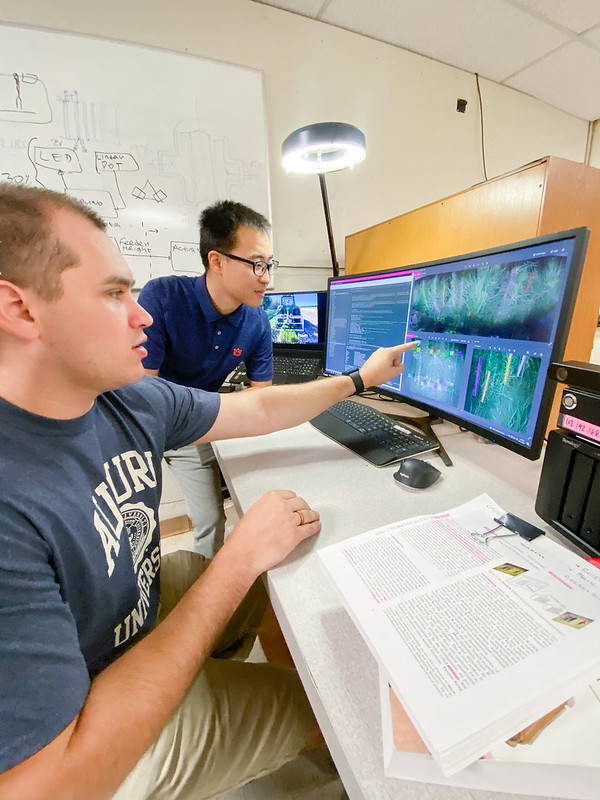
Auburn University will host the conference, “Envisioning 2050 in the Southeast: AI-driven Innovations in Agriculture,” March 9-11 at The Hotel at Auburn University and Dixon Conference Center. Pictured are doctoral student Rafael Bidese Puhl, left, and Assistant Professor of Biosystems Engineering Yin Bao.
Categories: Engineering, Food Systems, Agriculture
Auburn University ranks among top U.S. research institutions in National Science Foundation survey
Auburn University is ranked in the top 11% of U.S. research institutions, coming in at No. 100 among 915 universities, according to the National Science Foundation’s recent Higher Education Research and Development, or HERD, Survey. Among public universities, Auburn is ranked No. 67 out of 415 institutions.
“Auburn’s ranking among the nation’s top 100 research institutions is a significant accomplishment,” said James Weyhenmeyer, Auburn vice president for Research and Economic Development. “Our innovative researchers have remained committed to engaging in impactful research even during the challenges of a global pandemic. Their dedication and ingenuity are reflected in Auburn’s rise in the rankings.”
The annual survey, compiled from fiscal year 2020 research expenditures, saw Auburn climb five spots from the previous year.
During the five-year period of 2016-20, Auburn’s annual research expenditures increased from $152.4 million to $255.3 million, resulting in a rankings jump of 26 places. Among Southeastern Conference universities, Auburn had the highest percentage increase in research expenditures over that time period: a jump of 67.5%.
For universities without a medical school, Auburn ranked No. 61 nationally and No. 1 in the state. Auburn also was highly ranked nationally in a number of specific fields of research, including No. 54 in engineering, No. 54 in mathematics and statistics and No. 93 in physical sciences, all tops in the state.
A hallmark of Auburn’s research is the diversity of its funded projects. Highlights include:
- The Samuel Ginn College of Engineering’s National Center for Additive Manufacturing Excellence is working with NASA under a $14.6 million contract to develop additive manufacturing processes for improving the performance of liquid rocket engines. The center also is using $6 million from the Federal Aviation Administration to advance the use of additive manufacturing in commercial aviation.
- The state of Alabama recently awarded Auburn $1.6 million for four sustainability projects: advanced jet and diesel fuels from woody biomass grown in the state and from waste plastics; biotechnology that enables conversion of organic wastes into bioplastics; 3D printable polymer smart machines, such as actuators, sensors and energy harvesters; and a new, high-value aquaculture feed binder made from soybean hulls.
- The National Institutes of Health recently awarded Auburn a $1.5 million Research Training Initiative for Student Enhancement grant to broaden participation in the sciences for traditionally underrepresented students.
In addition to the high ranking in the NSF HERD Survey, Auburn is recognized by the Carnegie Classification of Institutions of Higher Education as a top-level, or R1, university with “very high research activity.”
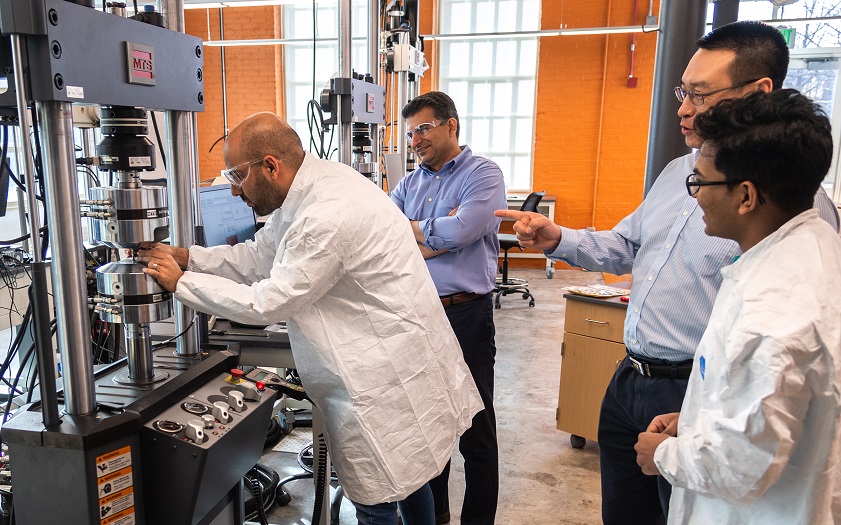
Auburn University is ranked in the top 11% of U.S. research institutions, coming in at No. 100 among 915 universities, according to the National Science Foundation’s recent Higher Education Research and Development, or HERD, Survey. Pictured, scientists in Auburn’s National Center for Additive Manufacturing Excellence conduct fatigue testing on an additively manufactured part.
Categories: Engineering, Energy & the Environment, Auburn In the News, Manufacturing, Advanced Systems, Agriculture
Auburn University expands research footprint in Huntsville with purchase of former LogiCore facility
Auburn University is expanding its footprint in the Huntsville area with the acquisition of a new research facility located in the Cummings Research Park.
The university reached an agreement with LogiCore Corp. to purchase two buildings with more than 40,000 square feet of space situated on a nine-acre parcel of land at 345 Voyager Way NW. Located within minutes of Redstone Arsenal’s Gate 9 entrance and near many of Auburn’s research partners in defense, aerospace, law enforcement and biotech sectors, the facility will significantly expand Auburn’s presence in the fastest-growing tech hub in the country, establishing a permanent foundation from which Auburn can leverage its regional reputation and thriving public-private partnerships into unprecedented national prestige and influence.
Designed to foster a new era of interagency and interdisciplinary collaboration necessary to secure the nation into the next century, the facility will serve as a state-of-the-art research space, collaboration engine and conference center that will focus Auburn’s expertise and next-generation resources on the defense, aerospace and law enforcement agencies that call Redstone Arsenal home.
“We are excited about the opportunities to expand our research capability in Huntsville, which is home to many members of the Auburn Family and our valued research partners,” said Auburn University President Jay Gogue. “We hope this facility will quickly become the primary connection for the Huntsville community to Auburn University and will be the go-to destination for government and industry entities around Redstone looking to meet in an unbiased, trusted location for technical interfacing.”
Plans for the facility include configurable laboratories for on-site research and development in critical technology areas; meeting spaces and engagement opportunities for government, industry and academia to allow for in-person and virtual meetings; exercises and more.
“This is a defining moment for Auburn University and the Huntsville community where today meets tomorrow,” said Jim Weyhenmeyer, university vice president for research and economic development. “This facility will fast-track connections that change the world through our valued research partnerships.”
LogiCore — a technology services company providing life cycle logistics, systems and software engineering, cybersecurity, information technology, programmatics and training services — operated the facility from 2015-22. Samples Properties acted as the university’s broker for this transaction.
“May the footprint be used to advance research excellence for students for years to come,” said Miranda Frost, LogiCore founder and CEO.
Media Contact: Austin Phillips, adp0019@auburn.edu, 334.844.2444
BY AUSTIN PHILLIPS

The 40,000 square-foot facility is located within minutes of Redstone Arsenal.
Categories: Engineering, Cyber, Security, Manufacturing
Chemical engineering professor becomes Auburn’s first senior member of National Academy of Inventors
Jin Wang is the first faculty member at Auburn University to be named a senior member of the National Academy of Inventors, or NAI.
The Walt and Virginia Woltosz Professor in Auburn’s Samuel Ginn College of Engineering is also Auburn’s first female faculty member to be named a senior member or a fellow of NAI. Since starting its fellows program in 2013, NAI has named seven Auburn faculty members to its esteemed list; all seven are male. Fa Foster Dai, the Godbold Endowed Chair Professor in the Department of Electrical and Computer Engineering, joined the 2021 fellows’ class.
“It’s wonderful to be recognized as an inventor and, in particular, a female inventor,” said Wang, who has been a part of the Department of Chemical Engineering since 2006. “I hope this will encourage female students to pursue technology innovation.”
Wang joins 82 other academic inventors from 41 research universities as part of the 2022 senior membership class. They are named inventors on more than 1,093 issued U.S. patents. Wang is also one of 40 female and/or minority inventors in the class.
Wang’s research innovations center around effectively converting waste into value-added products. In particular, she focuses on using a novel microbial coculture to convert agriculture waste-derived biogas into bioplastic feedstock. This method has shown great potential to reduce greenhouse gas emission and water and land pollution.
Throughout her academic career, Wang’s expertise in biogas conversion and sustainable food production have earned her national and international recognition, and her technological innovations have resulted in numerous patents granted by the U.S. Patent and Trademark Office.
“I hope and believe that our research will open new doors to greatly improve the sustainability of U.S. food production and help promote the transition of the current linear food production model (take-make-dispose) into a sustainable, circular and bio-based economy that minimizes, or even eliminates, waste generation,” she said.
NAI senior members are active faculty, scientists and administrators from NAI member institutions who have demonstrated remarkable innovation producing technologies that have brought, or aspire to bring, real impact on the welfare of society.
BY CASSIE MONTGOMERY
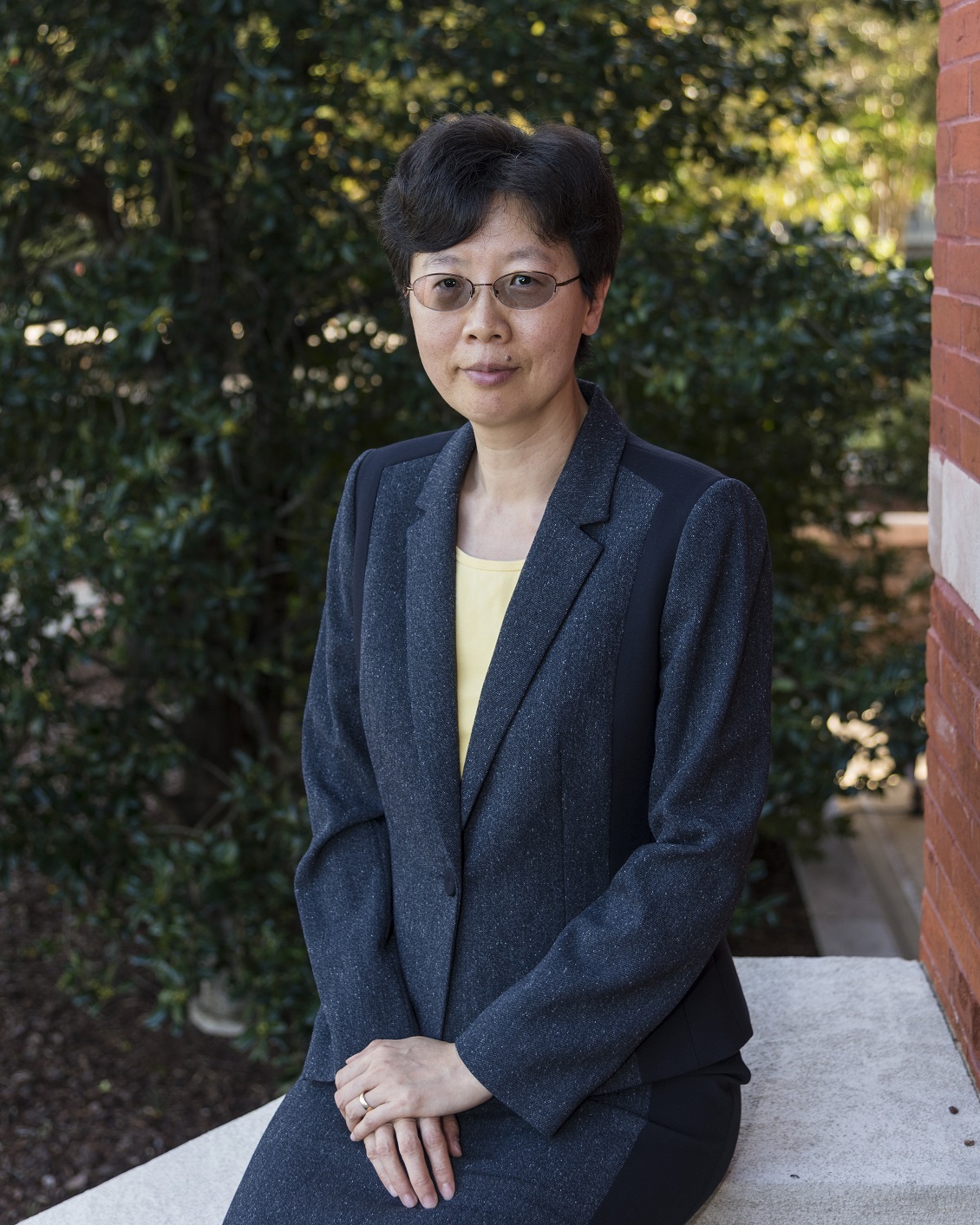
Jin Wang, the Walt and Virginia Woltosz Professor in Auburn’s Samuel Ginn College of Engineering, is the first Auburn faculty member to be named a senior member of the National Academy of Inventors.
Categories: Engineering, Energy & the Environment, Manufacturing, Agriculture
Aerospace professor earns Office of Naval Research Young Investigator Award
Umberto Saetti believes modeling and simulating rotor downwash can develop safer helicopter landings at sea. The Office of Naval Research believes in Umberto Saetti.
Saetti, assistant professor in aerospace engineering, was recently granted a $510,000 Young Investigator Award from the Office of Naval Research (ONR YIP) for his upcoming study, “Linearized High-Fidelity Aeromechanics for Extended Reality Simulation and Control of Shipboard Interactions.”
Two Virtual Reality (VR) motion-base flight simulators, which will be used in the study, were recently installed within Auburn’s Extended Reality Flight Simulation and Control Lab.
The purpose of the project: find solutions that will preserve human life and prevent millions of dollars in aircraft from being destroyed. Take two recent U.S. Naval accidents, for example. In 2017 off the coast of Queensland, Australia, an MV-22B Osprey crashed into the ship-deck of the USS Green Bay, killing three and injuring many more. A near-miss occurred in 2015 when an Osprey landed short of the flight deck of an amphibious transport ship and hung off the rear of the boat. There were no injuries, this time.
The problem: heavy rotor downwash which, when interacting with the ship deck, hull or water surface, recirculate into the rotor, causing increased power demands and adverse handling effects.
“Modeling of the rotor downwash and its interactions with the sea surface, ship deck, and ship superstructures is key in understanding the adverse effect on the flight dynamics and performance of rotorcraft in shipboard operations,” Saetti said. “Moreover, the ability to replicate these interactions in real-time flight simulations could help supplement the creation of Launch and Recovery Envelopes (LREs) aboard naval vessels. This virtual approach to LRE certification could be used to replace potentially unsafe live simulations during a dynamic interface (DI) period.”
Saetti offered three components to the proposal: modeling, control of the downwash interactions, and pilot simulations in full-body haptic feedback suits (to occur in year three).
“If we are able to model and replicate these conditions in a simulator, we can gain more insight of what’s causing these effects,” he said. “And also, it would be in a safe environment.”
But how are these real-life characteristics replicated in a simulator?
“Suppose that you have your rotorcraft flying above the ship deck or sea surface. Then, to model the interaction of the rotor wake with the ship deck or the sea surface, you will need to introduce a phantom, or image, helicopter rotor below that surface as if the ship deck or water surface were a mirror. In general, the more surfaces you add that constitute obstacles you are trying to model, the more simulations get complex. In spite of this complexity, the proposal is not only modeling these interactions, but also try and find a way to simplify them.
“Once we know the interactions that occur, you will get basically use a procedure called linearization. We're making these complicated relationships between the rotorcraft and ship deck much easier, mathematically speaking, so that they're constituted by simple algebraic relationships.”
Saetti is no stranger to helicopter research for the U.S. military. His study, “State-Variable Implementation and Linearization of Simulations with Multi-Disciplinary Aeromechanics,” with the Vertical Lift Research Center of Excellence, earned a five-year, $571,000 contract last summer.
BY JOE McADORY
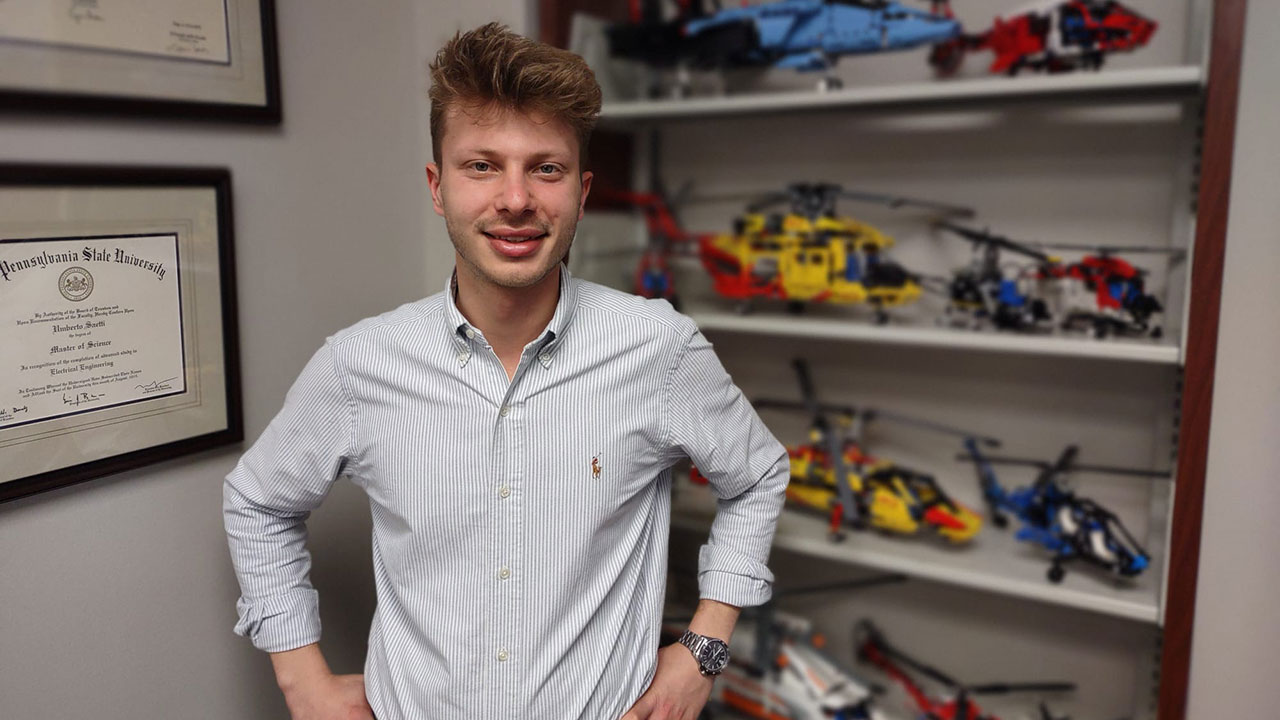
Umberto Saetti has a passion for helicopters and finding new ways to enhance safety.
Categories: Engineering, Transportation
Aerospace professors successfully partner with U.S. Air Force Agility Prime Program
Three aerospace engineering professors – Imon Chakraborty, Roy Hartfield, and Ehsan Taheri -- successfully concluded a $150,000 Phase I Small Business Technology Transfer (SBIR-STTR) project funded by the U.S. Air Force Agility Prime program.
Their project, “Electric Extended Range Airship with Modular Payload,” designed and implemented propulsion and flight control systems for a 40-foot-long airship, which serves as a test bed for larger, future applications such as near space applications.
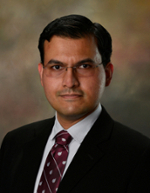
Imon Chakraborty
In conjunction with Skyborne Technology, an emerging leader in the development and production of helium-filled airships, and the prime contractor, Research in Flight, an Auburn, Alabama company dedicated to developing new aerodynamic and hydrodynamic analysis tools for aerospace engineering applications, the test concluded with a successful flight demonstration of the subscale prototype on Sept. 29 in rural Wewahitchka, Fla.
“The idea was to make novel, or unconventional air vehicles that have to meet specific criteria,” said Chakraborty, an assistant professor at the college. “These vehicles should not require a runway, so you cannot develop an airplane. It should be something that takes off vertically. The ultimate intent is to have a full-scale version that can carry people with a very strong focus on electricity.”
Hartfield, the Walt and Virginia Woltosz Professor at the Samuel Ginn College of Engineering, said the ship’s modular payload represents the potential for multiple uses.

Roy Hartfield
“We could perform such tasks as launching UAVs from the airship, capturing the UAVs from the airship, and resupplying the charge to the UAVs. There are many other applications, but that’s the best technology we’re trying to demonstrate; future development with Skyborne Technology will also focus on teaching the edge of space,” stated Hartfield.
The Skyborne Airship Technology is highly versatile with many derivative applications, but airborne UAV support augmented by detachable tethers is the cutting-edge technology that we are developing through this AFWERX program.”
Research in Flight CEO Vivek Ahuja added, “Immediately applicable derivative applications for airships of this class including monitoring for border control, or carrying payload with high-resolution cameras for other surveillance opportunities.”
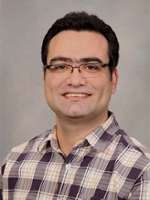
Ehsan Taheri
The prototype will serve as a benchmark for testing and data collection in preparation for a proposed full-scale vehicle with expansive logistics and support applications. Insights gained from the tests will allow computer-simulated scenario modeling to assess the tether-airship platform for future applications.
Though Skyborne Technology fabricated the airship, Chakraborty and Taheri, assistant professors at the college, developed and manufactured the propulsion and control systems and flew the airship during the test flight.
“The airship uses four propulsive units,” said Chakraborty, a licensed pilot. “They gimbal and can move in two axes, pitch and yaw – there’s one at each corner of the ship. You also have someone controlling the airship from the ground. You can’t expect them to control all of the propulsive units individually. That’s demanding way too much. You can only have a small number of controls that a human being can be expected to manipulate. Those controls must then translate into gimbal angles for each of these four and revolutions per minute for each of the propellers.
“Ehsan and I simulated this on a computer as a test, then Ehsan has a super-smart graduate student, Yevhenii “Jack” Kovryzhenko, who is excellent with hardware and methods to interface software programs with hardware that we used for the project.”
The project transcends the successful airship test in Florida. It also showcases Auburn aerospace’s strength as a research leader in higher education.
Of 1,615 project proposals sent to the Air Force Agility Prime Program, only 274 were funded. Six of Auburn’s project proposals from Taheri, Chakraborty and Hartfield were funded.
“This shows that the faculty at the college’s Department of Aerospace Engineering has a lot of innovative ideas and is very active,” said Taheri. “We can complete the tasks from simulation to experiment for all of the components needed for these types of projects.”
Hartfield added, “We took a polished approach and put a lot of effort into verifying what we put in the proposal, having a well-thought-out plan with technical goals that matched the programming goals.”
Media Contact: Joe McAdory, jem0040@auburn.edu, 334.844.3447
BY JOE McADORY
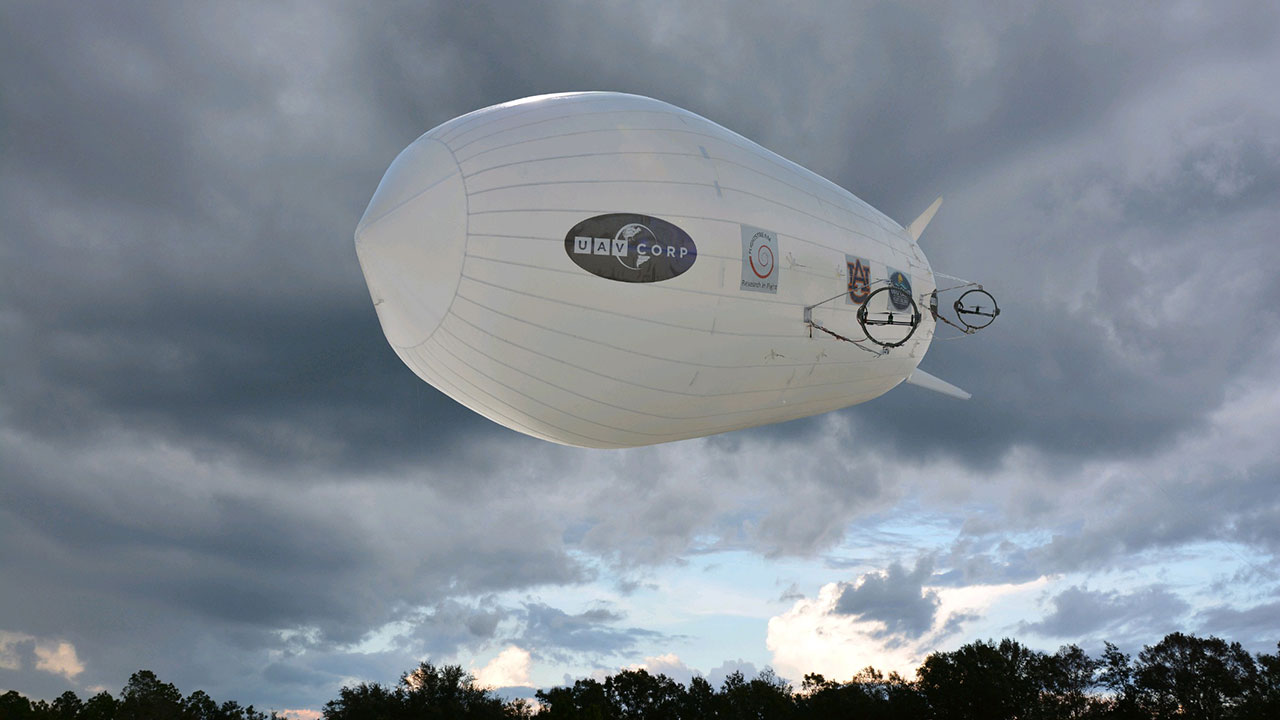
The airship's modular payload provides an opportunity for multiple uses.
Categories: Engineering, Transportation
Auburn’s Zhao wins Creative Research and Scholarship Award at 2021 Auburn University Faculty Awards
He still remembers it. It was exciting. Dongye “Don” Zhao was a graduate research assistant at Lehigh University. He got an email from a researcher interested in a paper he’d written a year earlier—his first published in a journal—on trace contaminant sorption through polymeric ligand exchange.
“We had developed a new absorbent material that could selectively remove toxic chemicals such as arsenic and selenate from water,” said Zhao, the Auburn Alumni Engineering Council Professor of Civil and Environmental Engineering. “I was told they would be citing my paper, which made me feel that we were doing something useful. A great encouragement. That was my first citation.”
That was in 1996—210 Science Citation Index-indexed journal papers and 14,529 citations ago. That’s not a typo—it’s some of the hardest work Andy Nowak has ever seen.
“Don is not an average professor,” said Nowak, the Elton and Lois G. Huff Eminent Scholar Chair for the Department of Civil and Environmental Engineering. “He’s a very intelligent individual, but the reason he is so productive is because he’s such a hard worker. When he first got here in 2001, oftentimes it would be late in the evening, and we would be the only two people in the building. He would still be working. Obviously, there are many examples of how that sort of hard work paid off.”
The latest? The Creative Research and Scholarship Award, intended to recognize the research achievements and contributions of Auburn University faculty and part of the 2021 Faculty Awards. Nowak says he can think of few professors more deserving of the honor than Zhao.
In his 20 years at Auburn’s Samuel Ginn College of Engineering, Zhao has led, co-led or participated in more than 40 projects with external funding totaling nearly $9 million. He also has served as a major professor for more than 25 doctoral students and more than 25 Master of Science students, landed editorships for two major international journals—“Frontiers of Environmental Science & Engineering” and “Water Environment Research”—and delivered 124 invited seminars and keynote presentations across the globe.
In addition to putting him among the top 1% of the world’s highly cited researchers, according to Clarivate and the Stanford List of World’s Top Scientists, Zhao’s innovative work in the field of environmental remediation has earned him seven U.S. patents, including several for nanotechnologies developed for the treatment and decontamination of soil and groundwater. He was the first in the world to develop polysaccharide-stabilized nanoparticles for in situ degradation of chlorinated solvents in soil and groundwater, as well as the first to conceptualize in-situ immobilization of metals/metalloids/radionuclides in soil and groundwater using stabilized nanoparticles.
“It is amazing to apply the latest science to developing new cost-effective technologies to clean up contaminated waters,” said Zhao, the Godbold Endowed Chair Professor in the Department of Electrical and Computer Engineering. “It protects human health and also saves millions of dollars in water treatment costs. So, I am pleased that our work, which stems from the many talented students and visiting scholars, has had some impact on the field.”
“Some impact” is one way to put it. Zhao’s work birthed an entirely new research avenue into technologies for remediation of contaminated soil and groundwater using stabilized nanoparticles and inspired literally hundreds of thousands of additional studies. According to Google Scholar, one of the two journal papers reflecting those particular innovations—which resulted in two patents—has been cited 914 times. The other has been cited 721 times.
Not that Zhao is counting. If he did, he wouldn’t have time to change the world. Over the past five years, his research has averaged five citations per day; 12 have come in the past 24 hours.
“But, yes,” Zhao said, smiling, “I’ll still get on Google Scholar every now and then.”
BY JEREMY HENDERSON

Dongye "Don" Zhao, a longtime professor in the Samuel Ginn College of Engineering, was one of two winners of the Creative Research and Scholarship Award at Auburn University's 2021 Faculty Awards.
Categories: Engineering, Energy & the Environment
Auburn projects receive $1.6 million in latest round of state research development funding
Auburn University has been awarded $1.6 million in research grants from the state of Alabama through the Alabama Research Development and Enhancement Fund.
The grants, administered by the Alabama Department of Economic and Community Affairs, are earmarked for research and development of four different sustainability projects housed in the Samuel Ginn College of Engineering.
Of the $1,590,470 total awarded to Auburn:
-
$727,677 goes to research for producing jet and diesel fuels from woody biomass and waste plastics;
-
$294,008 goes to researching and assessing the economic feasibility of converting organic wastes into bioplastics;
-
$268,353 goes to conducting research involving polymer smart machines; and
-
$300,432 goes to developing soybean hulls as a means to keep aquaculture feed pellets in mass, resulting in less waste and more intake by farm-raised fish and shellfish.
The researchers include principal investigator Sushil Adhikari, professor and director of the Center for Bioenergy and Bioproducts, Department of Biosystems Engineering; principal investigator Peter He, associate professor, and co-principal investigators Jin Wang and Mario Eden, Department of Chemical Engineering; principal investigator Jason Clark, assistant professor, Department of Electrical and Computer Engineering; and principal investigator Zhihua Jiang, assistant professor and director of the Alabama Center for Paper and Bioresource Engineering Science, and co-principal investigator Burak Aksoy, Department of Chemical Engineering.
Summaries of the projects are as follows:
Title: Advanced Liquid Transportation Fuels from Co-Liquefaction of Forest Biomass and Waste Plastics
Investigator: Adhikari
The goal is to advance economic development in the state and nationally through reinvigoration of natural resource-based industries and to establish new industries based on advanced liquid fuels from woody biomass grown in the state and the waste plastics collected from cities. Woody biomass prevalent in Alabama will be co-liquefied with waste plastics using a pyrolysis technology, which will then be subjected to hydrogen treatment to produce jet and diesel fuels.
Title: A Novel Biotechnology That Converts Agricultural and Municipal Waste into Bioplastics
Investigators: He, Wang and Eden
Alabama is one of the top agricultural producing states in the U.S., with annual agricultural exports exceeding $1 billion. As a result, there is a significant amount of organic wastes produced in the state, and Alabama ranks 14th among all states in terms of biogas generation potential from organic waste through anaerobic digestion, or AD. These organic wastes represent an underutilized renewable feedstock for biofuel and biochemical production. This project aims at researching and assessing the economic feasibility of converting organic wastes into bioplastics. Specifically, the project will develop and optimize a prototype of a patent-pending biotechnology that enables the conversion of organic wastes into bioplastics, and to assess its technical and economic feasibility at scale through techno-economic analysis, or TEA.
In the proposed technology, a microalgae-methanotroph coculture will be cultivated in a novel patent-pending circulation coculture biofilm photobioreactor, or CCBP, to convert biogas (both methane and carbon dioxide) derived from organic wastes into microbial biomass while simultaneously recover chemicals from AD effluent to produce treated clean water. The produced mixed microbial biomass can be economically processed to produce high-value bioplastics that is in rising demand. The project will advance the progress of the patent pending biotechnology towards commercialization, which has potential to create many new jobs in the state of Alabama.
Title: Polymer Smart Machines
Investigator: Clark
This project aims to research and develop the foundational building blocks of “polymechatronics,” which will enable the realization of 3D printable polymer smart machines. The research includes designing, fabricating, modeling and characterizing piezopolymer versions of traditional active mechanical and electrical building blocks such as actuators, sensors, energy harvesters, energy storers and analog and digital circuit elements. Compared to traditional devices, polymer smart machines are expected to be less expensive, easier to manufacture, biocompatible, recyclable, use less energy, operate over a larger range of temperatures, offer new functionalities and be more environmentally friendly.
Title: A Novel and Sustainable Feed Binder from Soybean Hulls: Scale-Up Production and Evaluation
Investigators: Jiang and Aksoy
The goal is to establish a low-cost, high-value and novel compound feed binder from soybean hulls, a co-product of soybean processing for oil and meal production. The specific objectives of this project are: 1) to scale-up feed binder production to around 1.5 kg/hour and optimize process conditions for production; and 2) to scale-up shrimp feeding trials simulating shrimp farming operations at a commercial shrimp operation in west Alabama.
Successful completion of this project will establish a high-value and novel compound feed binder platform using 100% soy hulls that is ready for commercial scale productions and applications with significant economic and environmental benefits: It will significantly enhance competitive advantage of shrimp farmers in Alabama by reducing their feed costs. This will, in turn, improve employment opportunities in seafood farming and processing sector, making more local seafood and services available to the citizens of Alabama. In addition, it will also significantly improve water quality by reducing leached nutrients.
Auburn is among five Alabama universities and one research institution sharing in grants totaling $4.85 million, according to the announcement released recently by the Alabama governor’s office.
“Our universities and research institutions in Alabama truly impact the world, and I am proud to continue investing in the important work they are doing,” Gov. Kay Ivey said. “This $4.85 million is an investment in the future of Alabama and the future of research.”
BY MITCH EMMONS

Samford Hall
Categories: Engineering, Energy & the Environment, Food Systems, Auburn In the News, Agriculture
Interdisciplinary research team receives NSF grant to develop waste-reducing, biodegradable paper electronics
Current electronics and electronics device printing technologies rely on wet processes such as screen or inkjet printing that require extensive development of inks or solutions with limited sources of functional materials. These inks are often impure, incompatible with biodegradable paper substrates, and printed on eco-unfriendly plastics leading to a huge amount of electronic waste (or E-waste).
Masoud Mahjouri-Samani, the principal investigator and assistant professor in electrical and computer engineering, and a team of scientists representing multi-disciplinary units and centers from Auburn University were awarded a $499,940 grant by the National Science Foundation for their project, “Multi-material Manufacturing of Eco-Friendly and Biodegradable Paper-Based Flexible Hybrid Electronics.”
Co-principal investigators are Shuai Shao, associate professor in mechanical engineering, Nima Shamsaei, Philpott-WestPoint Stevens Distinguished Professor in mechanical engineering and Director of the National Center for Additive Manufacturing Excellence (NCAME), and Michael C. Hamilton, James B. Davis Professor in electrical and computer engineering and director of the Alabama Micro/Nano Science and Technology Center (AMNSTC).
“The team’s extensive expertise in theory and computation, additive manufacturing, mechanical reliability, and micro/nanoelectronics, not only guarantees the success of this research but also opens up a new opportunity for future collaborative activities,” said Shao.
Hamilton believes the infrastructure is well suited for such research activities. “The AMNSTC provides valuable scientific and technical expertise as well as international visibility to this work,” he added. “AMNSTC also provides access to a wide variety of electronic device fabrication and characterization instrumentation that allows us to test the functionality of our printed devices.”
“We are definitely excited about this interdisciplinary research activity among the NCAME, AMNSTC, as well as the departments of Electrical and Computer Engineering and Mechanical Engineering at Auburn University,” said Shamsaei. “At NCAME, most of our capabilities lie in fabricating metallic materials with micro-level accuracy. This research is not only a new addition to the center’s activity and field of additive manufacturing but also can potentially grow into a new field of Functional Additive Nanomanufacturing here at Auburn.”
The team’s research demonstrates a transformative dry additive nanomanufacturing approach that enables the printing of eco-friendly papertronics. Currently, substrates in use are made of polymers, which never decompose.
“What are you going to do with those products, many of which are designed for specific short-term tasks such as smart package labeling and sensors, once you have used them?” Mahjouri-Samani asked. “Throw them away, right? But, again, they don’t decompose. They aren’t biodegradable because they aren’t printed on biodegradable substrates such as paper. We can help prevent a huge waste problem.”
How can electronics and sensors be printed on biodegradable papers? The team has that answer, too.
“We have designed and developed the first printer in the world that can print on any substrate,” said Mahjouri-Samani, who dubbed this creation an “additive nanomanufacturing printer.”
This printing method is based on what he deems an “in-situ and on-demand” generation of nanoparticles by pulsed laser ablation of target materials at atmospheric pressure and at room temperature. These nanoparticles flow out of a nozzle creating a stream of nanoparticles. A substrate is then placed under the nozzle on a programmable X-Y-Z stage where these nanoparticles can be laser sintered (compacted into a solid mass) and crystallized in real-time to form desired patterns and devices.
“Overall, our additive nanomanufacturing process is capable of printing a wide range of dry, contamination-free, multi-layered, and intrinsically pure structures,” he added. “This approach also offers the flexibility of printing onto different types of substrates, including metals, ceramics, plastics, paper and flexible substrates such as thermoplastic polymers.”
Mahjouri-Samani said the primary purpose of this research effort is “to make a positive impact on humanity. We want planet Earth to be as clean as possible for this generation, and generations to follow,” he added. “If we can develop another way to reduce waste, then we are making a positive difference.”
Media Contact: Joe McAdory, jem0040@auburn.edu, 334.844.3447
BY JOE McADORY

From the left: Michael C. Hamilton, Shuai Shao, Masoud Mahjouri-Samani and Nima Shamsaei.
Categories: Engineering, Manufacturing, Advanced Systems
USDA grants Auburn engineers $500K for timber, steel structure research
Four Auburn Engineering professors from three different disciplines will research the best way to design a sustainable, economically feasible building structure using timber and steel thanks to nearly $500K in federal and industry funds, including $237,000 from the USDA Forest Service Wood Innovations Grant program.
The goal of the project is not only to provide an environmentally friendly construction option but also a structurally efficient and widely applicable building method.
According to Kadir Sener, assistant professor of civil and environmental engineering and co-principal investigator on the project, steel and timber are ideal structural partners. The combination of steel and timber have a degree of structural performance that the individual materials could never reach, he said.
“In order to open the market for mass timber, we wanted to use it with steel structures, since timber alone is not economically feasible for high-rise buildings,” Sener said. “We ended up designing a very sustainable construction system, too.”
The current construction practice for mid-rise steel frame buildings uses 60-70% of the overall material in the floor alone. Additionally, most of the material used is concrete — an inexpensive, yet environmentally detrimental material which leaves a substantial carbon footprint. For this reason, cross-laminated timber panels will replace the concrete in this new design.
“Southern pine, the species that we are going to be using, is stronger than most other species of wood commonly used,” said David Rouche, assistant professor of civil and environmental engineering and specialist in the cross-laminated timber (CLT) component of the project. “It grows quickly, it's abundant in the southeast and the industry is growing so there is a lot of great potential for it in regards to this project.”
Replacing concrete floor elements with CLT panels has numerous advantages, such as significant reduction in structure weight, which will reduce gravity and seismic demands, reducing the carbon footprint by eliminating cement production and replacing time-consuming concrete field work. Additionally, it offers more convenient repair methods, providing more favorable structural performance and being a more sustainable option during repurposing or deconstruction.
The industry partners providing financial and technical support for the project include American Institute of Steel Construction, the Softwood Lumber Boards, the American Wood Council and Simpson Strong-Tie.
Media Contact: Jeremy Henderson, jdh0123@auburn.edu, 334-844-3591
BY VIRGINIA SPEIRS
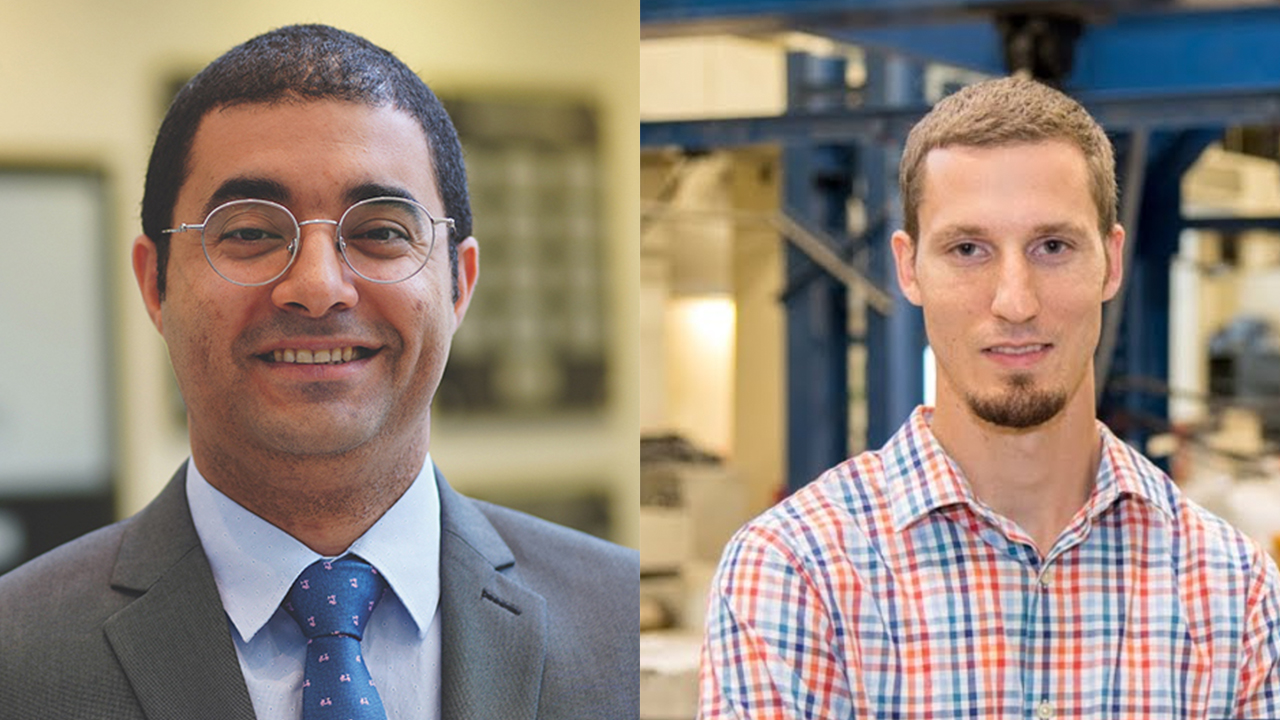
Pictured from the left: Kadir Sener and David Roueche
Categories: Engineering, Energy & the Environment, Manufacturing
Auburn to expand Industry 4.0 research, education, training and innovation capabilities with $7.2M DoD award
The Interdisciplinary Center for Advanced Manufacturing Systems (ICAMS) at Auburn University is the recipient of a $7.2 million award from the Department of Defense’s (DoD) Office of Industrial Policy’s Industrial Base Analysis and Sustainment (IBAS) Program to encourage small and medium-sized manufacturers to adopt the advanced technologies associated with Industry 4.0, or smart manufacturing. The award will allow the center to increase efforts to improve the skills of the next generation of engineers and the existing workforce to take full advantage of those technologies in their operations.
“With this award, we are building upon our original mission and expanding our research and services in key areas,” said Gregory Harris, ICAMS director and associate professor in the Samuel Ginn College of Engineering's Department of Industrial and Systems Engineering.
Gregory Purdy, assistant professor of industrial and systems engineering, is a co-principal investigator on the award and an ICAMS collaborating faculty member. He explained that one new focus of the funding will be devoted to the creation of the nation’s first cyber-physical manufacturing range (CpMR) housed on a university campus. The CpMR will provide a testbed to research, test, demonstrate and teach the technologies and processes to significantly improve technology adoption in small and medium-sized manufacturers and overcome the fear of malicious cyber activity in their systems.
“Industry 4.0 driven manufacturing environments are a collection of different equipment and technologies that increase the potential attack surface for malicious cyberattacks,” Purdy explained. “We are trying to understand what vulnerabilities exist in these systems and the potential impacts of a cyberattack on both the process and resulting part. However, it is not feasible to simulate attacks on a production resource that is used day-in and day-out.”
The CpMR solves this dilemma by incorporating modern manufacturing technologies in an Industry 4.0 ecosystem with current generation automation, thereby allowing a safe environment for testing and evaluating malicious cyber activity in an Industry 4.0 smart manufacturing platform.
“It allows students, researchers and other professionals to execute attacks and see what the outcome is in a state-of-the-art machining cell,” Purdy said. “I could unleash the most potent and sophisticated attack that I have and completely make everything go haywire, without endangering a key production resource.”
The new funding will also support the purchase of additional manufacturing equipment to further develop an Industry 4.0 manufacturing environment, including the creation of a digital manufacturing demonstration cell. The manufacturing and metrology cell will demonstrate the full digital manufacturing process flow starting by automatically scanning a subject and creating a point cloud from the 3D scan that is converted into a solid model. This model will be sent to a vertical machining center that will produce the part. A robotic arm will remove the part from the mill and deliver it to a coordinate measurement machine. The automated inspection process will then confirm the part matches the reference design. The digital manufacturing demonstration cell will be able to continuously run a product and show the capability of the connected enterprise.
“This additional equipment is going to make us more capable and allow us the ability to better showcase digital manufacturing demonstrations on site,” Harris explained. “We can show that this artifact can go all the way from design through production with little to no human intervention, really highlighting digital manufacturing capabilities. Manufacturers will be able to relate to that and say, ‘if they can do that with this artifact, I can envision what I’m trying to do using this technology.’”
According to Harris, another of those key areas of service is a “Path to the Plains” partnership with Southern Union State Community College (SU), where SU students can take Auburn University courses while completing their associate degree. The partnership also outlines a plan for a graduate certificate in advanced manufacturing and an advanced manufacturing minor. Additionally, any Auburn undergraduate student will be able to obtain a certificate in mechatronics through the partnership with SU. Participating students will be assisted by scholarships to support their educational success.
“The ability at ICAMS to create tailored programs upon request from industry allows local industries to adapt to changing industry trends much more easily using existing personnel,” said Lewis Payton, ICAMS associate director and professor of practice in the Department of Industrial and Systems Engineering. “Auburn students in the new manufacturing minor will also be graduating with hands-on experience using industrial grade equipment. ICAMS is poised to become the premier fabrication and teaching laboratory in the Southeast, including future expansion into the area of die fabrication and repair.”
Other ICAMS services that will be introduced or enhanced with this recent award include:
- An annual call for undergraduate and graduate research proposals to be evaluated and awarded to those that expand the demonstration, education training and research capabilities of ICAMS.
- Research into inspection technologies to understand how to provide real-time quality data as feedback to adjust equipment controls to continuously improve control limits and reduce the possibility of a defective product.
- The creation of a smart cyber-physical sensing, modeling and control digital twin infrastructure with augmented and mixed reality.
- The extension of annual survey research for three additional years, for a total of a five-year study into technology adoption amid small and medium-sized manufacturers.
“ICAMS represents a major, transformational change in the areas of outreach, innovation and education at Auburn University,” Payton said. “By early in 2022, ICAMS will be the most capable prototyping laboratory within the state of Alabama for innovation, creating a unique opportunity for companies and for student design teams across the campus.”
Adele Ratcliff, director of the DoD IBAS program which is funding the effort, commended the ICAMS project’s goal of reducing the barriers against Industry 4.0 technologies being implemented in small and medium manufacturing company operations.
“The ICAMS comprehensive approach of providing technical support, project planning, skilled workers and a way to test new technology’s real-life impact on production flows is a forward-leaning model that has been proven to overcome technology-adoption hesitancy in companies of all sizes,” Ratcliff said. “Larger manufacturers have the resources to fund these risk reduction activities on their own. By partnering with small and medium manufacturers, ICAMS allows these companies to have confidence that their technology implementation projects will provide valuable process and capability improvements with limited operational risk.”
ICAMS, which launched in 2018, has formed and strengthened relationships with the city of Auburn Industrial Development Board and the Alabama Community College System. Through these relationships, ICAMS has doubled its facility footprint from 10,000 square-feet to 20,000 square-feet, providing adequate space for its dedicated operations, and utilized the space to educate and train students and industry personnel to use the advanced manufacturing technologies and capabilities to benefit the DoD and its supporting manufacturing sector.
Media Contact: Cassie Montgomery, cmontgomery@auburn.edu, 334.844.3668
BY CASSIE MONTGOMERY
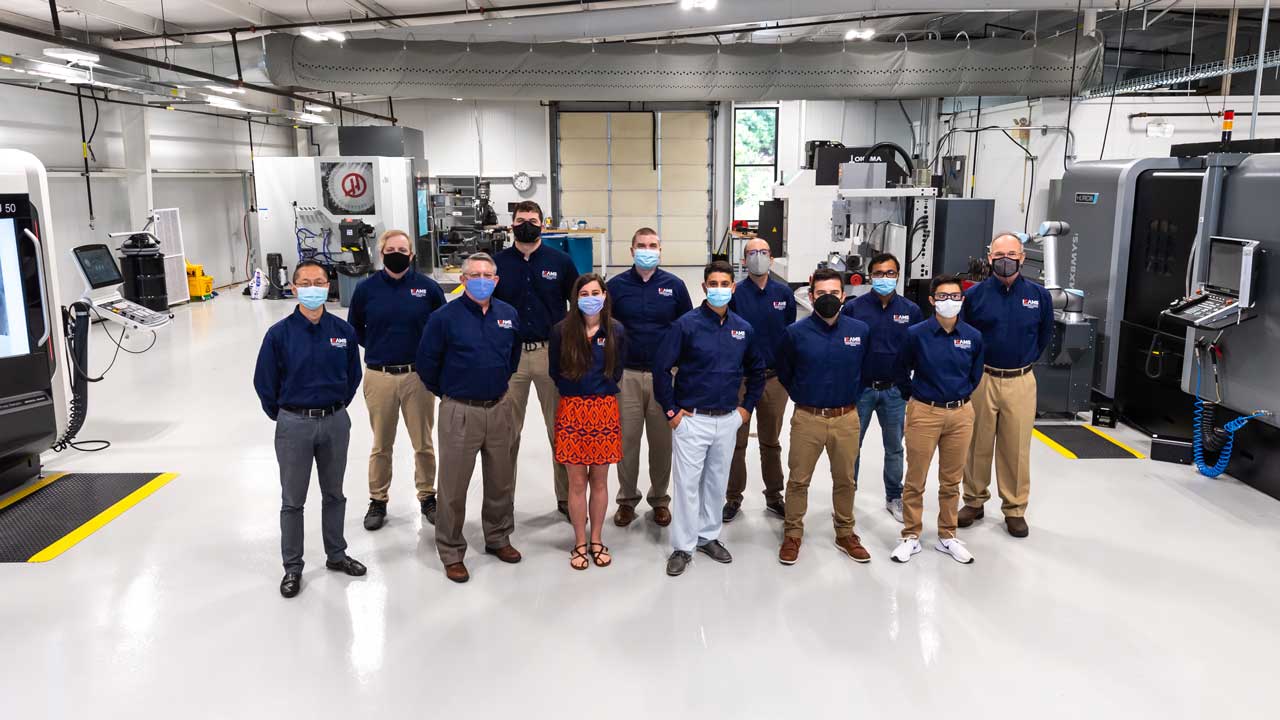
ICAMS collaborating faculty members and graduate students.
Categories: Engineering, Manufacturing, Advanced Systems
Auburn-led research team develops biochemical breakthrough for renewable fatty acid ester production
Ongoing, Auburn-led research into biofuel and biochemical production just got a lot more eyes on it.
Supported by a $2 million U.S. Department of Energy award issued in 2018, as well as funding from the USDA's National Institute of Food and Agriculture, insights from the project led by PI Yi Wang, associate professor in Auburn's Department of Biosystems Engineering, were recently highlighted by the journal Nature Communications — for obvious reasons.
"Our findings represent a breakthrough," Wang said. "Production of biofuels and biochemicals from renewable resources through biological routes is environmentally sustainable and friendly, and is considered as a possible solution for the pressing issues related to energy crisis and environmental deterioration."
Despite tremendous investment over the past decades, developing viable efficient bioprocesses that can achieve high production has been much easier said than done.
Thanks to Wang's team, that's not as true as it once was.
"We have developed a potentially economically viable bioprocess that can produce fatty acid esters at unprecedented levels," Wang said.
Naturally occurring short-chain, fatty acid esters are the source of the sweet smell in fruits, such as apples, bananas, pineapples and strawberries. They typically find applications as artificial flavorings in food and cosmetics, as well as high-grade solvents used for manufacturing plastics and resins. In addition, esters could be a fuel of desirable properties which can serve as an additive to gasoline, diesel and even jet fuels.
"Conventionally, esters are produced from petrochemical-based fatty acids and alcohols through the chemical catalysis process called Fischer esterification," Wang said. "The reaction consumes a large amount of energy and generates tremendous wastes, and thus is not environmentally friendly.
"To avoid these problems, we chose to engineer non-pathogenic and safe Clostridium bacterial strains known for their natural ability to produce building blocks that could be used for ester synthesis. We envisage Clostridium as the ideal platform for ester production with such native genomic pathways.”
Clostridium strains, a group of bacteria that thrive in the absence of oxygen, are notoriously difficult to manipulate genetically. Wang’s group is pioneering versatile genome engineering tools for clostridia based on a new technology called CRISPR, putting his lab at the forefront of this particular research.
“To convert these building blocks into esters, we introduced genetic pathways from fruits or yeast responsible for ester synthesis,” Wang said. “With further systematic genome engineering, we were able to produce esters called butyl acetate and butyl butyrate at the highest bioproduction and lowest cost levels to date. And we did it using corn stover – a renewable product made from the stalk, leaves, husks and tassels that are left after corn is harvested – as the raw material."
According to Wang, a techno-economic analysis is essential to evaluate the economic practicality of a new bioprocess before it can be scaled up for commercialization.
“Our analysis suggested that butyl acetate production from corn stover through the developed bioprocess in this study could be competitive economically,” said Haibo Huang, an associate professor in the Department of Food Science and Technology at Virginia Tech, who led the techno-economic analysis in this study. “With further development, we anticipate economic feasibility of the process at commercial scale.”
The promise of Wang’s engineered strains for economic and environmental benefit have not gone unnoticed. Recently, a small Canadian biotech company engaged Wang to test drive the patent-pending strains. They plan to partner with larger companies to scale up production and advance the ester-based products to market.
“Dr. Wang put a lot of elegant genetic engineering into boosting ester production and that investment of time and talent is starting to pay off.” said Troy Brady, senior licensing officer at Auburn’s Office of Innovation Advancement and Commercialization. “The expectation is that with additional improvements to the strain and the economies of industry-scale production, the process will be more environmentally friendly and less expensive compared to current fossil fuel-derived processes. That translates to a win for everyone.”
Wang’s work has also been featured and highlighted by the editor of Nature Communications as one of the 50 best papers recently published in "Biotechnology and methods."
“We presented a concept of producing high-value and easy-separable end products — esters, like oil, don’t mix well with water and thus can be easily separated from the fermentation broth — as a strategy to improve bioproduction efficiency and economic viability,” Wang said. “Our principle of selecting the most appropriate microbial host for specific bioproduction is also inspiring.”
“I should also emphasize the importance of multidisciplinary collaboration on this work,” Wang said.
In addition to Auburn and Virginia Tech researchers, collaborators from Iowa State University, Tel Aviv University in Israel, Shandong University in China, and University of Science and Technology of China also contributed to the project.
The work was supported by the U.S. Department of Energy’s Office of Energy Efficiency and Renewable Energy through the Co-Optima initiative, through which Wang and collaborators produce bio-based esters to be blended into diesel fuel to reduce soot and greenhouse gas emissions, and to yield cleaner engine operation in cold-weather conditions. The work was also partially supported by USDA's National Institute of Food and Agriculture for bioprocessing organic waste streams into valuable bio-based products to enhance bioeconomy.
Media Contact: Jeremy Henderson, jdh0123@auburn.edu, 334-844-3591
BY JEREMY HENDERSON
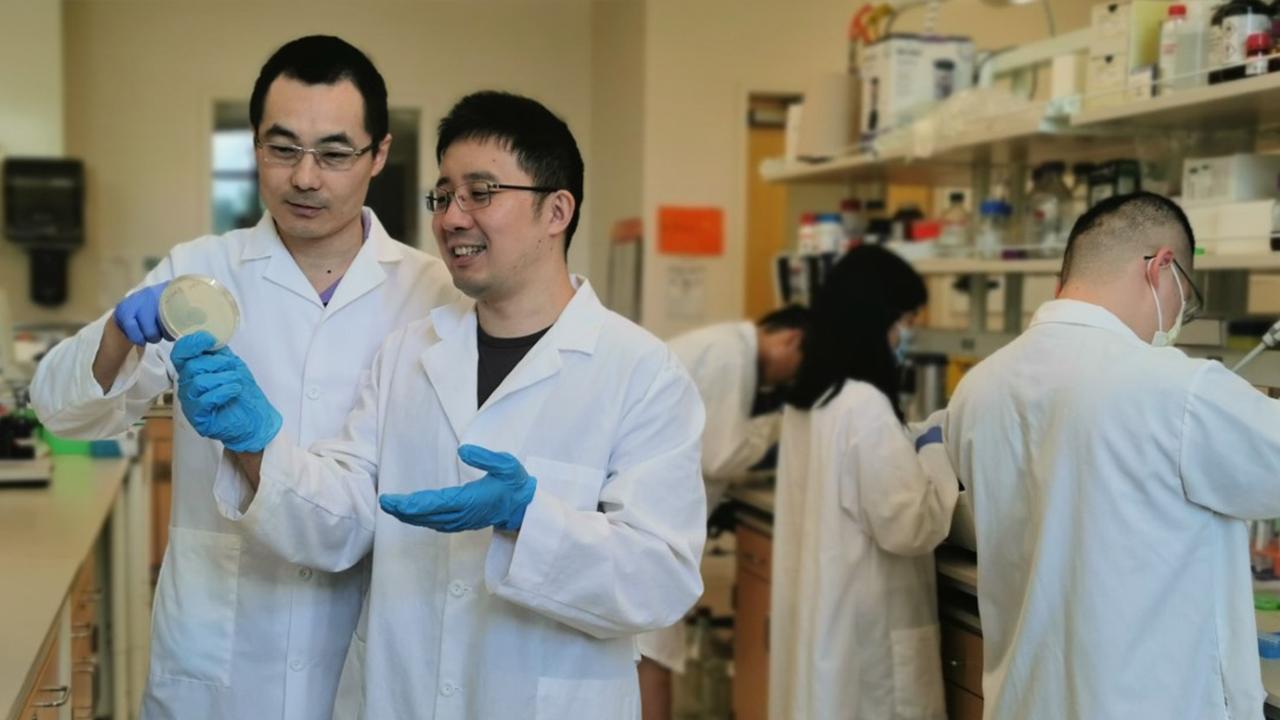
Yi Wang (left), associate professor in the Department of Biosystems Engineering, works with post-doc Yuechao Ma in the lab. The research from Wang’s lab for renewable fatty acid ester production has been recently published and highlighted by the journal of Nature Communications.
Categories: Engineering, Energy & the Environment
Research to revolutionize wireless engineering earns $320,000 grant
Recent advances in deep learning stimulated a wave of research that were applied to various problems within wireless communications and networking.
However, the wireless research community has not addressed one of the critical challenges in this arena – how to facilitate the acquisition of sufficient data in order to train and validate complex learning models.
Shiwen Mao, professor and Earl C. Williams Eminent Scholar in Electrical and Computer Engineering, hopes to bridge this gap.
Mao’s work, “Data Augmentation and Adaptive Learning for Next Generation Wireless Spectrum Systems,” was awarded $320,000 by the National Science Foundation in hopes of devising innovative approaches that enable wireless researchers and practitioners to acquire data more efficiently, at a reduced cost and utilize existing data more effectively.
Mao is the principal investigator on a team that includes researchers from Temple University and California State University-Sacramento with total funding of $1.2 million.
Findings from this project are expected to fuel future breakthroughs in wireless technology research by making deep learning models more widely applicable.
“Machine learning has been very successful in many disciplines, but as wireless engineers, we want to bring machine learning in to address problems,” Mao said. “For example, how do you use the spectrum? How do you design wireless protocols for your cell phone, or home Wi-Fi, and make them more efficient? What we want to do is apply deep learning and artificial intelligence to address these spectrum-related problems.”
But for machines to learn, ever-elusive data must be captured. Preliminary investigations are making progress, however. The team used conditional generative adversarial network (CGAN) to augment the originally small dataset with new labeled data of the same distribution for automatic modulation recognition with a focus on real features on hardware and the impact of channels.
“Our preliminary study verifies that our proposed approach can effectively generate synthesized in-phase and quadrature (I/Q) data with the same distribution of the original data,” Mao added. “More importantly, our findings validate that the conditional generative adversarial network-based approach can generate high-quality and high-delivery data sets for different modulation schemes at different signal-to-noise levels.”
Mao, who has served at Auburn since 2006, is also director of the Wireless Engineering Research and Education Center.
“Earning an NSF medium grant is a very competitive process,” he added. “This award is a great recognition of our track record and past contributions.”
BY JOE McADORY
Media Contact: Joe McAdory, jem0040@auburn.edu, 334.844.3447

Shiwen Mao
Categories: Engineering, Advanced Systems
New Auburn University internal awards programs name winners for 2021
Auburn University launched two new pilot internal awards programs in 2021 and has named the program’s first recipients.
The Research Support Program, or RSP, and the Creative Work and Social Impact Scholarship Funding Program, or CWSI, were established by the Office of the Vice President for Research and Economic Development. Both programs provide a competitive internal funding source to support faculty and to provide an opportunity for them to experience a small-scale pilot and refine their projects before competing for larger awards.
“This is a pilot version of a larger intramural award program,” said Bob Holm, associate director of Proposal Services and Faculty Support, the unit that administers the programs. “It enables faculty to participate in a competitive funding program and make improvements to their projects before a commitment to a long-term award program is made. The pilot provides a platform to test what works and what does not.”
The RSP is intended to be an annual cycle funding program to foster the development and growth of innovative and transformational research activities. It builds on faculty expertise, stimulates interdisciplinary collaborations and strengthens seed research activities. It is a strategically focused Auburn investment that promotes promising and impactful new lines of research as well as the growth of collaborative and interdisciplinary teams to build the foundations of science, to overcome scientific and societal challenges and to promote and enhance the quality of life and wellbeing of individuals, groups and communities.
The CWSIS funding program fosters innovation and discovery and builds faculty reputation and competitiveness. Examples of prestigious recognition for CWSIS include: the McArthur Genius Award, the Gates Foundation Award, appointment to the National Council on the Humanities or the National Council on the Arts and an NSF Senior Advisor for Public Access. Disciplines associated with CWSIS include design and the arts, humanities and applicable areas within business, education, social sciences and health and well-being.
As a form of research, creative work poses questions and searches for the answers through iterative processes that demand intellectual rigor and hard work. Related scholarship narrates, analyzes and evaluates the production and products of creative work, or proposes new and innovative approaches to that work, including interdisciplinary collaborations and explorations. The goals of creative work and scholarship are ultimately tied to making significant contributions to a meaningful and dignified quality of life.
Social impact scholarship involves research that is specifically aimed at societal challenges and values both theoretical and applied domains to produce core knowledge and address persistent and complex issues to create a better world and improve the lives of all individuals. Research in this domain often engages a diversity of stakeholders with the goal of bringing beneficial effects and valuable changes to the economy, society, education, public policy, health and quality of life.
This year’s recipients are:
Research Support Program
Brian Albanese, College of Liberal Arts, $24,999.34; “Neurobehavioral sensitivity to negative reinforcement in suicide”;
Benjamin Bush, College of Architecture, Design and Construction, $24,987; “EX4C: Next Generation Blood and Vaccine Transport for Combat, Austere and Challenging Environments”; co-investigators: Lorenzo Cremaschi, Samuel Ginn College of Engineering; Joellen Sefton, College of Education; David Crumbley, School of Nursing;
Nathaniel Hardy, College of Agriculture, $25,000, “The Evolution of Virulence in Xylella fastidiosa”; co-investigator: Leonardo De La Fuente, College of Agriculture;
Amal Khalil Kaddoumi, Harrison School of Pharmacy, $25,000; “Amylin role in Alzheimer’s disease”; Co-Investigator: Ahmed Hamid, College of Sciences and Mathematics;
Peng Li, Samuel Ginn College of Engineering, $25,000, “Probing Novel Quantum Phases in van der Waals Magnet Fe5GeTe2”; co-investigators: Masoud Mahjouri-Samani, Samuel Ginn College of Engineering; Wencan Jin, College of Sciences and Mathematics;
Panagiotis Mistriotis, Samuel Ginn College of Engineering, $25,000; “Bioengineering tools to uncover the mechanisms of human mesenchymal stem cell migration”;
Kristina Neely, College of Education, $25,000; “Inhibitory Motor Control in Adults with ADHD,” co-investigator: William Murrah, College of Education;
Janna Willoughby, School of Forestry and Wildlife Sciences, $24,998; “How do environmental and genetic effects interact to determine individual fitness?”; co-investigators: Avril Harder, School of Forestry and Wildlife Sciences; Lana Narine, School of Forestry and Wildlife Sciences; Kelly Dunning, School of Forestry and Wildlife Sciences.
Creative Work and Social Impact Scholarship Funding Program
Junshan Liu, College of Architecture, Design and Construction, $20,000; “Digitally Preserving and Re-presenting Alabama’s Rosenwald Schools”; co-investigators: Gorham Bird, College of Architecture, Design and Construction; Richard Burt, College of Architecture, Design and Construction;
Alicia Powers, College of Human Sciences, $19,191.92; “A clinical-community pediatric wellness initiative to manage and prevent cardiometabolic diseases in children with limited resources in Alabama”; co-investigators: Jeanna Sewell, Harrison School of Pharmacy; Felicia Tuggle, College of Liberal Arts, Sarah Watts, School of Nursing.
More information about these and other funding support programs supported by the AU Office of the Vice President for Research and Economic Development can be found by clicking here.
BY MITCH EMMONS
Categories: Engineering, Energy & the Environment, Health Sciences, Food Systems, External Engagement, OVPRED, Creative Scholarship, Life Sciences, Agriculture
Biosystems faculty to train undergraduate researchers in bioprocessing with NSF award
Reduce, reuse, recycle. Especially if you can research cool, new ways to do it.
A team of Auburn faculty recently received a grant from the National Science Foundation to host a research experiences for undergraduates (REU) site, a program in which a university hosts 10 undergraduate students to do scientific research each summer. The project will focus on ways to convert waste into new and useful products through bioprocessing.
Led by Brendan Higgins, assistant professor of biosystems engineering and Sushil Adhikari, Alumni Professor of biosystems engineering and director of the Center for Bioenergy and Bioproducts, the 10-week program will be offered to a selection of students from a pool of undergraduate applicants studying at universities around the nation, who will each be paired to work directly with an Auburn University faculty member.
“The purpose of our site is to train them in research focused on converting waste materials and waste products back into products of value,” Higgins said. “So we have a team of faculty across the university who do research in this area, and we have four projects that the students will engage in.”
The program received $391,099 from NSF, with a focus on giving opportunities to underrepresented students. Students from around the country who go to universities that do not have research programs will have priority when it comes to this program, Higgins said.
“NSF’s goal when they created this program was to maximize the diversity of students that are able to experience research,” Higgins said. “We’re particularly targeting students who might not otherwise have the opportunity to do this.”
Students will do research either in a lab or in the field, depending on what kind of work is necessary for the individual project, Higgins said. Most of the 10-week period will be dedicated to research. A smaller amount of time, however, will be dedicated to professional development.
“The students are going to be learning how to become a researcher,” Higgins said. “Another theme of our site is teamwork. The communication aspect of science is also a big component.”
To do that, students will be encouraged to co-author a paper about their research with their faculty mentor, Higgins said.
“I kind of have this viewpoint that if you didn’t tell someone you did something, you didn’t do it,” Higgins said. “Also, publishing is really part of the scientific process. Telling people what you’ve discovered is really important.”
Some of the projects that the students will be working on include: making sensors for disease detection out of waste biomass, making adhesive out of discarded plant matter and upgrading agricultural waste water into protein. All of these projects will be significant in helping convert waste into useful products, which will help our planet long-term, Higgins said.
“The most impactful outcome we want from an REU site is a change in perception among the students,” Higgins said. “We want to know how the attitudes of our students changed throughout the program, and if they began to see themselves as a researcher during this program. Our hope is that this will reinforce and strengthen the desire in our students to continue their research career.”
The application for this REU site will open in September.
Media Contact: Cassie Montgomery, cmontgomery@auburn.edu, 334.844.3668
BY VIRGINIA SPEIRS
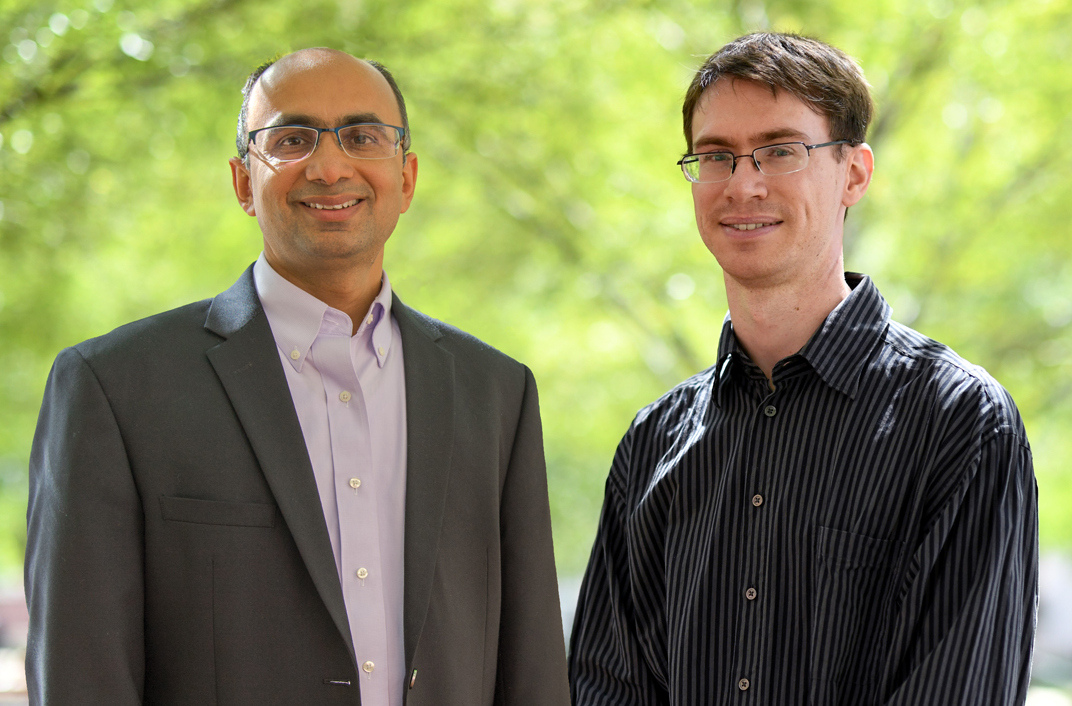
Sushil Adhikari and Brendan Higgins
Categories: Engineering, Energy & the Environment, Food Systems, Undergraduate Research, Agriculture
Auburn’s pathogen detection technology may improve food, water safety applications
A pathogen detection system that rapidly isolates contaminants in large liquid volumes may enable improvements for food and water safety applications.
Developed by researchers in the Department of Materials Engineering in the Samuel Ginn College of Engineering at Auburn University, the technology uses magnetoelastic sensors that, when placed in a magnetic field, resonate to indicate the presence of a pathogen. Professor Emeritus Bryan Chin and McWane Professor ZhongYang “ZY” Cheng have been developing the technology for some 15 years, according to Brian Wright with Auburn’s Office of Innovation Advancement and Commercialization, or IAC.
“This technology has been proven in the laboratory prototype, and the university is seeking a development partner to take this forward through commercialization,” Wright said.
Current pathogen detection methods may take hours, or even require overnight shipping or incubation steps to obtain results, according to the IAC. This magnetic system allows for rapid, specific detection of target pathogens in large volumes of fluid, such as wash water, irrigation water, food effluent and beverages such as milk or fruit juices.
“For example, an entire tank of produce wash water could be examined for salmonella, with results provided in a matter of minutes,” Wright said.
Chin and Cheng have worked together for nearly 20 years at Auburn, but not all of their research and development has been in the realm of detection technology.
“We also have worked on specialized polymer development and in developing actuators that can serve as artificial muscle,” Cheng said.
“We began working on this pathogen detection technology because we were looking for a way to detect a small number of bacteria in a large volume of liquid,” Chin said. “In the food industry, this would enable the examination of large quantities of food for very small numbers of pathogens.”
IAC describes the development: Auburn’s base technology uses magnetoelastic sensors. When placed in a magnetic field, these inexpensive sensors change their resonance frequency based on their mass. Thus, when coated with a bio-recognition element such as phage or antibodies, a binding event can be easily detected based on a change in resonance frequency.
“It is kind of like a sound produced when someone wets the edge of a glass containing an amount of liquid and rubs the edge with their finger,” Wright said. “Changing the amount of liquid in the glass can change the pitch of the sound produced by that rubbing. These magnetoelastic sensors can be coated with a pathogen-specific antibody and tailored to detect a specific pathogen by producing a specific alarm sound.”
The sensors are arranged inside a pipe or other vessel that carries the fluid to be tested. Because they are magnetic and can be arranged in various arrays, they monitor in real time as the flow passes through.
“This system has the advantages of being rapid, highly sensitive and non-clogging, and it is able to be applied to large-volume testing. It also is recoverable, meaning that bound pathogens can be recovered for further analysis,” Wright said.
According to the IAC, this technology has demonstrated its effectiveness for multiple pathogens in multiple sample fluids. The technology also has application for other detection methods, including with smaller samples and on surfaces.
BY MITCH EMMONS
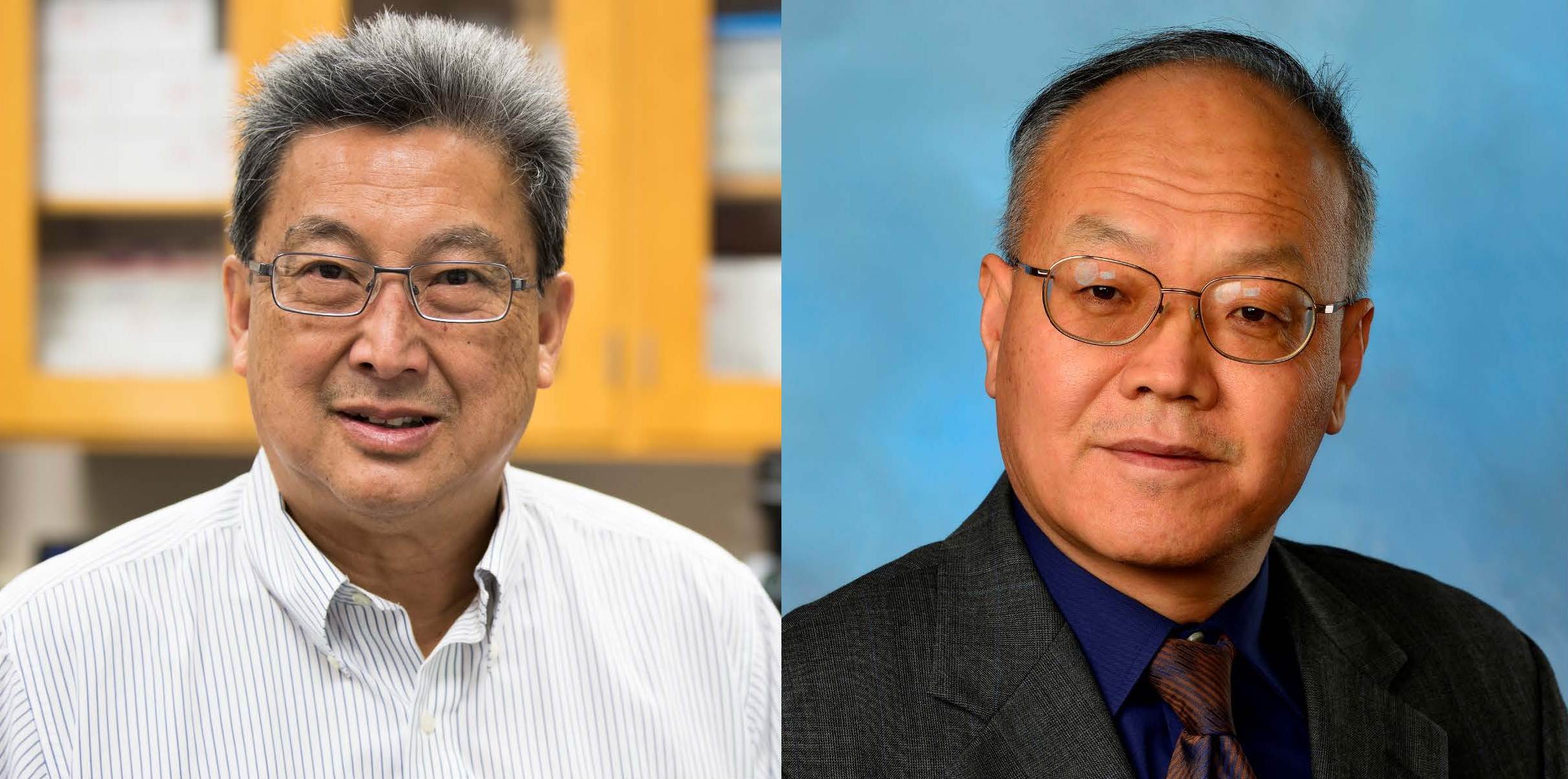
Auburn University Professor Emeritus Bryan Chin (left) is partnering with McWane Professor ZhongYang "ZY" Cheng to develop a pathogen detection system that rapidly isolates contaminants in large liquid volumes and may enable improvements for food and water safety applications.
Categories: Engineering, Energy & the Environment, Food Systems
Fired up: Auburn University researchers studying how controlled burns could help mitigate effects of wildfires
The news is often filled with stories about wildfires and the widespread damage caused when they burn out of control. A combustion expert in Auburn University’s Department of Aerospace Engineering in the Samuel Ginn College of Engineering is studying how the absence of managed control burns could be a significant contributor to this problem.
Assistant Professor David Scarborough and his graduate research assistant, Daniel Stubbs, are conducting studies on the characteristics of wildfire burning and the ways that naturally occurring fuels—largely ground litter vegetation—interact. Their objectives include, among other things, collecting data to support the use of prescribed—or controlled—burning as a means for mitigating the devastation caused by wildland fires. John Kush, a research fellow and forest ecology expert in the School of Forestry and Wildlife Sciences, has also contributed to the ongoing project.
“We are seeking to learn more about how wildfires and the fuels that feed them interact,” Scarborough said. “Forestry researchers are not usually focused on combustion research, so we joined with forestry in this study. We are trying to use our expertise in combustion and fluid dynamics to serve and contribute to a large, important state and regional industry. This project gives us a platform to conduct relevant research and compile valuable data.”
Using their laboratory apparatus—dubbed the Wildland Fire Integrated Research Experiment, or WildFIRE—Scarborough and his team simulate wildland fires under a variety of conditions and fuel compositions. WildFIRE is a laboratory-scale experiment that incorporates high-speed, high-resolution optical diagnostics along with more traditional diagnostics, such as fuel mass consumption, temperature and emissions measurements, to investigate the effects of fuel composition and moisture content, terrain slope and wind speed on the combustion of wildland fuels. WildFIRE is used to obtain important data on such factors as flame height, flame propagation speed, fuel consumption rate, harmful emissions and residual fuel mass to compare with and improve modeling tools that are used to simulate wildfires.
“Our primary focus is on combustion of loblolly pine needles, because this is widespread in Southeastern forests,” Scarborough said. “We are trying to better understand how pine needles burn under a variety of natural conditions. We also employ optical diagnostics to observe flames to visually measure various flame characteristics. By studying these situations under controlled conditions, we are able to gather very accurate data and make predictions about how a wildfire will react under specific situations and conditions.”
Their study has been underway for a number of years. It began around the time of the huge Smoky Mountains wildfire in the Gatlinburg, Tennessee, area in 2016. More recent wildfires in the western United States have spawned further interest within the forestry and fire safety communities, according to Scarborough.
Scarborough noted the economic impact of the forestry industry as the catalyst behind this research: “Forestry is a major part of the Alabama, United States and world economies.”
According to the Alabama Forestry Commission, Alabama forests generate more than $21 billion in revenue annually and provide 122,000 jobs. There are 23 million acres of timberland in Alabama, accounting for 69 percent of the total land area in the state.
Alabama has the third most timberland acreage in the 48 contiguous states, behind only Georgia and Oregon. Wildfire poses significant risks to wildlife, forests, human life and property, not to mention the potential environmental impact in both smoke and harmful, gaseous pollutants, he explained.
“Wildfire was once a common, frequently occurring, natural disturbance initiated most commonly by lightning in numerous ecologically important ecosystems,” Scarborough added. “However, across much of the modern landscape, the fire process has been significantly altered and sometimes eliminated through human intervention. In the absence of fire, leaves, evergreen needles and small sticks accumulate on the forest floor over the period of many years. Furthermore, many invasive woody species such as wax myrtle and yaupon holly grow uncontrolled under the tree canopy.
“Therefore, fire, when it does finally occur, as it most assuredly will, often rages out of control, propagating rapidly with high-heat intensity and long flames as it consumes many years’ worth of accumulated fuel and woody plants.”
Foresters have long known that a practice known as prescribed burning is a valuable and effective fire control application, according to Scarborough, but this practice is not applied as frequently for a number of reasons.
“Prescribed, or controlled, burning is a type of intervention that seeks to provide the benefits of natural wildland fires while minimizing the potential threats to property and other anthropogenic concerns,” Scarborough said. “These prescribed burns, when repeated at frequent intervals, serve to consume the fuel materials on the forest floor while managing invasive species. This, in turn, reduces the amount of potential fuels accumulated on the forest floor.”
Although prescribed fire reduces the risk of damaging wildfire and promotes forest restoration and wildlife habitat, significant regulatory restrictions and public perception pose hurdles to the use of prescribed fire. But better data could help change that.
“The primary reason is that data on wildfire and prescribed burns are difficult to obtain due to the cost and risks posed from fire on the scale at which wildland fires occur,” Scarborough said. “On the opposite end of this spectrum, small-scale laboratory studies fail to include many relevant factors.”
This is where the work of Scarborough and his team is making a valuable contribution. The Wildland Fire Integrated Research Experiment is a wildland fire combustion research facility capable of simulating burn areas up to several square meters, located at Auburn University’s Combustion Physics Laboratory, or AUCPLAB.
“WildFIRE is a unique facility among universities in that it is an intermediate-scale facility bridging the gap between traditional university bench-scale experiments, which are typically within the centimeter scale, and full-scale research fires conducted by governmental laboratories,” Scarborough said.
Burn experiments are conducted by simulating a variety of environmental conditions and incorporating different types of fuel source combinations, he explained.
“Our research provides an intermediate-scale facility designed to obtain data on the combustion and emissions properties of wildland fuels under field-relevant conditions that can be used to validate computer simulations of wildland fires and compare with field wildfire and controlled burn observations,” Scarborough said.
Scarborough noted the ultimate goal of the lab’s research is to develop optical diagnostics that are useful in the study of wildland fires in the field and to provide data that help to validate existing wildfire data on combustion, controlled burning and other characteristics surrounding the nature of wildfires.
Also, their hope is that, by better understanding how wildfires interact with the fuel sources and environmental conditions feeding them, they can help in the development of better ways to mitigate the damage caused by out-of-control wildfires by providing a deeper understanding about the combustion properties of fire and fuels.
BY MITCH EMMONS
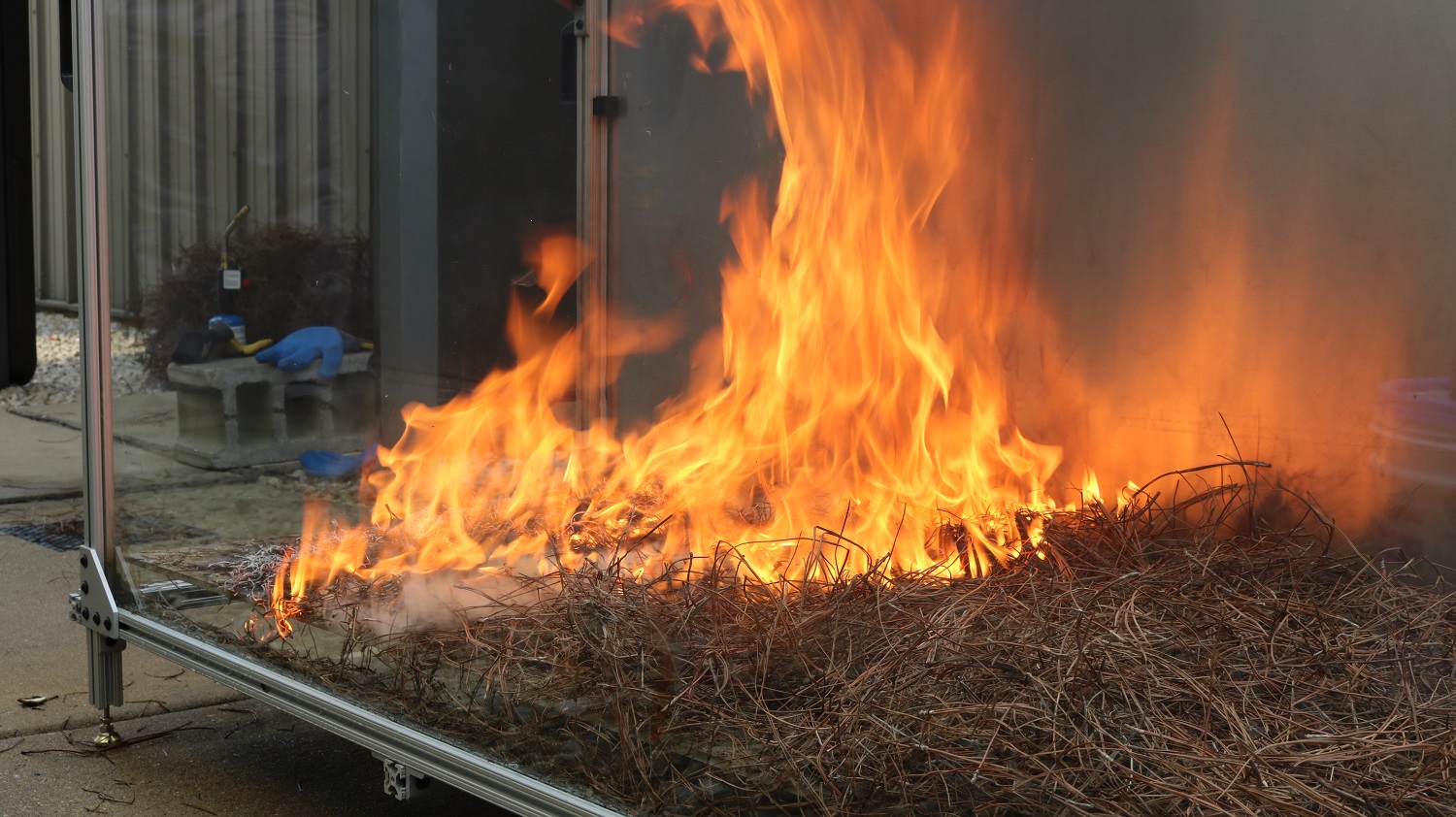 Using their laboratory apparatus—dubbed the Wildland Fire Integrated Research Experiment (WildFIRE)—David Scarborough and research team simulate wildland fires under a variety of conditions and fuel compositions.
Using their laboratory apparatus—dubbed the Wildland Fire Integrated Research Experiment (WildFIRE)—David Scarborough and research team simulate wildland fires under a variety of conditions and fuel compositions.
Categories: Engineering, Energy & the Environment, Advanced Systems
Auburn University senior named Barry M. Goldwater Scholar
Auburn University senior Shelby Wales is now a Barry M. Goldwater Scholar, an honor bestowed on only 410 students nationwide this year. The scholarship is widely considered the most prestigious award in the United States for undergraduates in science, technology, engineering and mathematics.
Wales, originally from Sylacauga, Alabama, is majoring in chemical engineering in the Samuel Ginn College of Engineering and minoring in supply chain management in the Raymond J. Harbert College of Business. Wales was chosen from a field of more than 5,000 college students.
Her research investigates different pathways of implementing 3D printing to investigate geochemical reactions. Wales hopes that, by producing 3D printing models of real rock structures that possess the same reactive properties, further insight may be obtained about the geochemical reactions that occur in conjunction with carbon capture and sequestration.
“I think the community of Goldwater Scholars I have already been connected to will be immensely helpful as I continue learning and begin my career,” Wales said. “I am incredibly honored to have been selected for this scholarship, and I hope it will put me in a position to continue doing work I enjoy with incredible people.”
While Wales spends multiple hours in the lab, she also finds time to participate in a variety of campus organizations, as well as win numerous accolades for her academic success. She was awarded the 2020-21 Undergraduate Research Fellowship; is a member of Alpha Omega Epsilon, Omega Chi Epsilon and Tau Beta Pi honors societies; and has made the Samuel Ginn College of Engineering Dean’s List multiple times.
“I feel so fortunate for the support of peers, mentors and family that surround me,” Wales said. “The Goldwater Scholarship is an individual award, but I have not been alone throughout my undergraduate and research experience.”
Wales noted that Assistant Professor Lauren Beckingham in the Department of Civil and Environmental Engineering has supported her research interests and personal academic journey from the time Wales joined Beckingham’s research group in spring 2019.
“The open, collaborative environment fostered in our research group has been formative toward my perception of the value of scientific research,” Wales said.
During Wales’ internship with Southern Company, Nick Irvin, director of research and development, strategy, advanced nuclear and crosscutting technology, and Lauren Lathem, principal research engineer, continuously prompted her to be intentional and objective when conducting research.
“Their guidance has allowed me to think creatively about the way research is conducted, so that the best solution, or the right solution, can be found,” Wales said.
Alex Sauer, fellowship advisor for Auburn’s National Prestigious Scholarships Program and the Goldwater campus representative, said, “The Goldwater Scholarship is the preeminent undergraduate award of its type in the fields of mathematics, the natural sciences and engineering. We look forward to great things from Shelby and commend her faculty mentors for the pivotal role they have played in her success.”
The Barry M. Goldwater Scholarship Program was established to provide scholarships to outstanding students who intend to pursue careers in mathematics, natural sciences and engineering. Each scholarship covers eligible expenses up to a maximum of $7,500 annually for undergraduate tuition, fees, books and housing.
In awarding scholarships, the foundation considers the nominee's field of study and career objectives, along with the extent to which that individual has the commitment and potential to make a significant contribution to the field of science or engineering.
The National Prestigious Scholarship office at Auburn University, located in the Honors College, works closely with students to identify and help them pursue prestigious scholarships and other national and international awards through informational sessions and one-on-one support during the application process. For more information, contact Alex Sauer at ras0046@auburn.edu.
BY WADE BERRY
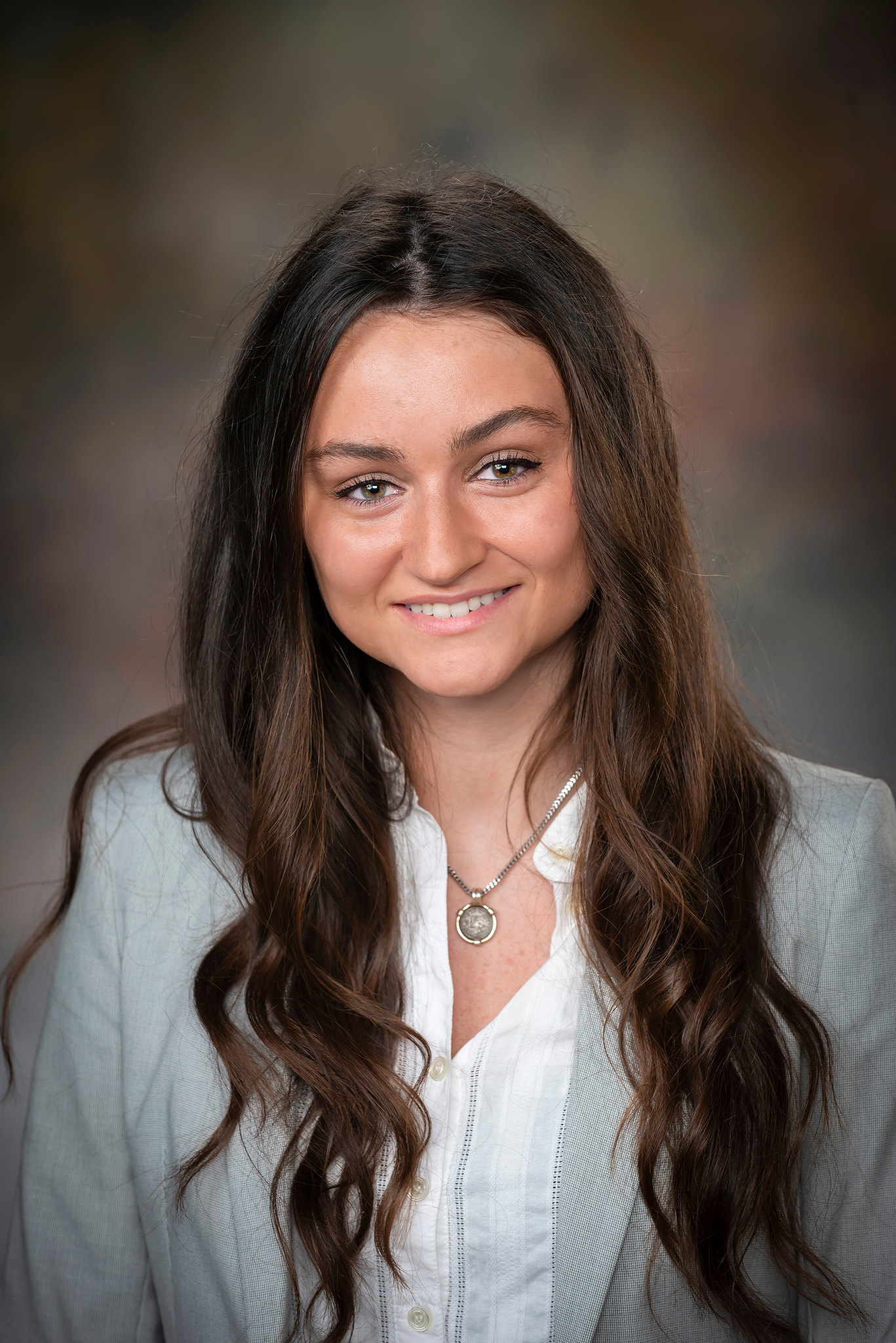
Auburn University senior Shelby Wales is now a Barry M. Goldwater Scholar, an honor bestowed on only 410 students nationwide this year.
Categories: Engineering, Science, Technology, Engineering and Mathematics (STEM), Auburn In the News, Undergraduate Research
NSF grant to allow Auburn professors to study how nanomaterials disperse in liquids
As consumer electronics get smaller, the need for smaller parts, such as batteries, grows. Researchers are actively exploring additive manufacturing techniques to create the necessary smaller parts, but they first need to establish a fundamental understanding of the nanomaterial known as MXenes.
Virginia Davis, the Dr. Daniel F. and Josephine Breeden Professor of chemical engineering, and Majid Beidaghi, associate professor of materials engineering, are working to evaluate the properties of MXenes with a $328,420 National Science Foundation award for their project “Understanding the Effects of Sheet Size and Salt Addition on Aqueous MXene Dispersions: Phase Behavior, Rheological Properties and Printability.”
“MXenes are a new material and they have a lot of amazing properties and potential in applications such as batteries, supercapacitors and things that power our everyday devices,” Davis said. “However, in order to enable them to be used in these applications, we have to understand how to process them into different structures.”
MXenes are a family of 2D crystalline nanomaterials composed of transition metal carbides, nitrides or carbonitrides. One advantage of MXenes is that they can be dispersed in water and processed into devices and structures using fluid phase processing techniques such as direct ink writing, a specialized 3D printing technique. To date, advances in MXene processing have required time-consuming and expensive trial-and-error approaches.
“Our grant is looking at using fundamental tools for understanding how solids disperse in liquids and to gain new insight as to the behavior of (MXenes) to enable them to be printed into small devices using additive manufacturing,” Davis said. “In this grant we’re particularly looking at MXenes in the context of other 2D or sheet-like nanomaterials. If we can understand those fundamental principles that govern these sheet-like materials, then we can apply it to other new materials that we may discover or make materials we already know about, such as nanoclays, work even better.”
This topic represents a natural cross-section of Davis’ and Beidaghi’s specialized research areas. Beidaghi has studied MXenes and their potential since he was a post-doctoral research fellow at Drexel University. Davis is interested in understanding how to effectively process nanomaterials and how they flow in liquids.
“Really it was both of us coming together at Auburn that allowed us to tackle both parts of the problem, the materials chemistry part and the phase behavior part,” Davis said.
The two plan to collaborate with other researchers to advance the experimental and theoretical methods to study dispersions of nanomaterials.
Media Contact: Cassie Montgomery, cmontgomery@auburn.edu, 334.844.3668
BY CASSIE MONTGOMERY
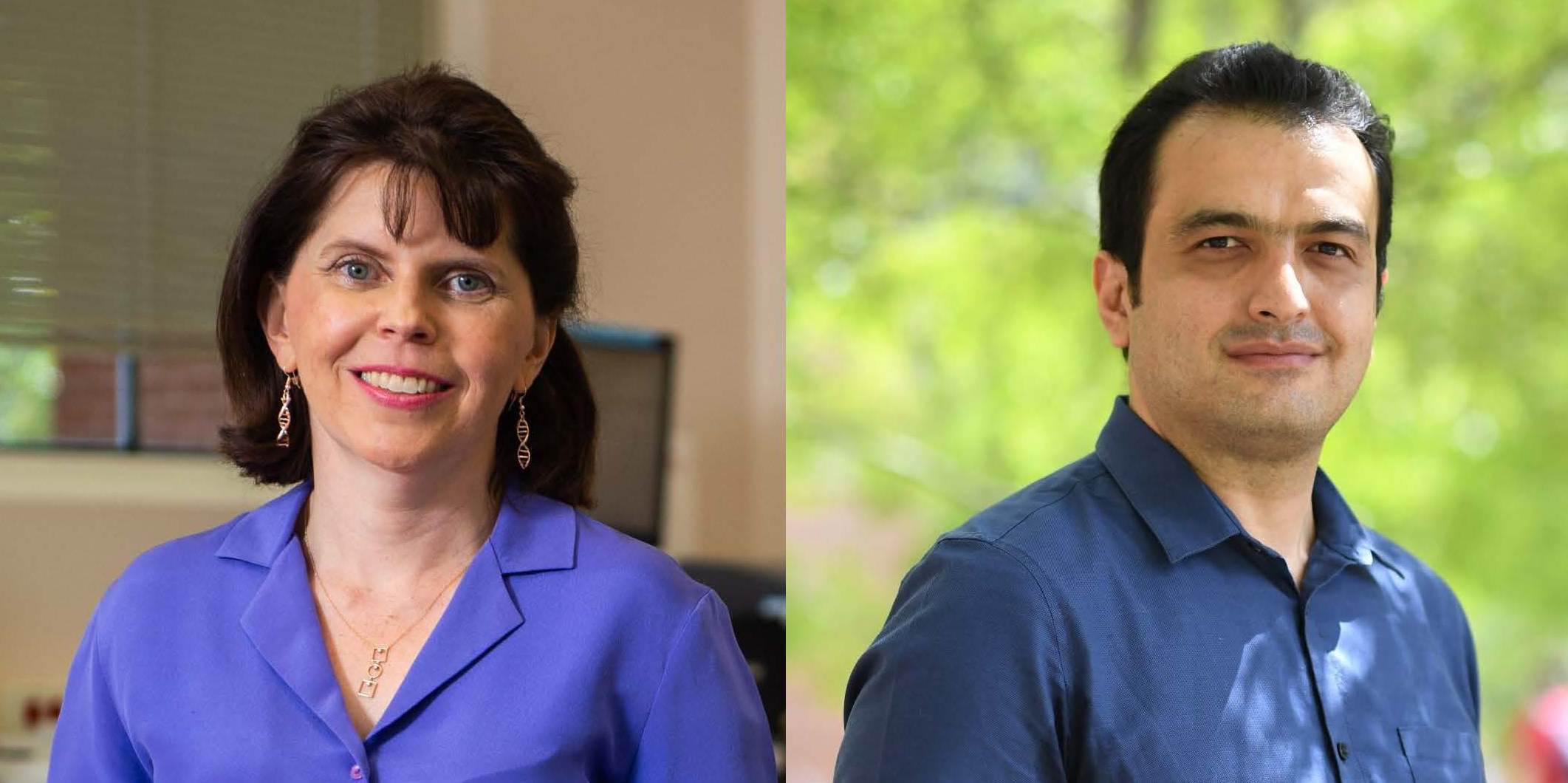
From the left: Virginia Davis and Majid Beidaghi
Categories: Engineering, Manufacturing, Advanced Systems
Auburn faculty members to research lead-free defense electronics as part of $7M award
Auburn University will soon help strengthen the economic and force posture of the United States’ lead-free defense electronics industrial base through participation in the newly-launched Defense Electronics Consortium (DEC).
The DEC was established by the U.S. Partnership for Assured Electronics through an award from the U.S. Department of Defense. The total award amount is expected to exceed $42 million – $7 million of which is expected to come to Auburn – and will be distributed during a period of five to seven years.
The first year of the project was funded at $3.9 million, with $830,000 awarded to Auburn Engineering. Auburn faculty will partner with researchers from Purdue University and the University of Maryland to focus on the Lead-Free Defense Electronics Project, the first initiative to flow through the DEC.
When compared to consumer electronics, defense electronics are subjected to harsher environments and are often designed for a much longer lifespan. Auburn faculty, led by principal investigator Sa’d Hamasha, assistant professor of industrial and systems engineering, will develop a comprehensive evaluation system for solder selection to meet specific defense-related requirements.
“The outcome of this research is a lead-free Solder Users Handbook to ensure a safe transition of aerospace and defense electronics to lead-free technology,” he said. “The lead-free project includes a plan for developing a comprehensive solder agnostic evaluation system for defense lead-free technology. The goal is to enable future new solders and electronics packaging technologies and processes for specific defense use cases.”
The interdisciplinary project is a collaboration between faculty in Auburn’s industrial and systems engineering and mechanical engineering departments. From the Department of Industrial and Systems Engineering, Hamasha will direct the research program, department chair John L. Evans is a co-principal investigator and will manage the USPAE consortium interface, and assistant professors Daniel Silva and Peter Liu are also co-principal investigators. Participating faculty from the Department of Mechanical Engineering include department chair and Quina Professor Jeffrey Suhling and professor George Flowers, Graduate School dean, as co-principal investigators. Emeritus professors Wayne Johnson from the Department of Electrical and Computer Engineering and Michael Bozack from the Department of Physics will also contribute.
“Auburn’s involvement comes after 25 years of excellence in electronics packaging, manufacturing and reliability and one of the largest research efforts in lead-free solder in the United States,” said Evans, the Charles D. Miller Chair Professor.
Hamasha explained that in addition to the Auburn team’s wealth of research experience, Auburn’s state-of-the-art facilities will be used to fill the gaps in thermal cycling, drop shock and vibration testing, all important factors to determining military suitability.
“Our team has experience investigating mechanical properties, failure and fatigue behavior and reliability of more than 50 standard and enhanced lead-free solder alloys, as well as the manufacturability of these materials,” Suhling said. “And our research has targeted mission critical electronic products for military, automotive, aerospace and industrial applications that are exposed to harsh environments.”
Overall, the work produced by the DEC has the potential to make a great impact in the defense industry.
“The DEC work will accelerate the use of advanced electronics technology for the defense industry, while also improving product quality, reliability, performance and reducing product costs,” Evans said.
Media Contact: Cassie Montgomery, cmontgomery@auburn.edu, 334.844.3668
BY CASSIE MONTGOMERY
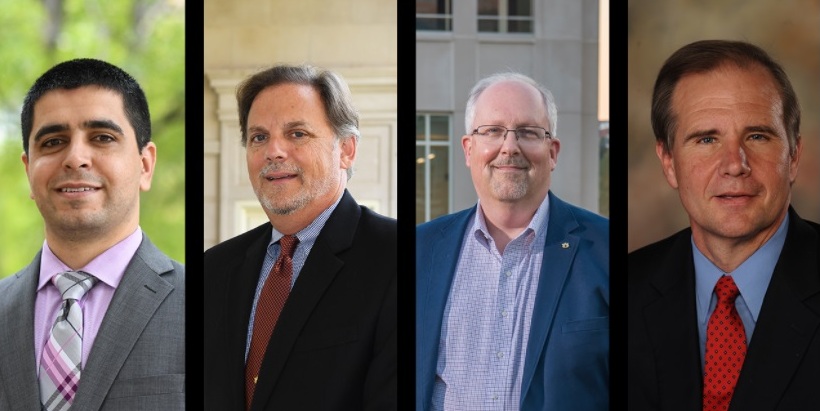 From left, Sa'd Hamasha, John L. Evans, Jeffrey Suhling and George Flowers
From left, Sa'd Hamasha, John L. Evans, Jeffrey Suhling and George Flowers
Categories: Engineering, Transportation, Manufacturing
Auburn debuts sophisticated new autonomous vehicle research facility
Auburn University recently opened the doors to a sophisticated new autonomous vehicle research facility at Auburn’s National Center for Asphalt Technology test track — one of the few facilities of its kind in the nation attached to a test track.
The addition will aid researchers in Auburn University’s GPS and Vehicle Dynamics Laboratory, whose work is frequently conducted outdoors.
The facility provides a garage with multiple bays and lifts for commercial trucks and passenger vehicles, office space for researchers, a conference room and an observation area overlooking NCAT’s 1.7-mile oval test track.
“The fact that we have our own test track where we can run autonomous vehicles and autonomous testing attached to this facility I think is an unbelievably unique asset,” said David Bevly, the Bill and Lana McNair Distinguished Professor of mechanical engineering and co-director of the GAVLAB along with assistant research professor Scott Martin.
Since Bevly joined the Auburn Engineering faculty in 2001, the GAVLAB has built a strong reputation in autonomous vehicle navigation and developed a broad sponsored research portfolio, with projects ranging from the Department of Defense and the Federal Highway Administration to many private industry partners.
With various sponsors visiting each month, the facility’s planned observation area gives the GAVLAB team a high-quality space to demonstrate its research. Bevly’s group has also conducted demonstrations for legislators and the Alabama Department of Transportation.
“It’s a great facility for us as a team, but also allows us to showcase our work,” Bevly said.
With a growing research thrust in transportation engineering, the autonomous research facility also demonstrates Auburn’s commitment to supporting these research initiatives.
“Auburn is a major player in transportation engineering research in the nation,” said Steve Taylor, associate dean for research. “The GAVLAB and our other transportation engineering researchers have brought in nearly $50 million in sponsored research awards over the past three years. This new facility is an exciting development for Auburn and there will be much more to come.”
BY CHRIS ANTHONY
Media Contact: Jeremy Henderson, jdh0123@auburn.edu, 334-844-3591
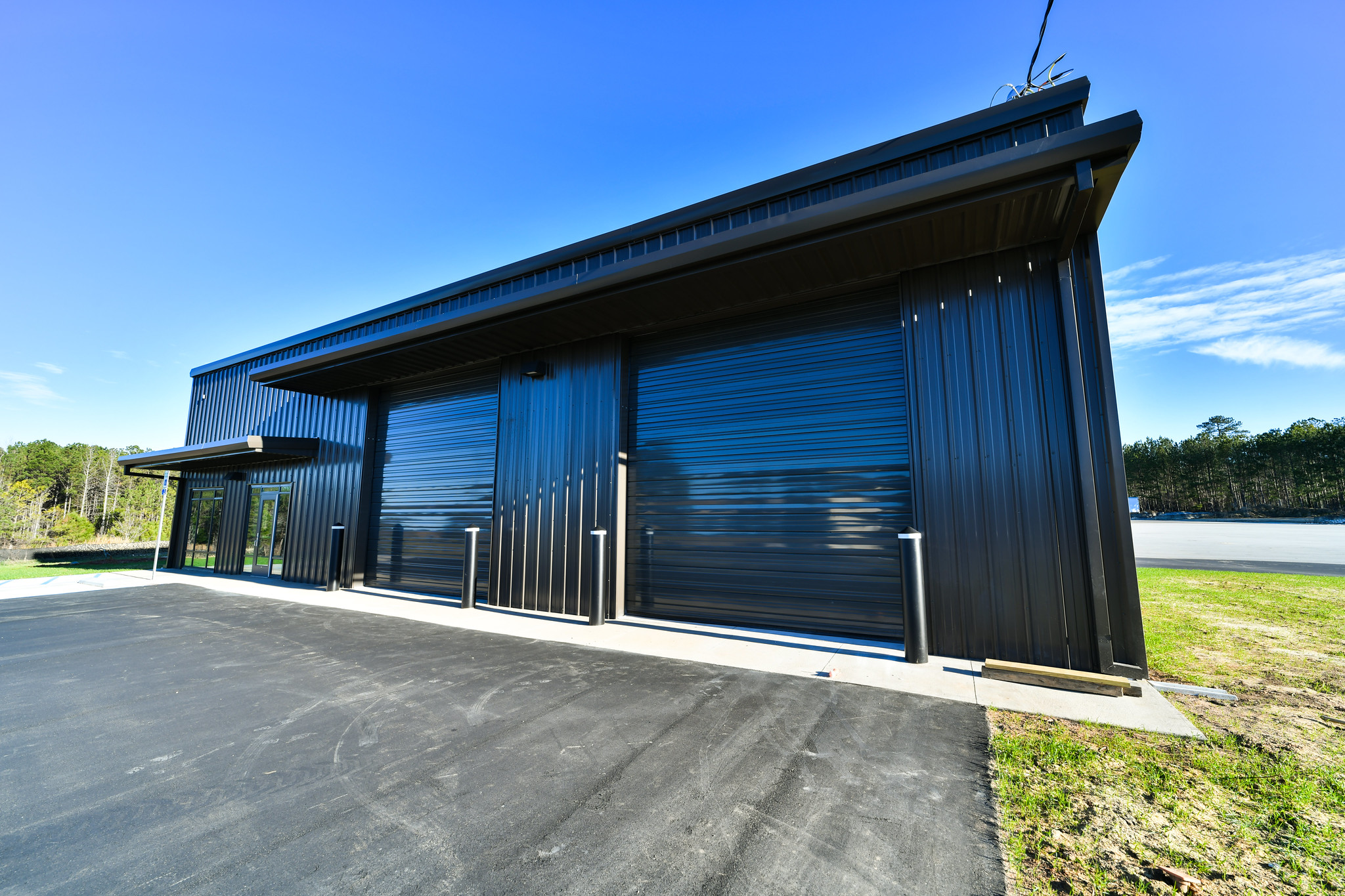
Auburn University's new autonomous vehicle research facility
Categories: Engineering, Transportation, Advanced Systems
Assistant civil and environmental engineering professor receives NSF Early Career award
Assistant civil and environmental engineering professor Jack Montgomery has been selected for the prestigious National Science Foundation Faculty Early Career Development (CAREER) program.
Montgomery, whose focus is geotechnical engineering, was awarded $531,818 to explore the relationship between soil piping and rainfall-induced landslides in unsaturated soils.
"The recognition from my colleagues feels great and this award lets me expand my research and teaching into new areas," Montgomery said. "Most people are familiar with surface erosion caused by flowing water, but a similar process can take place below the surface as well. Soil piping can lead to sinkholes and failures of dams and levees. We have methods to assess how likely it is for piping to start, but once the erosion begins we don't have many ways to predict how it will progress. This project is specifically focused on piping in slopes, but the findings will apply to many different areas, including dam safety."
Much of Montgomery's previous research has focused on field work or computational analyses.
"But this grant will allow me to build some really unique experimental capabilities at Auburn," he said.
Specifically, he plans to take advantage of the 4,700-cubic-foot geotechnical test chamber — one of the few test chambers in the nation included in a university laboratory — inside Auburn's new $22 million Advanced Structural Engineering Laboratory.
"We'll be using the geotechnical test chamber to build some near full-scale slope models," he said.
The award also involves integrating Montgomery's research into an outreach program geared toward increasing interest and retention among traditionally underrepresented students in civil engineering.
"We'll be creating formal and informal educational activities, including educational modules for undergraduate and 7th-12th grade students, and a citizen science-driven database of sinkholes and piping features," Montgomery said. "We want to better connect to the life experiences of the audience, and I think improving the way engineers and scientists communicate their work will help us recruit and retain the next generation of diverse Auburn Engineers."
Montgomery, who came to Auburn in 2015, is the fifth Auburn Engineering faculty member — and the third in the Department of Civil and Environmental Engineering — to earn the Early CAREER Award in 16 months, a fact that Andy Nowak, chair of the Department of Civil and Environmental Engineering, feels reflects the college’s commitment to hiring and retaining the best engineering minds in the country.
“Jack has already received plenty of professional accolades,” Nowak said. “But it’s always rewarding when the NSF recognizes the same promise in a researcher that you saw in them.”
Media Contact: Jeremy Henderson, jdh0123@auburn.edu, 334-844-3591
BY JEREMY HENDERSON
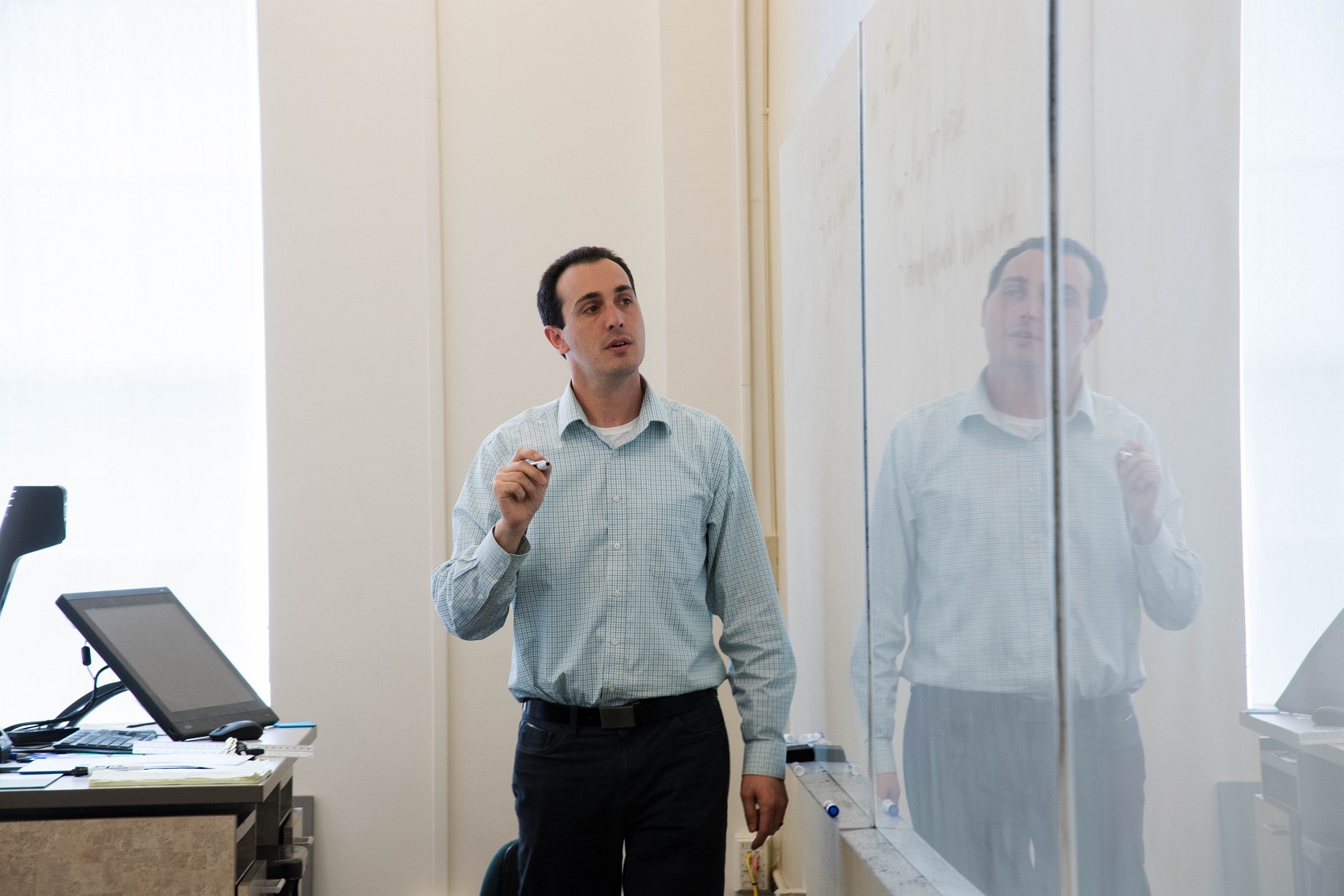
Jack Montgomery
Categories: Engineering
Auburn-developed disinfectant technology finds new potential during COVID-19 pandemic
An Auburn University-developed disinfectant technology—related to one that had early commercial success as a water purification and filtration product during the 1990s and early 2000s—has advanced to achieve new patent-protected licensing potential in the battle against the ongoing COVID-19 pandemic.
Medesol LLC, a medical technology firm in Bellevue, Washington, has entered into a technology licensing agreement with Auburn to commercialize an N-halamine-based technology developed by S.D. “Dave” Worley, a professor emeritus in Auburn’s Department of Chemistry and Biochemistry, Roy Broughton, a professor emeritus in the Department of Mechanical Engineering, Tung-Shi Huang, a professor of microbiology in the Department of Poultry Science, and others.
Following the success of their initial N-halamine-based technology, Worley’s research team has since reformulated it to have effective antimicrobial applications in textile products.
The technology is based on chlorine as an N-halamine. N-halamines have been used in various applications for years with no bacterial resistance mechanism yet identified. But the chlorine base that enables its disinfecting properties is slowly lost once the formula comes into contact with water. By combining the chlorine base with various polymers, the Auburn research team developed a solid that proved effective as a water treatment and filtration product.
“This worked very well,” said Worley, “but we found by further work that we could make a similar N-halamine into an antimicrobial formulation that is effective when incorporated into non-woven textiles.”
By exposing the chlorine N-halamine to an alcohol solution instead of water, Worley explained, the formulation forms a solid bond with the fabric.
“The alcohol evaporates, leaving the N-halamine bonded solidly to the fabric,” Worley said. “Thus, it has great potential for being applied as an antimicrobial to such things as wound bandages, surgical materials and other garments—particularly, medical protection masks. The idea is that these products are one-time use and disposable.”
“We have worked with Dr. Worley and Auburn for more than 20 years,” said Simon Johnston, chief executive officer for Medesol. “When we learned about this new potential for the technology, we jumped to enter a licensing agreement with Auburn.”
“We are very excited to be working with Medesol to commercially develop and market this technology,” said Jan Dowdle Thornton, executive director of Auburn’s Office of Innovation Advancement and Commercialization.
“Auburn’s N-halamine-based system is very inexpensive as compared to existing current alternatives, such as silver or biguanide-based systems. Moreover, it has been proven effective against bacteria and viruses and is biodegradable. This should be a significant improvement for disposable non-woven products to help prevent the spread of infection.”
Medesol presently is pursuing FDA approval to market the Auburn development in the United States as a more effective medical face mask and other forms of protective medical clothing, according to Johnston. The firm hopes to gain FDA approval within the next six to nine months. Meanwhile, Johnston believes they will find quicker marketing success internationally.
“We firmly believe that this technology can be a significant factor in providing better protection against infections and the spread of diseases,” Johnston said. “We know from its earlier applications that it is a very effective antimicrobial medium. We believe that we are very close to proving its worth in the efforts to battle COVID-19 and future disease outbreaks.”
BY MITCH EMMONS
Categories: Engineering, Health Sciences
Auburn debuts $22 million state-of-the-art structural engineering laboratory
Auburn University strengthened its reputation as the premier destination for structural engineering research on Monday by opening the doors on a $22 million state-of-the-art laboratory that will provide solutions to the nation’s growing infrastructure issues for years to come.
“The new Advanced Structural Engineering Laboratory is a revolution in structural engineering,” said Andy Nowak, chair of the Department of Civil and Environmental Engineering in the Samuel Ginn College of Engineering. “What was impossible is now possible.”
Located at the corner of West Samford Avenue and Shug Jordan Parkway, the 42,000-square-foot Advanced Structural Engineering Laboratory, or ASEL, includes a high bay laboratory with a strong wall and strong floor specially engineered to handle extreme structural testing loads; a geotechnical chamber within the strong floor; a concrete materials research and testing laboratory; wind testing capabilities that can replicate hurricane-level loads; and faculty and graduate student spaces.
Another attractive aspect? Ease of access. Due to its location, the university’s previous structural testing laboratory in the Harbert Center could only accommodate elements up to 40 feet in length. The new facility allows for elements up to 140 feet long.
Additionally, the new lab’s floor is twice as large and features anchor points that hold more than 10 times the load as the floor in the previous lab. The former structural laboratory in the Harbert Center will be repurposed for other academic and research use.
But the ASEL’s most unique feature may be the 4,700-cubic-foot geotechnical test chamber within the strong floor footprint—one of the few test chambers in the nation included in a university laboratory—that will allow the department’s geotechnical researchers to conduct testing on foundations, anchorages and towers previously only possible in the field.
“In addition to helping us secure research grants and projects, the ASEL will help us to recruit the best faculty and the best students,” Nowak said.
Steve Taylor, Engineering’s associate dean for research, agrees.
“We now offer one of the best laboratories in the country—if not the best,” Taylor said. “If I’m a student who wants to be a structural engineer, this is the best place to go to school in the nation.”
Hi-resolution photos of the ASEL can be found here: https://aub.ie/w2nsfD.
BY JEREMY HENDERSON
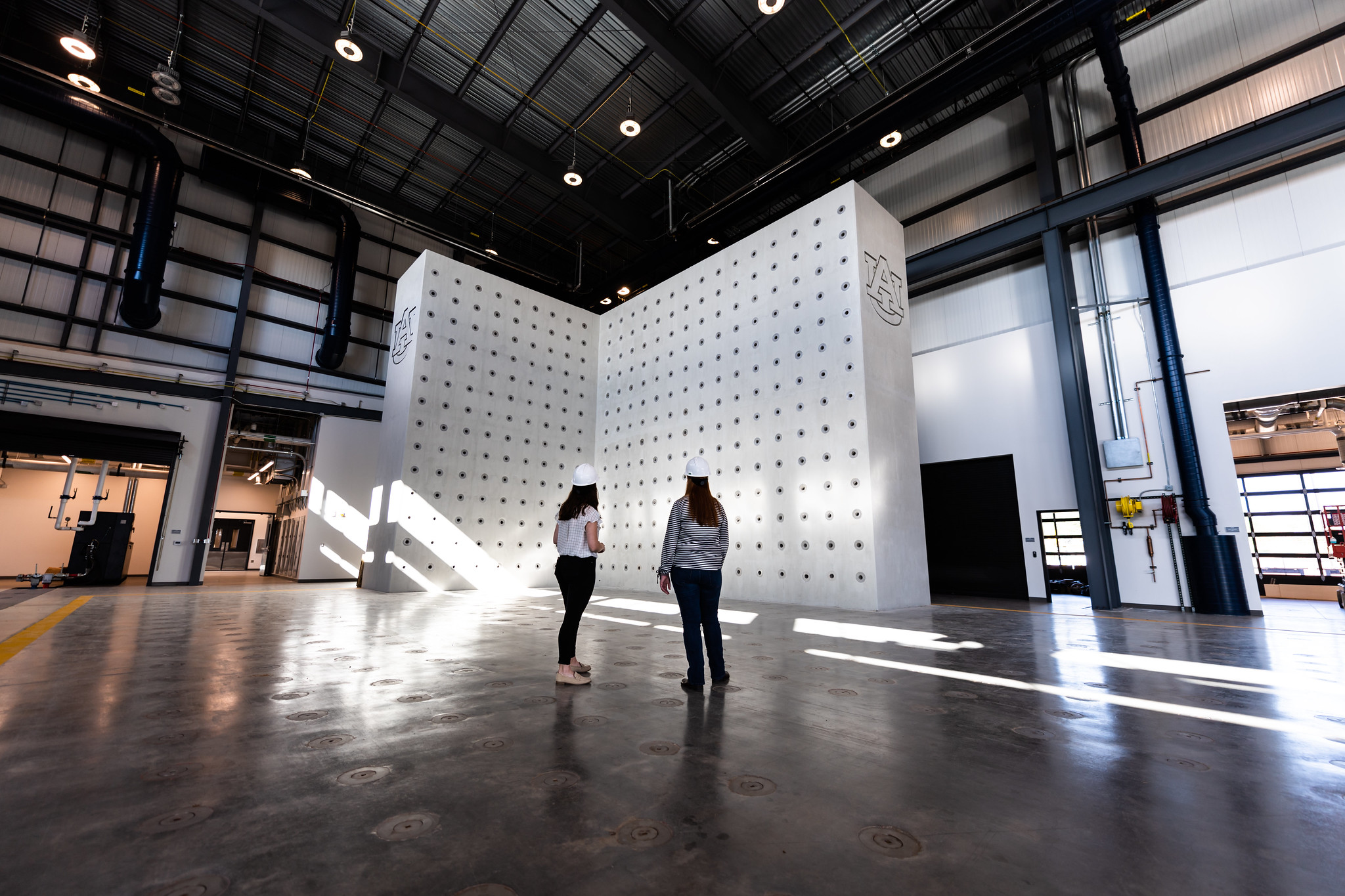
Advanced Structural Engineering Laboratory
Categories: Engineering
Auburn University research projects among recipients of $2.57 million state award
Two Auburn University research projects are among the recipients of a $2.57 million award by the Alabama governor’s office to five of the state’s research institutions, Gov. Kay Ivey announced recently.
Brian Via and Beatriz Erramuspe, director and research fellow, respectively, of the Forest Products Development Center in the School of Forestry and Wildlife Sciences, were awarded $247,142 to research development of a paper-based device for a cost-effective method to detect dangerous formaldehyde emissions in wood panels.
Sabit Adanur, professor in the Department of Mechanical Engineering in the Samuel Ginn College of Engineering, was awarded $75,374 to conduct research relating to the design, fabrication and testing of novel medical face masks to prevent the spread of COVID-19 or future contagious viruses.
The grants are from the Alabama Research and Development Enhancement Fund, or ARDEF, a state-funded program created in 2019 under the Alabama Innovation Act and administered by the Alabama Department of Economic and Community Affairs, or ADECA.
The funding provides support and encourages new and continuing research that will result in products and services to improve the lives of Alabamians either from the products themselves or from new job opportunities.
“This funding from the Alabama Research and Development Enhancement Fund will help Auburn researchers continue to solve real-world problems through discovery and innovation,” said James Weyhenmeyer, Auburn’s vice president for research and economic development.
“The research being performed at our universities and institutions offers strong evidence that innovation is alive and well in Alabama," Ivey said when making the announcement. “These grants will help provide the needed resources to bring even more ideas and research to light, eventually resulting in new products and new job opportunities.”
Other institutions named in the award announcement include the Basham Institute of Science in Dadeville, Alabama, and various campuses of the University of Alabama. This is the second round of ARDEF funds awarded in this program in 2020.
Ivey earlier this year awarded $2.27 million in grants to state research institutions and programs. Three Auburn research projects were recipients in that earlier announcement.
BY MITCH EMMONS
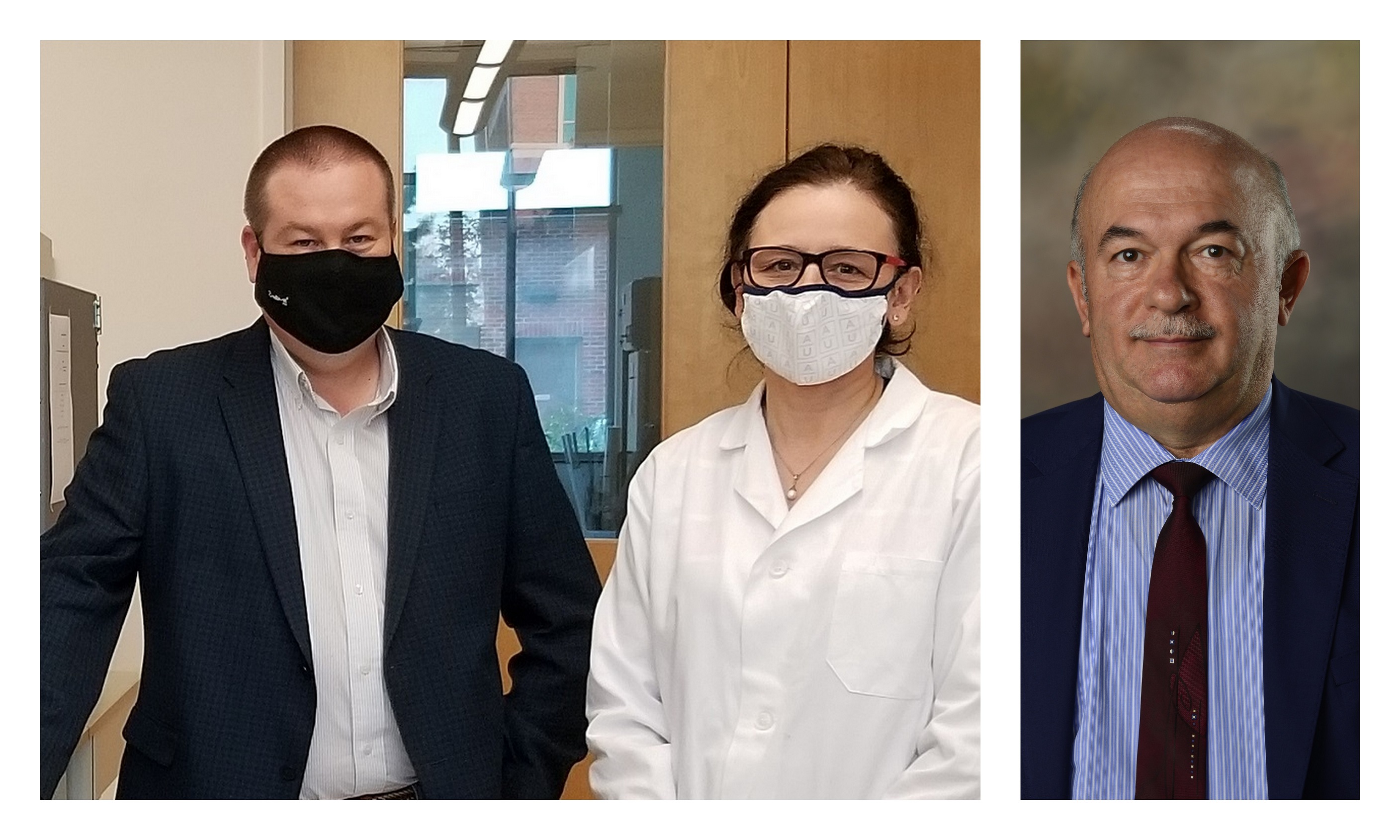
From the left: Brian Via, Beatriz Erramuspe and Sabit Adanur
Categories: Engineering, Health Sciences, Auburn In the News, Manufacturing
Civil and environmental engineering professor receives $1.3 million Department of Defense grant
Natalie Cápiro, assistant professor of civil and environmental engineering, has been awarded a $1.3 million grant by the Strategic Environmental Research and Development Program (SERDP) for her project “Development of Predictive Tools for Assessment of Natural Attenuation Capacity and Treatment Transition at Chlorinated Solvent Sites.”
SERDP is an environmental science and technology program for Department of Defense (DoD), that is planned and executed in partnership with Department of Energy and U.S. Environmental Protection Agency, with participation by numerous other federal and non-federal organizations.
Cápiro’s project aims to develop a quantitative understanding of the relationships between the processes that govern long-term attenuation at contaminated sites that are characterized by complex hydrogeology and failure of prior remediation efforts.
According to Cápiro, current nationwide estimates of costs and predicted cleanup times required for the restoration of federal and state hazardous waste-impacted groundwater sites are underestimated. The cleanup timeframe for sites with complex hydrogeology can exceed acceptable timeframes, which are typically considered to be 30-50 years.
“Particularly difficult are sites contaminated with highly toxic chlorinated solvents that have been widely used as degreasers at military bases, dry cleaners and in other industries,” Cápiro explained. “Groundwater resources at more than 126,000 known contaminated federal and state hazardous waste sites are estimated to require more than $100 billion to achieve cleanup goals.”
Cápiro’s work aims to develop a holistic remediation approach accounting for natural attenuation processes that control chlorinated solvent contaminant persistence in groundwater, while providing long-term cost-saving measures and safeguarding drinking-water supplies.
The research will establish a more complete understanding of the relationships between the coupled processes that govern long-term natural attenuation of chlorinated solvent groundwater plumes. Also, it will provide site managers, regulatory officials and the scientific community with mathematical models and predictive tools that are capable of estimating the capacity of an aquifer to naturally attenuate chlorinated solvents in complex hydrogeological settings.
The outcomes of the project will aid in the selection of scientifically sound strategies for sustainable long-term management of complex, contaminated sites and support the recommendations on when the transition from active to passive treatment is justified.
Cápiro’s co-PIs are Kurt Pennell (Brown University) and Mark Widdowson (Virginia Tech), as well as Michael Kavanaugh and Eric Suchomel, both with Geosyntec Consultants.
BY ALYSSA TURNER
Media Contact: , jdh0123@auburn.edu, 334-844-3591
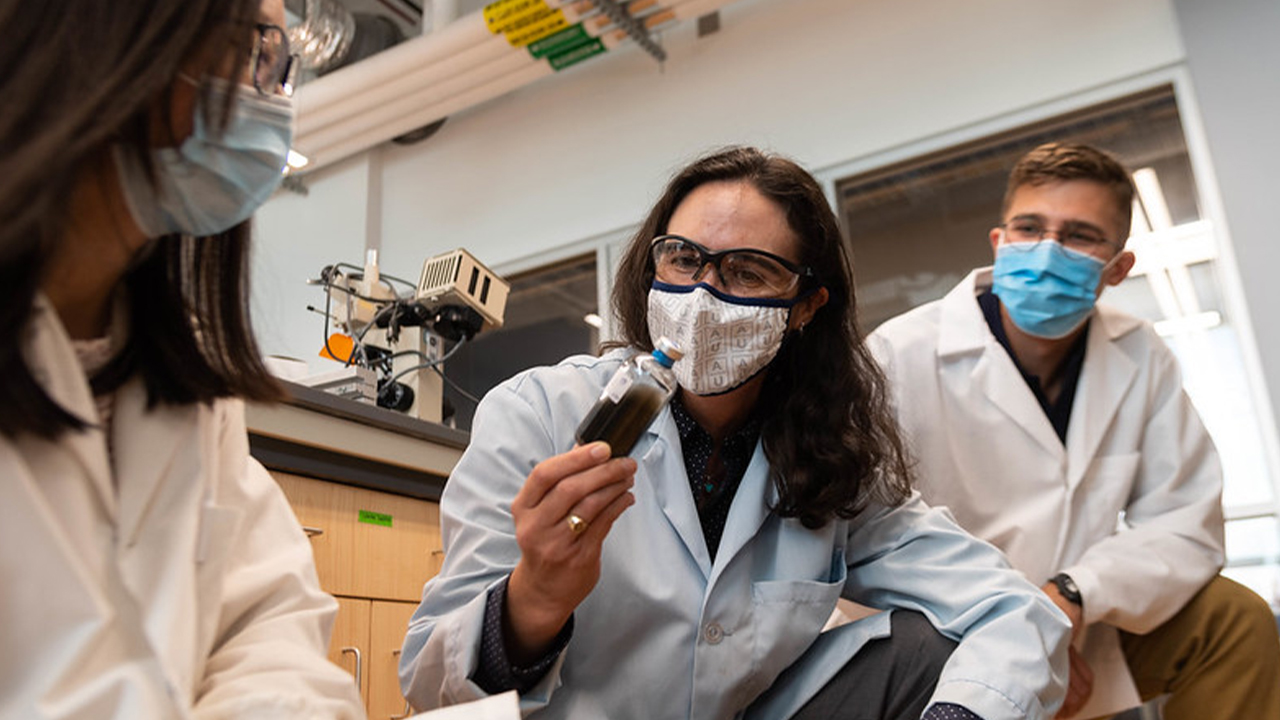 Natalie Cápiro
Natalie Cápiro
Categories: Engineering, Energy & the Environment
AU awarded $1.21 million by Department of Energy to develop nuclear energy technology
The U.S. Department of Energy recently awarded Auburn University a combined $1.21 million to develop advanced manufacturing technology for next-generation reactor designs and expand the university’s existing nuclear research infrastructure. The two awards are among the DOE’s $65 million research investment to domestic universities and national laboratories for 93 advanced nuclear technology projects across 28 states.
“In the United States, nuclear power represents approximately 20% of the electricity consumed without greenhouse gas emission,” said Xiaoyuan Lou, principal investigator of both awards and associate professor of materials engineering. “Innovative manufacturing technologies and advanced materials are both crucial to the future economic outlook of nuclear power and the development of next-generation reactor designs such as small modular reactor (SMR) and GEN IV advanced reactors.”
Through the first award of $1 million funded by the DOE's Nuclear Energy Enabling Technologies (NEET) program, Auburn will lead a joint university-industry team to develop and demonstrate the powder metallurgy-hot isostatic pressing (PM-HIP) cladding and joining strategies to manufacture dissimilar metal pressure retaining components.
Nuclear reactors and many other energy infrastructures are formed by large-size and thick-section metal structures.
The traditional approach to manufacture these structures often involves multiple lengthy and costly fabrication steps and requires vastly different expertise, resulting in high manufacturing cost and delayed deployment schedule. The performance demands and compactness of future reactor designs require the complex construction of dissimilar metal structures, which further increase the manufacturing complexity and cost. PM-HIP can be an alternative solution to handle the design complexity, reduce the manufacturing cost and time, and eliminate the burden of in-service inspection.
“Tens of millions of dollars have been invested by government and industry to mature PM-HIP for manufacturing nuclear reactor structures," Lou said. "With these efforts, PM-HIP was recently approved by ASME Boiler and Pressure Vessel Code. By working with key nuclear technology providers, we will demonstrate PM-HIP can produce nuclear-grade multi-material reactor components with one shot.”
The second infrastructure award of $210,000 supports Lou to enhance the advanced mechanical testing capabilities at Auburn University. Bart Prorok, interim program chair for materials engineering, is the co-PI on the project.
Lou said the new equipment acquisitions would boost the Samuel Ginn College of Engineering’s nuclear research and training opportunities and expand the existing nuclear research programs.
“Nuclear power not only ensures reliable and clean electricity for the American people but also supplies propulsion energy to Navy operation and NASA’s space exploration,” Lou said. “These awards provide us opportunities to work closely with the major nuclear technology providers at the forefront of technological innovation.”
BY VIRGINIA SPEIRS
Media Contact: Jeremy Henderson, jdh0123@auburn.edu, 334-844-3591
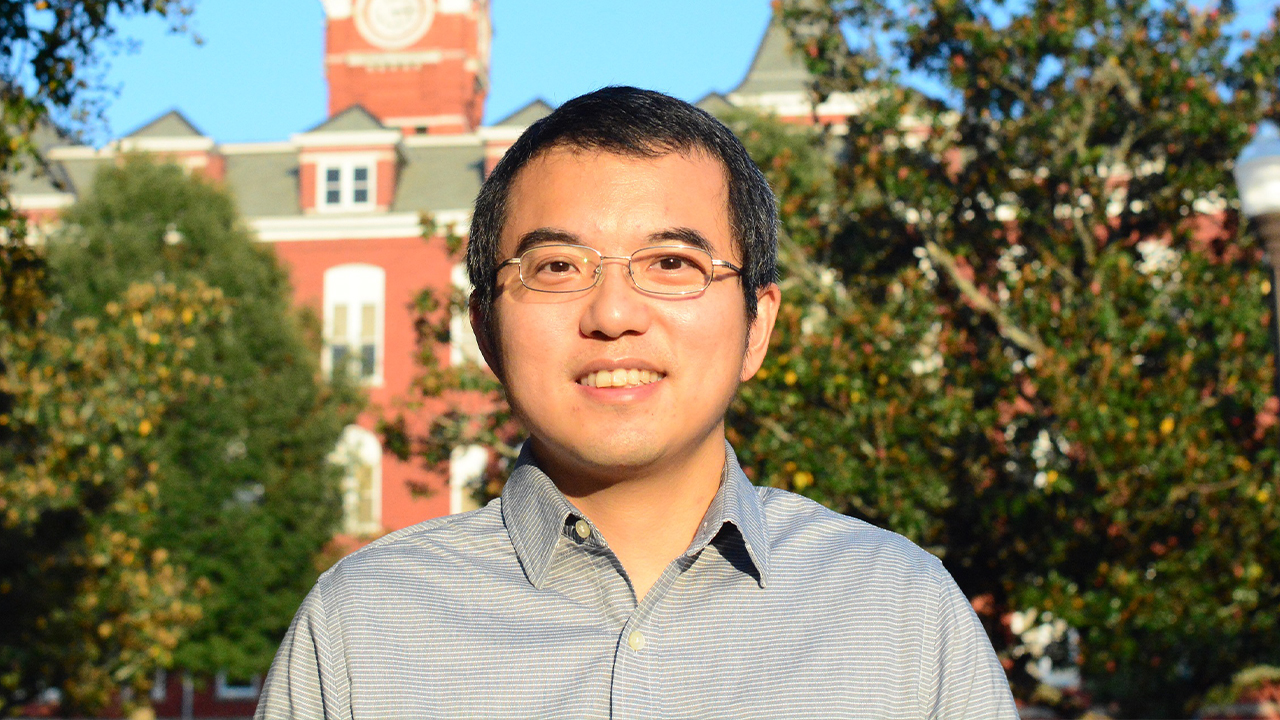
Xiaoyuan Lou
Categories: Engineering, Energy & the Environment
Auburn University industry-academic technology commercialization venture sparked by student job search
Researchers develop small-volume diagnostic assays that could be useful for variety of diseases, conditions
We often hear the stories about industry joining with academia to turn research developments into commercially viable and marketable products. Most of those relationships develop through the promotional efforts of the university’s technology and intellectual property advancement program. Sometimes, though, they can happen when companies become interested in a graduate’s qualifications for employment.
Such is the story behind a partnership formed between Auburn University and a Philadelphia-based biotech firm to commercialize technologies developed by Christopher Easley, the C. Harry Knowles Professor in the Department of Chemistry and Biochemistry in the College of Sciences and Mathematics.
InnaMed, based in Philadelphia, is a new firm devoted to the development of easy-to-use, fast-and-accurate home blood testing and health monitoring systems for the individual patient. Alongside their work applying microfluidic methods to help understand diabetes and obesity, Easley’s research team also develops small-volume diagnostic assays that could be useful for a variety of diseases and conditions. When InnaMed learned about Easley’s research in electrochemical assay development through the interview process with one of his graduate students, the company not only wanted to hire the student, but also acquire the technology for commercial development.
InnaMed was started in 2016 by co-founders Anup Singh and Eshwar Inapuri.
“We met while students at the University of Pennsylvania,” said Inapuri, who serves as the CEO. “Anup was pursuing a degree in biophysics, and I in bioengineering. We became friends while working in the Issadore Lab on technologies to advance diagnostics and enable early detection of diseases like traumatic brain injury and pancreatic cancer in a non-resource intensive manner.”
The two formed InnaMed with the goal to bridge the clinical communication gap between health systems and their patients, and, in 2017, learned of Easley’s research in microanalytical sensing techniques while conducting a job interview with one of Easley’s graduate students, Subramaniam “Mani” Somasundaram.
InnaMed optioned the Auburn technology to test it out and visited Easley’s lab to learn how to use it. They soon decided to license the technology and found the expertise that Mani gained while at Auburn to be a great asset to the company.
“After visiting with Auburn’s Office of Innovation Advancement and Commercialization, we entered into a licensing agreement on Dr. Easley’s technology and ultimately hired Mani shortly afterwards,” Inapuri said.
Easley describes his research as developing super-sensitive, very small instruments capable of detecting and measuring many types of biomarkers.
“Electrochemistry can be used to make very small instruments,” Easley said. “One of our inventions is a generalized assay that can work for small-, medium- or large-sized molecules, giving us the possibility for rapid ‘dip and read’ methods that are attractive for point-of-care settings. However, for some clinically relevant analytes at low concentrations, background interferences can be an issue, so we also invented a modified electrochemical instrument that removes background and increases sensitivity. These unique measurements not only help my laboratory with sensing on microfluidic devices, but they also are well-suited for InnaMed’s realm, clinical readouts in human blood.”
“The pharma industry has indicated a keen interest in commercial products that can do what Dr. Easley’s technology has made possible,” Inapuri said.
The company is in the process of taking Easley’s technology from the laboratory to a marketable product that can simplify the individual patient’s health journey for a variety of conditions that require frequent, rapid and accurate testing of various types of biomarkers in the blood. Inapuri says they hope to have the product ready to seek FDA approval within the next nine months.
“This is an example of a very good industry-academia commercialization partnership,” said Troy Brady, licensing officer in Auburn’s Office of Innovation Advancement and Commercialization. “It not only shows how the commercialization process evolves and develops, but it also is a great example of how student involvement can lead to solid, real-world partnerships.”
BY MITCH EMMONS

Auburn Professor Christopher Easley and his research team have developed super-sensitive, very small instruments capable of detecting and measuring many types of biomarkers.
Categories: Engineering, Health Sciences
Auburn, UCLA faculty teaming up to develop micro-scale magnetic shields
An Auburn Engineering faculty member recently received a United States Office of Naval Research subcontract to work on a new technology that will use custom additively manufactured micro-scale shields to help protect electronics from magnetic fields, while also allowing integration of fiber optics for optical communication.
Michael Hamilton, the James B. Davis Professor of electrical and computer engineering and director of the Alabama Micro/Nano Science and Technology Center, will work with Systems Visions, a local company that provides engineering principles to design and develop structures, systems and processes, on new technologies to help shield sensitive superconducting electronic chips from magnetic fields while still allowing for signals to be sent and received through integrated fiber optics.
Hamilton will collaborate on this project with Robert Candler, professor of electrical and computer engineering at the University of California, Los Angeles. Hamilton and Candler graduated in the same class from Auburn University with bachelor’s degrees in electrical engineering in 2000.
“Interestingly enough, Rob is not just my colleague, but my friend who also went to Auburn at the same time I did,” Hamilton said. “We’ve been looking for a project to work on together for a while, so it was nice to find something that lined up both with what he’s working on and with what I’m working on.”
Hamilton said the duo are in phase one of the project with multiple challenges to overcome before a working prototype can be developed. Some challenges include engineering the technology to withstand ultra-cold temperatures around 4 Kelvin (-452 degrees Fahrenheit) and scaling down the integration of the fiber optics to about 10 millionths of a meter in diameter – 10 times smaller than a strand of hair.
“We’re characterizing these magnetic shields and making big strides in the steps toward building those little photonic structures,” Hamilton said. “Another piece of this project is observing how these micro-scale structures behave when we cool them down to a very low temperature and seeing if there’s a way we can engineer the interfaces and materials to perform better when you make it cold.”
Hamilton said he is confident that he and his team will work through the challenges of social distancing in the new normal with COVID-19 and that he is eager to contribute to the advancement of this technology under this subcontract.
“We’ve actually been really fortunate at Auburn where research can continue,” Hamilton said. “I know there are some places that had to just shut everything down, but we’ve been able to keep things going at a pretty good pace.”
BY VIRGINIA SPEIRS
Media Contact: Chris Anthony, chris.anthony@auburn.edu, 334.844.3447
 Michael Hamilton
Michael Hamilton
Categories: Engineering, Manufacturing, Advanced Systems
FAA invests $3 million in Auburn University additive manufacturing research
Thanks to a recent $3 million grant from the Federal Aviation Administration (FAA), the National Center for Additive Manufacturing Excellence (NCAME) at Auburn University will soon initiate a two-year project focused on improving commercial air travel through the use of 3D-printed (or additively manufactured) metal components.
The project involves fabricating metal parts from multiple industrial-scale metal 3D printers. It aims to specifically address issues related to understanding the variability in performance of the same parts made on different machines, as well as issues related to understanding how microscopic features in the 3D-printed metal affect overall fatigue and fracture properties. Both are key areas in the development of additive manufacturing (AM) specifications that the FAA wants to eventually apply in commercial airlines.
“This is what I call the ‘Achilles heel’ of additive manufacturing,” said NCAME director Nima Shamsaei, Philpott-WestPoint Stevens Distinguished Associate Professor of mechanical engineering. “Such variations make the qualification and certification of AM materials and parts challenging.”
The FAA said the partnership is ultimately intended to improve safety by standardizing certification of existing and emerging structural applications of advanced materials, a research area in which NCAME quickly emerged as an international leader, especially in the area of materials used for spaceflight.
Established in 2017 through a public-private partnership between Auburn and NASA, NCAME is also one of the founding partners of the ASTM International Additive Manufacturing Center of Excellence, which aims to close AM standards and workforce gaps.
“By understanding the sources of variability, controlling them, or accounting for them, we can generate more reliable materials data, and more reliable AM products,” said Shamsaei, who serves as co-principle investigator (PI) on the project.
Co-PI Steve Taylor, associate dean for research, agrees.
“By teaming our faculty, who are global leaders in research on additively manufactured metal components, with the top engineers and scientists at FAA, we are confident that we can develop new knowledge that will help engineers design safer, more efficient aircraft,” Taylor said. “Auburn University is honored to be collaborating with the FAA."
Other investigators on the project include Shuai Shao, associate professor of mechanical engineering; Hareesh Tippur, McWane Professor of mechanical engineering; Nick Tsolas, assistant professor of mechanical engineering; Jeff Suhling, chair of the Department of Mechanical Engineering; Masoud Mahjouri-Samani, assistant professor of electrical and computer engineering; Alex Vinel, assistant professor of industrial and systems engineering; Daniel Silva, assistant professor of industrial and systems engineering; and Jia (Peter) Liu, assistant professor of industrial and systems engineering. Mike Ogles, director of NASA Programs, serves as project manager.
BY JEREMY HENDERSON
Media Contact: Jeremy Henderson, jdh0123@auburn.edu, 334-844-3591
 Nima Shamsaei and Steve Taylor
Nima Shamsaei and Steve Taylor
Categories: Engineering, Transportation
Waste Not, Feed Fish: USDA funds biosystems professor's alternative use for farm wastewater
Brendan Higgins is doing his part to make sure nothing in this world goes to waste. Not even waste.
The USDA's National Institute of Food and Agriculture recently funded the assistant professor of biosystems engineering's four-year project aimed at developing a three-step process that will transform nutrients found in dairy and swine industry manure wastewater into protein-rich fish feed.
The total value of the project, titled "Development of a bacterial-algal-zooplankton process for conversion of agricultural waste into aquaculture feed," is $434,659.
"I've been working on this research topic in one form or another since spring of 2017," Higgins said, "so it feels great to get external funding to really grow this project."
And he does mean grow.
"The first step is to grow a mixture of bacteria on the manure wastewater, which is essential because it removes chemical inhibitors found in the water that harm algae growth," Higgins said. "We then grow algae on the water and these organisms use photosynthesis to convert the nutrient pollutants in the water into protein. We then feed the algae to Daphnia zooplankton."
Daphnia are well-known in biology as indicators of aquatic toxicity.
"We are using special strains of Daphnia that grow very well on our wastewater-grown algae," he said. "In fact, we have found that they grow better on our wastewater algae than they do on their normal algae feed, and Daphnia are valuable as a protein-rich fish feed."
But Higgins' research isn't just good news for fish. It's also good news for the environment.
"The U.S. dairy and swine industries produce huge amounts of liquid manure and they usually store it in large open pits or lagoons," Higgins said. "The storage lagoons smell awesome, of course, and nearby communities complain about them all the time. They're also a big problem when hurricanes hit because the lagoons overflow and spill into rivers and creeks and ultimately flow into the ocean.
"It is a huge public health and environmental problem and our system provides a possible solution."
Two professors within the Auburn University College of Agriculture — Alan Wilson, a professor in the School of Fisheries, Aquaculture and Aquatic Sciences, and Rishi Prasad, assistant professor in the Department of Crop, Soil and Environmental Sciences — are co-PIs (principal investigators) on the project.
BY JEREMY HENDERSON
Media Contact: Jeremy Henderson, jdh0123@auburn.edu, 334-844-3591
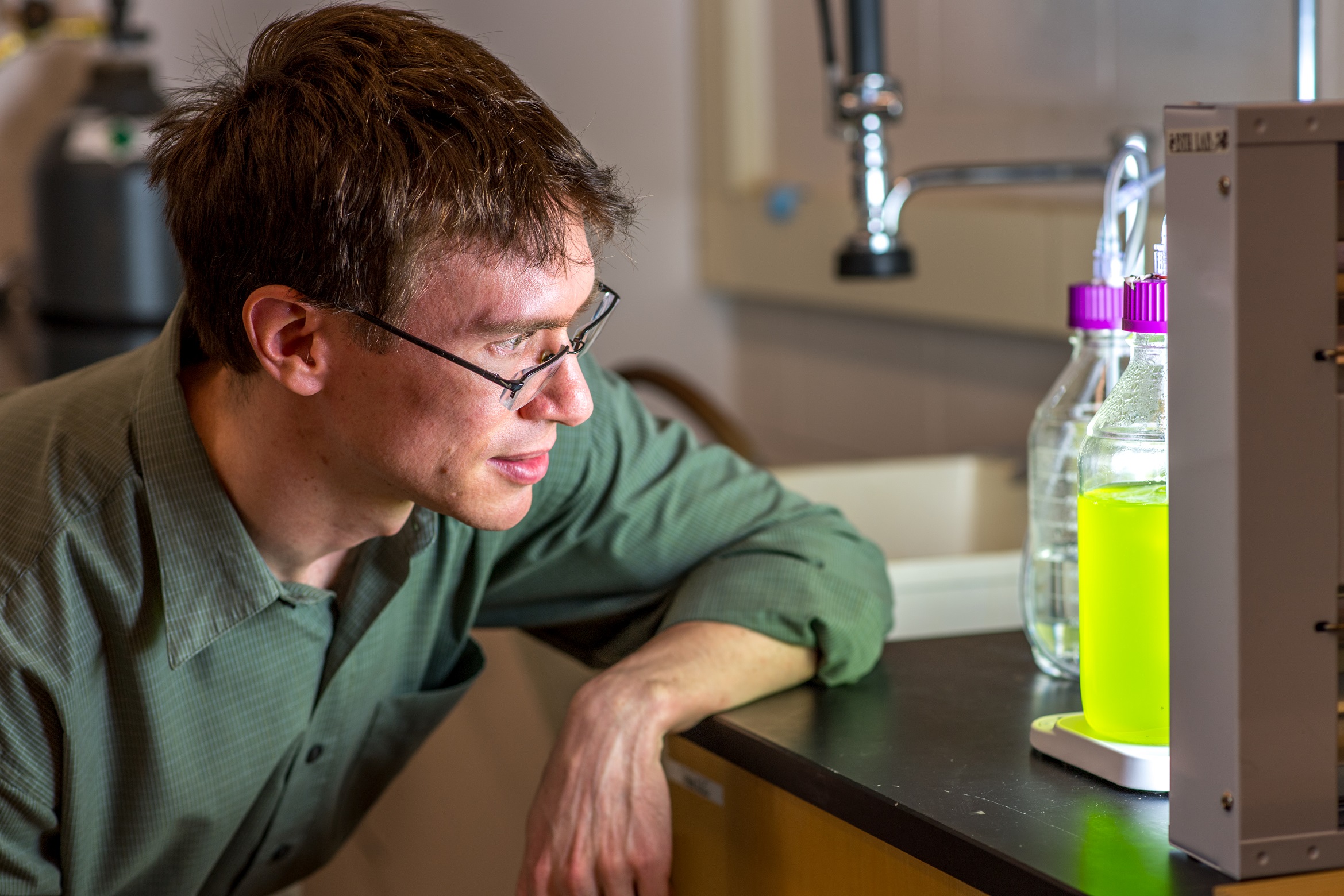
Brendan Higgins, assistant professor of biosystems engineering, examines Chlorella algae in his lab.
Categories: Engineering, Food Systems, Life Sciences
Assistant professor aims to improve fuel cell efficiency with NSF award
Ion-containing polymer membranes are found in many energy generation and storage devices. Using artificial photosynthesis, these devices convert water, sunlight and carbon dioxide into energy in an electrochemical cell, such as a solar fuel cell. Maximizing the efficiency of solar fuel cells requires understanding the relationships between polymer membrane structure and the transport of ions and molecules.
Chemical engineering assistant professor Bryan Beckingham will explore the relationships between ion-containing polymer membrane structure, membrane physiochemical properties and membrane-transport behavior with a $259,036 award from the National Science Foundation. The project, “Cooperative Transport in Ion-Conducting Membranes,” seeks to provide guidance for the future design of ion-containing polymer membranes to improve the efficiency of solar fuel cell devices.
Through lab experiments, Beckingham will examine transport properties such as permeability, solubility and diffusivity for a neutral solute (methanol), an ionic solute (acetate) and complex mixtures of the two.
“This project is going to investigate the transport behavior of different product species across these polymer membranes which can play a big role in reducing device performance,” he explained. “The particular focus is on how the presence of more than one of these species can change the diffusion behavior of the other species.”
Beckingham, with his graduate students, will be utilizing infrared spectroscopy in a novel way that will allow them to examine the diffusion behavior of multiple species at once. The technique, first developed in Beckingham’s post-doctoral research at Lawrence Berkeley National Laboratory as part of the Joint Center for Artificial Photosynthesis and refined in his lab at Auburn University, allows him to streamline the characterization process.
“In traditional experiments, you can really only look at one species at a time,” he said. “With our method, we will be using an in situ probe fiber optic cable that we can stick into our diffusion cell and it allows us to look at multiple species concentrations at the same time. With the probe taking measurements every minute, we get really high-fidelity data.”
Preliminary experiments using commercial materials have shown that when going from having a single solute to two solutes, the diffusion behavior changes in ways that the researchers cannot yet predict.
“So far what we’ve found is that neutral molecules such as methanol tend to be affected less but this matters a lot for charged molecules. The permeability of the charged molecule can increase a lot in the presence of methanol. This new project will build off of and attempt to understand these results,” he explained.
BY CASSIE MONTGOMERY
Media Contact: Cassie Montgomery, cmontgomery@auburn.edu, 334.844.3668
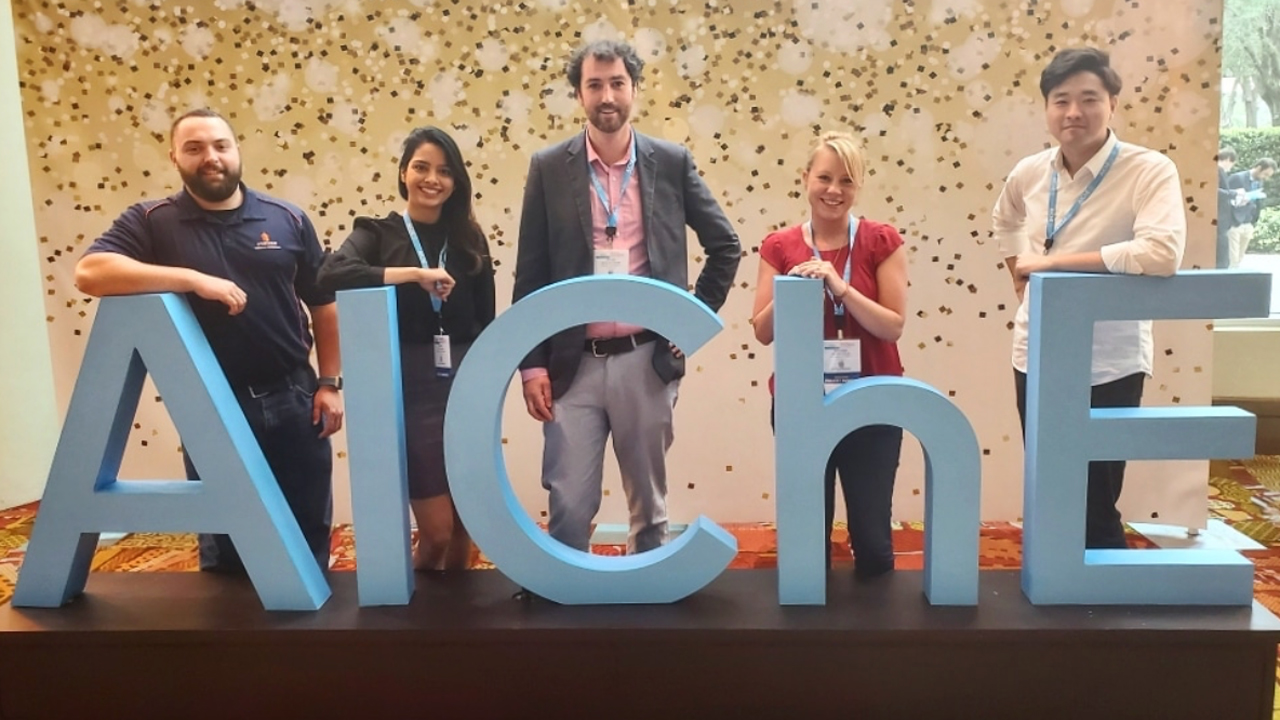
Bryan Beckingham (center) with graduate students
Categories: Engineering, Energy & the Environment
Auburn University building new autonomous vehicle research facility
For researchers in Auburn University’s GPS and Vehicle Dynamics Laboratory, prepping autonomous vehicles outside in Alabama’s elements—from the sweltering summer sun to pop-up thunderstorms—has become a near daily occurrence.
Whether researchers are debugging algorithms, installing sensors or running data analyses, much of the work from the GPS and Vehicle Dynamics Laboratory, or GAVLAB, is done outdoors—and easily impacted by changes in the weather.
That is about to change with the planned addition of a sophisticated new autonomous vehicle research facility at Auburn’s National Center for Asphalt Technology test track. The facility is expected to provide a garage with multiple bays and lifts for commercial trucks and passenger vehicles, office space for researchers, a conference room and an observation area overlooking NCAT’s 1.7-mile oval test track.
The building, estimated to cost approximately $800,000, will be one of the few autonomous research facilities in the nation attached to a test track.
“The fact that we’ll have our own test track where we can run autonomous vehicles and autonomous testing attached to this facility I think will be an unbelievably unique asset,” said David Bevly, the Bill and Lana McNair Distinguished Professor of mechanical engineering and co-director of the GAVLAB, along with assistant research professor Scott Martin.
Since Bevly joined the Auburn engineering faculty in 2001, the GAVLAB has built a strong reputation in autonomous vehicle navigation and developed a broad sponsored research portfolio, with projects ranging from the Department of Defense and the Federal Highway Administration to many private industry partners.
With various sponsors visiting each month, the facility’s planned observation area will give the GAVLAB team a high-quality space to demonstrate its research. Bevly’s group has also conducted demonstrations for legislators and the Alabama Department of Transportation.
“I think it will be a great facility for us as a team, but also to showcase our work,” Bevly said.
With a growing research thrust in transportation engineering, the autonomous research facility also demonstrates Auburn’s commitment to supporting these research initiatives.
“Dave and his GAVLAB team are one of our top research groups on campus, and their work has elevated Auburn to an internationally prominent position in navigation and vehicle dynamics for autonomous vehicles,” said Jeff Suhling, the Quina Professor and department chair for mechanical engineering. “Our department is proud to commit resources, along with the Samuel Ginn College of Engineering, to support high-impact researchers. We think this facility will really help set us apart from other universities in autonomous vehicle research.”
BY CHRIS ANTHONY
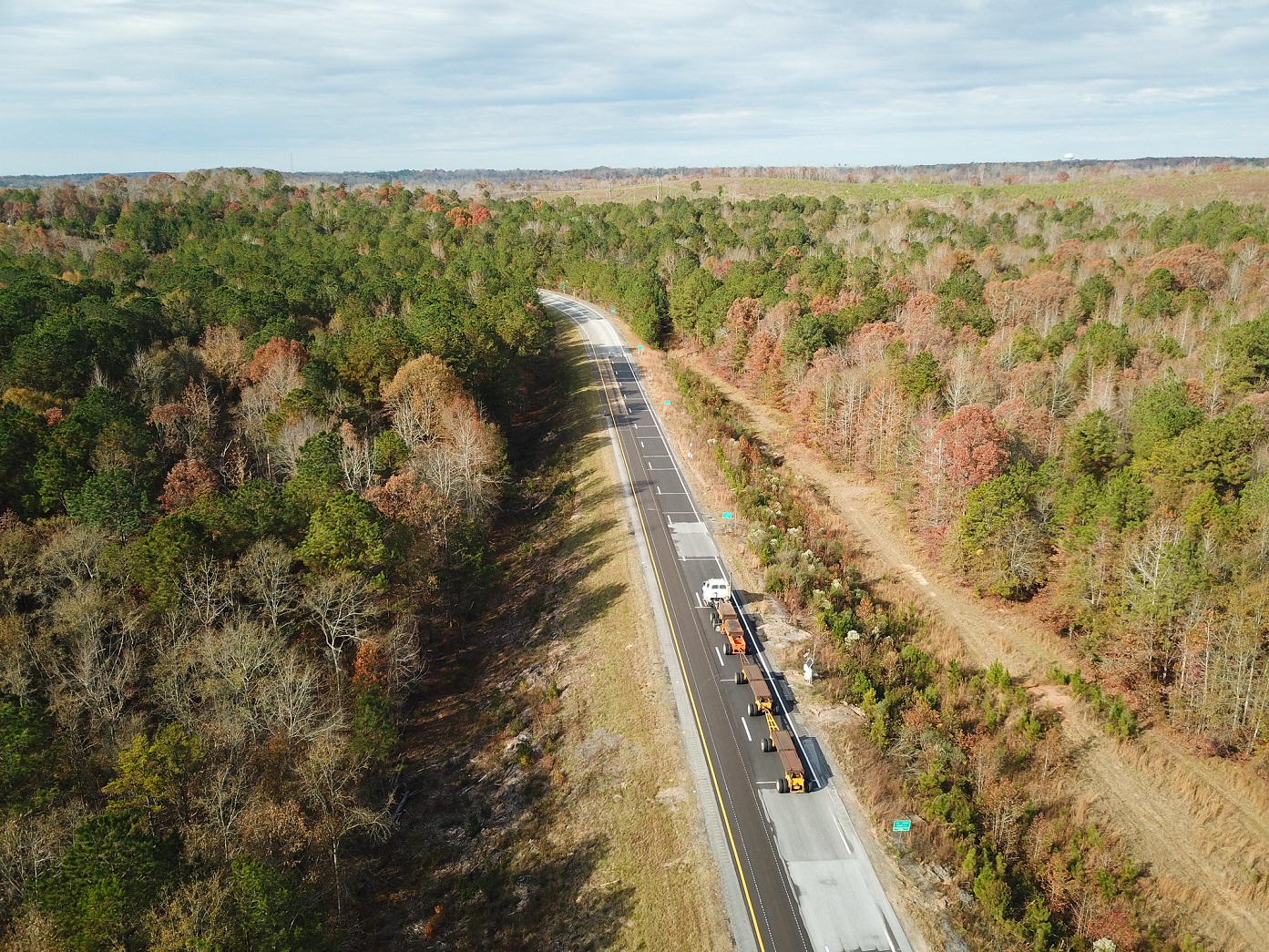
The Auburn University Samuel Ginn College of Engineering is building a new autonomous vehicle research facility at Auburn’s National Center for Asphalt Technology test track, making it one of the few such facilities in the nation attached to a test track.
Categories: Engineering, Transportation
Auburn University awards two research projects with LAUNCH grant funding
In an effort to advance research ideas that benefit society and the economy, Auburn University recently awarded two faculty research projects $100,000 in LAUNCH funding support.
Established in 2015 by the Auburn University Research and Economic Development Advisory Board, the LAUNCH Fund for Research and Innovation involves an associated competition designed to bridge the gap between innovative research and the marketplace. The fund was created with the support of the Office of the Vice President for Research and Economic Development. This year’s annual pitch competition was held virtually through Zoom, the online meeting platform, with Auburn’s top entrepreneurial faculty pitching ideas for research projects with potential to impact the economy of the state and region.
This year’s recipients, both from the Samuel Ginn College of Engineering, will receive cash stipends from a pool of approximately $100,000 toward the commercialization of their work. The recipients are Zhihua Jiang, an assistant professor in the Department of Chemical Engineering and director of the Alabama Center for Paper and Bioresource Engineering, and Majid Beidaghi, an assistant professor in the Department of Mechanical Engineering.
Jiang’s winning project was titled “Novel and Sustainable Feed Binder from Soy Hulls.” Feed binders are widely used to hold or bind different feed components together for increasing the water stability of aquaculture diets and the durability of feedstuffs. Jiang and his team—Burak Aksoy of Chemical Engineering and Mediha Aksoy and Benjamin Beck of the United States Department of Agriculture-Agricultural Research Services–are developing a compound feed binder made of soybean hulls, an agricultural waste product. This novel feed binder product made 100 percent from soy hulls has a great potential to penetrate the existing and growing global animal feed market valued at more than $400 billion in the U.S.
Beidaghi’s winning project was titled “Development of Inks and Printing Technology for 3D Printing of Batteries.” Beidaghi’s research focuses on the development and formulation of inks, or filament, for the fabrication of batteries, including Li-ion batteries, or LIBs, through a simple extrusion-based 3D printing process. 3D printing will allow fabrication of batteries with complex designs and form factors for both conventional and advanced applications. 3D printed batteries will show an excellent performance in small footprint areas and volumes to address the increasing demand for efficient energy storage devices for small and portable electronics.
“We are deeply honored to receive this award,” said Jiang. “Our technology addresses the existing and growing global animal feed market. We expect that this LAUNCH funding will play a critical role in making the technology ready for commercialization.”
Beidaghi echoed those sentiments, stating, “It is an honor for us to receive this award. Printed batteries are rapidly gaining attention for various applications ranging from wearable and flexible electronics to self-powered sensors. Our technology will potentially transform how batteries and other energy storage devices are manufactured. Funding from the LAUNCH program will greatly help us to develop our battery inks and printing methods further and introduce our technology to potential licensees and partners.”
As LAUNCH award recipients, the researchers will have the opportunity to meet with experts in entrepreneurship from Auburn’s Harbert College of Business and with IAC staff members to develop the plans for commercial success. Researchers may also be partnered with Auburn alumni and friends with extensive experience in industries related to the projects.
"Auburn is committed to providing a robust entrepreneurial ecosystem for our faculty, staff and students as a natural extension of our land-grant mission and the mission of Auburn Research Park," said Cary Chandler, director of the LAUNCH program and director of business development and start-ups for Auburn’s Office of Innovation Advancement and Commercialization, or IAC. "The LAUNCH Program is a critical part of that environment and plays an important role in delivering science-based solutions to our region and beyond. These are the ‘big ideas’ that will create jobs, grow our economy and improve quality of life, and we are pleased to support this year’s outstanding winners.”
The goal is to fund an endowment of $10 million that will generate $400,000 annually for research grants. Until it is fully funded, Auburn’s Office of the Vice President for Research and Economic Development is providing the awards.
More information on LAUNCH is available online.

The recipients of this year’s LAUNCH Fund for Research and Innovation award are Zhihua Jiang (left), an assistant professor in the Department of Chemical Engineering and director of the Alabama Center for Paper and Bioresource Engineering, and Majid Beidaghi, an assistant professor in the Department of Mechanical Engineering.
Categories: Engineering, Energy & the Environment
Auburn University awarded $1.31 million in research project funds from state of Alabama
Three Auburn University research projects have received a combined $1.31 million award, through a new program administered by the Alabama Department of Economic and Community Affairs, or ADECA.
Gov. Kay Ivey announced the grants this week through the new Alabama Research and Development Enhancement Fund. The state-funded program was created in 2019 under the Alabama Innovation Act.
The multidisciplinary projects are funded as follows:
-
$245,865 to develop an advanced biosensor using forest and agricultural products that will have a wide variety of uses dealing with contaminant detection, like determining if pesticides are present in water. The project is conducted by Samuel Ginn College of Engineering faculty members Virginia Davis, Alumni Professor, and Robert Ashurst, the Uthlaut Family Associate Professor from the Department of Chemical Engineering; and Soledad Peresin, an assistant professor of forest biomaterials in the School of Forestry and Wildlife Sciences.
-
$868,145 to develop a lightweight material that blocks mosquito bites while retaining coolness in hot weather. The research is being done by John Beckmann, an assistant professor in the Department of Entomology and Plant Pathology in the College of Agriculture.
-
$193,960 to develop a filtering process to remove perfluoroalkyl and polyfluoroalkyl substances from water and landfill runoff. The manmade substances are used in food packaging, stain repellants, cookware and firefighting foam and do not readily break down. The investigator for this project is Dongye Zhao, the Auburn Alumni Engineering Council Professor in the Department of Civil Engineering.
“This fund will enable our universities, hospitals, research institutions and others to develop and bring to fruition ideas that will improve lives and create jobs,” Ivey said about the grant program in the announcement. “I am tremendously encouraged by this program and its potential in Alabama.”
Jan Thornton, executive director of Auburn’s Office of Innovation Advancement and Commercialization, or IAC, said the ADECA grants are now an annual funding opportunity for researchers, with proposal submissions for the next award cycle currently open through July 29.
Faculty who wish to learn more and want to ensure that their research is protected as technology that might be potentially commercialized should contact the IAC by visiting iac.auburn.edu.
BY MITCH EMMONS
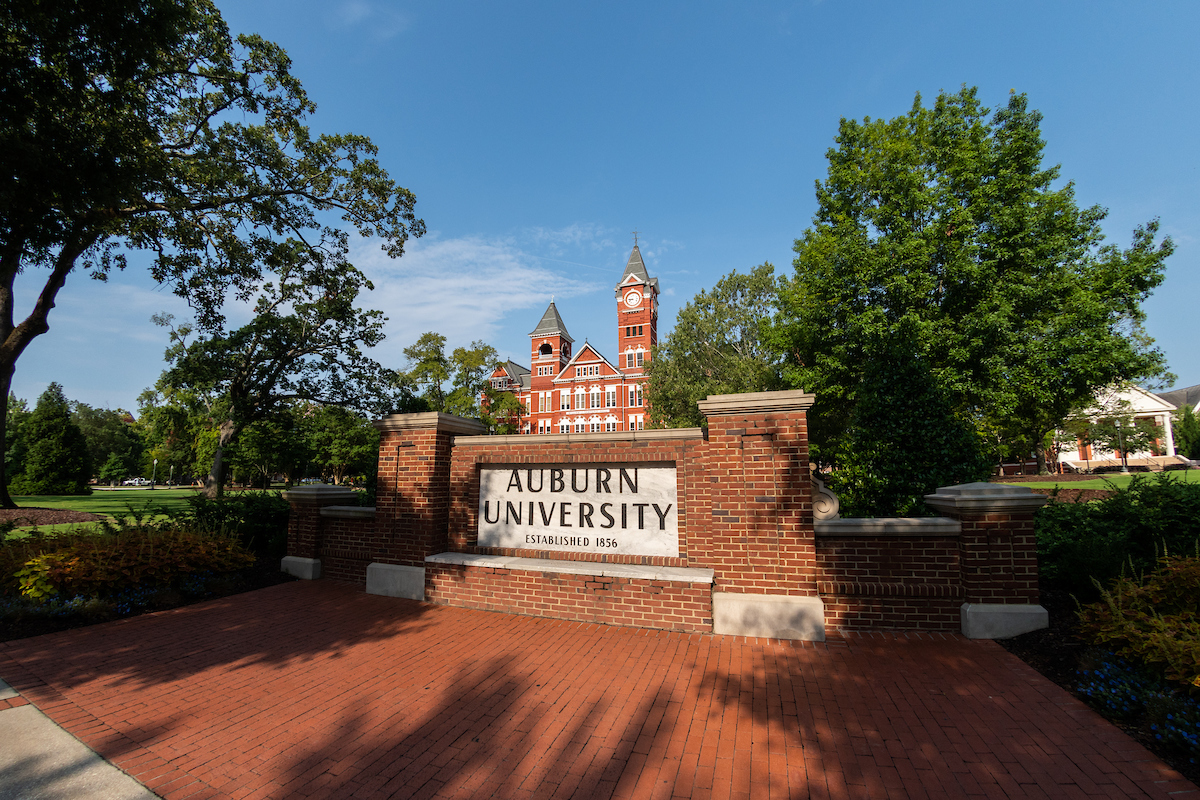
Categories: Engineering, Energy & the Environment, Health Sciences, Auburn In the News
Auburn Engineering faculty collaborating on COVID-19 sensing device
An assistant professor in the Auburn University Samuel Ginn College of Engineering has received a $200,000 grant from the National Science Foundation to develop a biosensor that will rapidly detect COVID-19.
COVID-19 belongs to a family of similar viruses known as beta coronaviruses. There have been two other such viruses that have emerged over the past two decades – Middle East respiratory syndrome (MERS) and severe acute respiratory syndrome, commonly referred to as SARS.
“There are similarities between the viruses that cause MERS, SARS and COVID-19 to the point where the name of the current virus is SARS-CoV-2,” said Robert Pantazes, assistant professor in the Department of Chemical Engineering and the principal investigator on the project. “What we’re doing is using computational tools and experimental methods to try to take advantage of all the resources that were already in existence for these other coronaviruses and convert them into tools that will work with COVID-19 and potential future coronavirus outbreaks.”
The research project, titled “Antibody-Based Nanoplasmonic Barcode Biosensors for COVID-19 Detection,” is led by Pantazes in collaboration with Pengyu Chen, assistant professor in the Auburn University Department of Mechanical Engineering and Jennifer Maynard, the Henry Beckman Professor of Chemical Engineering at the University of Texas.
Specifically, the team of researchers are developing an inexpensive, near-real-time, point-of-care diagnostic device that would meet the need to more quickly and more conveniently diagnose COVID-19 and understand its spread.
“My lab has a long history in developing nanomaterial-based biosensors for immune detection,” said Chen, a co-investigator on the project. “This biosensor design originated from a multiplex barcode sensor for high throughput sensitive cytokine measurements in human serum samples and can be further applied to saliva and throat swabs.”
The team plans to screen and select optimized antibodies that can target the spike protein on the surface membrane of the virus. They will then immobilize the selected antibodies on glass substrates to capture the virus.
“We will flow in signaling nanoparticles functionalized with detection antibodies that can attach to the captured virus to form a so-called ‘sandwich’ structure,” Chen said. “These nanoparticles can emit strong scattering light with specific color and can be visualized under microscope or even by human eyes. So if we have a positive response, we will observe a brightened barcode or colored test strip.”
The team is progressing toward a proof-of-concept device that can be used for lab testing to be followed by a prototype of an integrated test strip that could be potentially used at home or in clinics.
“The academic research community is working rapidly to reduce the impact that this pandemic has on our daily way of life,” Pantazes said.
BY CASSIE MONTGOMERY
Media Contact: Cassie Montgomery, cmontgomery@auburn.edu, 334.844.3668
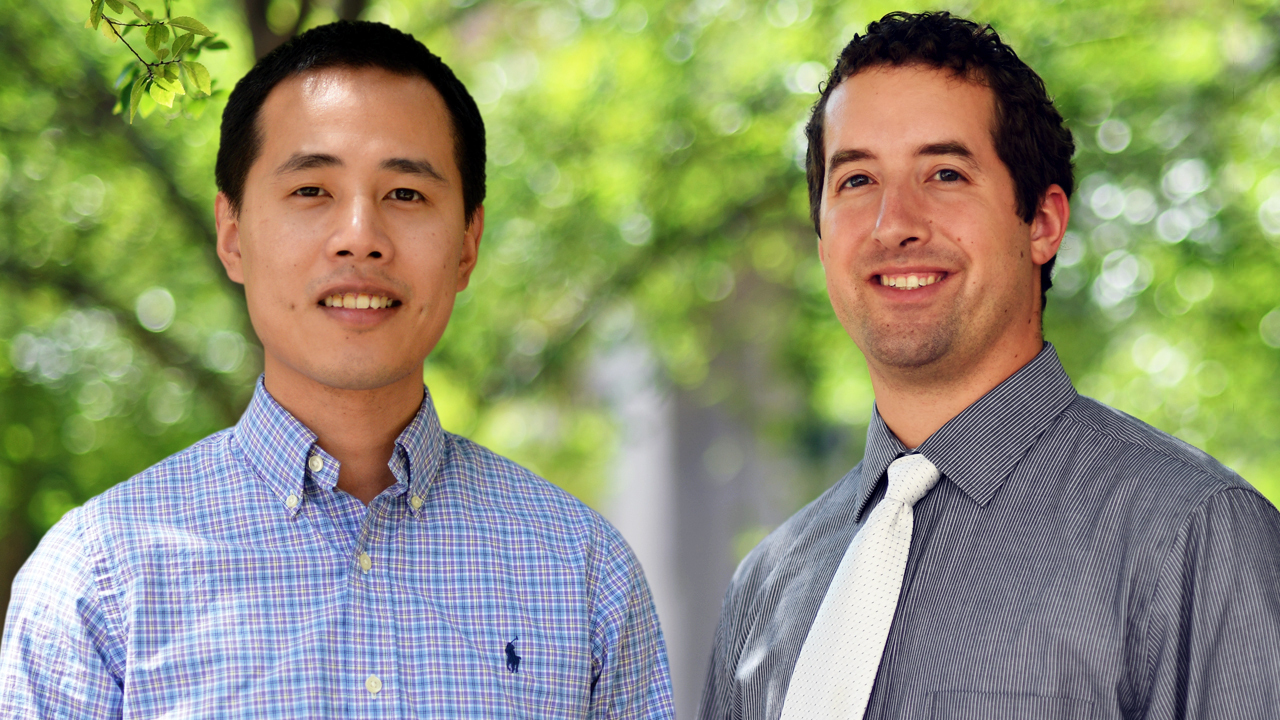
Assistant professors Pengyu Chen and Robert Pantazes
Categories: Engineering, Health Sciences
Auburn-developed microscope technology finds use on COVID-19 battlefront
An Auburn University-developed light microscope technology that has been on the market since the early 2000s has found new potential as a research tool on the COVID-19 battlefront.
CytoViva Inc., a subsidiary company of the Auburn Research Park-based firm Aetos Technologies Inc.—and the registered name for the patented microscope technology developed by Professor Vitaly Vodyanoy of Auburn’s College of Veterinary Medicine—has partnered with Joanna Sztuba-Solinska, an assistant professor of biological sciences in the College of Sciences and Mathematics, to aid in her research efforts.
A molecular virologist, Sztuba-Solinska has focused her research on the herpesviruses, but with the current COVID-19 pandemic, she has begun to expand her research focus to studying SARS CoV-2, the virus that causes the COVID-19 disease.
“This is a dramatically different type of virus,” she said. “I study Kaposi’s sarcoma-associated herpesvirus, which is a DNA virus that as most herpesviruses, coevolved with human population for very long time, thus, it is much less virulent.
“SARS CoV-2 is a newly emerged virus with probably the largest RNA genome, and the unique capacity of proofreading its mistakes—which you usually don’t see with RNA viruses. However, because it’s an RNA virus it has more so to speak evolutionary flexibility, meaning, it can undergo mutations, and go from animal reservoir to unfortunately human reservoir. Also, because it is a newly emerged virus, it has a much greater virulence, that is, the capacity to cause the disease or even death.”
While Sztuba-Solinska says she is optimistic that efforts underway to produce an effective COVID-19 vaccine will be successful, the process takes many months to develop, test and confirm the effectiveness and human safety of a new vaccine.
Meanwhile, her immediate research in the area of coronaviruses and COVID-19 is focused on working collaboratively with researchers in the Samuel Ginn College of Engineering on polymers to be used in antimicrobial materials for protective face masks, and in determining if the differences in types of coronaviruses can be detected visually by observing changes in their spectra.
“This is where I will be able to use the CytoViva microscope and its high-resolution capabilities,” she said, adding that she should have a unit set up and in operation in her lab within two weeks.
Introduced in 2004, CytoViva technology has been installed in hundreds of research laboratories. This includes leading national research laboratories, academic institutes and private industrial labs across the Americas, Asia and Europe.
CytoViva had principally focused on the use of its technology in the engineered nanomaterials world associated with drug delivery. In 2008, CytoViva integrated its proprietary hyperspectral imaging technology with the patented microscope developed by Vodyanoy to provide quantitative data analysis.
“Interestingly, though, viruses are nanoparticles, too,” said Byron Cheatham, CytoViva vice president for marketing. “Given CytoViva’s capability to detect live viruses like coronavirus, we have reached out to the biomedical community. We firmly believe that this technology can be an effective and efficient tool on the front against COVID-19 and other infectious diseases research.”
Vodyanoy, who was named a fellow of the National Academy of Inventors in 2013, added that “hyperspectral imagery of a single cell” would allow identification of the coronavirus infection.
The CytoViva microscope has won several major national awards: R&D Magazine's top 100 most technologically significant products introduced in 2006 and 2007 and the Nano 50 Award by NASA Tech Briefs, which recognizes the most exceptional new products in the nanotechnology field.
BY MITCH EMMONS
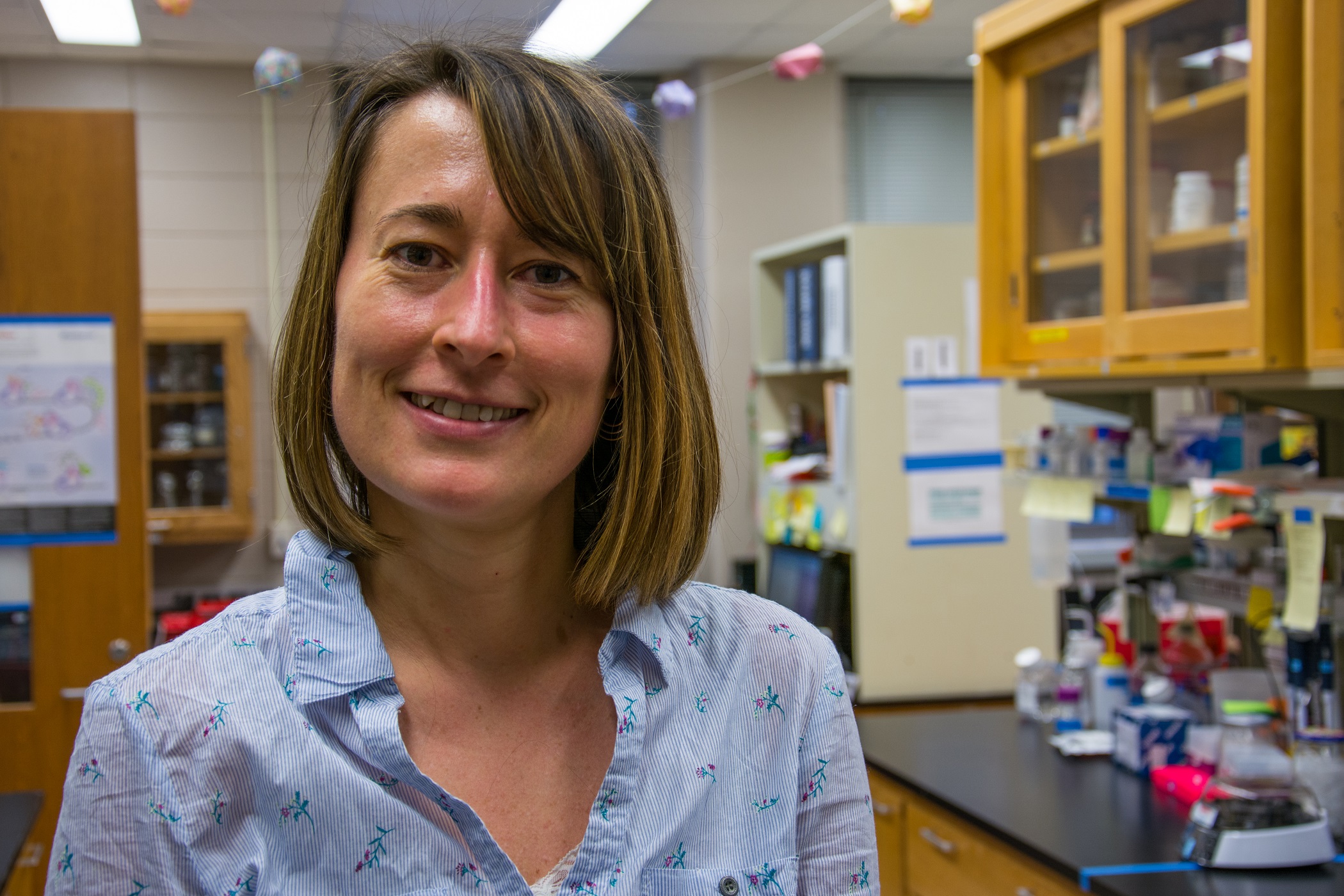
Joanna Sztuba-Solinska, assistant professor in Auburn’s College of Sciences and Mathematics, will use the CytoViva microscope to research SARS CoV-2, the virus that causes the COVID-19 disease.
Categories: Engineering, Health Sciences
Auburn design adapts CPAP machines into emergency ventilators
A team of Auburn engineers has developed a way to quickly and inexpensively convert CPAP machines into ventilators, one of the most important tools hospitals have for helping COVID-19 patients.
Continuous positive airway pressure, or CPAP, machines are commonly used to help people with obstructive sleep apnea breathe more easily during sleep. The Auburn design, called RE-INVENT, is an accessory that would safely repurpose a CPAP into a functional ventilator.
Ventilators are in short supply at hospitals across the nation as the number of patients requiring respiratory assistance due to COVID-19 rises.
Tom Burch and Michael Zabala, faculty in the Samuel Ginn College of Engineering’s Department of Mechanical Engineering, and Hayden Burch, a sophomore in mechanical engineering, initiated the project. Additional engineering faculty and alumni helped refine the mechanical design, control system, user interface and alarms. Critical respiratory care medical professionals contributed to the design of RE-INVENT.
“What started as pure intellectual curiosity quickly grew into an emotional race against time to potentially save lives,” said Zabala, an assistant professor. “We wanted to know if we could design a solution to solve the ventilator shortage problem.”
The RE-INVENT team focused on a design that would reliably ventilate a patient for an extended period. They also considered affordability and ease of manufacture given the urgent, national need for ventilators. The device can be assembled in as little as four hours using approximately $700 in readily available component parts in addition to a standard CPAP machine. A ventilator typical in many hospitals costs as much as $25,000, often more.
“I use a CPAP machine, and it does 90 percent of what a ventilator does,” said Burch, who initially proposed incorporating continuous positive airway pressure into the RE-INVENT design.
“These are difficult times,” he said. “Everybody who understands the gravity of the situation wants to do something to help, so it feels good to think you’ve helped with something that may have an impact.”
Auburn officials are exploring options for sharing the design with health care providers and potential manufacturers. The U.S. Food and Drug Administration has provided guidance to health care providers that may allow them to use RE-INVENT to help increase the availability of ventilators and other respiratory devices during the COVID-19 pandemic.
Health care providers interested in collaborating with the Samuel Ginn College of Engineering during the current public health emergency can learn more online about RE-INVENT.
BY JEREMY HENDERSON
Media Contact: Jeremy Henderson, jdh0123@auburn.edu, 334-844-3591
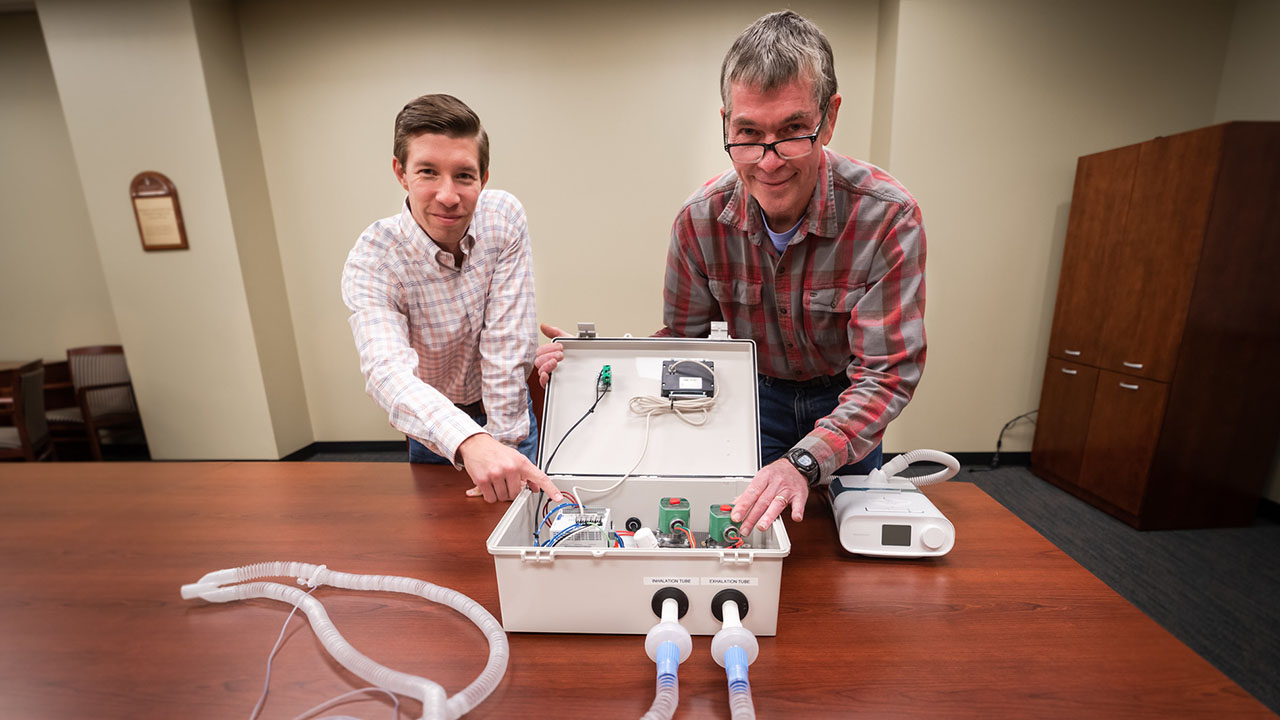 Michael Zabala and Tom Burch, faculty in the Samuel Ginn College of Engineering’s Department of Mechanical Engineering, and Hayden Burch, a sophomore in mechanical engineering, helped design RE-INVENT, an accessory that would safely repurpose a CPAP into a functional ventilator.
Michael Zabala and Tom Burch, faculty in the Samuel Ginn College of Engineering’s Department of Mechanical Engineering, and Hayden Burch, a sophomore in mechanical engineering, helped design RE-INVENT, an accessory that would safely repurpose a CPAP into a functional ventilator.
Categories: Engineering, Health Sciences, Auburn In the News
Three engineering faculty members receive NSF Early Career awards totaling more than $1.6 million
Three more Auburn Engineering faculty have been selected for the prestigious National Science Foundation Faculty Early Career Development (CAREER) program.
Majid Beidaghi, assistant professor of materials engineering, was awarded $544,586 to conduct fundamental research on advanced battery chemistries and components that have the potential for greater energy density and cycling performance.
In addition to enabling the design of an entirely new family of cathode materials for aluminium-ion batteries, the project also includes outreach and educational activities designed to support Alabama middle and high school students participating in STEM-related competitions. Educational modules focused on defining and performing science fair projects will be developed and disseminated to local schools through teacher training workshops. In addition, the educational plan utilizes "science and engineering as art" projects to foster creativity in science communication and dissemination of scientific concepts and discoveries among undergraduate and graduate students.
Pengyu Chen, assistant professor in materials engineering, will use a $500,000 award to develop a nanomaterial imaging system that can measure and track in real-time chemical signals secreted by immune cells. This novel research into how immune cells "talk" to each other will advance immune disease screening and diagnosis technologies.
New education experiences developed as part of this award will train K-12, undergraduate and graduate students about bioengineering and nanotechnology. Learning activities and public events will be performed to increase the public interests in material science and biotechnology.
David Roeuche, assistant professor in civil engineering, will use his $573,297 award to investigate new methodologies that harness post-windstorm reconnaissance data in order to promote the resilience of buildings and communities and reduce future losses and other impacts. Current capabilities for analyzing this data are ill-suited for efficient discovery and application. Roeuche’s project will develop a robust, theory-guided, statistical inference framework for learning from post-windstorm data that will transform the scale to understand and predict windstorm damage, specifically for low-rise buildings.
An interactive outreach platform will be developed to translate the project’s research findings to the general public and increase awareness of the critical factors affecting windstorm performance.
“We're proud of these three immensely talented researchers and faculty members,” said Christopher B. Roberts, dean of engineering. “We are thrilled that the NSF recognizes the same promise that we see in them."
Auburn Engineering faculty have now won four CAREER awards in just the past six months. Lauren Beckingham, assistant professor of civil engineering, received the National Science Foundation Faculty Early CAREER Development award in August for her work in environmental engineering.
BY JEREMY HENDERSON
Media Contact: Jeremy Henderson, jdh0123@auburn.edu, 334-844-3591
 Pengyu Chen, Majid Beidaghi and David Roeuche
Pengyu Chen, Majid Beidaghi and David Roeuche
Categories: Engineering
Auburn Engineering researchers awarded NASA grant to aid in future moon landings
Auburn University researchers recently received a grant from NASA through the organization’s Early Stage Innovations 2019 initiative for a project that aims to aid in future moon landings.
David Scarborough, assistant professor in aerospace engineering, serves as the principal investigator for a three-year, $538,789 grant, titled “Non-intrusive Approaches to Full-domain, Scaling-law Based Experimental Investigation of Crater Formation and Plume-surface Interaction Dynamics.” Scarborough is joined on this project by three co-investigators from Auburn’s Department of Aerospace Engineering: assistant professors Vrishank Raghav and Masatoshi Hirabayashi as well as Brian Thurow, the W. Allen and Martha Reed Professor and department chair.
“In the next decade, NASA is prioritizing returning humans safely to the moon, deploying scientific instruments on a variety of extraterrestrial bodies and ultimately enabling human exploration of Mars,” Scarborough said. “One of the most significant obstacles to achieving these objectives is our limited understanding of plume-surface interactions leading to crater evolution and lunar dust formation during descent and touch-down.”
The multi-disciplinary research team includes experts in propulsion, fluid mechanics, optical diagnostics and planetary science. The project centers on improving scientific understanding of plume-surface interactions, including the 3D crater evolution process and particle-jet interactions, caused by the interaction of rocket exhaust plumes with the planetary surface, under sub-atmospheric conditions using a multi-pronged non-intrusive diagnostic approach.
NASA selected 14 university research-led proposals, including three in the area of plume-surface interactions. These grants fund ambitious projects to mature and develop technology for future NASA missions.
“There are talented researchers outside of NASA, working at universities across the country, who are poised to help us look at challenging aspects of space exploration in new ways,” said Walt Engelund, deputy associate administrator of programs within NASA’s Space Technology Mission Directorate in Washington, D.C. “With the help of these institutions and principal investigators, NASA will accelerate innovation for critical space technologies.”
BY DREW DAWS
Media Contact: Cassie Montgomery, cmontgomery@auburn.edu, 334.844.3668
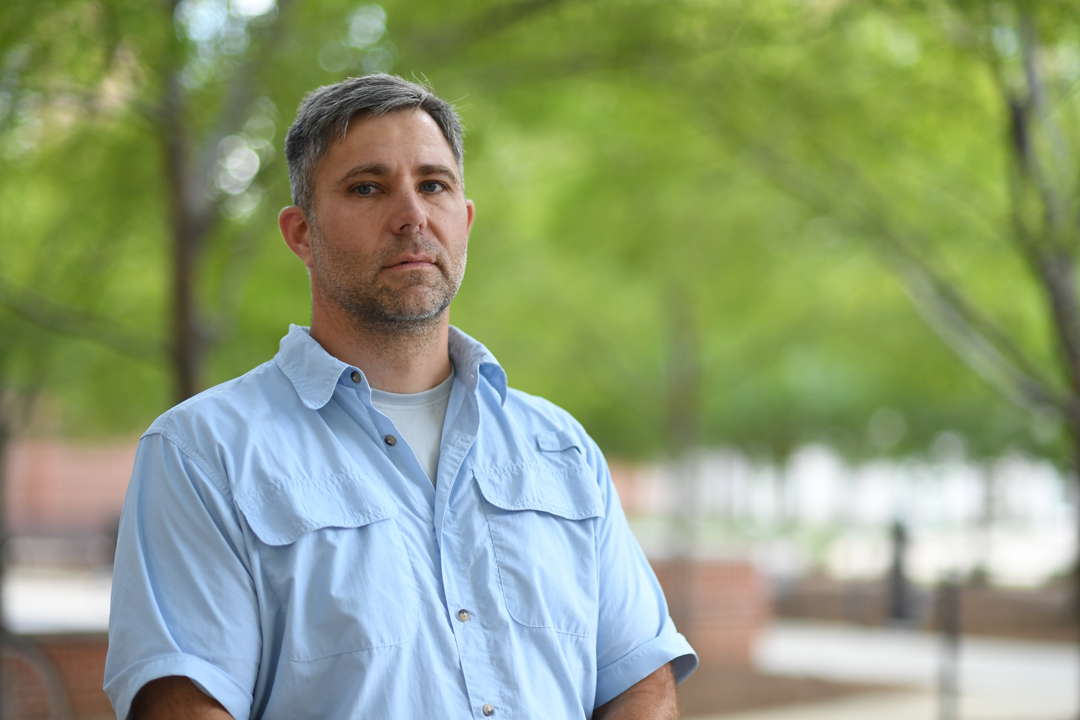 David Scarborough, assistant professor, Auburn University Department of Aerospace Engineering
David Scarborough, assistant professor, Auburn University Department of Aerospace Engineering
Categories: Engineering
Department head emeritus named fellow of National Academy of Inventors
David Irwin, emeritus head of the Department of Electrical and Computer Engineering, has been named a fellow of the National Academy of Inventors.
Irwin was one of 168 prolific academic innovators from around the globe inducted into this year’s class of fellows.
The NAI fellows program recognizes academicians “who have demonstrated a spirit of innovation in creating or facilitating outstanding inventions that have made a tangible impact on quality of life, economic development and the welfare of society,” according to NAI.
“Being selected as an NAI fellow is one of the highest professional distinctions an academic inventor can earn,” said Christopher B. Roberts, dean of engineering. “This is a fitting recognition for Dave’s accomplishments in conducting pioneering research and driving the development of new technologies in the field of electrical and computer engineering.”
In addition to his innovative research, Irwin is also author and co-author of numerous publications, papers, patents and presentations, including nine textbooks, some of which have been translated into foreign languages. One of the textbooks, “Basic Engineering Circuit Analysis,” is in the 12th edition and has been used nationally and internationally for 35 years.
Irwin’s accomplishments have afforded him prominent standing in the field of electrical and computer engineering. He is a life fellow of the Institute of Electrical and Electronic Engineers, a fellow of the American Society for Engineering Education and a fellow of the American Association for the Advancement of Science, in addition to being an inductee into the State of Alabama Engineering Hall of Fame’s Class of 2015.
Media Contact: Chris Anthony, chris.anthony@auburn.edu, 334.844.3447
BY CHRIS ANTHONY
 David Irwin
David Irwin
Categories: Engineering, Auburn In the News
Auburn University civil engineering assistant professor earns major NSF Award
An assistant professor in the Auburn University Department of Civil Engineering has been recognized with a National Science Foundation (NSF) Major Research Instrumentation Award worth more than $865,000.
Lauren Beckingham, who was also awarded an NSF Faculty Early CAREER Development Award in 2019, will serve as the principal investigator on the project, with the award supporting the acquisition of an X-ray Computed Nanotomography (nanoCT) system equipped with in-situ mechanical and thermal material testing that enables fundamental research in biological, geological and engineered materials.
This project will advance critical research in additive manufacturing, biomedical engineering, earth and environmental systems, energy and smart materials and sustainable, resilient infrastructure materials.
“In the few short years she has been at Auburn, Lauren has proven herself to be an incredible asset to our faculty, with her work being recognized by the NSF and other prestigious organizations,” said Steve Taylor, associate dean for research in the Samuel Ginn College of Engineering. “This award further highlights the success of our faculty and the research being conducted here at Auburn.”
Co-principal investigators on the project include Maria Auad, the W. Allen and Martha Reed Professor of chemical engineering and director of the Center for Polymer and Advanced Composites; Allan David, the John W. Brown Associate Professor of chemical engineering; Nima Shamsaei, the Philpott-WestPoint Stevens Distinguished Associate Professor and director of the National Center for Additive Manufacturing Excellence; and Marta Miletić, assistant professor of civil engineering.
This award will provide new research, outreach, teaching and training opportunities to students, faculty and staff at Auburn University and regional institutions.
Funds will allow high-imaging resolutions and in-situ testing capabilities that will be leveraged to enhance understanding of porosity formation and the integrity of additively manufactured parts, materials for biomedical applications and design of novel nanoparticle-based drug therapies, hydro-chemical-mechanical processes in natural and engineered geomaterials, structure-property relationships and design of energy and smart polymeric materials.
In addition, the project will enrich education through integration into undergraduate and graduate courses and will encourage underrepresented students to pursue STEM fields through inclusion in outreach activities including Auburn University's Women in Engineering camps and the Engineering Academic Excellence Program.
BY DREW DAWS
Media Contact: Austin Phillips, austinp@auburn.edu, 334-844-2444
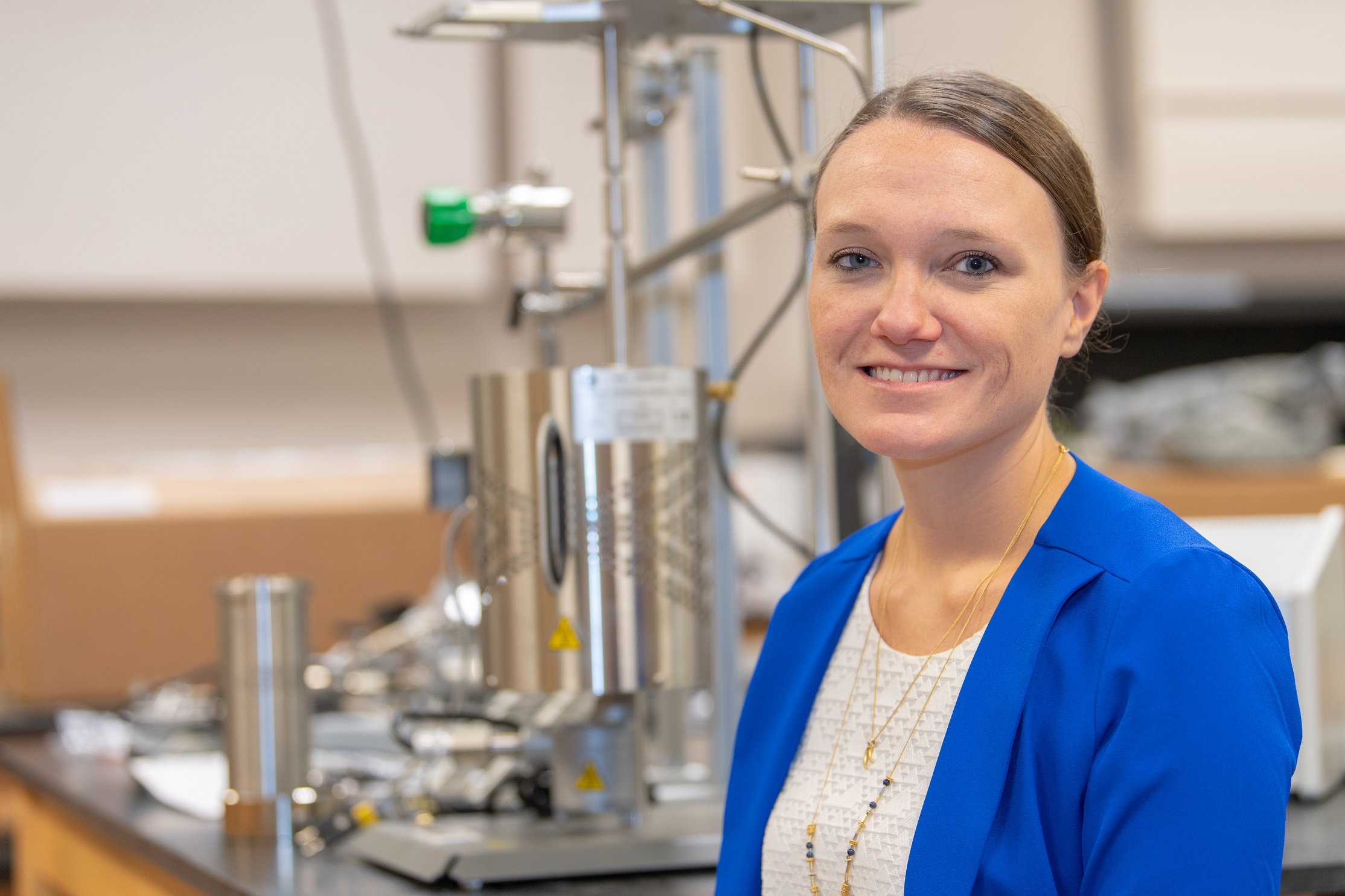
Lauren Beckingham
Categories: Engineering, Energy & the Environment
Auburn researchers receive NSF grant for interdisciplinary additive nanomanufacturing research
Two Auburn Engineering faculty members have been awarded a $400,000 National Science Foundation (NSF) grant to advance the science of additive nanomanufacturing of multifunctional materials and hybrid structures.
The project is led by Masoud Mahjouri-Samani, assistant professor of electrical and computer engineering, and Nima Shamsaei, director of Auburn University’s National Center for Additive Manufacturing Excellence (NCAME).
The grant will support research to develop an additive nanomanufacturing platform capable of producing multifunctional nanoparticles on demand to fabricate durable hybrid structures and devices layer-by-layer. Printing nano-scale multifunctional materials is challenging because of minimal source materials and inadequate fabrication systems.
As principal investigator, Mahjouri-Samani will generate a stream of multifunctional materials, sinter them on a submicroscopic scale using laser technology and study their behaviors on various printed surfaces.
“Today, additive manufacturing is mainly focused on metallic and structural components, which are not functional materials,” Mahjouri-Samani said. “What we proposed here is to combine our knowledge of additive manufacturing with a variety of multifunctional materials and, for the first time, creating multifunctional devices that can be printed on any conformal surface. We are hoping this technique can revolutionize the way we are printing multifunctional and electronic devices.”
One of the challenges the researchers face in this project is ensuring the robustness and long-term functionality of these materials. Shamsaei, an associate professor of mechanical engineering, will lend his expertise by evaluating the durability and structural integrity of the 3D-printed hybrid structures.
“We are definitely excited about having this technology and research at Auburn,” Shamsaei said. “At our additive manufacturing center, most of our capabilities lie in fabricating metallic materials with micro-level accuracy. This research will be a new addition not only to our center, but also to the field of additive manufacturing.”
This project has the potential to benefit the U.S. economy through its applications in aerospace, energy, biomedical and the automotive industries by conducting fundamental research on the intersection of additive manufacturing and nanotechnology. Visit the NSF website for more information about the project.
BY BRIAN WESLEY
Media Contact: Chris Anthony, chris.anthony@auburn.edu, 334.844.3447
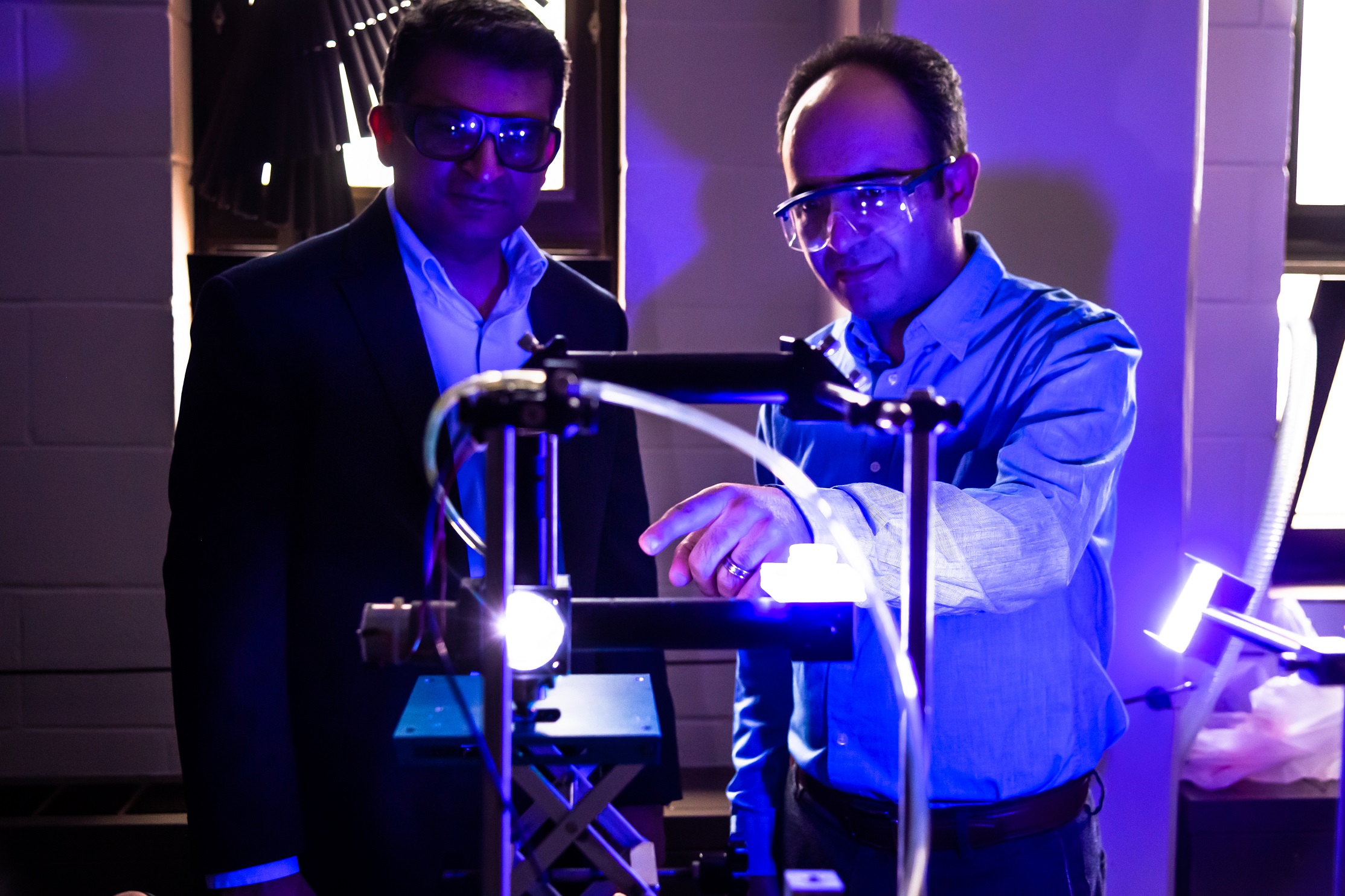
Nima Shamsaei, director of Auburn University's National Center for Additive Manufacturing Excellence (NCAME), with Masoud Mahjouri-Samani, assistant professor of electrical and computer engineering
Categories: Engineering
Engineering professor made Auburn the place to study fracture mechanics
Hareesh Tippur likes to ask why and how.
Why do materials bend? Why do they break? How do structures fail?
Failure of materials and structures is inevitable as they all contain invisible defects. That’s what keeps Tippur fascinated with fracture mechanics—the science of studying objects containing cracks—at Auburn University.
Tippur, the McWane Professor of Mechanical Engineering and associate chair for graduate studies in the Samuel Ginn College of Engineering, is one of this year’s two recipients of the university’s Faculty Award for Creative Research and Scholarship. The honor acknowledges the research achievements and contributions of faculty who have distinguished themselves through research, scholarly works and creative contributions to their fields.
It may seem odd to hear that anyone studies failure, but everyone should be glad someone does.
Take for instance, an airplane. The impact from a pebble or tool drop takes micro seconds to cause a miniscule crack in a fuselage, but it may not produce significant visible damage until the airplane is racing down the runway at 170 mph or flying at 30,000 feet. Tippur wants to understand the safety of that fuselage.
Fracture mechanics is all about understanding why engineering materials, such as carbon fiber reinforced composite or aluminum, fail, how they fail and how to prevent such failures.
Tippur said fracture prevention is the ultimate goal, but one must first understand the material’s behavior—how, when and why something bends, breaks or fails.
Rather than manufacturing airplanes with aluminum, carbon fiber reinforced composites are increasingly used because they are half the weight and twice as strong as aluminum.
“Therefore, it’s not just aluminum anymore. The new airplane structures contain over 50 percent composite materials. What is a composite material? Microscopically it is mats of carbon fibers and glued with epoxy that you use to fix things around your house,” said Tippur. “That’s basically it.”
Composite materials are inherently complex in terms of microstructure and catastrophic failures are possible, if the design is poor.
“In order for you to design it very well, you need to understand the fracture mechanics of such materials very well,” he said.
Engineering from the start
Growing up in India, Tippur was likely destined for a career in engineering. The son of a civil engineer, he was initially fascinated with civil structures and then airplanes. His plan was to get an advanced degree and do research at an aerospace or defense industry in his native country.
It is during his thesis research at the prestigious Indian Institute of Science, Tippur developed his fascination with structural failure. With an advanced degree, Tippur spent about a year working at one of India’s defense research and development labs. The experience wasn’t what he had expected, so his advisor suggested he go to the United States for a doctoral degree.
The advisor had done so, eventually returning to India to teach future engineers and perhaps Tippur could do the same.
At the State University of New York-Stony Brook, Tippur continued to focus on why and how structural materials fail. He learned to use lasers and light to make sophisticated measurement and study fractures in materials. He couldn’t solve the problem then, let alone today.
No one can.
A ‘one-size-fits-all’ solution to the problem has evaded researchers because structural materials continue to advance. As long as new materials are produced and totted for particular qualities, there can only be specific answers to why it would inevitably fail.
Take automobiles, for instance. Steel was primarily used for decades because it was structurally strong, but then lighter materials like aluminum, composites and plastic came along, making automobiles lighter and more fuel efficient. This trend is bound to continue.
Tippur said today’s challenge is to create materials that meet multiple requirements, such as lightweight, strong, tough yet sustainable and reusable. A material that “checks all these boxes” is a long, long, long-term goal of materials engineers, he said.
Studying Behavior
After SUNY, Tippur was did post-doc work at Caltech, where he devised optical tools to measure high speed fracture events.
“Materials behave very differently in slow and fast loading events, like squeezing a wad of silly putty or bouncing it off the floor,” he said. “How fractures occur at high speeds therefore aren’t like the slow speed ones.
“The human eye can see a slow loading event, but a fast one, like cracking of a glass window, happens too quickly for humans to perceive.”
Tippur uses light and high-speed photography to capture what we can’t see.
“The latest camera we have here records events at 5 million frames per second. It’s hard to convince people we can do that,” he admitted. “But it is necessary because fracture events during projectile impact, shock and blast happen extremely fast, like mile-a-second speed crack growth occurs in glass when impacted. For me to understand the full spectrum of material behavior, I need to understand what happens at very high speeds and at small scales.”
Tippur came to Auburn in 1990. He liked the proximity to NASA Marshall Space Flight Center in Huntsville and the fact that no one was studying fracture mechanics on the Plains.
“I thought I could contribute something new at Auburn,” he said.
And he has.
“Now any time fracture mechanics, particularly high-speed fractures, come to anybody’s mind, they think of Auburn, and hopefully me,” Tippur said.
Certainly Tippur has had opportunities to teach and conduct research elsewhere over the past 29 years, but there are some significant factors that have kept him here.
“I am fortunate to have attracted many good students over the years. I have also been successful in gathering resources to build cutting-edge facilities here,” he admitted. “If not, I would have looked elsewhere.”
Tippur said he maintains high standards for his undergraduate and graduate students and strives to be a good mentor to them.
“Any student who walks into my lab knows they are signing up for something interesting, unique, but at the same time, very challenging,” he said.
To Tippur, earning the Faculty Award is a testament to his students and the work they produce together. Many of his students go on to work at national labs, Fortune 500 companies or academia because of Tippur and an Auburn Engineering education.
“It makes this job quite satisfying to hear their success stories,” he said. “I’m still full of ideas, so as long as there are resources and the school keeps encouraging me to do what I am good at, I’ll keep plugging away.”
BY AMY WEAVER
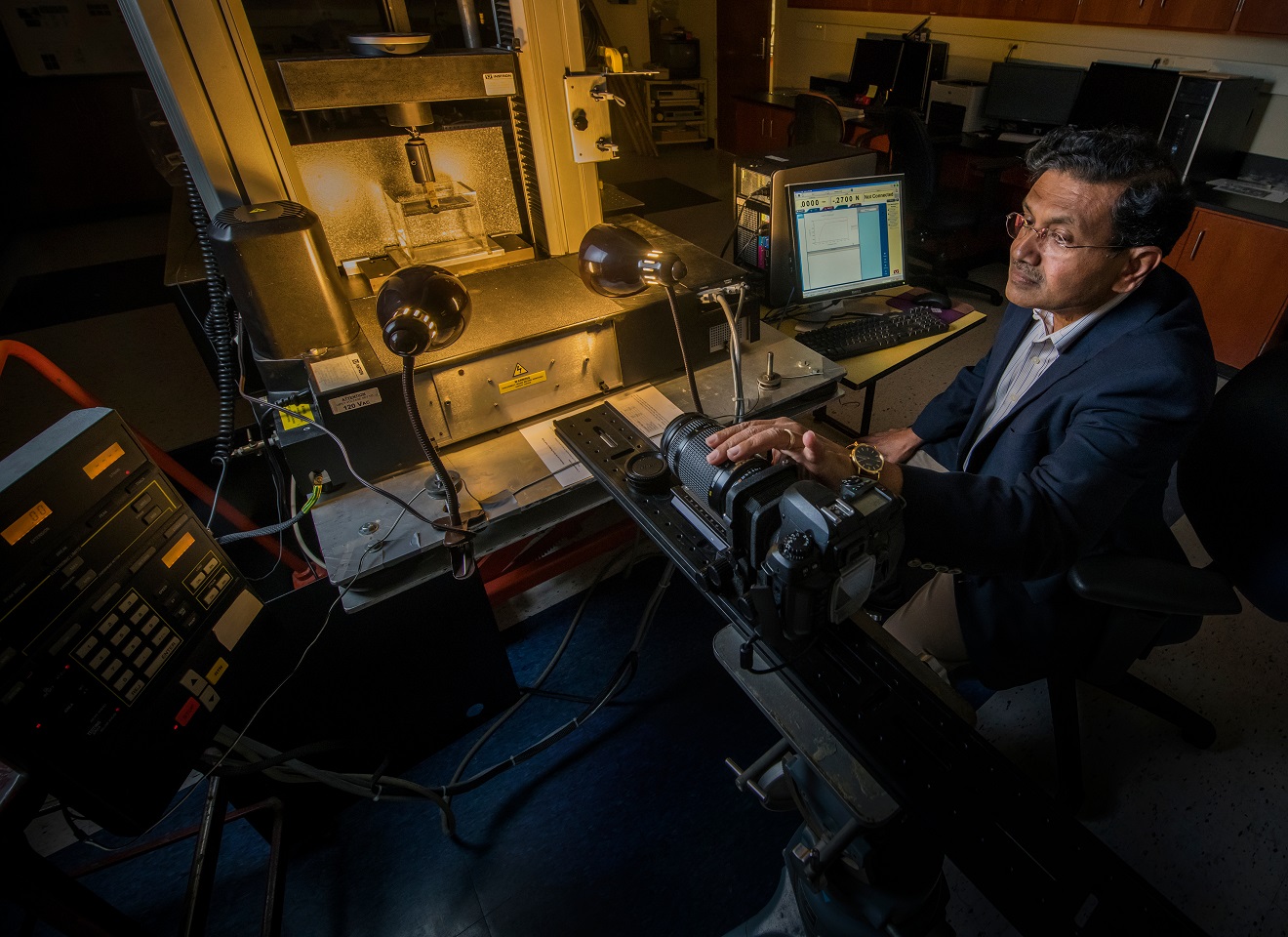
Hareesh Tippur, the McWane Professor of Mechanical Engineering and associate chair for graduate studies in the Samuel Ginn College of Engineering
Categories: Engineering
Auburn Engineering posts banner year in research
The Auburn University Samuel Ginn College of Engineering posted a banner year for externally sponsored research awards in fiscal year 2019, bringing in $59.6 million in awards from Oct. 1, 2018 to Sept. 30, 2019.
“I give full credit to our faculty. They are helping us compete against the best research institutions in the country,” said Christopher B. Roberts, dean of engineering. “Their outstanding research and scholarship are driving our college and Auburn University forward, and I am confident that their continued work will sustain us among the nation’s top engineering research institutions.”
In addition, Auburn Engineering’s research expenditures have placed the college in the top 10% of engineering institutions for the past 15 years, according to data from the American Society of Engineering Education.
Notable research awards from this year include:
- A $5.2 million NASA contract for the Rapid Analysis and Manufacturing Propulsion Technology project (principal investigator: Nima Shamsaei)
- A $1.9 million National Institutes of Health grant for rapid immune diagnostics (principal investigator: Pengyu Chen)
- A $700,000 National Science Foundation Major Research Instrumentation award to study non-equilibrium plasmas (principal investigator: Nicholas Tsolas)
- A $315,000 National Science Foundation Faculty Early CAREER Development award for improving simulation of mineral reaction rates (principal investigator: Lauren Beckingham)
Auburn Engineering has five strategic research areas that form the heart of the college’s research portfolio: advanced manufacturing and materials; cybersecurity and intelligent systems; energy and environment; infrastructure and transportation; and biomedical and health systems engineering.
Read more about Auburn Engineering’s research at eng.auburn.edu/research.
BY CHRIS ANTHONY
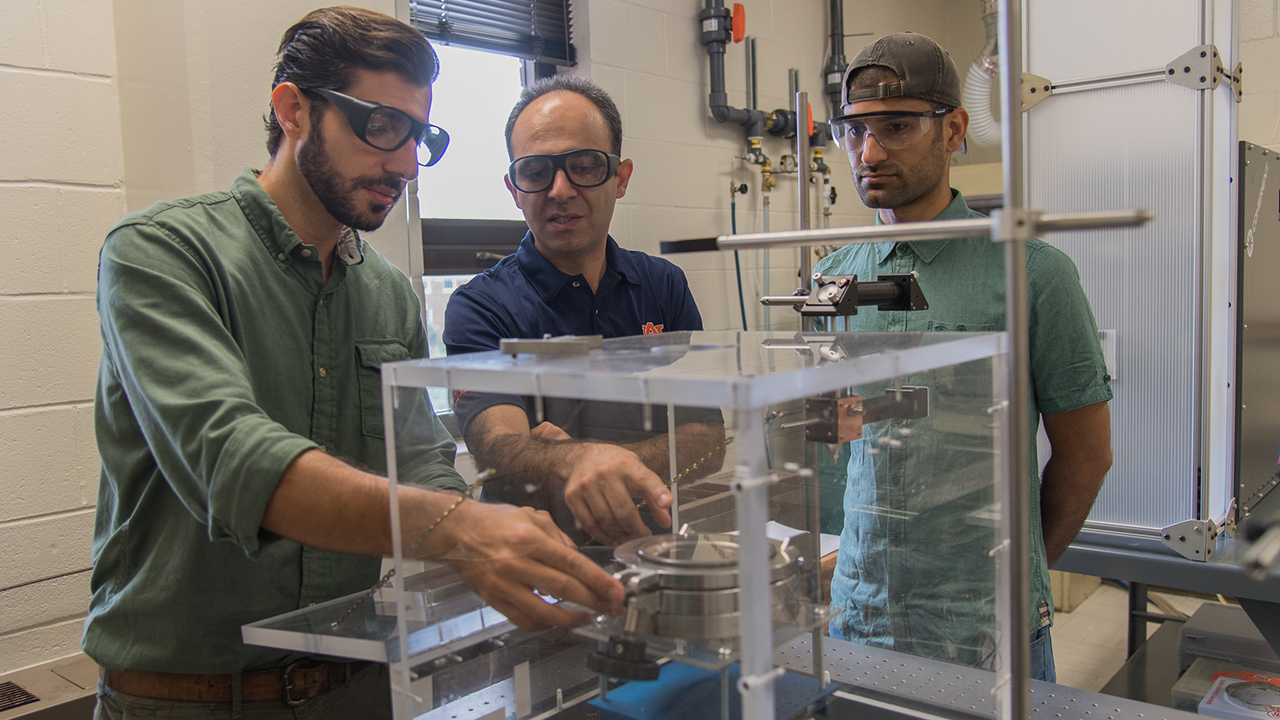
Researchers are pictured in assistant professor Masoud Mahjouri-Samani's Laser-Assisted Science and Engineering lab.
Categories: Engineering
NASA awards $5.2 million contract to Auburn University’s National Center for Additive Manufacturing Excellence
Public-private partnership to improve liquid rocket engine performance
Published: April 01, 2019
Auburn University’s Samuel Ginn College of Engineering today announced that NASA has awarded a $5.2 million contract to its National Center for Additive Manufacturing Excellence, or NCAME, to develop additive manufacturing processes and techniques for improving the performance of liquid rocket engines. The three-year contract is the latest expansion of a longstanding public-private partnership between Auburn and NASA’s Marshall Space Flight Center.
“For decades, Auburn engineers have been instrumental in helping the U.S. achieve its space exploration goals,” said Christopher B. Roberts, dean of Auburn’s Samuel Ginn College of Engineering. “This new collaboration between NASA and our additive manufacturing researchers will play a major role in developing advanced rocket engines that will drive long-duration spaceflight, helping our nation achieve its bold vision for the future of space exploration.”
The research and development covered under the new contract is part of NASA’s Rapid Analysis and Manufacturing Propulsion Technology, or RAMPT, project, which focuses on evolving light-weight, large-scale novel and additive manufacturing techniques for the development and manufacturing of regeneratively cooled thrust chamber assemblies for liquid rocket engines.
“This partnership with Auburn University and industry will help develop improvements for liquid rocket engines, as well as contribute to commercial opportunities,” said Paul McConnaughey, deputy director of Marshall Space Flight Center. “The technologies developed by this team will be made available widely to the private sector, offering more companies the opportunity to use these advanced manufacturing techniques.”
NCAME will support the RAMPT project in creating a domestic supply chain and developing specialized manufacturing technology vendors to be utilized by all government agencies, academic institutions and commercial space companies. The announcement was made at the biannual four-day meeting of ASTM International’s Committee on Additive Manufacturing Technologies (F42) hosted by Auburn University at the Auburn Marriott Opelika Resort & Spa at Grand National in Opelika, Alabama.
Auburn University and NASA established NCAME in 2017 to improve the performance of parts that are created using additive manufacturing, share research results with industry and government collaborators and respond to workforce development needs in the additive manufacturing industry. The center is also one of the founding partners of the newly established ASTM International Additive Manufacturing Center of Excellence at Auburn.
Leading Auburn’s team as principal investigator for the RAMPT project is Nima Shamsaei, NCAME director. Serving as project manager is Mike Ogles, director of NASA programs in the Samuel Ginn College of Engineering.
“This contract is a giant leap towards making Alabama the ‘go to state’ for additive manufacturing,” Ogles said. “We look forward to growing our partnership with NASA, industry and academia as we support the development of our nation’s next rocket engines.”
Auburn University is a nationally ranked land grant institution recognized for its commitment to world-class scholarship, interdisciplinary research with an elite, top-tier Carnegie R1 classification and an undergraduate education experience second to none. Auburn is home to more than 30,000 students, and its faculty and research partners collaborate to develop and deliver meaningful scholarship, science and technology-based advancements that meet pressing regional, national and global needs. Auburn's commitment to active student engagement, professional success and public/private partnership drives a growing reputation for outreach and extension that delivers broad economic, health and societal impact. Auburn's mission to educate, discover and collaborate drives its expanding impact on the world.
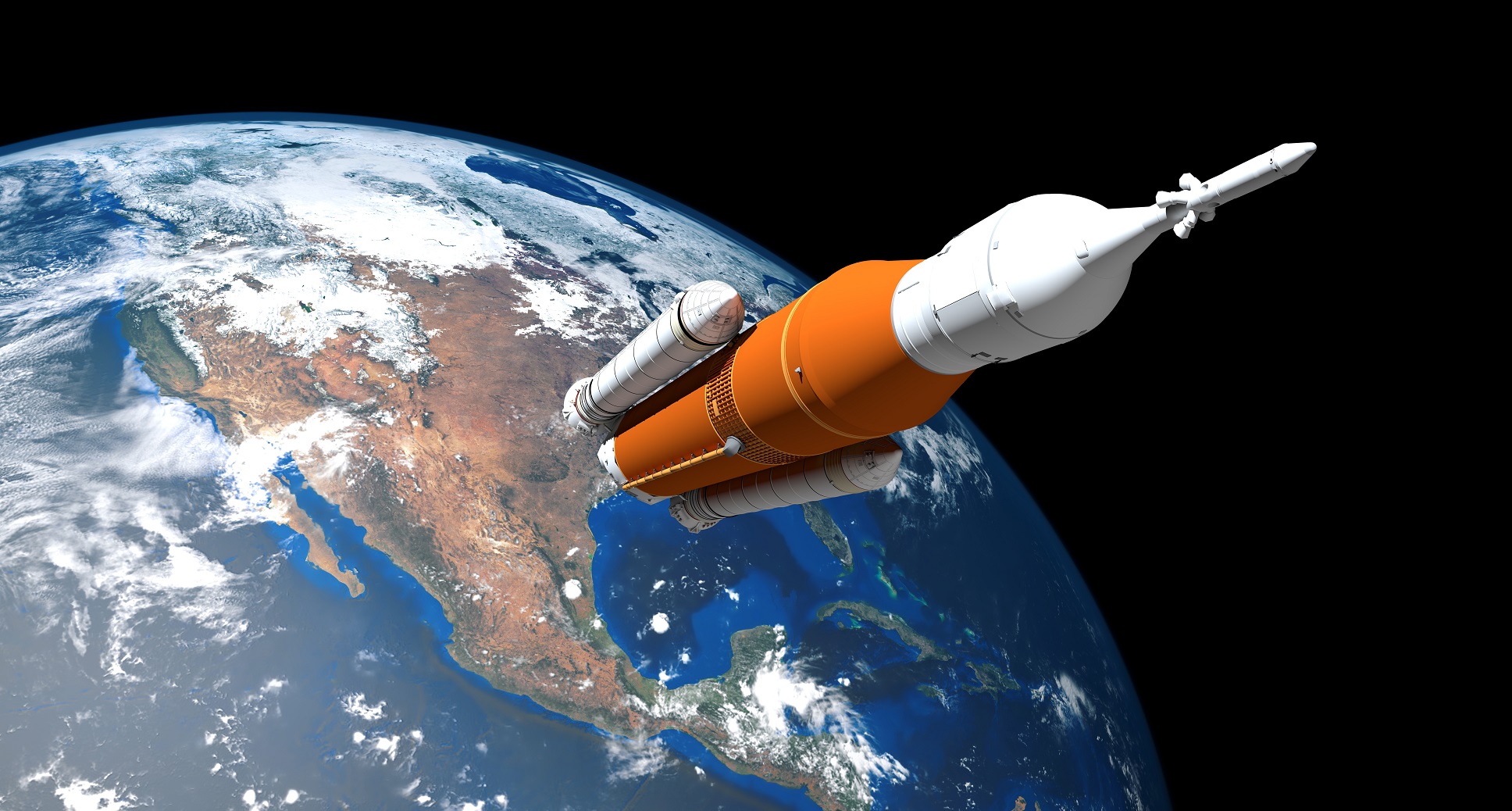
Categories: Engineering
Nearly 600 Auburn students showcasing their research and creativity April 9 at Auburn Research Student Symposium
Nearly 600 Auburn University students with a flair for research and creativity will showcase their talents when they gather for the annual Auburn Research Student Symposium.
With projects ranging from chemical engineering to plant pathology to architecture and design, the symposium on April 9 will provide Auburn and Auburn Montgomery students an opportunity to share their discoveries university-wide. The daylong event will take place in the Student Center.
Undergraduate and graduate students from almost every department have registered to participate through posters, oral presentations and creative scholarship displays. Approximately 400 of the young researchers will present posters and displays more than 180 will give 10-minute talks, all under the watchful eyes of judges who will award top honors in a variety of university-wide and college-specific categories.
An awards ceremony and reception will be held April 18 at 5 p.m. in the Student Center ballroom. The keynote speaker will be Michael Zabala, assistant professor of mechanical engineering, who earned his bachelor’s degree at Auburn in 2007.
Steve Taylor, chair of the Research Symposia Committee and associate dean for research in the Samuel Ginn College of Engineering, said, “Our students’ innovative research covers many areas, from projects in STEM disciplines [science, technology, engineering and mathematics] to the arts and humanities. They are working with our world-class faculty on life-changing projects that could shape new developments in many fields.”
Following the April 9 symposium, Nobel Laureate in Chemistry George P. Smith will visit Auburn University and the College of Veterinary Medicine April 10-11. Professor Smith will present a public lecture at 2 p.m. April 10 in The Hotel at Auburn University and Dixon Conference Center auditorium, which will be followed by a reception. On April 11, he will be available to meet with faculty and students at the College of Veterinary Medicine.
A fall event, the Auburn Research Faculty Symposium, will be held in September to recognize faculty excellence in research and creative scholarship.
More information about the student symposium is available at www.aub.ie/researchstudentsymposium or by contacting Taylor at taylost@auburn.edu.
WRITTEN BY CHARLES MARTIN

Auburn students with a flair for research and creativity will showcase their talents when they gather April 9 in the Student Center for the annual Auburn Research Student Symposium. Pictured, student Elizabeth Bankston discusses her research poster with Steve Taylor, chair of the Research Symposia Committee, at last year’s symposium.
Categories: Engineering, Cyber, Energy & the Environment, Health Sciences, Transportation, Food Systems, Security, Creative Scholarship
Auburn University achieves research milestone with ‘R1’ Carnegie classification
In another affirmation of its drive forward to excellence, Auburn University achieved a research milestone Monday - being elevated to an “R1” institution by the Carnegie Classification of Institutions of Higher Education.
The announcement follows a concerted effort by Auburn to elevate its commitment to life-saving research, beginning with an announcement by Auburn President Steven Leath in December 2017 and subsequent awarding of $5 million for three years toward the Presidential Awards for Interdisciplinary Research, or PAIR. An R1 designation by Carnegie is reserved for doctoral universities with the highest levels of research activity.
Among 120 institutions to receive the R1 designation Monday, Auburn was listed in the top 100 of such universities, raising its classification from an already lofty “high research” R2 classification to Monday's “very high research activity” R1 label.
“This tremendous designation acknowledges the hard work involved in the pioneering discoveries happening at Auburn every day,” said Leath, who was recently named one of seven new members appointed by President Trump to the National Science Board, a policy-making body of the National Science Foundation. “We are grateful to the university’s faculty and staff, especially Graduate School Dean George Flowers, for their unwavering commitment to elevating Auburn’s profile as a world-class academic institution.
“Auburn is on the move, and this prestigious distinction recognizes Auburn’s critical role in creating new knowledge and helping others live better lives.”
Universities considered for the R1 designation must have awarded at least 20 research/scholarship doctoral degrees and had at least $5 million in total research expenditures, according to Carnegie’s classification website. Auburn has grown its research efforts in both STEM and non-STEM areas, furthering its institutional commitment to offer solutions to real-world problems and grow its reputation as a go-to university in providing results that transform and inspire.
“Auburn University is known for its innovative and transformational research, and receiving the R1 classification is a significant accomplishment,” said Jennifer Kerpelman, interim vice president for research. “This classification recognizes the dedication, commitment and hard work of Auburn’s faculty and student researchers across all disciplines.”
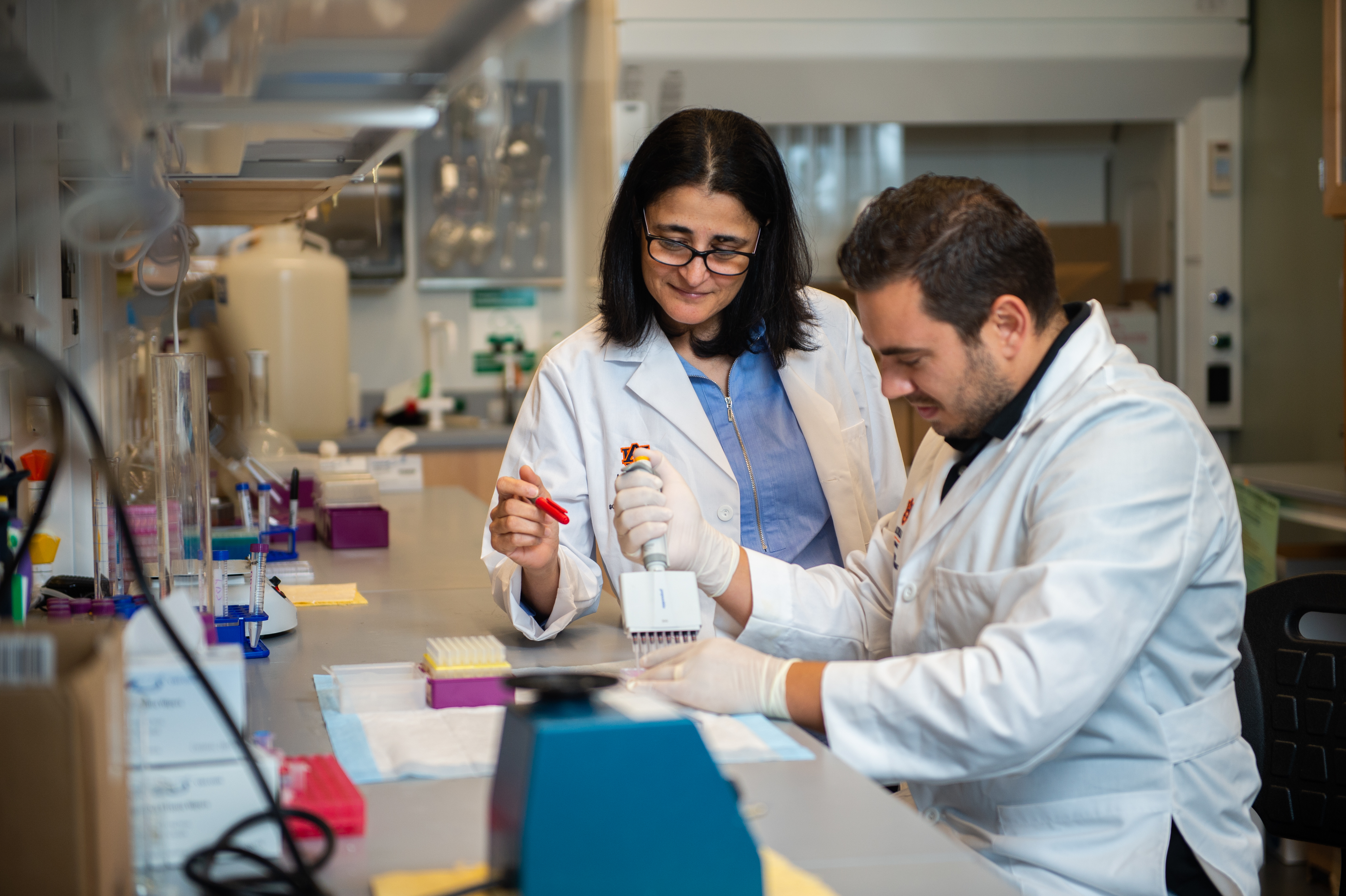
Dr. Amal Kaddoumi, left, a professor in Auburn’s Department of Drug Discovery and Development, works in a lab with graduate research assistant Sweilem Al Rihani. Kaddoumi is leading a multi-disciplinary team in an investigation of oleocanthal, a molecule that appears naturally in extra-virgin olive oil, as a novel preventative treatment for such diseases as Alzheimer’s or dementia.
Categories: Engineering, Cyber, Energy & the Environment, Health Sciences, Science, Technology, Engineering and Mathematics (STEM), Transportation, Food Systems, Auburn In the News, Creative Scholarship
Auburn, partner organizations sign agreements for additive research centers
Auburn University, ASTM International and other partner organizations on Monday celebrated the launch of two new centers of excellence in additive manufacturing aimed at accelerating research and development, standardization and innovation in that field, also known as 3-D printing.
Global standards developer ASTM International launched its Additive Manufacturing Center of Excellence with Auburn University, NASA, manufacturing technology innovator EWI and the UK-based Manufacturing Technology Centre. Auburn and NASA also formally launched the National Center for Additive Manufacturing Excellence.
ASTM International President Katharine Morgan said, “The synergy among EWI, MTC, Auburn and NASA will help fill the gaps in technical standards that this industry needs to drive innovation. As a result, we’ll empower industries that are eager to apply additive manufacturing to aerospace, auto, medical and more.”
AMCOE’s advisory board comprised of U.S. and international public and private sector leaders met for the first time today while other meetings involved research and development as well as education and workforce development teams. The events come on the heels of AMCOE’s international launch on July 13 at the MTC, where European industry and government officials gathered to celebrate this initiative.
Auburn University President Steven Leath said, “Auburn is committed to growing research, solving real-world problems and establishing partnerships that support these transformative initiatives, such as our thriving additive manufacturing program. By investing in skilled researchers and first-rate facilities, we aim to drive additive technology forward and unleash its full potential. We look forward to continuing to work with our industry and government collaborators.”
Auburn University is in the final stage of renovations to the Gavin Engineering Research Laboratory, which will in part house additive manufacturing research funded through the centers.
Auburn was selected for the two research partnerships in March.
Media Contact: Chris Anthony, chris.anthony@auburn.edu, 334.844.3447

Components made through additive manufacturing are shown in the additive manufacturing lab in Wiggins Hall at Auburn University.
Categories: Engineering, Health Sciences, Transportation, External Engagement
Lall receives advisory board's Advancement of Research and Scholarship Achievement Award
At its recent spring meeting, Auburn University’s Research and Economic Development Advisory Board selected Pradeep Lall, the McFarlane Endowed Professor in Auburn’s Department of Mechanical Engineering, as the 2018 recipient of its Advancement of Research and Scholarship Achievement Award. The award recognizes Lall for his research achievements in the fields of harsh-environment electronics and flexible electronics.
The advisory board is made up of more than 40 industry professionals from across the country who actively support Auburn’s research efforts. The group established the award in 2014 to recognize significant research and scholarly activity that exemplify and advance Auburn’s research and scholarship mission. The recipient of the annual award receives a $25,000 grant to further his or her research.
Lall, director of Auburn’s NSF Center for Advanced Vehicle and Extreme Environment Electronics, is the author or co-author of two books, 14 book chapters and more than 500 journal and conference papers in the field of electronics reliability, safety, energy efficiency, and survivability. He serves on the NextFlex Institute’s technical council and governing council. Lall spearheaded research efforts in flexible electronics and led Auburn’s proposal team for the NextFlex Flexible Hybrid Electronics Manufacturing Institute.
A fellow of the Institute of Electrical and Electronics Engineers, or IEEE, and the American Society of Mechanical Engineers, Lall has received numerous awards for his research. He is the recipient of the IEEE Sustained Outstanding Technical Contributions Award in 2018 and the National Science Foundation Schwarzkopf Award for Technology Innovation in 2016. With significant funding from public-private partnerships, Lall’s work has proven beneficial to the aerospace and automotive industries and in military vehicles and defense systems.
“The Research and Economic Development Advisory Board has made a great choice in honoring Dr. Lall with this award,” said Jennifer Kerpelman, Auburn’s interim vice president for research. “He is a very accomplished researcher with a strong track record, and his work is a great asset to Auburn University,” she added.
Lall’s research focuses on the development of methods for assuring survivability of electronics to high shock forces, vibration and extreme temperatures. He is best known for his research in the areas of reliability and prognostics for electronic systems operating in harsh environments, such as:
- Combined exposure to temperature and vibration under the hood of an automobile for electronics mounted on-engine or on-transmission;
- Extreme cold or extreme hot environmental temperatures for prolonged periods of time experienced in military and defense applications;
- High g-forces experienced by electronics inside missiles;
- Corrosive attack of salt fog for electronics operating on ships at sea.
“Electronic systems have taken an increasingly important role in automotive design and operation,” Lall said. “Traditional automotive electronics at one time consisted of climate control and entertainment systems. Roll the clock forward to the present day, and automotive electronics have expanded to include driving assists such as antilock braking systems, traction control systems, adaptive cruise control, lane departure warning systems and more. Failure of one of these systems is no longer an inconvenience; it may be critical to the safe operation of the vehicle.”
 Pradeep Lall, McFarlane Endowed Professor in Auburn’s Department of Mechanical Engineering, has been named by Auburn’s Research and Economic Development Advisory Board as the 2018 recipient of its Advancement of Research and Scholarship Achievement Award.
Pradeep Lall, McFarlane Endowed Professor in Auburn’s Department of Mechanical Engineering, has been named by Auburn’s Research and Economic Development Advisory Board as the 2018 recipient of its Advancement of Research and Scholarship Achievement Award.
Categories: Engineering
Lall wins IEEE Outstanding Sustained Technical Contributions Award
Pradeep Lall, MacFarlane Endowed Professor in department of mechanical engineering, is the 2018 recipient of the IEEE’s outstanding Sustained Technical Contributions Award for outstanding sustained contributions to the design, reliability and prognostics for harsh environment electronics systems.
The award recognized Lall’s seminal contributions to the field of harsh environment electronics. Lall is widely credited with the development of leading indicators of failure for prognostics health management of electronic systems to allow for early identification of faults that may impair system operation. Lall is the author and co-author of over 500 journal and conference papers in the field of electronics reliability, safety, energy efficiency, and survivability.
"This award is recognition of Dr. Lall's international reputation and the impact of his contributions to state-of-the-art innovation," said Christopher B. Roberts, dean of the Samuel Ginn College of Engineering. "His work has positioned Auburn Engineering to be a leader in harsh environment electronics."
“Electronics is pervasive in today’s consumer products and many of the functions are safety critical”, Lall said. “Take present day automobiles -- electronics enables much of the safety critical circuitry in present-day cars," Lall said. "Examples include lane-departure warning systems, collision avoidance systems and park and drive assist systems. Given the level of criticality and the need for continued reliable operation, it is important that problems be identified much prior to catastrophic failure. Much of the electronics resides under the hood of the automobile where temperatures and vibration loads are very high. Ensuring survivability for sustained operation of electronics is a continuing evolving challenge with the miniaturization of electronics.”
Lall joined the Auburn faculty in 2002 after a distinguished industry career at Motorola, where he worked on the development and manufacture of wireless products such as cellphones and two-way radios.
Lall is a fellow of the IEEE. The award was conferred at the IEEE Electronic Components and Technology Conference (ECTC), a premier international event attended by more than 1,700 attendees in San Diego in May. Lall received $3,000 and a certificate for his achievements. IEEE is the world’s largest technical professional organization for the advancement of technology.
Lall is also a member of the Technical Council and Governing Council of NextFlex and is director of the NSF Center for Advanced Vehicle and Extreme Environment Electronics at Auburn University. He has previously been recognized by the National Science Foundations-IUCRC’s Schwarzkopf Prize for Technology Innovation in 2016. Lall is the recipient of The Alabama Academy of Science Wright A. Gardener Award, the IEEE Exceptional Technical Achievement Award, ASME-EPPD Applied Mechanics Award, SMTA’s Member of Technical Distinction Award, Auburn University’s Creative Research and Scholarship Award, the Samuel Ginn College of Engineering Senior Faculty Research Award, and 20 best paper awards at national and international conferences.
BY TERI GREENE
Media Contact: Teri Greene, tag0036@auburn.edu, 334-844-3591
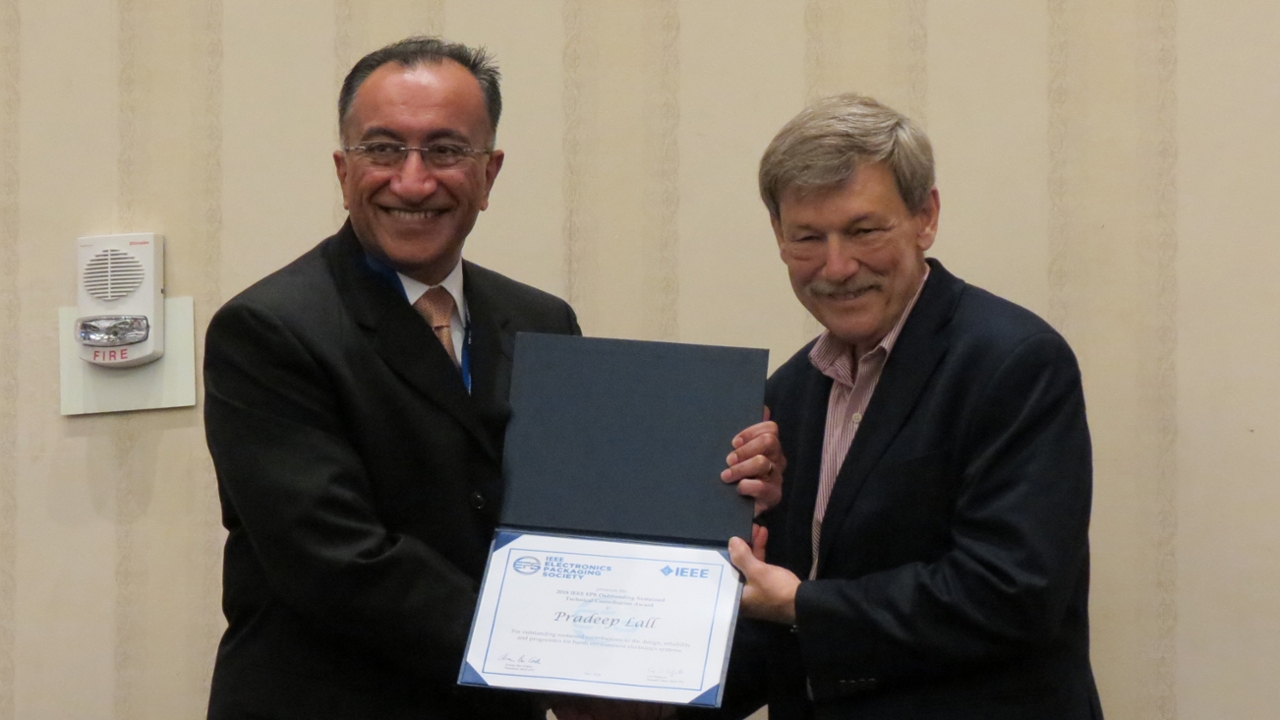
Pradeep Lall, MacFarlane Endowed Professor at Auburn University, left. receiving the Outstanding Sustained Contributions Award from Avram Bar-Cohen, President of IEEE Electronic Packaging Society at ECTC 2018 in San Diego.
Categories: Engineering
Presidential Awards for Interdisciplinary Research (PAIR) Announced
Auburn research teams are tackling local and global challenges ranging from housing affordability to advanced manufacturing of medical implants, thanks to a new $5 million investment in 11 groundbreaking projects designed to deliver practical, life-changing solutions.
“Auburn research is on the move,” said Auburn President Steven Leath. “Our world-renowned faculty are leading Auburn in our drive to solve problems, provide real-world benefits and serve the social good.”
Today’s announcement is part of an initiative funded through the Presidential Awards for Interdisciplinary Research, or PAIR, that Leath created last year to propel Auburn to new levels of research and development distinction. The PAIR funding will span three years. Additional research topics include rural health disparities in poverty-stricken areas, treating the hallmarks of Alzheimer’s disease, neuroscience research and graduate education, reducing carbon dioxide emissions or using them for other means, and other critical areas of human and environmental health.
Project teams were selected from three award tiers: Tier 1 for new teams, with funding up to $100,000 per year; Tier 2 for established teams, with funding up to $250,000 per year; and Tier 3 for high-impact teams, with funding up to $500,000 per year. All proposals received an in-depth evaluation from Auburn’s associate deans for research, and Tier 3 proposals were also externally evaluated. Top-evaluated proposals were those that most closely aligned with the goals of PAIR as stated in the program guidelines. From 101 proposals received, 11 project teams will receive funding (the two top-evaluated proposals per tier for up to three years of funding, as well as five additional, top-evaluated Tier 1 proposals for two years of funding with a third-year no-cost extension available).
Project teams to receive funding are:
Project: Creating better bio-medical implants for patients in need using additive manufacturing, or “3D Printing” (Tier 3; $1,275,000 total funding over three years)
The issue: Auburn researchers plan to develop improved implants/orthotics for those with neuromuscular and skeletal system needs through the process of additive manufacturing. This process, also known as “3D printing,” allows for more customizable implants for small animals and humans and the possibility of embedded drugs in implants to ward off infections that can sometimes follow implant surgeries.
The Auburn solution: Research will take place to ensure “3-D printed” biomedical implants will remain durable during use and conform well to a patient’s needs while serving as a reliable drug-delivery source that can offer injury-triggered pain relief. The additive manufacturing process also helps reduce implant production costs.
Project: Unlocking Home Affordability and Prosperity in Rural America (Tier 3; $1,275,000 total funding over three years)
The issue: Auburn researchers are focusing on helping those in poor, rural areas gain greater access to resources that will ultimately lead them to finding affordable housing options.
The Auburn solution: Auburn researchers will work toward the creation of a National Institute of Rural Prosperity that will foster partnerships to help rural residents more easily overcome barriers to home ownership, including mortgage lending, home insurance and local ordinances and policies.
Project: Reducing the burden of neurological disease by increasing fundamental knowledge about the brain and nervous system (Tier 2; $637,500 total funding over three years)
The issue: Auburn researchers will work to mitigate against mental, neurological and substance use disorders, which make up a substantial proportion of the world’s disease burden.
The Auburn solution: A team of experts in chemistry, physiology, development, degeneration, and imaging of the brain will collaborate to develop a neuroscience center to increase fundamental knowledge about the brain and nervous system and to use that knowledge to reduce the burden of neurological disease.
Project: A Mobile Mitochondria Laboratory (AU MitoMobile) to Lead the World in Measuring Bioenergetics in Natural Settings (Tier 2; $636,941 total funding over three years)
The issue: Because the successful study of genetic and environmental impacts on mitochondria (the energy-providing part of the cellular makeup of plants and animals) can be severely limited in a laboratory setting, Auburn researchers will collaborate to build a mobile laboratory to bring this research to field sites.
The Auburn solution: A team of evolutionary biologists, environmental biologists, exercise physiologists and engineers will develop a mobile laboratory for measuring mitochondrial energy production of vertebrates at remote locations, such as oil spill sites and other places where environmental disturbances have damaged the health of local wildlife.
Project: Rural African American Aging Research (Tier 1; $255,000 total funding over three years)
The issue: Auburn researchers will assess the psychosocial stressors that can contribute to the problem of rural African Americans having a lower life expectancy and a faster progression of age-related diseases. Research in this area has the potential to inform health-promoting interventions and polices and lead to health and social equity.
The Auburn solution: PAIR funding will be used to establish a sustainable research structure in east-central Alabama focused on improving health in that community and beyond by partnering with surrounding communities. The ultimate goal is to grow the scientific knowledge of how psychosocial risk factors can accelerate aging among African Americans.
Project: Reducing and reusing carbon dioxide emissions for useful means (Tier 1; $255,000 total funding over three years)
The issue: Auburn researchers seek to combat the dire environmental effects of carbon dioxide emissions through a plan to reduce such emissions and store or utilize them for other useful means.
The Auburn solution: Researchers will work toward the development of an Alabama CO2 Utilization and Storage Center at Auburn University, with a goal of establishing Auburn as a leader in carbon dioxide utilization and storage research focused on best ways to capture CO2 emissions and convert them into helpful forms such as green fuels.
Project: Extra-virgin olive oil examined for uses in treating hallmarks of Alzheimer’s (Tier 1; $150,000 total funding over two years)
The issue: Auburn researchers are examining the consumption of extra-virgin olive oil for its potential to have a positive effect on the disease hallmarks of Alzheimer’s Disease. The research team is seeking to conduct more research into this area to determine the viability of findings for humans.
The Auburn solution: A multidisciplinary team will be assembled to conduct a pilot study on the positive effects of extra-virgin olive oil and to produce data for a strong human clinical trial to be submitted to funding agencies.
Project: Drugs from Dirt: Development and Characterization of Novel Antimicrobial Compounds (Tier 1; $150,000 total funding over two years)
The issue: Because many disease-causing organisms are resistant to current drug therapies, Auburn scientists are pursuing new approaches to the development of antibiotics.
The Auburn solution: Researchers will test and develop new therapeutic strategies for treating infectious diseases, through the study of antiobiotic-producing bacterial cultures they have discovered in soil. These are potentially life-saving antibiotics that could have application in human medicine, agriculture, and veterinary practice.
Project: Creating a Climate Information System to aid in planning for climate-related disasters (Tier 1; $150,000 total funding over two years)
The issue: Auburn researchers will create a climate service model that will help guide decision making in planning for climate-related disasters that can cause great economic and social damage.
The Auburn solution: A cross-disciplinary team of investigators will develop a science-based, Unified Climate Information System to better inform planning, policy and practices at regional, national and global scales. In addition to exploring emerging climate data, the research will seek to improve and integrate impact models for water quantity, water quality, crop growth and disease transmission simulations. The project also will include the creation of an interactive website platform, with all work being focused on the southeastern U.S. and being easily adaptable to other locations worldwide.
Project: Emerging Contaminants Research Team (Tier 1; $150,000 total funding over two years)
The issue: Auburn experts are conducting research into newly recognized environmental contaminants, such as per- and polyfluoroalkyl substances, which have not been studied sufficiently to determine their impact on the environment and their possible health risks to humans and wildlife.
The Auburn solution: This Auburn research team will use its expertise in civil engineering, pharmacology, aquatic sciences, and other key areas to collaborate on focused research into the effects of these and other previously understudied contaminants, to increase knowledge and public awareness of risk factors.
Project: Development of the AU-NASH Research Program (Tier 1; $150,000 total funding over two years)
The issue: Auburn researchers are seeking solutions to the problem of nonalcoholic steatotic hepatitis, or NASH, the most severe form of non-alcoholic fatty liver disease and perhaps the most significant form of chronic liver disease in the world today, which has no current approved therapies available.
The Auburn solution: The research team will work to address this urgent, unmet medical need by developing a disease therapy program to increase positive outcomes for those suffering from liver disease.
For more details on each PAIR project and how Auburn is inspiring as a leading provider of life-changing research, creative scholarship and community engagement, visit auburn.edu/auburninspires.
BY JONATHAN CULLUM AND PRESTON SPARKS
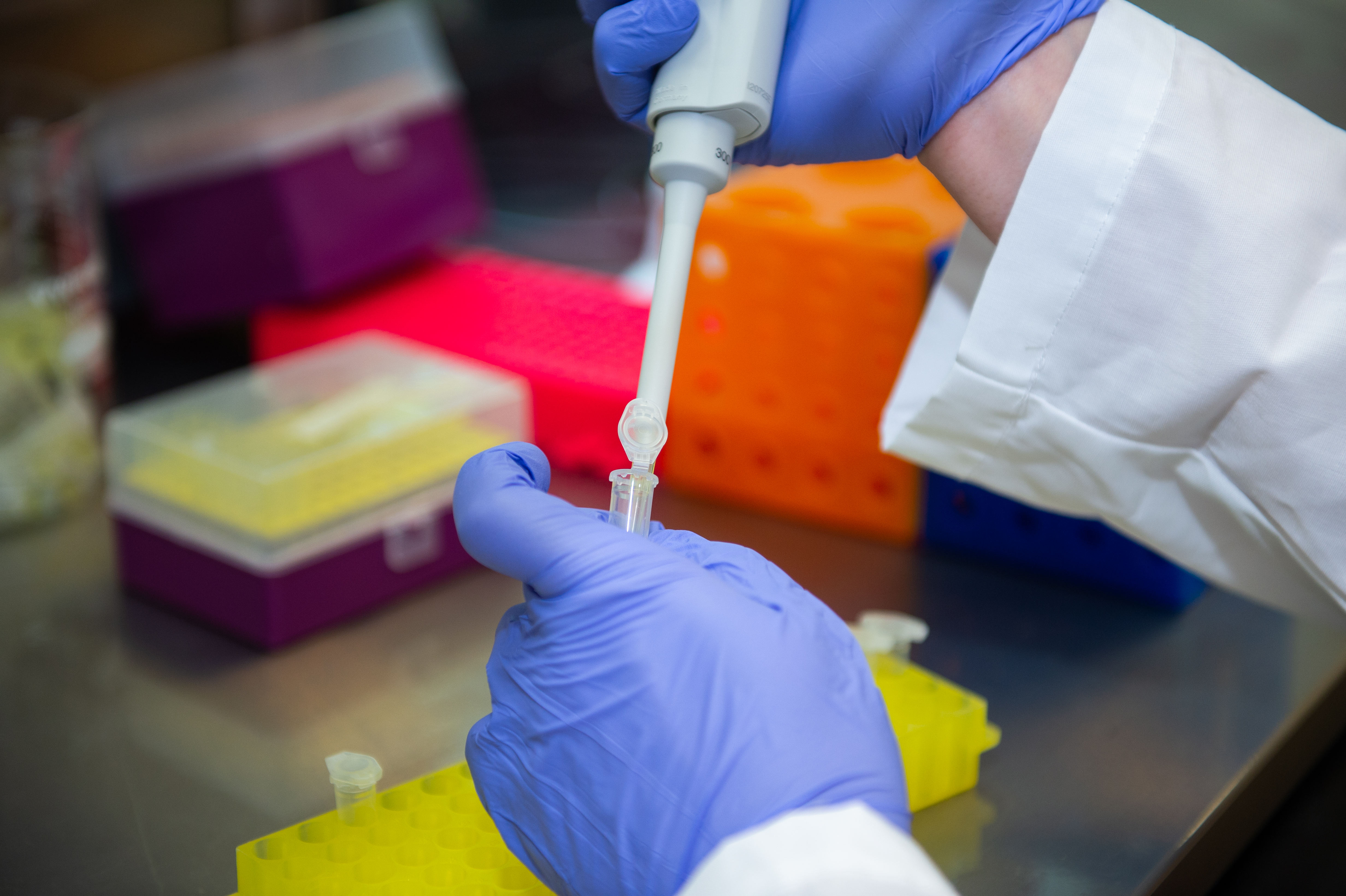
Categories: Engineering, Energy & the Environment, Health Sciences, Science, Technology, Engineering and Mathematics (STEM), Food Systems
SEC's Auburn University Faculty Achievement Award presented to chemical engineering professor
Auburn University and the Southeastern Conference have announced that Professor Bruce Tatarchuk of the Samuel Ginn College of Engineering has been honored with the SEC's Auburn University Faculty Achievement Award for 2015.
Tatarchuk, chemical engineering professor and director of Auburn's Microfibrous Materials Manufacturing Center, will receive a $5,000 honorarium, and he becomes Auburn's nominee for the SEC Professor of the Year, who will be selected from 14 nominees representing SEC universities.
"Dr. Tatarchuk has an outstanding record of accomplishment and he has greatly enhanced the prestige of Auburn University," said Jay Gogue, president of Auburn University and past president of the Southeastern Conference. "This award is a testament to his dedication to his profession, students and colleagues."
The SEC Faculty Achievement Awards, created to recognize faculty accomplishments, scholarly contributions and discoveries, were established by the SEC presidents and chancellors and are administered by the SEC provosts. The awards were first presented in 2012.
"Dr. Tatarchuk epitomizes the character of a university professor who has excelled inside and outside the classroom," said Timothy Boosinger, Auburn University provost and vice president for academic affairs. "His accomplishments include being recently appointed the Charles E. Gavin III Endowed Chair in the College of Engineering and also named as a 2014 Fellow to the National Academy of Inventors in recognition of exceptional accomplishments in innovation and invention to benefit society."
Each recipient of the SEC Faculty Achievement Award must be a full professor at an SEC university, have a performance history of extraordinary teaching and a record of scholarship that is recognized nationally or internationally.
"I am humbled to receive this tremendous honor from Auburn University and the SEC," Tatarchuk said. "I would like to thank the university and my fantastic colleagues in the Samuel Ginn College of Engineering and all across campus for providing such an excellent environment for faculty, student and stakeholder success."
Tatarchuk's discoveries have resulted in 12 U.S. patents and a large number of foreign patents. His work focuses on chemical interactions occurring at solid surfaces and he has pioneered the design and development of microfibrous entrapped sorbents, catalysts and electrocatalysts which facilitate extremely high levels of chemical reactivity. This work has led to the commercialization of numerous products, including double layer capacitors, advanced batteries, polishing sorbents, heterogeneous catalysts, filters and thermal and electrical conduction aids. These products impact hundreds of millions of users each year. He is a 2001 co-founder of IntraMicron Inc., a Delaware corporation and small business operating in Auburn, Alabama.
Tatarchuk began his career at Auburn in 1982 after earning a bachelor's degree in chemical engineering from the University of Illinois in 1976 and a doctorate in chemical engineering from the University of Wisconsin in 1981. He won Auburn's Creative Research Award in 2003.
By Charles Martin
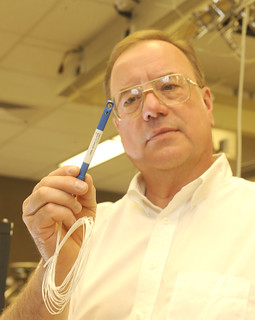
Categories: Engineering, Energy & the Environment
Auburn University hosting forum: Additive Manufacturing – The Next Industrial Revolution
On July 30, 2015, Auburn University will be hosting a by invitation only forum on industrialized additive manufacturing.
Experts will discuss the application of this advanced technology for industries ranging from aerospace to biotechnology. Industry leaders from GE Aviation, GKN, NASA, Carpenter Technology, Alabama Laser, U.S. Army Aviation and faculty from Auburn University, University of Alabama, UAH and University of Memphis will describe the role their organizations are playing in developing, implementing and utilizing new processes and computer-aided hardware and software to produce components from material and composites once considered exotic.
A keynote address will be given by Greg Morris, the General Manager of Additive Technologies for GE Aviation.
To learn more about this day-long forum and networking reception to follow, or if you are interested in attending, please email forum organizers at auees@auburn.edu.

Categories: Engineering, Cyber, Energy & the Environment, Health Sciences, Science, Technology, Engineering and Mathematics (STEM), Transportation, Food Systems
Auburn engineering alumnus named deputy director of NASA’s Marshall Space Flight Center
Todd May, a 1990 alumnus of Auburn University in materials engineering, has been named deputy director of NASA's Marshall Space Flight Center in Huntsville, Alabama. He will help manage the center's nearly 6,000 civil service and contractor employees and $2.5 billion annual budget.
Since 2011, May served as manager of the Space Launch System, a new large rocket that replaces the space shuttle to take astronauts and probes into space. The rocket is one of NASA's top three priority projects, with May overseeing its development at Marshall through its in-depth critical design review in July.
Previously, May managed the agency's robotic lunar program including the successful launch of two lunar probes in 2009. He also served as deputy associate administrator in the Science Mission Directorate at NASA headquarters in Washington, D.C., as well as the deputy manager of Marshall's Science and Mission Systems Office in a dual role as associate program manager of the Constellation Program, which looks to reenergize NASA human spaceflight efforts.
May has been honored with NASA's Exceptional Achievement Medal and Leadership Medal, the Presidential Rank Award of Meritorious Executive and the John W. Hager Award for professionalism in materials engineering. In 2014, he received Aviation Week's Program Excellence Award. May was named the Distinguished Auburn Engineer by Auburn's Samuel Ginn College of Engineering in 2012 and received the college's Outstanding Auburn Engineer Award in 2010.
May and his wife, Kelly, have four children and reside in Huntsville, Alabama.
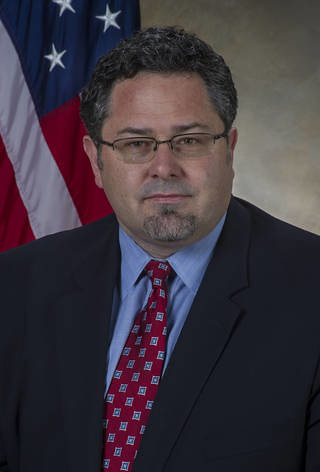
Categories: Engineering, Auburn In the News
Auburn University’s Pradeep Lall to lead national manufacturing center on harsh environment electronics
Auburn University has been selected to lead a national manufacturing effort on harsh environment electronics as part of a U.S. Department of Defense led flexible hybrid electronics institute.
On Friday, Aug. 28, at NASA's Ames Research Center, Department of Defense Secretary Ashton Carter announced a cooperative agreement to the research consortium FlexTech Alliance to establish and manage a Manufacturing Innovation Institute for Flexible Hybrid Electronics, or FHE MII.
FlexTech Alliance, based in San Jose, California, will coordinate the FHE MII, which comprises 96 companies, 11 laboratories and non-profits, 43 universities and 15 state and regional organizations. Auburn University will head the only node in the state of Alabama.
Leading Auburn's node on harsh environments is Pradeep Lall, the John and Anne MacFarlane endowed professor of mechanical engineering and director of Auburn's NSF Center for Advanced Vehicle and Extreme Environment Electronics, or CAVE.
"This establishment will provide engineers with the integrated skills and theoretical background for the manufacture of flexible hybrid electronics for extreme environment applications," said Lall. "It will create intellectual property and expenditures on research, education and related activities, as well as catalyze development of technologies which can be manufactured in the state. We have developed strategic partnerships with industry and research labs in Alabama and nationally for development and demonstration of technologies for harsh environment operation."
The institute will be awarded $75 million in federal funding over a five-year period and is being matched by more than $96 million in cost sharing from non-federal sources including private companies, universities, not-for-profit organizations and several states, including Alabama.
"The strength of the institute will stem from the strong support and previous work of our partner organizations," said Michael Ciesinski, CEO of FlexTech Alliance. "Auburn University's strong work in utilizing electronics in harsh environments will lend the institute a huge advantage in the special needs for that environment. We look forward to collaborating with the excellent team there and the CAVE facility."
In addition to defense, the institute's activities will benefit a wide range of markets including automotive, communications, consumer electronics, medical devices, health care, transportation and logistics and agriculture.
"I am pleased that Auburn University is a partner in this national organization, and that Dr. Lall is leading the way for its initiatives on harsh environments," said Christopher B. Roberts, dean of the Samuel Ginn College of Engineering. "The institute represents an innovative collaboration between the public and private sectors and has the potential to make a huge impact on our nation as we continue to embrace advanced manufacturing."
The new institute is part of the National Network for Manufacturing Innovation program. The FHE MII is the seventh manufacturing innovation institute announced and the fifth under Department of Defense management. The institutes are intended to bridge the gap between applied research and large-scale product manufacturing, and it is anticipated that Auburn's harsh environment node will create technologies for the benefit of the nation's commercial and national defense interests.
By: Morgan Stashick

Categories: Engineering, Auburn In the News
Auburn University researcher wins National Science Foundation award for technological innovation
Auburn University mechanical engineering professor Pradeep Lall has received a top National Science Foundation award for his work as director of Auburn's Center for Advanced Vehicle and Extreme Environment Electronics, or CAVE3. His research includes developing methods for protecting electronics in harsh environments.
Lall, the John and Anne MacFarlane Endowed Professor in Auburn's Department of Mechanical Engineering, was recently awarded the 2016 Alexander Schwarzkopf Prize for Technological Innovation from the National Science Foundation's Industry/University Cooperative Research Centers program.
"This award is reaffirmation of Dr. Lall's national reputation and recognition of his seminal contributions to the field of mechanical engineering," said Christopher Roberts, dean of the Samuel Ginn College of Engineering. "His work has positioned Auburn Engineering to be a leader in harsh environment electronics research as we address the challenges in this exciting field."
Lall's research focuses on the development of methods for assuring survivability of electronics to high shock forces, vibration and extreme temperatures. He is best known for his research in the areas of reliability and prognostics for electronic systems operating in harsh environments such as:
- Combined exposure to temperature and vibration under the hood of an automobile for electronics mounted on-engine or on-transmission;
- Extreme cold or extreme hot environmental temperatures for prolonged periods of time experienced in military and defense applications;
- High g-forces experienced by electronics inside missiles;
- Corrosive attack of salt fog for electronics operating on ships at sea.
"Electronic systems have taken an increasingly important role in automotive design and operation," Lall said. "Traditional automotive electronics at one time consisted of climate control and entertainment systems. Roll the clock forward to the present day and automotive electronics have expanded to include driving assists such as antilock braking systems, traction control systems, adaptive cruise control, lane departure warning systems and more. Failure of one of these systems is no longer an inconvenience; it may be critical to the safe operation of the vehicle."
Founded in 1999 as the Center for Advanced Vehicle Electronics, CAVE3 has over the years expanded its expertise to include extreme environment electronics. Lall has been the center's director since 2008, following his appointment as associate director in 2004. Lall also directs Auburn's Harsh Environments Node of the NextFlex Manufacturing Institute, part of a national manufacturing effort on harsh environment electronics led by the U.S. Department of Defense.
CAVE3 partners with industry, government and academic agencies to address major technological challenges through precompetitive research on automotive and harsh environment electronics. This arrangement gives the center an opportunity to address the challenges before the technologies become commercialized.
Lall joined the Auburn faculty in 2002 after a distinguished industry career at Motorola, where he worked on the development and manufacture of wireless products such as cellphones and two-way radios.
"Dr. Lall's recognition with the Alex Schwarzkopf Prize is evidence of the societal and transformational impact that Auburn University is making on automotive and harsh environment technologies in everyday life," said John Mason, Auburn's vice president for research and economic development.
The National Science Foundation's cooperative research centers program was established in 1973 by Schwarzkopf to develop long-term research partnerships among industry, academe and government in areas of mutual interest. The Alexander Schwarzkopf Prize for Technological Innovation has been presented annually since 2003 to an individual or team at a member institution whose research makes an exemplary contribution to technology innovation. More than 100 universities and nearly a thousand researchers are members.
By: Chris Anthony
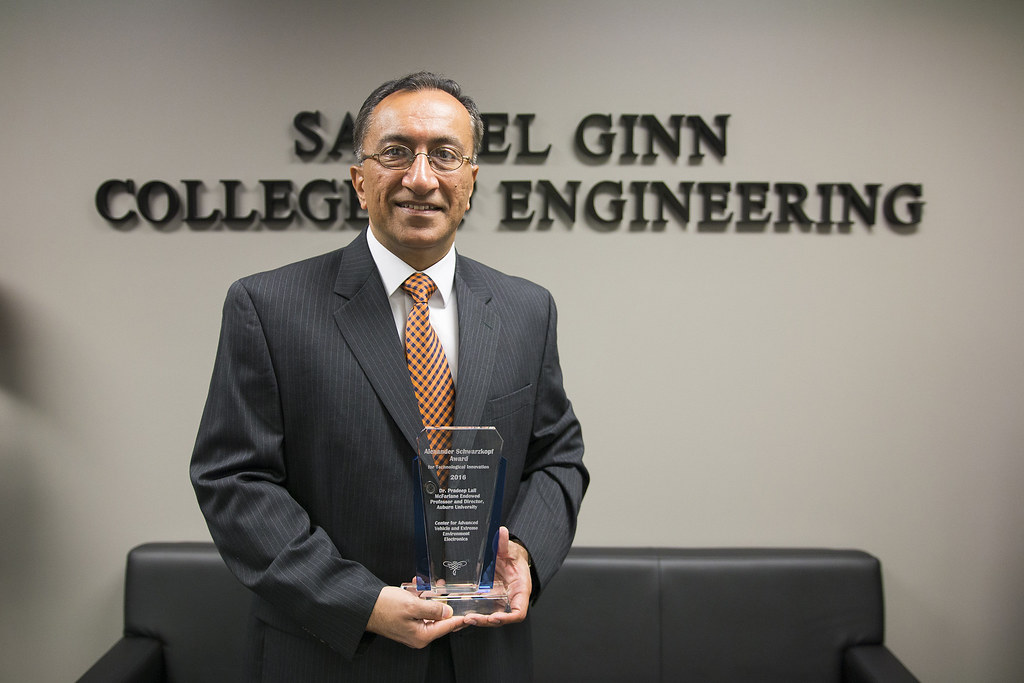
Categories: Engineering, Science, Technology, Engineering and Mathematics (STEM), Auburn In the News
Student Space Program receives NSF funding to design, build and launch satellites
With a National Science Foundation grant secured by Auburn University faculty, undergraduate students at Auburn will design, build and test two CubeSat satellites that will launch into space in 2018.
CubeSats are small satellites that come in multiples of 4-inch cubes. The grant marks the first time the National Science Foundation has awarded a grant for the construction, space launch, and operation of two, three-unit, CubeSats – a project that provides invaluable workforce development experience to Auburn's undergraduate students.
"To receive this kind of funding from NSF is a real feather in our cap," said J-M Wersinger, professor emeritus in the Department of Physics and Auburn University Student Space Program director. "The Auburn University Student Space Program is now recognized as offering one of the most prestigious CubeSat programs in the nation."
Wersinger, along with Mike Fogle, assistant professor in the Department of Physics, will submit a proposal to NASA to obtain a rocket launch that will carry the CubeSats into low Earth orbit for a mission that will last approximately 18 months. The two satellites will undergo many tests and reviews before launch, which will take place in about three years.
"CubeSats are great for research because they are inexpensive to build, you can fly a lot of them at the same time and receive more information and you can look at data in almost real time," Fogle said.
The student and faculty researchers will ultimately study the structure of powerful gamma-ray flashes associated with thunderstorms in the tropical regions of Earth. Auburn launched its first, single-unit CubeSat, AubieSat-1, into space in October 2011. The two, three-unit CubeSats for the NSF-funded mission are named TRYAD 1 and TRYAD 2. "TRYAD" stands for Terrestrial RaYs Analysis and Detection.
The two CubeSats are currently being designed, built and tested solely by undergraduate student members of the Auburn University Student Space Program under the guidance of faculty in the Department of Physics and the College of Engineering. More than 30 students this semester alone are balancing their classroom obligations with 15 to 20 hours per week working in the lab on TRYAD 1 and TRYAD 2.
"The work pays off because people in industry recognize the program creates future leaders," Wersinger said. "The students are given a unique, work-force development experience where they work in teams to complete a space experiment, understand the importance of deadlines and gain a basic understanding of management and systems engineering. Also we have worked and continue to work with several NASA partners like Goddard Space Flight Center, Ames Research Center and Marshall Space Flight Center."
In addition to designing and building TRYAD 1 and 2, Auburn students will be responsible for commanding and controlling the CubeSats in space using the NASA Near Earth Network of ground stations. Through communication with the two satellites, students will also test PULSAR, a new high-bandwidth radio developed by NASA engineers, capable of transmitting 150 million data bits per second.
The project represents a collaboration with University of Alabama Huntsville, and the funding was secured by a team of scientists from UAH and Auburn University, including faculty members Wersinger and Fogle, as well as Daniel Harris, associate professor in Auburn's Department of Mechanical Engineering and Professor Saad Biaz of Auburn's Department of Computer Science and Software Engineering. The grant is in the amount of $893,873 for a project titled, "Collaborative Research: CubeSat: Observing Terrestrial Gamma-ray Flash (TGF) Beams With A Pair Of CubeSats."
UAH representatives on the project are responsible for developing the science instrument used to detect the gamma-rays while on orbit. They will also collect and analyze the science data, but Auburn University will have access to the data before it is distributed to the scientific community at large.
The Auburn University Student Space Program is part of the College of Sciences and Mathematics. For more information about the college, go to http://www.auburn.edu/cosam/.
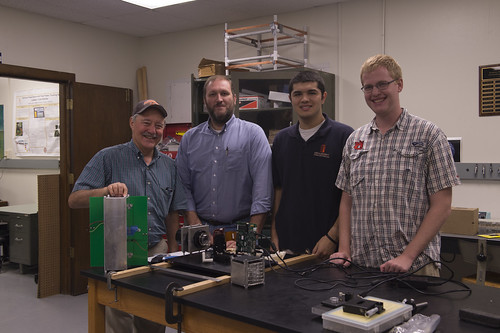
Categories: Engineering, Science, Technology, Engineering and Mathematics (STEM)
GE chooses Auburn for advanced education program in 3-D printing
GE has chosen Auburn University as one of only eight universities from around the world to participate in the GE Additive Education Program. Auburn will receive a state-of-the-art Concept Laser MLAB 100R metal printer as part of this program, which will support Auburn’s ongoing research and education initiatives in additive manufacturing, also known as 3-D printing.
A GE advisory group composed of engineers and additive manufacturing specialists chose Auburn out of more than 250 applicants because of its established additive manufacturing curriculum and extensive research initiatives within the Samuel Ginn College of Engineering.
"Auburn Engineering is a national leader in industrialized additive manufacturing," said Christopher B. Roberts, dean of engineering. "Companies such as GE have asked for our help in graduating engineers who are well versed in additive manufacturing and prepared to lead American industry into the future.
"We responded by developing new curricula so students learn how to design for additive manufacturing systems. We are also investing millions of dollars in the latest 3-D printing technology and hiring world-class faculty to teach our students. This award further strengthens our relationship with GE, and we look forward to even greater collaboration with them in our education and research programs."
Additive manufacturing involves fabricating parts layer-by-layer from metals, plastics or other materials based on a 3-D computer-aided design model. Because parts are made by building upon each layer, additive technology reduces waste in the manufacturing process, improves production speed and can create parts that are lighter and more durable than those made using traditional manufacturing methods.
With the ability to create highly complex parts in a fraction of the time, additive technology is revolutionizing the manufacturing industry and creating new opportunities for engineers to explore. As an industry leader in this area, GE is using additive manufacturing to mass produce fuel nozzle injectors for jet engines at its plant in the city of Auburn’s Technology Park West.
Auburn Engineering faculty are also researching other ways to employ additive technology, such as producing next-generation rocket engines for space flights to Mars or developing intricate medical implants for use during surgery.
Auburn has created a new Center for Industrialized Additive Manufacturing, directed by materials engineering professor Tony Overfelt, and hired internationally known faculty working in this growing field of research. The university’s newly renovated Gavin Engineering Research Laboratory opens later this year and will feature dedicated space for Auburn’s additive manufacturing research, including upgraded and expanded testing equipment.
GE’s Additive Education Program was created to support colleges and universities such as Auburn that are educating students in additive manufacturing technologies. Through the program, GE is investing $8 million over five years to provide up to 50 metal additive machines to higher education institutions around the world. The printers are valued at $250,000 each.
"Additive manufacturing and 3-D printing is revolutionizing the way we think about designing and manufacturing products," said Mohammad Ehteshami, vice president of GE Additive. "We want a pipeline of engineering talent that have additive in their DNA. This education program is our way of supporting that goal."
BY CHRIS ANTHONY

Lab technician Mike Crumpler, left, and materials engineering professor Tony Overfelt examine metal components in the lab. Overfelt is director of the Center for Industrialized Additive Manufacturing and principal investigator on a $1.5 million grant from the National Institute of Standards and Technology to research ways for smaller manufacturers to incorporate additive technology into their processes.
Categories: Engineering
Two Auburn professors honored with faculty enhancement awards from Oak Ridge Associated Universities consortium
A pair of researchers from Auburn University—Majid Beidaghi, assistant professor of mechanical and materials engineering, and Bridgett King, assistant professor of political science—have been named recipients of the 2017 Ralph E. Powe Junior Faculty Enhancement Awards, given annually by the Oak Ridge Associated Universities consortium, or ORAU.
The awards are intended to provide seed funding and enhance the research and professional growth of junior faculty at ORAU member institutions. Each winner receives a one-year, $5,000 research grant from ORAU, which is matched by the faculty member’s institution.
"It is a great achievement for Auburn University to receive two Ralph E. Powe Junior Faculty Enhancement Awards from ORAU," said John Mason, Auburn’s vice president for research and economic development. "It speaks very highly of Dr. King and Dr. Beidaghi and their promising research programs that ORAU has selected them for this honor."
Beidaghi, who came to Auburn in 2015, conducts research on the synthesis of advanced materials and the development of devices for energy storage applications. For his Powe Award project, Beidaghi will collaborate with researchers from the Oak Ridge National Laboratory to examine potential cathode materials for aluminum batteries, which show promise as an alternative to the traditional lithium-ion batteries used in many portable electronic devices.
King, who joined Auburn’s faculty in 2014, will work with colleagues from the University of Kentucky to study the impact of felony disenfranchisement laws and policy on community voter turnout among citizens who are still legally able to vote. The team will utilize geographic information system technology in combination with data on felony convictions, precinct-specific election data and information from the U.S. Census for a comprehensive precinct-level analysis.
by JONATHAN CULLUM

Majid Beidaghi, assistant professor of mechanical and materials engineering, and Bridgett King, assistant professor of political science, are recipients of the 2017 Ralph E. Powe Junior Faculty Enhancement Award, given annually by the Oak Ridge Associated Universities consortium.
Categories: Engineering, Energy & the Environment
Auburn University’s Warrior Research Center collaborating with U.S. Army Game Studio to develop aviation-training technology for FAA
Auburn University is collaborating with the U.S. Army and the Federal Aviation Administration to develop innovative aviation learning and training modules using virtual, interactive and multimedia technology. The partnership seeks to develop gaming modules that can be implemented into the FAA's current curriculum for air traffic controllers.
A cooperative research and development agreement signed on Tuesday, June 6, enables Auburn's Warrior Research Center to join forces with the U.S. Army Game Studio, which is part of the U.S. Army Aviation and Missile Research, Development and Engineering Center, or AMRDEC, at Redstone Arsenal in Huntsville. The project is through the FAA's Air Transportation Center of Excellence for Technical Training and Human Performance, of which Auburn serves as a core team member.
The team will develop air traffic controller training technology using research and science-based knowledge on training adult learners and the use of gaming to improve learning and retention. The modules will demonstrate team capabilities to provide realistic, engaging and effective training.
AMRDEC's Army Game Studio has established unmatched capabilities in the development of virtual, interactive and multimedia technology used for outreach, recruiting, education and training. The studio brings together artists, soldiers and gaming experts to create virtual environments for soldiers to train in without putting them at risk in combat. Rapid prototyping of gaming technology tools ensures that the computer-generated training environments are user-friendly and customizable to the soldiers. The studio is best known for developing the free online U.S. Army video game, "America's Army."
"The Army Game Studio is my go-to place for any training, animation, augmented learning or virtual environment that I need," said JoEllen Sefton, director of the Warrior Research Center and associate professor in Auburn's School of Kinesiology. "I know that the talented team there can take anything we develop, or anything I can imagine, and make it real."
A cross-disciplinary effort, the Warrior Research Center is led by Auburn's School of Kinesiology in the College of Education and includes research from engineering, industrial design, psychology, business, veterinary medicine and human sciences. Collaborators also include Auburn's ROTC program, MRI Research Center, Center for Disability Research and Policy Studies and the Gastrointestinal Research Center, as well as the Edward Via College of Osteopathic Medicine on Auburn's campus.
Warrior Research Center investigations include the effects of military vehicles on a body's skeletal system, blood flow and muscles; consequences from prolonged helicopter sitting; evaluation of neck injuries from prolonged wear of helmets; reducing injury and improving warfighter performance. Studies also explore the design of a universal cockpit, controllers and pilot seats to improve mission efficacy and decrease pilot fatigue and injury.
by MORGAN S. MARTIN
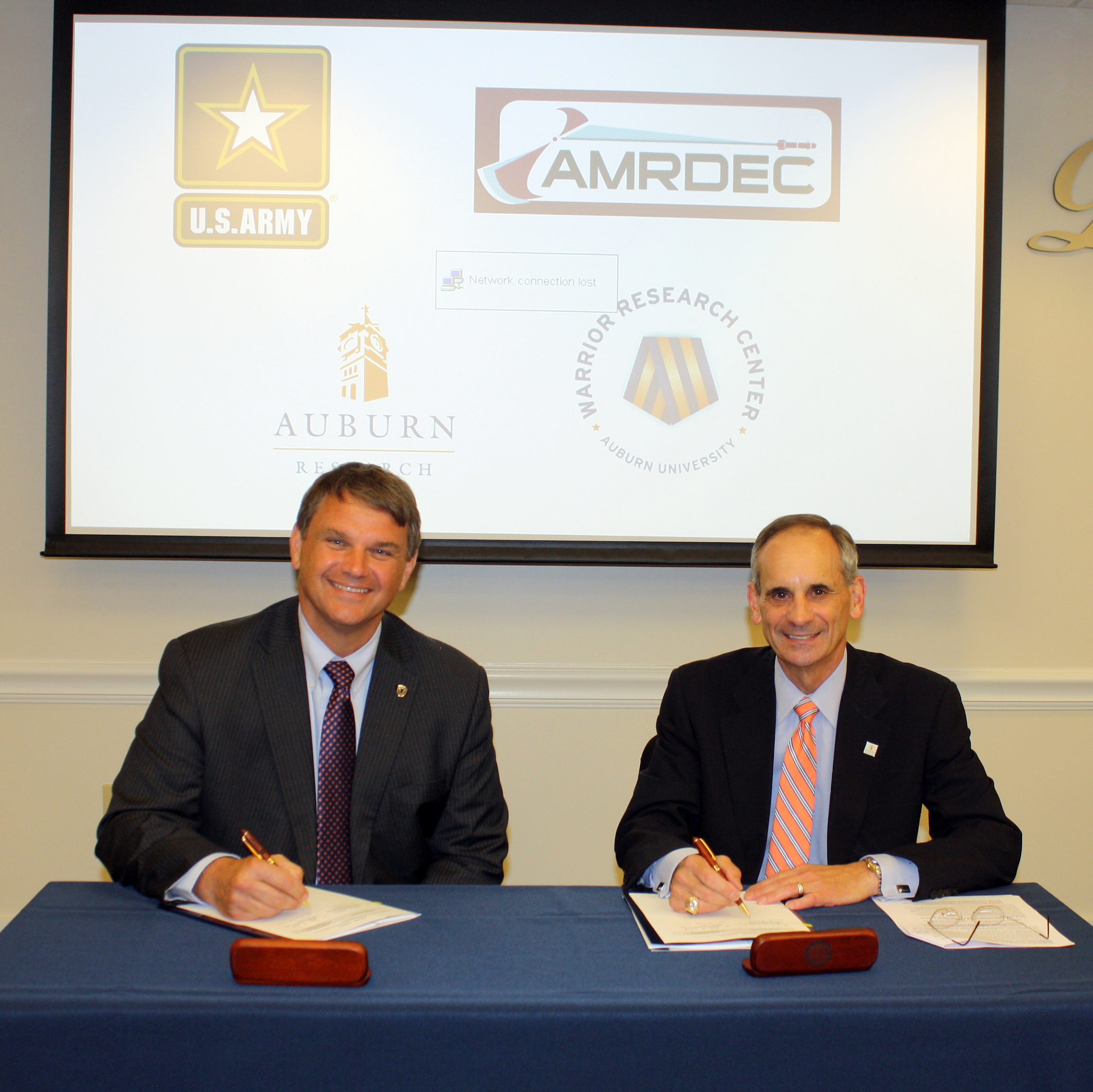
Jeff Langhout, left, acting technical director of the U.S. Army’s Aviation and Missile Research, Development and Engineering Center, signs a cooperative research and development agreement with John Mason, Auburn’s vice president for research and economic development. The organizations will develop innovative aviation learning and training modules using virtual, interactive and multimedia technology.
Categories: Engineering, Transportation
Auburn researchers using unmanned aircraft to assess crop health
The agriculture industry has seen many advances in farming over the decades, from mule and plow to high tech tractors and equipment—and now unmanned aircraft systems, or UAS. Auburn University precision agriculture researchers are using the aircraft to monitor crop health over large acreages; it's a method that lets farmers quickly address potential trouble spots.
"Precision agriculture techniques enable the producer to apply things like fertilizer and herbicide only where they are needed, which helps increase yields and profits for agribusiness," said Steve Taylor, head of Auburn's Department of Biosystems Engineering. "These tools are having a major impact in many areas, not only for agricultural crops but also for better management of our forests."
The unmanned aircraft systems, or drones, are programmed to fly over a specific agricultural area and capture digital images and data with various types of cameras or sensors. After the flight, researchers download the data onto a computer so they can see potential trouble spots, such as moisture stress in plants, diseases that might be developing or a nutrition issue. The data is transferred into GPS-guided ground equipment that can deliver resources—water, pesticides and fertilizer—precisely where they are needed.
"It's a platform to carry a sensor to let us collect information much more rapidly," Taylor said. "The farmer or another UAS provider can come to the field today and collect information, download it to the computer this afternoon and have that data. Within a few hours, we can be back in the field taking action to remedy the problems uncovered by the UAS."
Auburn is conducting much of its research at E.V. Smith Research Center near Tallassee and at other Auburn research stations across the state and for individual farmers.
Research engineer Christian Brodbeck says the Department of Biosystems Engineering works closely with the university's Aviation Center to obtain FAA authorization to fly in specific areas and at certain altitudes.
Auburn's Aviation Center has FAA authorization to fly anywhere in the state below 200 feet for education and data collection activities. Biosystems Engineering recently received a Certificate of Authorization, or COA, from the FAA to allow detailed research flights at the E.V. Smith Research Center at altitudes up to 400 feet high.
"This higher altitude allows us to cover more ground during a flight or reduces our flight time for a given field," Brodbeck said. "We have applied for another COA to fly anywhere in the state at these altitudes to expand our research capabilities."
He says Auburn's fixed-wing drones have extended flight times, in varying wind conditions, while their rotary-wing drones can fly about 15 minutes. The cost of research drones is substantially higher than hobby models, ranging from $30,000 to $50,000, but as with most electronic equipment, the price is expected to go down. The advantage of the professional models is the advanced software, longer flight times and more powerful cameras and sensors, according to Brodbeck.
Greg Pate, director of E.V. Smith Research Center, added, "If we have the data quickly back from processing then we can make adjustments to the crop as we need to. We can get the right product at the right rate in the right place at the right time. And time is critical."
In 2015 Auburn received the nation's first FAA approval to operate a new Unmanned Aircraft Systems Flight School as part of its Aviation Center. Training is conducted by the Aviation Center for Auburn students and faculty, members of public agencies and the general public.
The university has been involved in aviation education for more than 80 years and has been providing flight training for pilots for nearly 75 years. Auburn offers three aviation/aerospace degrees: aviation management, professional flight management and aerospace engineering.
More information is available on the Auburn University Aviation Center website at http://www.auburn.edu/aviationcenter.
By Charles Martin
Categories: Engineering, Energy & the Environment
Auburn researchers using ‘awake-dog’ MRI scanning to seek neural marker that would predict a dog’s detection ability
A dog's remarkable nose has helped mankind for ages, from the hunting of game animals to more recently sniffing out explosives and contraband.
However, the field of neuroscience knows very little about how the canine brain works, particularly when it is using the sense of smell. Auburn University researchers are shedding light on this aspect through functional MRI brain scans of awake, non-anesthetized dogs.
"We are the first group in the world to use functional MRI of awake dogs to study how their brains process odorant information," said Assistant Professor Gopikrishna "Gopi" Deshpande of the Department of Electrical and Computer Engineering in the Samuel Ginn College of Engineering.
"This lets us see their brains in action when they are smelling odors. Best of all, the dogs don't have to be anesthetized."
Auburn's College of Veterinary Medicine developed the unique awake-dog training system that Deshpande is using in his research to establish an MRI baseline test, which would determine a dog's ability to become a good detector before it goes through training.
"The dogs are not restrained in any way," said Paul Waggoner, co- director of Canine Performance Sciences in the veterinary college. "We trained them to get up on the scanner; place their head in the correct position; and then remain still while the scanning occurs. We're really the first ones to have dogs scanned in this awake fashion. Previously dogs had to be scanned while anesthetized."
Deshpande's project, "Functional Imaging for Developing Outstanding Service Dogs," is being conducted in collaboration with the iK9 company, the College of Veterinary Medicine and the Department of Psychology in the College of Liberal Arts.
Auburn and iK9 are using a $1 million grant from the Defense Advanced Research Projects Agency, or DARPA, to do the study. iK9, which has an office in the Auburn Research Park, is providing the dogs and training while Auburn researchers conduct the MRI scans at Auburn's Magnetic Resonance Imaging Research Center.
"The dogs are undergoing the awake-dog MRI brain scans before and after they are trained so we can look for baseline neural features that would predict the dogs' future detection performance," Deshpande said. "This would enable us to scan a prospective dog's brain and determine the likelihood of its success."
Forty dogs are undergoing the scans and training during the two-year project.
"After a dog gets its initial scan, we train that dog to be a detection dog," iK9 President Roland Beason said. "After four to six weeks, we scan it again. At two other time points we will again scan the dog."
During the MRI scanning, various odors are presented to the dog's nose, with the idea that researchers can determine a specific neural marker in the brain image—to determine if a dog has the makings of a detector dog.
Current methods of finding and training suitable dogs are time consuming and costly for agencies around the globe.
"If we can pinpoint a specific neural marker on the scan, this could result in tremendous financial savings for the government and private companies since they would not use training resources on unsuitable dogs," said Deshpande, who adds that cost of training a highly specialized detector dog can cost up to $30,000.
The researchers hope their findings will result in a test that can used by agencies nationwide. "Auburn is known around the world for its canine programs," Deshpande said. "We have an excellent team working on this project."
by Charles Martin
Categories: Engineering, Health Sciences, Security
Auburn University enhancing commerce and research through unmanned aircraft systems
Unmanned aircraft systems, or drones, are more than a passing hobby—Auburn University officials believe they could be a key component in the nation's commerce and research.
U.S. Rep. Mike Rogers recently received a firsthand look at the potential when Auburn University Aviation Center officials demonstrated rotary-wing and fixed-wing unmanned aircraft, showing how they can be used in business and industry, as well as in research areas such as engineering, building science and agriculture.
"Auburn leads the nation in UAS technology, and I'm excited by the opportunities it will create for both Alabama and the nation," Rogers said.
Earlier this year Auburn received the nation's first FAA approval to operate a new Unmanned Aircraft Systems Flight School as part of its Aviation Center. The FAA approval requires that operators of unmanned aircraft pass a written exam and a flying test, both of which Auburn will administer through its flight school.
"The potential is immense," said Bill Hutto, Aviation Center director. "Unmanned aircraft systems can safely and efficiently inspect bridges and construction projects, conduct search-and-rescue operations and play a key role in precision agriculture."
In agriculture, unmanned aircraft systems equipped with sensors, such as infrared cameras, can quickly and easily monitor the health of crops and work in conjunction with GPS-guided ground equipment that can deliver resources—water, pesticides and fertilizer—precisely where they are needed.
"Precision agriculture techniques can save time and money and increase yields and profits for agribusiness," said Steve Taylor, head of Auburn's Department of Biosystems Engineering. "These tools will have a major impact in many areas, not only for agricultural crops but also for better management of our forests."
Auburn will conduct UAS flight training on campus and around the state for Auburn students and faculty, members of public agencies and the general public. Hands-on training covers basic flight maneuvers through obstacle courses, while classroom work covers the proper uses for unmanned aircraft, FAA rules and regulations and how to pursue FAA approval to fly commercially. The first class is tentatively set to begin later this month at Auburn.
The university has been involved in aviation education for more than 80 years and has been providing fight training for pilots for nearly 75 years. Auburn offers three aviation/aerospace degrees: aviation management, professional flight management and aerospace engineering.
More information is available on the Auburn University Aviation Center website at http://www.auburn.edu/aviationcenter.
Published: 08/11/2015
By: Charles Martin
Video by: Kevin Fichtner https://youtu.be/L9waP6bZ2a4
Categories: Engineering, Transportation, External Engagement
Auburn University agreement opens door with Korean automotive industry
Auburn University President Jay Gogue has signed a memorandum of understanding with Youngsoo Lee, president of KITECH, to formalize the joint research efforts of Auburn's faculty and labs with local companies supported by KITECH.
The Korea Institute of Technology, or KITECH, recently documented collaboration in research and technology development with Auburn University to support the Korean automotive industry. Established in 1989, KITECH is a government funded research and development institute headquartered in Cheonan, South Korea, with several research centers in Korea, as well as international cooperation centers in China, Vietnam, Indonesia, Germany and Santa Clara, California.
"This signing creates a portal for Auburn University that facilitates our collaboration with the local automotive industry, the parent companies in Korea and the Korean government," said Andy Gillespie, Auburn University assistant provost for international programs. "Our King Sejong Institute, in partnership with Keimyung University, is our cultural bridge to Alabama's Korean and American communities, and our new relationship with KITECH will become our technical bridge, building on recent efforts by a number of Auburn's colleges and offices."
Other visitors present at the signing were Byung-Wook Choi, director of the KITECH USA Technology Cooperation Center; Sangkug Lee, director of the International Cooperation Department; Minjin Kim, researcher for the KITECH USA Technology Cooperation Center; and SangWoo Lee, administrator in the International Cooperation Department.
In 2014, the Office of University Outreach held a workshop for local companies supported by KITECH. With this declaration of a commitment to joint research, the Office of the Vice President for Research and Economic Development continue this collaboration with its involvement.
"There are over 60 Korean companies along the I85 Corridor between Montgomery and West Point, Georgia," said Larry Fillmer, executive director of the Department of External Engagement and Support. "This MOU provides a framework for collaboration among KITECH subject matter experts and Auburn faculty and researchers."
Throughout the last five years, Samuel Ginn College of Engineering professor Song-Yul 'Ben' Choe has been working with the Office of International Programs and KITECH to establish a regional office in Auburn for joint research and development efforts for the Korean automotive industry.
"Through supporting agreements, research projects, technical assistance, facilities and labs at Auburn may be shared to provide operational and manufacturing solutions to problems being encountered by Korean companies in our immediate region," said Fillmer. "In the future, KITECH may seek to establish an office and operations in the Auburn University Research Park."
Categories: Engineering, Transportation, Auburn In the News


